IGF-1R antibody-drug-conjugate and its use for the treatment of cancer
Rilatt , et al.
U.S. patent number 10,633,448 [Application Number 15/306,351] was granted by the patent office on 2020-04-28 for igf-1r antibody-drug-conjugate and its use for the treatment of cancer. This patent grant is currently assigned to PIERRE FABRE MEDICAMENT. The grantee listed for this patent is PIERRE FABRE MEDICAMENT. Invention is credited to Charlotte Beau-Larvor, Matthieu Broussas, Thierry Champion, Liliane Goetsch, Jean-Francois Haeuw, Marie Lamothe, Michel Perez, Ian Rilatt, Alain Robert.


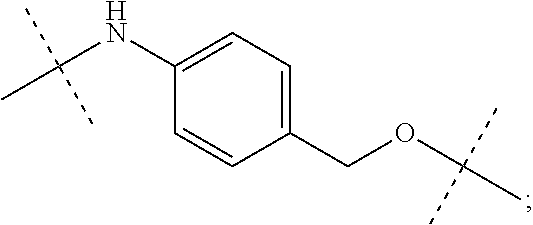

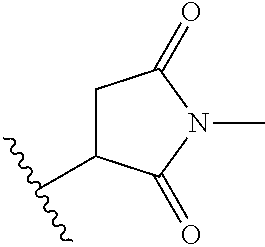


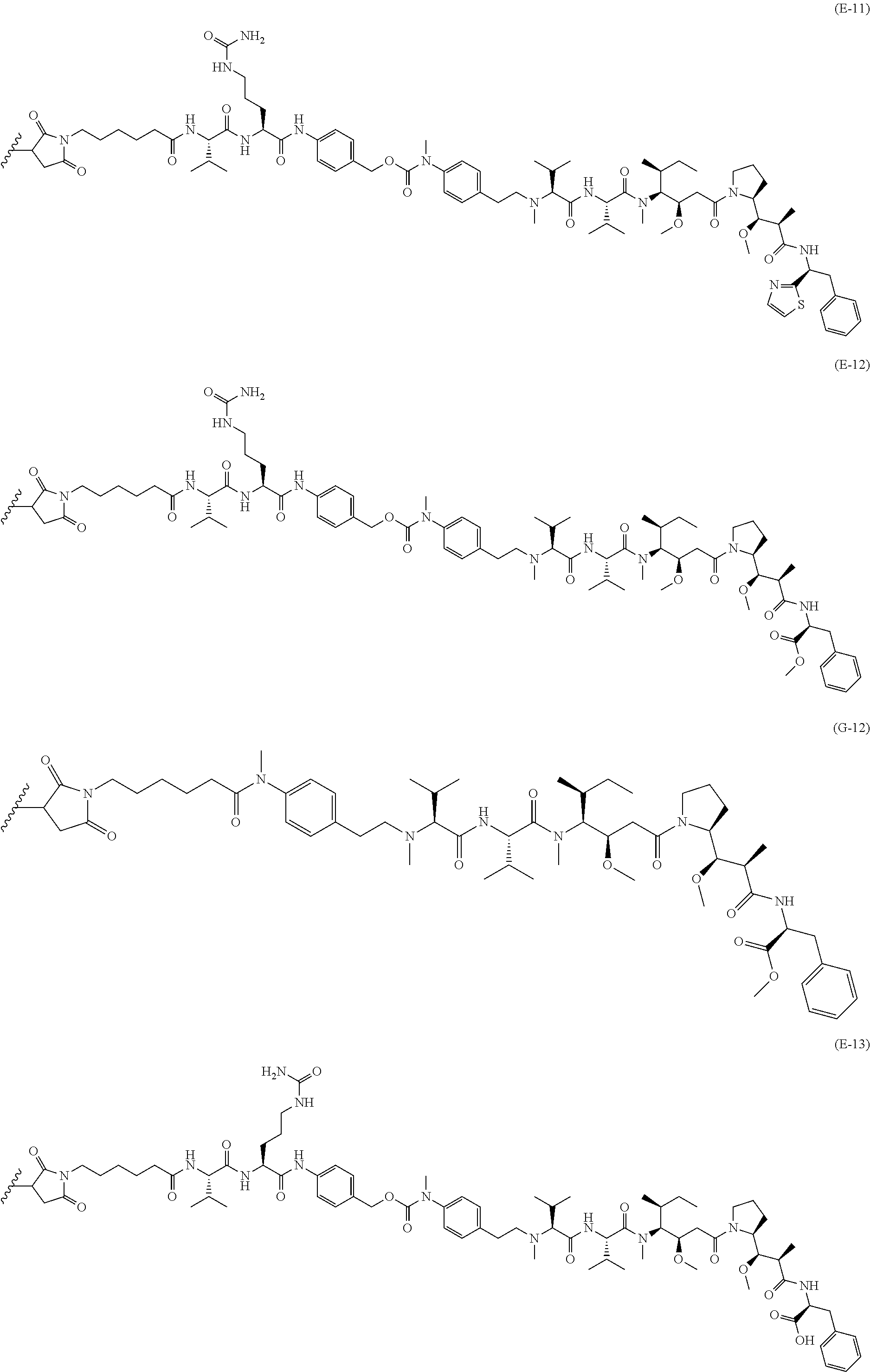


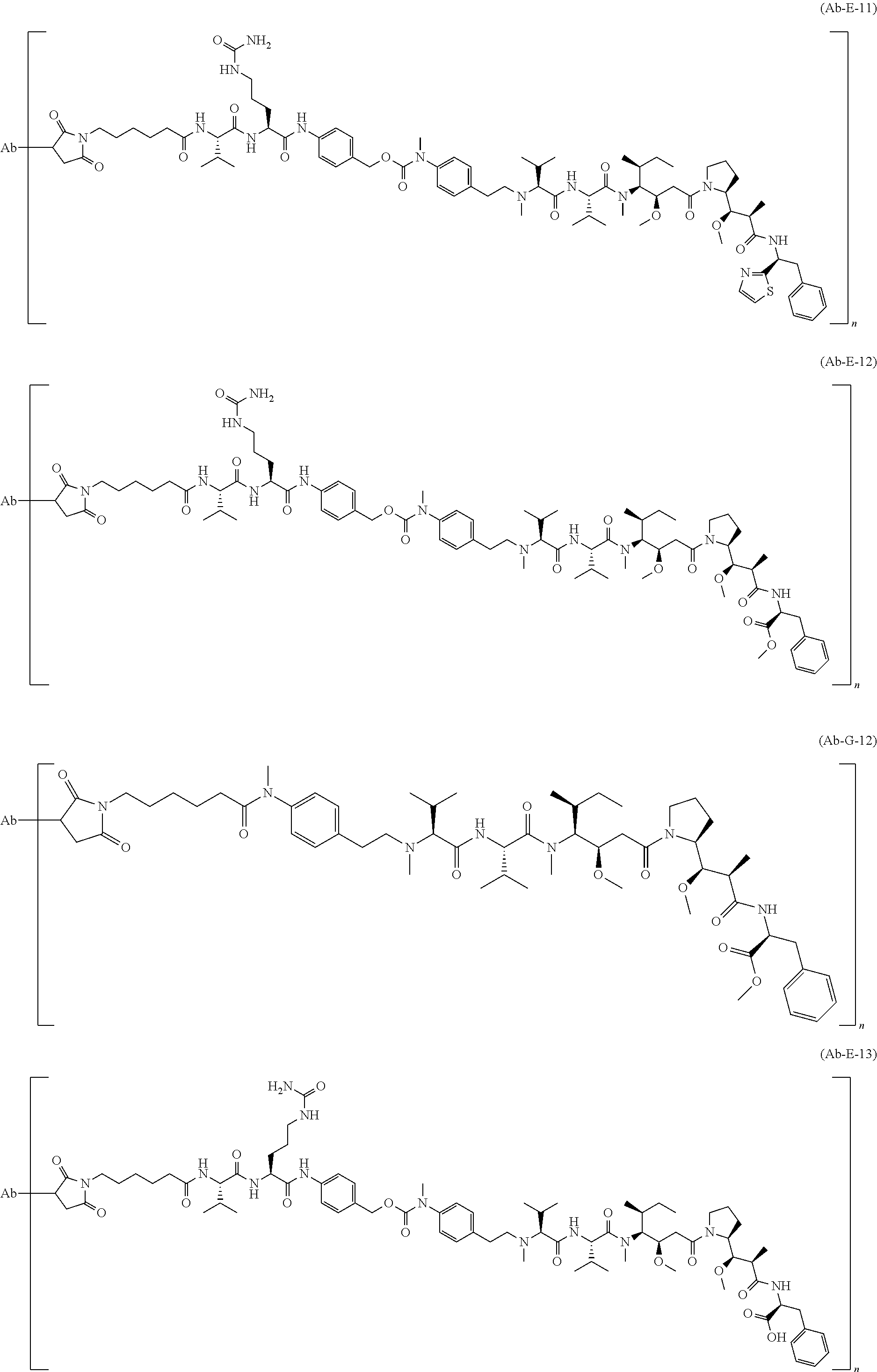

View All Diagrams
| United States Patent | 10,633,448 |
| Rilatt , et al. | April 28, 2020 |
IGF-1R antibody-drug-conjugate and its use for the treatment of cancer
Abstract
The present invention relates to an antibody-drug-conjugate capable of binding IGF-1R. From one aspect, the invention relates to an antibody-drug-conjugate comprising an antibody capable of binding to IGF-1R, said antibody being conjugated to at least one drug selected from derivatives of dolastatin 10 and auristatins. The invention also comprises method of treatment and the use of said antibody-drug-conjugate for the treatment of cancer.
| Inventors: | Rilatt; Ian (Castres, FR), Perez; Michel (Castres, FR), Goetsch; Liliane (Ayze, FR), Broussas; Matthieu (Seyssel, FR), Beau-Larvor; Charlotte (Jonzier Epagny, FR), Haeuw; Jean-Francois (Beaumont, FR), Champion; Thierry (Saint Julien en Genevois, FR), Robert; Alain (Annemasse, FR), Lamothe; Marie (Montredon Labessonnie, FR) | ||||||||||
|---|---|---|---|---|---|---|---|---|---|---|---|
| Applicant: |
|
||||||||||
| Assignee: | PIERRE FABRE MEDICAMENT
(Boulogne-Billancourt, FR) |
||||||||||
| Family ID: | 50630736 | ||||||||||
| Appl. No.: | 15/306,351 | ||||||||||
| Filed: | April 27, 2015 | ||||||||||
| PCT Filed: | April 27, 2015 | ||||||||||
| PCT No.: | PCT/EP2015/059045 | ||||||||||
| 371(c)(1),(2),(4) Date: | October 24, 2016 | ||||||||||
| PCT Pub. No.: | WO2015/162291 | ||||||||||
| PCT Pub. Date: | October 29, 2015 |
Prior Publication Data
| Document Identifier | Publication Date | |
|---|---|---|
| US 20170043031 A1 | Feb 16, 2017 | |
Foreign Application Priority Data
| Apr 25, 2014 [FR] | 14 305620.8 | |||
| Current U.S. Class: | 1/1 |
| Current CPC Class: | C07K 16/2863 (20130101); A61K 47/6849 (20170801); A61P 35/00 (20180101); A61K 47/6803 (20170801) |
| Current International Class: | A61K 47/68 (20170101); C07K 16/28 (20060101) |
References Cited [Referenced By]
U.S. Patent Documents
| 5530101 | June 1996 | Queen et al. |
| 5585089 | December 1996 | Queen et al. |
| 5639641 | June 1997 | Pedersen et al. |
| 5693761 | December 1997 | Queen et al. |
| 5877293 | March 1999 | Adair et al. |
| 5886152 | March 1999 | Nakatani et al. |
| 6054297 | April 2000 | Carter et al. |
| 6180370 | January 2001 | Queen et al. |
| 7241444 | July 2007 | Goetsch et al. |
| 7521541 | April 2009 | Eigenbrot et al. |
| 7723485 | May 2010 | Junutula et al. |
| 10202458 | February 2019 | Goetsch |
| 2008/0279868 | November 2008 | Boyd et al. |
| 2009/0035258 | February 2009 | Haskova et al. |
| 2013/0101546 | April 2013 | Yurkovetskiy et al. |
| 2018/0222858 | August 2018 | Perez et al. |
| 2018/0228915 | August 2018 | Rilatt et al. |
| 0 731 106 | Sep 1996 | EP | |||
| 0 682 040 | Aug 1999 | EP | |||
| 0 566 647 | Oct 2003 | EP | |||
| 0 451 216 | Jun 2012 | EP | |||
| 0 939 127 | Sep 2014 | EP | |||
| WO 2008/079849 | Jul 2008 | WO | |||
| WO 2008/079849 | Jul 2008 | WO | |||
| WO 2009/052249 | Apr 2009 | WO | |||
| WO 2009/126934 | Oct 2009 | WO | |||
| WO 2009/126934 | Oct 2009 | WO | |||
| WO 2010/111018 | Sep 2010 | WO | |||
| WO 2010/146059 | Dec 2010 | WO | |||
| WO 2011/117330 | Sep 2011 | WO | |||
| WO 2011/130598 | Oct 2011 | WO | |||
| WO 2011/154359 | Dec 2011 | WO | |||
| WO 2012/041805 | Apr 2012 | WO | |||
| WO 2012/059882 | May 2012 | WO | |||
| WO 2012/123423 | Sep 2012 | WO | |||
| WO 2012/142164 | Oct 2012 | WO | |||
| WO 2012/166559 | Dec 2012 | WO | |||
| WO 2012/166560 | Dec 2012 | WO | |||
| WO 2013/185117 | Dec 2013 | WO | |||
| WO 2013/192360 | Dec 2013 | WO | |||
| WO 2014/008375 | Jan 2014 | WO | |||
| WO 2014/026286 | Feb 2014 | WO | |||
| WO 2014/096551 | Jun 2014 | WO | |||
| WO 2015/162293 | Oct 2015 | WO | |||
Other References
|
Rudikoff et al., Proc Natl Acad Sci USA 79:1979-1983 (Year: 1982). cited by examiner . Casset et al., Biochemical and Biophysical Research Communications 307: 198-205 (Year: 2003). cited by examiner . Vajdos et al., Journal of Molecular biology 320: 415-428 (Year: 2002). cited by examiner . Holm et al., Molecular Immunology 44:1075-1084 (Year: 2007). cited by examiner . Chen et al., Journal of Molecular Biology 293: 865-881 (Year: 1999). cited by examiner . Wu et al., J. Mol. Biol. 294: 151-162 (Year: 1999). cited by examiner . Bouchard et al., Bioorganic & Medicinal Chemistry Letters 24: 5357-5363 (Year: 2014). cited by examiner . Dornan, D. et al., "Therapeutic Potential of an Anti-CD79b Antibody-Drug Conjugate, Anti-CD79n-vc-MMAE, for the Treatment of Non-Hodgkin Lymphoma," Blood, 114:2721-2729, (2009). cited by applicant . Doronina, S. et al., "Development of Potent Monoclonal Antibody Auristatin Conjugates for Cancer Therapy," Nature Biotech., 21:778-784, (2003). cited by applicant . Junutula, J. et al., "Site-Specific Conjugation of a Cytotoxic Drug to an Antibody Improves the Therapeutic Index," Nature Biotech., 26:925-932, (2008). cited by applicant . Kaas, Q. et al., "IMGAT/3Dstructure-DB and IMGT/StructuralQuery, a Database and a Tool for Immunoglobulin, T Cell Receptor and MHC Structural Data," Nucleic Acids Res., 32:D208-D210, (2004). cited by applicant . Kaas, Q. et al., "IMGT Colliers de Perles: Standardized Sequence-Structure Representations of the IgSF and MhcSF Superfamily Domains," Curr. Bioinform., 2:21-30, (2007). cited by applicant . Kohler, G. et al., "Continuous Cultures of Fused Cells Secreting Antibody of Predefined Specificity," Nature, 256:495-497, (1975). cited by applicant . LeFranc, M.P. et al., "Unique Database Numbering System for Immunogenetic Analysis," Immuno. Today, 18, (1997). cited by applicant . LeFranc, M.P. et al., "The IMGT Unique Numbering for Immunoglobulins, T-Cell Receptors, and Ig-Like Domains," The Immuno., 7:132-136, (1999). cited by applicant . LeFranc, M.P. et al., "IMGT Unique Numbering for Immunoglobulin and T Cell Receptor Variable Domains and Ig Superfamily V-Like Domains," Devl. & Comp. Immuno., 27:55-77, (2003). cited by applicant . Needleman, S.B. et al., "A General Method Applicable to the search for Similarities in the Amino Acid Sequence of Two Proteins," J. Mol. Biol., 48:443-453, (1970). cited by applicant . Pearson, W.R. et al., "Improved Tools for Biological Sequence Comparison," Proc. Natl. Acad. Sci., 85:2444-2449, (1988). cited by applicant . Ruiz, M. et al., "IMGT Gene Identificatoin and Colliers de Perles of Human Immunoglobuluins with Known 3D Structures," Immunogen., 53:857-883, (2002). cited by applicant . Smith, M.S. et al, "Comparison of Biosequences," Advan. App. Math., 2:482-489, (1981). cited by applicant . Tatsuova, T.A. et al., "BLAST 2 Sequences, a New Tool for Comparing Protein and Nucleotide Sequences," FEMS Microbiol. Ltrs., 174:247-250, (1999). cited by applicant . Jun Y. Axup et al., "Synthesis of site-specific antibody-drug conjugates using unnatural amino acids", Proceedings of the National Academy Sciences, 109(40), 16101-16106 (2012). cited by applicant . Mark Barok et al., "Trastuzumab-DM1 causes tumour growth inhibition by mitotic catastrophe in trastuzumabresistant breast cancer cells in vivo", Breast Cancer Research, 13: R46 (2011). cited by applicant . Bitelman, C. et al., "IGF1R-Directed Targeted Therapy Enhances the Cytotoxic Effect of Chemotherapy in Endometrial Cancer," Can. Let., 335:153-159 (2013). cited by applicant . Koichi Miyasaki et al., "Synthesis of dolastatin 10 analogs", Peptide Chemistry, 31, 85-88 (1993). cited by applicant . Koichi Miyasaki et al., "Synthesis and Antitumor Activity of Novel Dolastatin 10 Analogs", Chem. Pham. Bull., 43, 1706-1718 (1995). cited by applicant . Ohtani, M. et al., "Mechanisms of Antibody-Mediated Insulin-Like Growth Factor I Receptor (IGF-IR) Down-Regulation in MCF-7 Breast Cancer Cells," BioScience Trends, 3:131-138, (2009). cited by applicant . George R. Pettit et al., "The Isolation and Structure of a Remarkable Marine Animal Antineoplastic Constituent: Dolastatin 10.sup.1a", J. Am. Chem. Soc., 109, 6883-6885 (1987). cited by applicant . George R. Pettit et al., "The Structure and Synthesis of Dolastatin 3.sup.1a", J. Am. Chem. Soc., 109, 7581-7582 (1987). cited by applicant . George R. Pettit et al., "Isolation and Structure of the Cell Growth Inhibitory Depsipeptides Dolastatins 11 and 12..sup.1a,b" Heterocycles, 28, 553-558 (1989). cited by applicant . George R. Pettit et al., "Isolation and Structure of the Cytostatic Depsipeptide Dolastatin 13 from the Sea Hare Dolabella auricularia.sup.1", J. Am. Chem . Soc., 111, 5015-5017 (1989). cited by applicant . George R. Pettit, "Antineoplastic Agents. 220. Synthesis of Natural (--)--Dolastatin 15.sup.1", J. Am. Chem. Soc., 113, 6692-6693 (1991). cited by applicant . George R. Pettit et al., "Chiral Moditifications of Dolastatin 10: The Potent Cytostatic Peptide (19aR)--Isodolastatin 10.sup.1", J. Med. Chem., 33, 3132-3133 (1990). cited by applicant . George R. Pettit, "Antineoplastic agents 365. Dolastatin 10 SAR probes", Anti-cancer Drug Design, 13, 243-277 (1998). cited by applicant . Robin K. Pettit et al., "Specific Activities of Dolastatin 10 and Peptide Derivatives against Cryptococcus neoformans" Antimicrobial Agents and Chemotherapy, 42:11, 2961-2965 (1998). cited by applicant . F. Dosio et al., "Immunotoxins and Anticancer Drug Conjugate Assemblies: The Role of the Linkage between Components", Toxins, vol. 3, pp. 848-883 (2011). cited by applicant . Non-Final Office Action dated May 31, 2018, issued in U.S. Appl. No. 15/708,685. cited by applicant . Requirement for Restriction/Election dated Dec. 10, 2018, issued in U.S. Appl. No. 15/885,220. cited by applicant . Final Office Action dated Mar. 7, 2019, issued in U.S. Appl. No. 15/708,685. cited by applicant . Zhu, et al. "Design of next generation antibody drug conjugates," Acta Pharmaceutica Sinica 2013, 48(7), 1053-1070. cited by applicant. |
Primary Examiner: Huynh; Phuong
Attorney, Agent or Firm: Finnegan, Henderson, Farabow, Garrett & Dunner, LLP
Claims
The invention claimed is:
1. An antibody-drug-conjugate of the following formula (I): Ab-(L-D).sub.n (I) or a pharmaceutically acceptable salt thereof, wherein Ab is an antibody, or an antigen binding fragment thereof, that binds to the human IGF-1R, wherein said antibody comprises the three heavy chain CDRs of sequence SEQ ID NO: 1, 2 and 3 and the three light chain CDRs of sequence SEQ ID NO: 4, 5 and 6; L is a linker of the following formula (III); ##STR00167## wherein L.sub.2 is (C.sub.4-C.sub.10)cycloalkyl-carbonyl, (C.sub.2-C.sub.6)alkyl, or (C.sub.2-C.sub.6)alkyl-carbonyl, W is an amino acid unit; w is an integer comprised between 0 and 5; Y is PAB-carbonyl with PAB being ##STR00168## y is 0 or 1; the asterisk indicates the point of attachment to D; and the wavy line indicates the point of attachment to Ab; D is a drug moiety of the following formula (II): ##STR00169## wherein: R.sub.2 is COOH, COOCH.sub.3 or thiazolyl; R.sub.3 is H or (C.sub.1-C.sub.6)alkyl; R.sub.9 is H or (C.sub.1-C.sub.6)alkyl; m is an integer comprised between 1 and 8; the wavy line indicates the point of attachment to L; and n is 1 to 12.
2. The antibody-drug-conjugate of claim 1, wherein Ab is selected from: a) an antibody comprising the three heavy chain CDRs of sequence SEQ ID NO: 7, 2 and 3 and the three light chain CDRs of sequence SEQ ID NO: 9, 5 and 11; b) an antibody comprising the three heavy chain CDRs of sequence SEQ ID NO: 7, 2 and 3 and the three light chain CDRs of sequence SEQ ID NO: 10, 5 and 11; c) an antibody comprising the three heavy chain CDRs of sequence SEQ ID NO: 7, 2 and 3 and the three light chain CDRs of sequence SEQ ID NO: 9, 5 and 12; and d) an antibody comprising the three heavy chain CDRs of sequence SEQ ID NO: 8, 2 and 3 and the three light chain CDRs of sequence SEQ ID NO: 9, 5 and 11.
3. The antibody-drug-conjugate of claim 1, wherein Ab is selected from: a) an antibody comprising a heavy chain variable domain of sequence SEQ ID NO: 13 and the three light chain CDRs of sequence SEQ ID NO: 9, 5 and 11; b) an antibody comprising a heavy chain variable domain of sequence SEQ ID NO: 14 and the three light chain CDRs of sequence SEQ ID NO: 10, 5 and 11; c) an antibody comprising a heavy chain variable domain of sequence SEQ ID NO: 15 and the three light chain CDRs of sequence SEQ ID NO: 9, 5 and 12; d) an antibody comprising a heavy chain variable domain of sequence SEQ ID NO: 16 and the three light chain CDRs of sequence SEQ ID NO: 9, 5 and 11; and e) an antibody comprising a heavy chain variable domain of sequence SEQ ID NO: 17 and the three light chain CDRs of sequence SEQ ID NO: 9, 5 and 12.
4. The antibody-drug-conjugate of claim 1, wherein Ab is selected from: a) an antibody comprising a light chain variable domain of sequence SEQ ID NO: 18 and the three heavy chain CDRs of sequence SEQ ID NO: 7, 2 and 3; b) an antibody comprising a light chain variable domain of sequence SEQ ID NO: 19 and the three heavy chain CDRs of sequence SEQ ID NO: 7, 2 and 3; c) an antibody comprising a light chain variable domain of sequence SEQ ID NO: 20 and the three heavy chain CDRs of sequence SEQ ID NO: 7, 2 and 3; d) an antibody comprising a light chain variable domain of sequence SEQ ID NO: 21 and the three heavy chain CDRs of sequence SEQ ID NO: 8, 2 and 3; and e) an antibody comprising a light chain variable domain of sequence SEQ ID NO: 22 and the three heavy chain CDRs of sequence SEQ ID NO: 7, 2 and 3.
5. The antibody-drug-conjugate of claim 1, wherein Ab is selected from the group consisting of antibody 208F2, 212A11, 214F8, 219D6 and 213B10.
6. The antibody-drug-conjugate of claim 1, wherein Ab comprises: a) a heavy chain variable domain (VH) of sequence SEQ ID NO: 33 wherein said sequence SEQ ID NO: 33 comprises at least 1 back-mutation selected from the residues 20, 34, 35, 38, 48, 50, 59, 61, 62, 70, 72, 74, 76, 77, 79, 82 and 95; and b) a light chain variable domain (VL) of sequence SEQ ID NO: 35, wherein said sequence SEQ ID NO: 35 comprises at least 1 back-mutation selected from the residues 22, 53, 55, 65, 71, 72, 77 or 87.
7. The antibody-drug-conjugate of claim 1, wherein Ab is selected from: a) an antibody comprising a heavy chain variable domain of sequence selected from SEQ ID NO: 56, 62, 64, 66, 68, 70, 72, 74, 76, 78 and 80 and the three light chain CDRs of sequences SEQ ID NO: 9, 5 and 11; b) an antibody comprising a light chain variable domain of sequence selected from SEQ ID NO: 57 or 60 and the three heavy chain CDRs of sequences SEQ ID NO: 7, 2 and 3; and c) an antibody comprising a heavy chain variable domain of sequence selected from SEQ ID NO: 56, 62, 64, 66, 68, 70, 72, 74, 76, 78 and 80 and a light chain variable domain of sequence selected from SEQ ID NO: 57.
8. The antibody-drug-conjugate of claim 1, wherein Ab comprises: a) a heavy chain of sequence selected from SEQ ID NO: 58, 63, 65, 67, 69, 71, 73, 75, 77, 79 and 81; and b) a light chain of sequence selected from SEQ ID NO: 59 and 61.
9. The antibody-drug-conjugate of claim 1, wherein L.sub.2 is of the following formula: ##STR00170## wherein the asterisk indicates the point of attachment to (W).sub.w; and the wavy line indicates the point of attachment to the nitrogen atom of the maleimide moiety.
10. The antibody-drug-conjugate of claim 1, wherein (W).sub.w is selected from: a single bond, ##STR00171## wherein the asterisk indicates the point of attachment to (Y).sub.y; and the wavy line indicates the point of attachment to L.sub.2.
11. The antibody-drug-conjugate of claim 1, wherein w=0; or w=2 and (W).sub.w is selected from: ##STR00172## wherein the asterisk indicates the point of attachment to (Y).sub.y; and the wavy line indicates the point of attachment to L.sub.2.
12. The antibody-drug-conjugate of claim 1, wherein (L-D) is selected from: ##STR00173## ##STR00174## ##STR00175## wherein the wavy line indicates the point of attachment to Ab.
13. An antibody-drug-conjugate according to claim 1 having the formula selected from: ##STR00176## ##STR00177## ##STR00178## and the pharmaceutically acceptable salts thereof, wherein Ab is selected in the group consisting of antibody 208F2, 212A11, 214F8, 219D6 and 213B10.
14. The antibody-drug-conjugate of claim 1, wherein n is 2.
15. The antibody-drug-conjugate of claim 1, wherein n is 4.
16. A composition comprising at least one antibody-drug-conjugate of claim 1.
17. The composition of claim 16 further comprising a pharmaceutically acceptable vehicle.
18. A method for the treatment of an IGF-1R-expressing cancer in a subject in need thereof, comprising administering to the subject an effective amount of at least one antibody-drug-conjugate of claim 1.
19. The method of claim 18, wherein said IGF-1R-expressing cancer is a cancer chosen from breast, colon, esophageal carcinoma, hepatocellular, gastric, glioma, lung, melanoma, osteosarcoma, ovarian, prostate, rhabdomyosarcoma, renal, thyroid, uterine endometrial cancer, mesothelioma, oral squamous carcinoma and any drug resistant cancer.
20. A method for the treatment of an IGF-1R-expressing cancer in a subject in need thereof, comprising administering to the subject an effective amount of a composition of claim 16.
21. The method of claim 20, wherein said IGF-1R-expressing cancer is a cancer chosen from breast, colon, esophageal carcinoma, hepatocellular, gastric, glioma, lung, melanoma, osteosarcoma, ovarian, prostate, rhabdomyosarcoma, renal, thyroid, uterine endometrial cancer, mesothelioma, oral squamous carcinoma and any drug resistant cancer.
Description
This application is a National Stage Application under 35 U.S.C. 371 of PCT application PCT/EP2015/059045, filed Apr. 27, 2015, which claims the benefit of French application 14305620.8, filed Apr. 25, 2014.
The present invention relates to an antibody-drug-conjugate capable of binding to the IGF-1R. From one aspect, the invention relates to an antibody-drug-conjugate comprising an antibody capable of binding to IGF-1R, said antibody being conjugated to at least one drug selected from derivatives of dolastatin 10 and auristatins. The invention also comprises method of treatment and the use of said antibody-drug-conjugate for the treatment of cancer.
BACKGROUND OF THE INVENTION
The insulin-like growth factor 1 receptor called IGF-1R (or sometimes IGF1R or IGF-IR) is a receptor with tyrosine kinase activity having 70% homology with the insulin receptor IR. IGF-1R is a glycoprotein of molecular weight approximately 350,000. It is a hetero-tetrameric receptor of which each half-linked by disulfide bridges--is composed of an extracellular .alpha.-subunit and of a transmembrane .beta.-subunit. IGF-1R binds IGF1 and IGF2 with a very high affinity (Kd #1 nM) but is equally capable of binding to insulin with an affinity 100 to 1000 times lower. Conversely, the IR binds insulin with a very high affinity although the IGFs only bind to the insulin receptor with a 100 times lower affinity. The tyrosine kinase domain of IGF-1R and of IR has a very high sequence homology although the zones of weaker homology respectively concern the cysteine-rich region situated on the .alpha.-subunit and the C-terminal part of the .beta.-subunit. The sequence differences observed in the .alpha.-subunit are situated in the binding zone of the ligands and are therefore at the origin of the relative affinities of IGF-1R and of IR for the IGFs and insulin respectively. The differences in the C-terminal part of the .beta.-subunit result in a divergence in the signalling pathways of the two receptors; IGF-1R mediating mitogenic, differentiation and antiapoptosis effects, while the activation of the IR principally involves effects at the level of the metabolic pathways.
The cytoplasmic tyrosine kinase proteins are activated by the binding of the ligand to the extracellular domain of the receptor. The activation of the kinases in turn involves the stimulation of different intra-cellular substrates, including IRS-1, IRS-2, Shc and Grb 10. The two major substrates of IGF-1R are IRS and Shc which mediate, by the activation of numerous effectors downstream, the majority of growth and differentiation effects connected with the attachment of the IGFs to this receptor. The availability of substrates can consequently dictate the final biological effect connected with the activation of the IGF-1R. When IRS-1 predominates, the cells tend to proliferate and to transform. When Shc dominates, the cells tend to differentiate. It seems that the route principally involved for the effects of protection against apoptosis is the phosphatidyl-inositol 3-kinases (PI 3-kinases) route.
The role of the IGF system in carcinogenesis has become the subject of intensive research in the last ten years. This interest followed the discovery of the fact that in addition to its mitogenic and antiapoptosis properties, IGF-1R seems to be required for the establishment and the maintenance of a transformed phenotype. In fact, it has been well established that an overexpression or a constitutive activation of IGF-1R leads, in a great variety of cells, to a growth of the cells independent of the support in media devoid of foetal calf serum, and to the formation of tumors in nude mice. This in itself is not a unique property since a great variety of products of overexpressed genes can transform cells, including a good number of receptors of growth factors. However, the crucial discovery which has clearly demonstrated the major role played by IGF-1R in the transformation has been the demonstration that the IGR-1R'' cells, in which the gene coding for IGF-1R has been inactivated, are totally refractory to transformation by different agents which are usually capable of transforming cells, such as the E5 protein of bovine papilloma virus, an overexpression of EGFR or PDGFR, the T antigen of SV40, activated ras or the combination of these two last factors.
IGF-1R is expressed in a great variety of tumors and of tumor lines and the IGFs amplify the tumor growth via their attachment to IGF-1R. Other arguments in favor of the role of IGF-1R in carcinogenesis come from studies using murine monoclonal antibodies directed against the receptor or using negative dominants of IGF-1R. Actually, murine monoclonal antibodies directed against IGF-1R inhibit the proliferation of numerous cell lines in culture and the growth of tumor cells in vivo. It has likewise been shown that a negative dominant of IGF-1R is capable of inhibiting tumor proliferation.
A large number of projects have been initiated to develop naked IGF-1R antibodies for the treatment of cancers. Nevertheless, at this date, none of these projects have been successful and there are no anti-IGF-1R antibodies on the market.
Moreover, a series of clinical trials involving anti-IGF-1R antibodies combined to anti-EGFR antibodies in order to target both EGFR and IGF-1R, have failed as none of these antibodies were able to treat KRAS mutant patients.
As a consequence, IGF-1R is not considered now as a major target and, in the research of potential therapeutic antibodies, IGF-1R is no more considered as of particular interest.
Nevertheless, it must also be noticed that endeavours to generate IGF-1R antibodies were focussed on naked antibodies, i.e. antibodies useful by their intrinsic properties. In this sense, IGF-1R is considered as a target not suitable for the generation of an ADC such as an antibody-drug-conjugate (referred as "ADC") as IGF-1R is described as a target also widely expressed by normal cells, including blood vessels. In this sense, it can be noticed that the most recent IGF-1R antibody, i.e. AVE1642, is developed as a naked antibody not armed with a drug. It is the same with the other IGF-1R antibodies currently in development and with all those which failed in clinical trials.
In this context, the invention relates to an ADC or conjugate and its use for the treatment of cancer, and more particularly IGF-1R-expressing cancers.
ADCs combine the binding specificity of an antibody with the potency of drugs such as, for example, cytotoxic agents. The technology associated with the development of monoclonal antibodies, the use of more effective drugs and the design of chemical linkers to covalently bind these components, has progressed rapidly in recent years.
The use of ADCs allows the local delivery of drugs which, if administered as unconjugated drugs, may result in unacceptable levels of toxicity to normal cells.
In other words, maximal efficacy with minimal toxicity is sought thereby. Efforts to design and refine ADC have focused on the selectivity of antibody as well as drug mechanism of action, drug-linking, drug/antibody ratio (loading or DAR), and drug-releasing properties. Drug moieties may impart their cytotoxic and cytostatic effects by mechanisms including tubulin binding, DNA binding, proteasome, impairment of ribosome function, protein synthesis and/or topoisomerase inhibition. Some cytotoxic drugs tend to be inactive or less active when conjugated to large antibody.
Each antibody must be characterized separately, an appropriate linker designed, and a suitable cytotoxic agent identified that retains its potency upon delivery to tumor cells. One must consider the antigen density on the cancer target and whether normal tissues express the target antigen. Other considerations include whether the entire ADC is internalized upon binding the target; whether a cytostatic or cytotoxic drug is preferable when considering possible normal tissue exposure and/or the type and stage of the cancer being treated; and, whether the linker connecting the antibody to the drug payload is a cleavable or a non-cleavable linkage. Furthermore, the antibody to drug moiety conjugation ratio must be sufficient without compromising the binding activity of the antibody and/or the potency of the drug and without modifying physicochemical properties of the ADC resulting on aggregation or deleterious properties regarding to the future development process of the compound.
An ADC is a complex biological molecule and the challenges to develop an effective ADC remain a significant issue.
SUMMARY OF THE INVENTION
The present invention intends to address this issue and relates to an ADC of the following formula (I): Ab-(L-D).sub.n (I)
or a pharmaceutically acceptable salt thereof,
wherein
Ab is an antibody, or an antigen binding fragment thereof, capable of binding to the human IGF-1R selected from:
i) an antibody which comprises the three heavy chain CDRs of sequence SEQ ID No. 1, 2 and 3 and the three light chain CDRs of sequence SEQ ID No. 4, 5 and 6;
ii) an antibody that competes for binding to IGF-1R with the antibody of i); and
iii) an antibody that binds to the same epitope of IGF-1R as the antibody of i);
L is a linker;
D is a drug moiety of the following formula (II):
##STR00001##
wherein:
R.sub.2 is COOH, COOCH.sub.3 or thiazolyl;
R.sub.3 is H or (C.sub.1-C.sub.6)alkyl;
R.sub.9 is H or (C.sub.1-C.sub.6)alkyl;
m is an integer comprised between 1 and 8;
the wavy line indicates the point of attachment to L; and
n is 1 to 12.
An embodiment of the invention relates to an ADC wherein Ab is selected from:
a) an antibody comprising the three heavy chain CDRs of sequence SEQ ID No. 7, 2 and 3 and the three light chain CDRs of sequence SEQ ID No. 9, 5 and 11;
b) an antibody comprising the three heavy chain CDRs of sequence SEQ ID No. 7, 2 and 3 and the three light chain CDRs of sequence SEQ ID No. 10, 5 and 11;
c) an antibody comprising the three heavy chain CDRs of sequence SEQ ID No. 7, 2 and 3 and the three light chain CDRs of sequence SEQ ID No. 9, 5 and 12; and
d) an antibody comprising the three heavy chain CDRs of sequence SEQ ID No. 8, 2 and 3 and the three light chain CDRs of sequence SEQ ID No. 9, 5 and 11.
An embodiment of the invention relates to an ADC wherein Ab is selected from:
a) an antibody comprising a heavy chain variable domain of sequence SEQ ID No. 13 and the three light chain CDRs of sequence SEQ ID No. 9, 5 and 11;
b) an antibody comprising a heavy chain variable domain of sequence SEQ ID No. 14 and the three light chain CDRs of sequence SEQ ID No. 10, 5 and 11;
c) an antibody comprising a heavy chain variable domain of sequence SEQ ID No. 15 and the three light chain CDRs of sequence SEQ ID No. 9, 5 and 12;
d) an antibody comprising a heavy chain variable domain of sequence SEQ ID No. 16 and the three light chain CDRs of sequence SEQ ID No. 9, 5 and 11; and
e) an antibody comprising a heavy chain variable domain of sequence SEQ ID No. 17 and the three light chain CDRs of sequence SEQ ID No. 9, 5 and 12.
An embodiment of the invention relates to an ADC wherein Ab is selected from:
a) an antibody comprising a light chain variable domain of sequence SEQ ID No. 18 and the three heavy chain CDRs of sequence SEQ ID No. 7, 2 and 3;
b) an antibody comprising a light chain variable domain of sequence SEQ ID No. 19 and the three heavy chain CDRs of sequence SEQ ID No. 7, 2 and 3;
c) an antibody comprising a light chain variable domain of sequence SEQ ID No. 20 and the three heavy chain CDRs of sequence SEQ ID No. 7, 2 and 3;
d) an antibody comprising a light chain variable domain of sequence SEQ ID No. 21 and the three heavy chain CDRs of sequence SEQ ID No. 8, 2 and 3; and
e) an antibody comprising a light chain variable domain of sequence SEQ ID No. 22 and the three heavy chain CDRs of sequence SEQ ID No. 7, 2 and 3.
In an embodiment the invention relates to an ADC wherein Ab is selected from:
i) the antibodies 208F2, 212A11, 214F8, 219D6 and 213B10;
ii) the antibodies which compete for binding to IGF-1R with the antibodies of i); and
iii) the antibodies which bind to the same epitope of IGF-1R as the antibodies of i).
An embodiment of the invention relates to an ADC wherein Ab is a humanized antibody.
An embodiment of the invention relates to an ADC wherein Ab is selected from an antibody comprising:
a) a heavy chain having CDR-H1, CDR-H2 and CDR-H3 of sequences SEQ ID Nos. 7, 2 and 3, respectively, and FR1, FR2 and FR3 derived from the human germline IGHV1-46*01 (SEQ ID No. 46), and the FR4 derived from the human germline IGHJ4*01 (SEQ ID No. 48); and
b) a light chain having CDR-L1, CDR-L2 and CDR-L3 of sequences SEQ ID Nos. 9, 5 and 11, respectively, and FR1, FR2 and FR3 derived from the human germline IGKV1-39*01 (SEQ ID No. 47), and the FR4 derived from the human germline IGKJ4*01 (SEQ ID No. 49).
In an embodiment of the invention, Ab is selected from:
a) an antibody comprising a heavy chain variable domain of sequence SEQ ID No. 33 or any sequence exhibiting at least 80% identity with SEQ ID No. 33 and the three light chain CDRs of sequences SEQ ID Nos. 9, 5 and 11; and
b) an antibody comprising a heavy chain variable domain of sequence SEQ ID No. 34 or any sequence exhibiting at least 80% identity with SEQ ID No. 34 and the three light chain CDRs of sequences SEQ ID Nos. 9, 5 and 11.
In an embodiment of the invention, Ab is selected from:
a) an antibody comprising a light chain variable domain of sequence SEQ ID No. 35 or any sequence exhibiting at least 80% identity with SEQ ID No. 35 and the three heavy chain CDRs of sequences SEQ ID Nos. 7, 2 and 3; and
b) an antibody comprising a light chain variable domain of sequence SEQ ID No. 36 or any sequence exhibiting at least 80% identity with SEQ ID No. 36 and the three heavy chain CDRs of sequences SEQ ID Nos. 7, 2 and 3.
In an embodiment of the invention, Ab is selected from:
a) an antibody comprising or consisting of a heavy chain of sequence SEQ ID No. 37 or any sequence exhibiting at least 80% identity with SEQ ID No. 37 and a light chain of sequence SEQ ID No. 39 or any sequence exhibiting at least 80% identity with SEQ ID No. 39; and b) an antibody comprising or consisting of a heavy chain of sequence SEQ ID No. 38 or any sequence exhibiting at least 80% identity with SEQ ID No. 38 and a light chain of sequence SEQ ID No. 40 or any sequence exhibiting at least 80% identity with SEQ ID No. 40.
In an embodiment of the invention, Ab is selected from:
a) an antibody comprising a heavy chain variable domain of sequence selected from SEQ ID Nos. 56, 62, 64, 66, 68, 70, 72, 74, 76, 78 and 80 or any sequence with at least 80% identity with SEQ ID No.56, 62, 64, 66, 68, 70, 72, 74, 76, 78 or 80; and the three light chain CDRs of sequences SEQ ID Nos. 9, 5 and 11; b) an antibody comprising a light chain variable domain of sequence selected from SEQ ID Nos. 57 and 60 or any sequence with at least 80% identity with SEQ ID Nos. 57 or 60; and the three heavy chain CDRs of sequences SEQ ID Nos. 7, 2 and 3; and c) an antibody comprising a heavy chain variable domain of sequence selected from SEQ ID Nos. 56, 62, 64, 66, 68, 70, 72, 74, 76, 78 and 80 or any sequence with at least 80% identity with SEQ ID Nos.56, 62, 64, 66, 68, 70, 72, 74, 76, 78 or 80; and a light chain variable domain of sequence selected from SEQ ID Nos. 57 or 60 or any sequence with at least 80% identity with SEQ ID Nos. 57 or 60.
In an embodiment of the invention, Ab is selected from:
a) a heavy chain of sequence selected from SEQ ID Nos. 58, 63, 65, 67, 69, 71, 73, 75, 77, 79 and 81 or any sequence with at least 80% identity with SEQ ID Nos. 58, 63, 65, 67, 69, 71, 73, 75, 77, 79 or 81; and
b) a light chain of sequence selected from SEQ ID Nos. 59 and 61 or any sequence with at least 80% identity with SEQ ID Nos. 59 or 61.
In an embodiment of the invention relates to an ADC wherein L is a linker of the following formula (III):
##STR00002##
wherein
L2 is (C.sub.4-C.sub.10)cycloalkyl-carbonyl, (C.sub.2-C.sub.6)alkyl or (C.sub.2-C.sub.6)alkyl-carbonyl;
W is an amino acid unit; w is an integer comprised between 0 and 5;
##STR00003##
Y is PAB-carbonyl with PAB being y is 0 or 1;
the asterisk indicates the point of attachment to D; and
the wavy line indicates the point of attachment to Ab.
An embodiment of the invention relates to an ADC wherein L2 is of the following formula:
##STR00004##
wherein
the asterisk indicates the point of attachment to (W).sub.w; and
the wavy line indicates the point of attachment to the nitrogen atom of the maleimide moiety of formula:
##STR00005##
In an embodiment of the invention, w=0, or w=2 and then (W).sub.w is selected from:
##STR00006##
wherein
the asterisk indicates the point of attachment to (Y).sub.y; and
the wavy line indicates the point of attachment to L2.
An embodiment of the invention relates to an ADC wherein L is selected from:
##STR00007##
wherein the asterisk indicates the point of attachment to D, and the wavy line indicates the point of attachment to Ab.
An embodiment of the invention relates to an ADC wherein (L-D) is selected from:
##STR00008## ##STR00009## ##STR00010##
wherein the wavy line indicates the point of attachment to Ab.
An embodiment of the invention relates to an ADC having the formula selected from:
##STR00011## ##STR00012## ##STR00013##
and the pharmaceutically acceptable salts thereof,
wherein Ab is selected in the group consisting of:
i) the antibodies 208F2, 212A11, 214F8, 219D6 and 213B10;
ii) the antibodies which compete for binding to IGF-1R with the antibodies of i); and
iii) the antibodies which bind to the same epitope of IGF-1R as the antibodies of i).
An embodiment of the invention relates to an ADC wherein n is 2.
An embodiment of the invention relates to an ADC wherein n is 4.
An embodiment of the invention relates to an ADC for use as a medicament.
An embodiment of the invention relates to a composition comprising an ADC as above described.
An embodiment of the invention relates to a composition further comprising a pharmaceutically acceptable vehicle.
An embodiment of the invention relates to a composition for use in the treatment of an IGF-1R-expressing cancer, or IGF-1R related cancers.
IGF-1R-expressing cancer or IGF-1R related cancers include tumoral cells expressing or over-expressing whole or part of the IGF-1R at their surface.
An embodiment of the invention relates to a composition, wherein said IGF-1R-expressing cancer is a cancer chosen from breast, colon, esophageal carcinoma, hepatocellular, gastric, glioma, lung, melanoma, osteosarcoma, ovarian, prostate, rhabdomyosarcoma, renal, thyroid, uterine endometrial cancer, mesothelioma, oral squamous carcinoma and any drug resistant cancer.
An embodiment of the invention relates to a method for the treatment of an IGF-1R-expressing cancer in a subject in need thereof, comprising administering to the subject an effective amount of at least one antibody-drug-conjugate or of a composition according to the invention.
An embodiment of the invention relates to a kit comprising at least i) an antibody-drug-conjugate and/or a composition as above described and ii) a syringe or vial or ampoule in which the said antibody-drug-conjugate and/or composition is disposed.
DETAILED DESCRIPTION OF THE INVENTION
I--The Antibody (Ab)
The terms "antibody", "antibodies" "ab", "Ab", "MAb" or "immunoglobulin" are used interchangeably in the broadest sense and include monoclonal antibodies, isolated, engineered or recombinant antibodies (e.g., full length or intact monoclonal antibodies), polyclonal antibodies, multivalent antibodies or multispecific antibodies (e.g., bispecific antibodies) and also antibody fragment thereof, so long as they exhibit the desired biological activity.
In an embodiment, the antibody of the ADC of the invention consists of a recombinant antibody. The term "recombinant antibody" refers to an antibody that results from the expression of recombinant DNA within living cells. A recombinant antibody of ADC of the invention is obtained by using laboratory methods of genetic recombination, well known by a person skilled in the art, creating DNA sequences that would not be found in biological organisms.
In another embodiment, the antibody of the ADC of the invention consists of a chemically synthesized antibody.
More particularly, such a molecule consists of a glycoprotein comprising at least two heavy (H) chains and two light (L) chains inter-connected by disulfide bonds. Each heavy chain comprises a heavy chain variable region (or domain) (abbreviated herein as HCVR or VH) and a heavy chain constant region. The heavy chain constant region comprises three domains, CHL CH2 and CH3. Each light chain comprises a light chain variable region (abbreviated herein as LCVR or VL) and a light chain constant region.
The light chain constant region comprises one domain, CL. The VH and VL regions can be further subdivided into regions of hypervariability, termed complementarity determining regions (CDR), interspersed with regions that are more conserved, termed framework regions (FR). Each VH and VL is composed of three CDRs and four FRs, arranged from amino-terminus to carboxy-terminus in the following order: FR1, CDR1, FR2, CDR2, FR3, CDR3, FR4. The variable regions of the heavy and light chains contain a binding domain that interacts with an antigen. The constant regions of the antibodies may mediate the binding of the immunoglobulin to host tissues or factors, including various cells of the immune system (e.g. effector cells) and the first component (Clq) of the classical complement system.
By "antigen binding fragment" or "IGF-IR binding fragment" of an antibody of the ADC according to the invention, it is intended to indicate any peptide, polypeptide, or protein retaining the ability to bind to the target (also generally referred as antigen) of the antibody.
In an embodiment, such "antigen binding fragments" are selected in the group consisting of Fv, scFv (sc for single chain), Fab, F(ab')2, Fab', scFv-Fc fragments or diabodies, or any fragment of which the half-life time would have been increased by chemical modification, such as the addition of poly(alkylene) glycol such as poly(ethylene) glycol ("PEGylation") (pegylated fragments called Fv-PEG, scFv-PEG, Fab-PEG, F(ab').sub.2-PEG or Fab'-PEG) ("PEG" for Poly(Ethylene) Glycol), or by incorporation in a liposome, said fragments having at least one of the characteristic CDRs of the antibody according to the invention. Preferably, said "antigen binding fragments" will be constituted or will comprise a partial sequence of the heavy or light variable chain of the antibody from which they are derived, said partial sequence being sufficient to retain the same specificity of binding as the antibody from which it is descended and a sufficient affinity, preferably at least equal to 1/100, in a more preferred manner to at least 1/10, of the affinity of the antibody from which it is descended, with respect to the target. More preferably, said "antigen binding fragments" will be constituted of or will comprise at least the three CDRs CDR-H1, CDR-H2 and CDR-H3 of the heavy variable chain and the three CDRs CDR-L1, CDR-L2 and CDR-L3 of the light variable chain of the antibody from which they are derived.
By "binding", "binds", or the like, it is intended that the antibody, or any antigen binding fragment thereof, forms a complex with an antigen that is relatively stable under physiologic conditions. Specific binding can be characterized by an equilibrium dissociation constant of at least about 1.times.10.sup.-6 M. Methods for determining whether two molecules bind are well known in the art and include, for example, equilibrium dialysis, surface plasmon resonance, radiolabelled assays and the like. For the avoidance of doubt, it does not mean that the said antibody could not bind or interfere, at a low level, to another antigen. Nevertheless, as an embodiment, the said antibody binds only to the said antigen.
As used in the present specification, the expression "IGF-1R antibody" should be interpreted as similar to "anti-IGF-1R antibody" and means an antibody capable of binding to IGF-1R.
In an embodiment of the present application, the epitope of the antibody is preferentially localized into the extracellular domain of the human IGF-1R (also referred as IGF-1R ECD).
In a particular embodiment, the antibody, or any antigen binding fragment thereof, is capable of binding to IGF-1R with an EC.sub.50 comprised between 10.times.10.sup.-10 to 1.times.10.sup.-10, and more preferentially between 8.times.10.sup.-10 to 2.times.10.sup.-10.
The term half maximal effective concentration (EC.sub.50) corresponds to the concentration of a drug, antibody or toxicant which induces a response halfway between the baseline and maximum after some specified exposure time. It is commonly used as a measure of drug's potency. The EC.sub.50 of a graded dose response curve therefore represents the concentration of a compound where 50% of its maximal effect is observed. The EC.sub.50 of a quantal dose response curve represents the concentration of a compound where 50% of the population exhibits a response, after specified exposure duration. Concentration measures typically follow a sigmoidal curve, increasing rapidly over a relatively small change in concentration. This can be determined mathematically by derivation of the best-fit line.
As a preferred embodiment, the EC.sub.50, determined in the present invention, characterizes the potency of antibody to bind on the IGF-1R ECD exposed on human tumor cells. The EC.sub.50 parameter is determined using FACS analysis. The EC.sub.50 parameter reflects the antibody concentration for which 50% of the maximal binding on the human IGF-1R expressed on human tumor cells is obtained. Each EC.sub.50 value was calculated as the midpoint of the dose response curve using a four-parameter regression curve fitting program (Prism Software). This parameter has been selected as to be representative of physiological/pathological conditions.
The term "epitope" is a region of an antigen that is bound by an antibody. Epitopes may be defined as structural or functional. Functional epitopes are generally a subset of the structural epitopes and have those residues that directly contribute to the affinity of the interaction. Epitopes may also be conformational, that is, composed of non-linear amino acids. In certain embodiments, epitopes may include determinants that are chemically active surface groupings of molecules such as amino acids, sugar side chains, phosphoryl groups, or sulfonyl groups, and, in certain embodiments, may have specific three-dimensional structural characteristics, and/or specific charge characteristics.
The competition for binding to IGF-1R can be determined by any methods or techniques known by the person skilled in the art such as, without limitation, radioactivity, Biacore, ELISA, Flow cytometry, etc. As "which competes for binding to IGF-1R" it is meant a competition of at least 20%, preferentially at least 50% and more preferentially at least 70%.
The determination of the binding to the same epitope can be determined by any methods or techniques known by the person skilled in the art such as, without limitation, radioactivity, Biacore, ELISA, Flow cytometry, etc. As "which bind to the same epitope of IGF-1R, it is meant a competition of at least 20%, preferentially at least 50% and more preferentially at least 70%.
As above mentioned, and contrary to the general knowledge, the present invention focuses on specific IGF-1R antibodies presenting a high ability to be internalized following IGF-1R binding. As used herein, an antibody that "is internalized" or that "internalized" (the two expressions being similar) is one that is taken up by (meaning it "enters") the cell upon binding to IGF-1R on a mammalian cell. Such an antibody is interesting as part of the ADC, so it addresses or directs the linked cytotoxic into the targeted cancer cells. Once internalized the cytotoxic triggers cancer cell death.
Surprisingly, the antibodies according to the invention are all presenting the same sequences for the CDR-H2, CDR-H3 and CDR-L2, the other 3 CDRs being different. This observation seems coherent as it is part of the general knowledge that, regarding the binding specificity of an antibody, the CDR-H3 is described as being the most important and the most implicated with the recognition of the epitope.
Important keys to success with ADC therapy are thought to be the target antigen specificity and the internalization of the antigen-antibody complexes into the cancer cells. Obviously non-internalizing antigens are less effective than internalizing antigens to delivers cytotoxic agents. Internalization processes are variable across antigens and depend on multiple parameters that can be influenced by antibodies.
In the ADC, the cytotoxic confers the cytotoxic activity and the used antibody is responsible for the specificity against cancer cells, as well as a vector for entering within the cells to correctly address the cytotoxic. Thus to improve the ADC, the antibody can exhibit high ability to internalize into the targeted cancer cells. The efficiency of the antibody mediated internalisation differs significantly depending on the epitope targeted. Selection of potent internalizing IGF-1R antibodies requires various experimental data studying not only IGF-1R downregulation but also following IGF-1R antibody internalization into the cells.
In an embodiment, the internalization of the antibody of the ADC according to the invention can be evaluated by immunofluorescence or FACS (Flow Cytometry) (as exemplified hereinafter in the present application) or any method or process known by the person skilled in the art specific for the internalization mechanism. In a preferred embodiment, the antibody od the ADC according to the invention can induce internalization after binding to IGF-1R of at least 30%, preferentially 50% and more preferentially 80%.
The complex IGF-1R/antibody is internalized after binding of the antibody to the ECD of said IGF-1R, and a reduction in the quantity of IGF-1R at the surface of the cells is induced. This reduction can be quantified by any method known by the person skilled in the art such as non limitative examples western-blot, FACS, and immunofluorescence.
In one embodiment, this reduction, thus reflecting the internalization, can be preferably measured by FACS and expressed as the difference or delta between the Mean Fluorescence Intensity (MFI) measured at 4.degree. C. with the MFI measured at 37.degree. C. after 4 hours incubation with the antibody.
As non limitative example, this delta is determined based on MFIs obtained with untreated cells and cells treated with the antibody using i) breast cancer cells MCF7 after a 4 hour incubation period with the antibody herein described and ii) a secondary antibody labelled with Alexa488. This parameter is defined as calculated with the following formula: .DELTA.(MFI.sub.4.degree. C.-MFI.sub.37.degree. C..
This difference between MFIs reflects the IGF-1R downregulation as MFIs are proportional to IGF-1R expressed on the cell-surface.
In an advantageous aspect, the antibodies consist of antibodies triggering a .DELTA.(MFI.sub.4.degree. C.-MFI.sub.37.degree. C.) on MCF-7 of at least 280, preferably of at least 400.
In more details, the above mentioned delta can be measured according to the following process, which must be considered as an illustrative and non limitative example: a) Treating and incubating tumor cells of interest with the antibody of the invention in either cold (4.degree. C.) or warm (37.degree. C.) complete culture medium; b) Treating the treated cells of step a) and, in parallel, untreated cells with a secondary antibody; c) Measuring the MFI (representative of the quantity of IGF-1R present at the surface) for the treated and the non treated cells with a secondary labeled antibody capable of binding to the antibody of the invention; and d) Calculating the delta as the subtraction of the MFI obtained with the treated cells from the MFI obtained with the non treated cells.
From this delta MFI, an internalization percentage can be determined as: 100.times.(MFI.sub.4.degree. C.-MFI.sub.37.degree. C.)/MFI.sub.4.degree. C..
The antibodies of the ADC according to the invention, present, preferably, on MCF7 an internalization percentage comprised between 50% and 99%, 70% and 90%, preferentially between 75% and 87%.
A particular advantage of the antibodies herein described relies on their rate of internalization.
It is generally known that, for an ADC, it is desirable that the used antibodies exhibit a rapid rate of internalization, preferably within 24 hours from administration of the antibody and, more preferably within 12 hours and, even more preferably within 6 hours.
In the present invention, the internalization rate, also referred as cell surface bound antibody decrease or cell surface antibody decay, is expressed as t1/2 (half life) and corresponds as the time necessary to obtain a decrease of 50% of the AMFI (this aspect will be clearly understood regarding the following examples).
A particular advantage is that the antibodies of the ADC of the invention have a t1/2 comprised between 5 and 25 minutes, and preferentially between 10 and 20 minutes.
A particular embodiment of the invention relates to an ADC wherein the antibody Ab comprises three heavy chain CDRs with CDR-H2 of sequence SEQ ID No. 2 and CDR-H3 of sequence SEQ ID No. 3, and three light chain CDRs with CDR-L2 of sequence SEQ ID No. 5.
A particular embodiment of the invention relates to an ADC wherein the antibody Ab comprises the three heavy chain CDRs of sequences SEQ ID Nos. 1, 2 and 3 and the three light chain CDRs of sequences SEQ ID Nos. 4, 5 and 6.
An embodiment of the ADC comprises an antibody comprising the three heavy chain CDRs comprising or consisting of the sequences SEQ ID Nos. 1, 2 and 3, or any sequence exhibiting at least 80%, preferably 85%, 90%, 95% and 98% identity with SEQ ID Nos. 1, 2 or 3; and the three light chain CDRs comprising or consisting of the sequences SEQ ID Nos. 4, 5 and 6, or any sequence exhibiting at least 80%, preferably 85%, 90%, 95% and 98% identity with SEQ ID Nos. 4, 5 or 6.
In another embodiment, the antibody, or any antigen binding fragment thereof, comprises the three heavy chain CDRs comprising the sequences SEQ ID Nos. 1, 2 and 3; and the three light chain CDRs comprising the sequences SEQ ID Nos. 4, 5 and 6.
The IMGT unique numbering has been defined to compare the variable domains whatever the antigen receptor, the chain type, or the species [Lefranc M.-P., Immunology Today 18, 509 (1997)/Lefranc M.-P., The Immunologist, 7, 132-136 (1999)/Lefranc, M.-P., Pommie, C., Ruiz, M., Giudicelli, V., Foulquier, E., Truong, L., Thouvenin-Contet, V. and Lefranc, Dev. Comp. Immunol., 27, 55-77 (2003)]. In the IMGT unique numbering, the conserved amino acids always have the same position, for instance cystein 23 (1st-CYS), tryptophan 41 (CONSERVED-TRP), hydrophobic amino acid 89, cystein 104 (2nd-CYS), phenylalanine or tryptophan 118 (J-PHE or J-TRP). The IMGT unique numbering provides a standardized delimitation of the framework regions (FR1-IMGT: positions 1 to 26, FR2-IMGT: 39 to 55, FR3-IMGT: 66 to 104 and FR4-IMGT: 118 to 128) and of the complementarity determining regions: CDR1-IMGT: 27 to 38, CDR2-IMGT: 56 to 65 and CDR3-IMGT: 105 to 117. As gaps represent unoccupied positions, the CDR-IMGT lengths (shown between brackets and separated by dots, e.g. [8.8.13]) become crucial information. The IMGT unique numbering is used in 2D graphical representations, designated as IMGT Colliers de Perles [Ruiz, M. and Lefranc, M.-P., Immunogenetics, 53, 857-883 (2002)/Kaas, Q. and Lefranc, M.-P., Current Bioinformatics, 2, 21-30 (2007)], and in 3D structures in IMGT/3Dstructure-DB [Kaas, Q., Ruiz, M. and Lefranc, M.-P., T cell receptor and MHC structural data. Nucl. Acids. Res., 32, D208-D210 (2004)].
It must be understood that, without contradictory specification in the present specification, complementarity-determining regions or CDRs, mean the hypervariable regions of the heavy and light chains of immunoglobulins as defined according to the IMGT numbering system.
Nevertheless, CDRs can also be defined according to the Kabat numbering system (Kabat et al., Sequences of proteins of immunological interest, 5.sup.th Ed., U.S. Department of Health and Human Services, NIH, 1991, and later editions). There are three heavy chain CDRs and three light chain CDRs. Here, the terms "CDR" and "CDRs" are used to indicate, depending on the case, one or more, or even all, of the regions containing the majority of the amino acid residues responsible for the antibody's binding affinity for the antigen or epitope it recognizes. In order to simplify the reading of the present application, the CDRs according to Kabat are not defined. Nevertheless, it would be obvious for the person skilled in the art, using the definition of the CDRs according to IMGT, to define the CDRs according to Kabat.
In the sense of the present invention, the "identity" or "percentage identity" between two sequences of nucleic acids or amino acids means the percentage of identical nucleotides or amino acid residues between the two sequences to be compared, obtained after optimal alignment, this percentage being purely statistical and the differences between the two sequences being distributed randomly along their length. The comparison of two nucleic acid or amino acid sequences is traditionally carried out by comparing the sequences after having optimally aligned them, said comparison being able to be conducted by segment or by using an "alignment window". Optimal alignment of the sequences for comparison can be carried out, in addition to comparison by hand, by means of the local homology algorithm of Smith and Waterman (1981) [Ad. App. Math. 2:482], by means of the local homology algorithm of Neddleman and Wunsch (1970) [J. Mol. Biol. 48:443], by means of the similarity search method of Pearson and Lipman (1988) [Proc. Natl. Acad. Sci. USA 85:2444] or by means of computer software using these algorithms (GAP, BESTFIT, FASTA and TFASTA in the Wisconsin Genetics Software Package, Genetics Computer Group, 575 Science Dr., Madison, Wis., or by the comparison software BLAST NR or BLAST P).
Percentage identity is calculated by determining the number of positions at which the amino acid nucleotide or residue is identical between the two sequences, preferably between the two complete sequences, dividing the number of identical positions by the total number of positions in the alignment window and multiplying the result by 100 to obtain the percentage identity between the two sequences.
For example, the BLAST program, "BLAST 2 sequences" (Tatusova et al., "Blast 2 sequences--a new tool for comparing protein and nucleotide sequences", FEMS Microbiol., 1999, Lett. 174:247-250) available on the site http://www.ncbi.nlm.nih.gov/gorf/bl2.html, can be used with the default parameters (notably for the parameters "open gap penalty": 5, and "extension gap penalty": 2; the selected matrix being for example the "BLOSUM 62" matrix proposed by the program); the percentage identity between the two sequences to compare is calculated directly by the program.
For the amino acid sequence exhibiting at least 80%, preferably 85%, 90%, 95% and 98% identity with a reference amino acid sequence, preferred examples include those containing the reference sequence, certain modifications, notably a deletion, addition or substitution of at least one amino acid, truncation or extension. In the case of substitution of one or more consecutive or non-consecutive amino acids, substitutions are preferred in which the substituted amino acids are replaced by "equivalent" amino acids. Here, the expression "equivalent amino acids" is meant to indicate any amino acids likely to be substituted for one of the structural amino acids without however modifying the biological activities of the corresponding antibodies and of those specific examples defined below.
Equivalent amino acids can be determined either on their structural homology with the amino acids for which they are substituted or on the results of comparative tests of biological activity between the various antibodies likely to be generated.
As a non-limiting example, table 1 below summarizes the possible substitutions likely to be carried out without resulting in a significant modification of the biological activity of the corresponding modified antibody; inverse substitutions are naturally possible under the same conditions.
TABLE-US-00001 TABLE 1 Original residue Substitution(s) Ala (A) Val, Gly, Pro Arg (R) Lys, His Asn (N) Gln Asp (D) Glu Cys (C) Ser Gln (Q) Asn Glu (E) Asp Gly (G) Ala His (H) Arg Ile (I) Leu Leu (L) Ile, Val, Met Lys (K) Arg Met (M) Leu Phe (F) Tyr Pro (P) Ala Ser (S) Thr, Cys Thr (T) Ser Trp (W) Tyr Tyr (Y) Phe, Trp Val (V) Leu, Ala
A particular aspect of the invention is that the antibody of the ADC, does not bind to the Insulin receptor (IR). This aspect is of interest as the antibody herein described will not have any negative impact on the IR, meaning the Insulin metabolism.
In another embodiment, still another advantageous aspect of the antibody of the ADC of the invention is that it is capable of binding not only to the human IGF-1R but also to the monkey IGF-1R, and more particularly to the cynomolgus IGF-1R. This aspect is also of interest as it will facilitate the toxicity assessment required for clinical trials.
In still another embodiment, the antibody of the ADC of the invention consists of a monoclonal antibody.
The term "monoclonal antibody" or "Mab" as used herein refers to an antibody obtained from a population of substantially homogeneous antibodies, i.e. the individual antibodies of the population are identical except for possible naturally occurring mutations that may be present in minor amounts. Monoclonal antibodies are highly specific, being directed against a single epitope. Such monoclonal antibody may be produced by a single clone of B cells or hybridoma. Monoclonal antibodies may also be recombinant, i.e. produced by protein engineering or chemical synthesis. Monoclonal antibodies may also be isolated from phage antibody libraries. In addition, in contrast with preparations of polyclonal antibodies which typically include various antibodies directed against various determinants, or epitopes, each monoclonal antibody is directed against a single epitope of the antigen.
The monoclonal antibody herein includes murine, chimeric and humanized antibody, such as described after.
The antibody is preferably derived from an hybridoma of murine origin filed within the French collection for microorganism cultures (CNCM, Pasteur Institute, 25 rue du Docteur Roux, 75724 Paris Cedex 15, France), said hybridoma being obtained by the fusion of Balb/C immunized mice splenocytes/lymphocytes and cells of the myeloma Sp 2/O-Ag 14 cell line.
In an embodiment, the IGF-1R antibody of the ADC of the invention consists of a murine antibody, then referred as m[name of the antibody].
In an embodiment, the IGF-1R antibody consists of a chimeric antibody, then referred as c[name of the antibody].
In an embodiment, the IGF-1R antibody consists of a humanized antibody, then referred as hz[name of the antibody].
For the avoidance of doubt, in the following specification, the expressions "IGF-1R antibody" and "[name of the antibody]" are similar and include (without contrary specification) the murine, the chimeric and the humanized versions of the said IGF-1R antibody or of the said "[name of the antibody]". When necessary, the prefix m- (murine), c- (chimeric) or hz- (humanized) is used.
For more clarity, the following table 2 illustrates the CDR sequences, defined according to IMGT, for the preferred antibodies.
TABLE-US-00002 TABLE 2 SEQ Heavy chain Light chain ID No. Consensus CDR-H1 1 CDR-H2 2 CDR-H3 3 CDR-L1 4 CDR-L2 5 CDR-L3 6 208F2 CDR-H1 7 CDR-H2 2 CDR-H3 3 CDR-L1 9 CDR-L2 5 CDR-L3 11 212A11 CDR-H1 7 CDR-H2 2 CDR-H3 3 CDR-L1 10 CDR-L2 5 CDR-L3 11 214F8 CDR-H1 7 & CDR-H2 2 213B10 CDR-H3 3 CDR-L1 9 CDR-L2 5 CDR-L3 12 219D6 CDR-H1 8 CDR-H2 2 CDR-H3 3 CDR-L1 9 CDR-L2 5 CDR-L3 11
It will be obvious for the man skilled in the art that any combination of 6 CDRs as above described should be considered as part of the present invention.
As can be observed from this table 2, all the antibodies herein described have the same sequences for the CDR-H2, CDR-H3 and CDR-L2, this property being of particular interest as above described.
A specific aspect relates to an ADC wherein the antibody is a murine antibody characterized in that said antibody also comprises light chain and heavy chain constant regions derived from an antibody of a species heterologous with the mouse, notably man.
Another specific aspect relates to an ADC wherein the antibody is a chimeric (c) antibody characterized in that said antibody also comprises light chain and heavy chain constant regions derived from an antibody of a species heterologous with the mouse, notably human.
A chimeric antibody is one containing a natural variable region (light chain and heavy chain) derived from an antibody of a given species in combination with constant regions of the light chain and the heavy chain of an antibody of a species heterologous to said given species.
The chimeric antibodies can be prepared by using the techniques of recombinant genetics. For example, the chimeric antibody could be produced by cloning recombinant DNA containing a promoter and a sequence coding for the variable region of a nonhuman monoclonal antibody, notably murine, and a sequence coding for heterologous species antibody constant region, preferably human. A chimeric antibody of the ADC according to the invention coded by one such recombinant gene could be, for example, a mouse-human chimera, the specificity of this antibody being determined by the variable region derived from the murine DNA and its isotype determined by the constant region derived from human DNA.
In a preferred, but not limitative, embodiment, the antibody of the ADC of the invention is selected from:
a) an antibody comprising a heavy chain variable domain of sequence SEQ ID No. 13 or any sequence exhibiting at least 80% identity with SEQ ID No. 13 and the three light chain CDRs of sequences SEQ ID Nos. 9, 5 and 11;
b) an antibody comprising a heavy chain variable domain of sequence SEQ ID No. 14 or any sequence exhibiting at least 80% identity with SEQ ID No. 14 and the three light chain CDRs of sequences SEQ ID Nos. 10, 5 and 11;
c) an antibody comprising a heavy chain variable domain of sequence SEQ ID No. 15 or any sequence exhibiting at least 80% identity with SEQ ID No. 15 and the three light chain CDRs of sequences SEQ ID Nos. 9, 5 and 12;
d) an antibody comprising a heavy chain variable domain of sequence SEQ ID No. 16 or any sequence exhibiting at least 80% identity with SEQ ID No. 16 and the three light chain CDRs of sequences SEQ ID Nos. 9, 5 and 11; and
e) an antibody comprising a heavy chain variable domain of sequence SEQ ID No. 17 or any sequence exhibiting at least 80% identity with SEQ ID No. 17 and the three light chain CDRs of sequences SEQ ID Nos. 9, 5 and 12.
By "any sequence exhibiting at least 80%, preferably 85%, 90%, 95% and 98% identity with SEQ ID No. 13 to 17", its is intended to designate the sequences exhibiting the three heavy chain CDRs SEQ ID Nos. 1, 2 and 3 and, in addition, exhibiting at least 80%, preferably 85%, 90%, 95% and 98%, identity with the full sequence SEQ ID No. 13 to 17 outside the sequences corresponding to the CDRs (i.e. SEQ ID No. 1, 2 and 3).
In another preferred, but not limitative, embodiment, the antibody of the ADC of the invention is selected from:
a) an antibody comprising a light chain variable domain of sequence SEQ ID No. 18 or any sequence exhibiting at least 80% identity with SEQ ID No. 18 and the three heavy chain CDRs of sequences SEQ ID Nos. 7, 2 and 3;
b) an antibody comprising a light chain variable domain of sequence SEQ ID No. 19 or any sequence exhibiting at least 80% identity with SEQ ID No. 19 and the three heavy chain CDRs of sequences SEQ ID Nos. 7, 2 and 3;
c) an antibody comprising a light chain variable domain of sequence SEQ ID No. 20 or any sequence exhibiting at least 80% identity with SEQ ID No. 20 and the three heavy chain CDRs of sequences SEQ ID Nos. 7, 2 and 3;
d) an antibody comprising a light chain variable domain of sequence SEQ ID No. 21 or any sequence exhibiting at least 80% identity with SEQ ID No. 21 and the three heavy chain CDRs of sequences SEQ ID Nos. 8, 2 and 3; and
e) an antibody comprising a light chain variable domain of sequence SEQ ID No. 22 or any sequence exhibiting at least 80% identity with SEQ ID No. 22 and the three heavy chain CDRs of sequences SEQ ID Nos. 7, 2 and 3.
By "any sequence exhibiting at least 80%, preferably 85%, 90%, 95% and 98% identity with SEQ ID No. 18 to 22", its is intended to designate respectively the sequences exhibiting the three light chain CDRs SEQ ID Nos. 4, 5 and 6 and, in addition, exhibiting at least 80%, preferably 85%, 90%, 95% and 98%, identity with the full sequence SEQ ID No. 18 to 22 outside the sequences corresponding to the CDRs (i.e. SEQ ID No. 4, 5 and 6).
An embodiment of the invention relates to an ADC wherein Ab is an antibody selected from:
a) an antibody comprising a heavy chain variable domain of sequence SEQ ID No. 13 or any sequence exhibiting at least 80% identity with SEQ ID No. 13 and a light chain variable domain of sequence SEQ ID No. 18 or any sequence exhibiting at least 80% identity with SEQ ID No. 18;
b) an antibody comprising a heavy chain variable domain of sequence SEQ ID No. 14 or any sequence exhibiting at least 80% identity with SEQ ID No. 14 and a light chain variable domain of sequence SEQ ID No. 19 or any sequence exhibiting at least 80% identity with SEQ ID NO. 19;
c) an antibody comprising a heavy chain variable domain of sequence SEQ ID No. 15 or any sequence exhibiting at least 80% identity with SEQ ID No. 15 and a light chain variable domain of sequence SEQ ID No. 20 or any sequence exhibiting at least 80% identity with SEQ ID No. 20;
d) an antibody comprising a heavy chain variable domain of sequence SEQ ID No. 16 or any sequence exhibiting at least 80% identity with SEQ ID No. 16 and a light chain variable domain of sequence SEQ ID No. 21 or any sequence exhibiting at least 80% identity with SEQ ID No. 21; and
e) an antibody comprising a heavy chain variable domain of sequence SEQ ID No. 17 or any sequence exhibiting at least 80% identity with SEQ ID No. 17 and a light chain variable domain of sequence SEQ ID No. 22 or any sequence exhibiting at least 80% identity with SEQ ID No. 22.
Chimeric antibodies herein described can be also characterized by the constant domain and, more particularly, said chimeric antibodies can be selected or designed such as, without limitation, IgG1, IgG2, IgG3, IgM, IgA, IgD or IgE. More preferably, in the context of the present invention, said chimeric antibodies are IgG1 or IgG4.
An embodiment of the invention relates to an ADC wherein Ab is a chimeric antibody comprising variable domains VH and VL as above described in the format IgG1. More preferably, said chimeric antibody comprises a constant domain for the VH of sequence SEQ ID No. 43 and a Kappa domain for the VL of sequence SEQ ID No. 45.
An embodiment of the invention relates to an ADC wherein Ab is a chimeric antibody comprising variable domains VH and VL as above described in the format IgG4. More preferably, said chimeric antibody comprises a constant domain for the VH of sequence SEQ ID No. 44 and a Kappa domain for the VL of sequence SEQ ID No. 45.
In another preferred, but not limitative, embodiment, the antibody of the ADC of the invention is selected from:
a) an antibody comprising or consisting of a heavy chain of sequence SEQ ID No. 23 or any sequence exhibiting at least 80% identity with SEQ ID No. 23 and a light chain of sequence SEQ ID No. 28 or any sequence exhibiting at least 80% identity with SEQ ID No. 28;
b) an antibody comprising or consisting of a heavy chain of sequence SEQ ID No. 24 or any sequence exhibiting at least 80% identity with SEQ ID No. 24 and a light chain of sequence SEQ ID No. 29 or any sequence exhibiting at least 80% identity with SEQ ID No. 29;
c) an antibody comprising or consisting of a heavy chain of sequence SEQ ID No. 25 or any sequence exhibiting at least 80% identity with SEQ ID No. 25 and a light chain of sequence SEQ ID No. 30 or any sequence exhibiting at least 80% identity with SEQ ID No. 30;
d) an antibody comprising or consisting of a heavy chain of sequence SEQ ID No. 26 or any sequence exhibiting at least 80% identity with SEQ ID No. 26 and a light chain of sequence SEQ ID No. 31 or any sequence exhibiting at least 80% identity with SEQ ID No. 31; and
e) an antibody comprising or consisting of a heavy chain of sequence SEQ ID No. 27 or any sequence exhibiting at least 80% identity with SEQ ID No. 27 and a light chain of sequence SEQ ID No. 32 or any sequence exhibiting at least 80% identity with SEQ ID No. 32.
For more clarity, the following table 3 illustrates the sequences of the VH and VL, respectively, for the preferred chimeric antibodies.
TABLE-US-00003 TABLE 3 SEQ Heavy Chain Light chain ID No. c208F2 Variable domain (VH) 13 Variable domain (VL) 18 Full length 23 Full length 28 c212A11 Variable domain (VH) 14 Variable domain (VL) 19 Full length 24 Full length 29 c214F8 Variable domain (VH) 15 Variable domain (VL) 20 Full length 25 Full length 30 c219D6 Variable domain (VH) 16 Variable domain (VL) 21 Full length 26 Full length 31 c213B10 Variable domain (VH) 17 Variable domain (VL) 22 Full length 27 Full length 32
Yet another specific aspect of the present invention relates to an ADC wherein "Ab" is a humanized antibody characterized in that the constant regions of the light chain and the heavy chain derived from human antibody are, respectively, the lambda or kappa region and the gamma-1, gamma-2 or gamma-4 region.
"Humanized antibodies" means an antibody that contains CDR regions derived from an antibody of nonhuman origin, the other parts of the antibody molecule being derived from one (or several) human antibodies. In addition, some of the skeleton segment residues (called FR) can be modified to preserve binding affinity.
The humanized antibodies or fragments of same can be prepared by techniques known to a person skilled in the art. Such humanized antibodies are preferred for their use in methods involving in vitro diagnoses or preventive and/or therapeutic treatment in vivo. Other humanization techniques, also known to a person skilled in the art, such as, for example, the "CDR grafting" technique described by PDL in patents EP 0 451 216, EP 0 682 040, EP 0 939 127, EP 0 566 647 or U.S. Pat. Nos. 5,530,101, 6,180,370, 5,585,089 and 5,693,761. U.S. Pat. No. 5,639,641 or 6,054,297, 5,886,152 and 5,877,293 can also be cited.
As a particular embodiment of the invention, and as it will be explicated in more details in the examples after, it is herein described an antibody consisting of the hz208F2. Such humanization can also be applied to the other antibodies part of the present invention.
In a preferred embodiment, the antibody of the ADC according to the present invention comprises a heavy chain variable domain (VH) having:
i) the CDR-H1, CDR-H2 and CDR-H3 of sequences SEQ ID Nos. 7, 2 and 3, respectively, and
ii) the FR1, FR2 and FR3 derived from the human germline IGHV1-46*01 (SEQ ID No. 46), and
iii) the FR4 derived from the human germline IGHJ4*01 (SEQ ID No. 48).
In a preferred embodiment, the antibody of the ADC according to the present invention comprises a light chain variable domain (VL) having:
i) the CDR-L1, CDR-L2 and CDR-L3 of sequences SEQ ID Nos. 9, 5 and 11, respectively, and
ii) the FR1, FR2 and FR3 derived from the human germline IGKV1-39*01 (SEQ ID No. 47), and
iii) the FR4 derived from the human germline IGKJ4*01 (SEQ ID No. 49).
In a preferred, but not limitative, embodiment of the invention, the antibody comprises:
a) a heavy chain having CDR-H1, CDR-H2 and CDR-H3 of sequences SEQ ID Nos. 7, 2 and 3, respectively, and FR1, FR2 and FR3 derived from the human germline IGHV1-46*01 (SEQ ID No. 46), and the FR4 derived from the human germline IGHJ4*01 (SEQ ID No. 48); and
b) a light chain having CDR-L1, CDR-L2 and CDR-L3 of sequences SEQ ID Nos. 9, 5 and 11, respectively, and FR1, FR2 and FR3 derived from the human germline IGKV1-39*01 (SEQ ID No. 47), and the FR4 derived from the human germline IGKJ4*01 (SEQ ID No. 49).
In an embodiment, the antibody of the ADC according to the invention comprises a heavy chain variable domain (VH) of sequence SEQ ID No. 33 and a light chain variable domain (VL) of sequence SEQ ID No. 35. Said humanized antibody will be called thereinafter hz208F2 ("Variant 1" or "Var. 1").
In another embodiment, the antibody of the ADC according to the present invention comprises a heavy chain variable domain (VH) of sequence SEQ ID No. 33 wherein said sequence SEQ ID No. 33 comprises at least 1 back-mutation selected from the residues 20, 34, 35, 38, 48, 50, 59, 61, 62, 70, 72, 74, 76, 77, 79, 82 and 95.
By the expressions "back-mutation" or "back mutation" it is meant a mutation or replacement of the human residue present in the germline by the corresponding residue initially present in the murine sequence.
In another embodiment, the antibody of the ADC according to the present invention comprises a heavy chain variable domain (VH) of sequence SEQ ID No. 33 wherein said sequence SEQ ID No. 33 comprises 2, 3, 4, 5, 6, 7, 8, 9, 10, 11, 12, 13, 14, 15, 16 or 17 back-mutations selected from the residues 20, 34, 35, 38, 48, 50, 59, 61, 62, 70, 72, 74, 76, 77, 79, 82 and 95.
For more clarity, the following table 4 illustrates the preferred back-mutations.
TABLE-US-00004 TABLE 4 No residu 20 34 35 38 48 50 59 61 Murin M I Y K L W K N humain V M H R M I S A No residu 62 70 72 74 76 77 79 82 95 Murin E L A K S N A F F humain Q M R T T S V E Y
In an embodiment, the antibody of the ADC according to the present invention comprises a light chain variable domain (VL) of sequence SEQ ID No. 35, wherein said sequence SEQ ID No. 35 comprises at least 1 back-mutation selected from the residues 22, 53, 55, 65, 71, 72, 77 and 87.
In an embodiment, the antibody of the ADC according to the present invention comprises a light chain variable domain (VL) of sequence SEQ ID No. 35, wherein said sequence SEQ ID No. 35 comprises 2, 3, 4, 5, 6, 7 or 8 back-mutations selected from the residues 22, 53, 55, 65, 71, 72, 77 or 87.
In another embodiment, the antibody of the ADC according to the present invention comprises:
a) a heavy chain variable domain (VH) of sequence SEQ ID No. 33 wherein said sequence SEQ ID No. 33 comprises at least 1 back-mutation selected from the residues 20, 34, 35, 38, 48, 50, 59, 61, 62, 70, 72, 74, 76, 77, 79, 82 and 95; and
b) a light chain variable domain (VL) of sequence SEQ ID No. 35, wherein said sequence SEQ ID No. 35 comprises at least 1 back-mutation selected from the residues 22, 53, 55, 65, 71, 72, 77 and 87.
For more clarity, the following table 5 illustrates the preferred back-mutations.
TABLE-US-00005 TABLE 5 No residu 22 53 55 65 71 72 77 87 Murin S R H R Y S N F humain T S Q S F T S Y
In such an embodiment, the antibody of the ADC according to the invention comprises all the back-mutations above mentioned and corresponds to an antibody comprising a heavy chain variable domain (VH) of sequence SEQ ID No. 34 and a light chain variable domain (VL) of sequence SEQ ID No. 36. Said humanized antibody will be called thereinafter hz208F2 ("Variant 3" or "Var. 3").
In another embodiment, all the humanized forms comprised between the Variant 1 and the Variant 3 are also encompassed by the present invention. In other words, the antibody according to the invention corresponds to an antibody comprising a heavy chain variable domain (VH) of "consensus" sequence SEQ ID No. 41 and a light chain variable domain (VL) of "consensus" sequence SEQ ID No. 42. Said humanized antibody, as a whole, will be called thereinafter hz208F2 ("Variant2" or "Var.2").
In a preferred, but not limitative, embodiment, the antibody of the ADC of the invention is selected from:
a) an antibody comprising a heavy chain variable domain of sequence SEQ ID No. 33 or any sequence exhibiting at least 80%, preferably 85%, 90%, 95% and 98% identity with SEQ ID No. 33 and the three light chain CDRs of sequences SEQ ID Nos. 9, 5 and 11; and
b) an antibody comprising a heavy chain variable domain of sequence SEQ ID No. 34 or any sequence exhibiting at least 80%, preferably 85%, 90%, 95% and 98% identity with SEQ ID No. 34 and the three light chain CDRs of sequences SEQ ID Nos. 9, 5 and 11.
By "any sequence exhibiting at least 80%, preferably 85%, 90%, 95% and 98% identity with SEQ ID No. 33 or 34", its is intended to designate the sequences exhibiting the three heavy chain CDRs SEQ ID Nos. 1, 2 and 3 and, in addition, exhibiting at least 80%, preferably 85%, 90%, 95% and 98%, identity with the full sequence SEQ ID No. 33 or 34 outside the sequences corresponding to the CDRs (i.e. SEQ ID Nos. 1, 2 and 3).
If not indicated in the concerned paragraphs, in the present description, by any sequence or by a sequence exhibiting at least 80% with a particular sequence, it must be understood that said sequence exhibits at least 80% and preferably 85%, 90%, 95% and 98% identity with the referenced sequence. Whether these sequences contain CDR sequences, its is intended to designate that the sequences exhibiting at least these CDRs identically to the reference sequence CDRs, the 80%, preferably 85%, 90%, 95% and 98%, identity with the full sequence having to be calculated for the remaining sequence located outside the sequences corresponding to these CDRs.
In a preferred, but not limitative, embodiment, the antibody of the invention is selected from:
a) an antibody comprising a light chain variable domain of sequence SEQ ID No. 35 or any sequence exhibiting at least 80%, preferably 85%, 90%, 95% and 98% identity with SEQ ID No. 35 and the three heavy chain CDRs of sequences SEQ ID Nos. 7, 2 and 3; and
b) an antibody comprising a light chain variable domain of sequence SEQ ID No. 36 or any sequence exhibiting at least 80%, preferably 85%, 90%, 95% and 98% identity with SEQ ID No. 36 and the three heavy chain CDRs of sequences SEQ ID Nos. 7, 2 and 3.
By "any sequence exhibiting at least 80%, preferably 85%, 90%, 95% and 98% identity with SEQ ID No. 35 or 36", its is intended to designate the sequences exhibiting the three light chain CDRs SEQ ID Nos. 4, 5 and 6 and, in addition, exhibiting at least 80%, preferably 85%, 90%, 95% and 98%, identity with the full sequence SEQ ID No. 35 or 36 outside the sequences corresponding to the CDRs (i.e. SEQ ID Nos. 4, 5 and 6).
Humanized antibodies herein described can be also characterized by the constant domain and, more particularly, said humanized antibodies can be selected or designed such as, without limitation, IgG1, IgG2, IgG3, IgM, IgA, IgD or IgE. More preferably, in the context of the present invention, said humanized antibodies are IgG1 or IgG4.
An embodiment of the invention relates to an ADC wherein "Ab" is a humanized antibody comprising variable domains VH and VL as above described in the format IgG1. More preferably, said humanized antibody comprises a constant domain for the VH of sequence SEQ ID No. 43 and a Kappa domain for the VL of sequence SEQ ID No. 45.
An embodiment of the invention relates to an ADC wherein "Ab" is a humanized antibody comprising variable domains VH and VL as above described in the format IgG4. More preferably, said humanized antibody comprises a constant domain for the VH of sequence SEQ ID No. 44 and a Kappa domain for the VL of sequence SEQ ID No. 45.
Still another embodiment of the invention relates to an ADC wherein "Ab" is an antibody selected from:
a) an antibody comprising or consisting of a heavy chain of sequence SEQ ID No. 37 or any sequence exhibiting at least 80% identity with SEQ ID No. 37 and a light chain of sequence SEQ ID No. 39 or any sequence exhibiting at least 80% identity with SEQ ID No. 39; and
b) an antibody comprising or consisting of a heavy chain of sequence SEQ ID No. 38 or any sequence exhibiting at least 80% identity with SEQ ID No. 38 and a light chain of sequence SEQ ID No. 40 or any sequence exhibiting at least 80% identity with SEQ ID No. 40.
For more clarity, the following table 6a illustrates non limitative examples of sequences of the VH and VL for the variant 1 (Var. 1) and the variant 3 (Var. 3) of the humanized antibody hz208F2. It also comprises the consensus sequence for the variant 2 (Var. 2).
TABLE-US-00006 TABLE 6a SEQ ID Heavy Chain Light chain No. hz208F2 Variable domain (VH) 33 (var. 1) Variable domain (VL) 35 Full length 37 Full length 39 hz208F2 Variable domain (VH) 34 (Var. 3) Variable domain (VL) 36 Full length 38 Full length 40 hz208F2 Variable domain (VH) 41 (Var. 2) Variable domain (VL) 42
In another preferred, but not limitative, embodiment, the antibody of the ADC of the invention is selected from:
a) an antibody comprising a heavy chain variable domain of sequence selected from SEQ ID Nos. 56, 62, 64, 66, 68, 70, 72, 74, 76, 78 and 80 or any sequence with at least 80%, preferably 85%, 90%, 95% and 98% identity with SEQ ID No.56, 62, 64, 66, 68, 70, 72, 74, 76, 78 and 80; and the three light chain CDRs of sequences SEQ ID Nos. 9, 5 and 1;
b) an antibody comprising a light chain variable domain of sequence selected from SEQ ID Nos. 57 or 60 or any sequence with at least 80%, preferably 85%, 90%, 95% and 98% identity with SEQ ID Nos. 57 or 60; and the three heavy chain CDRs of sequences SEQ ID Nos. 7, 2 and 3; and
c) an antibody comprising a heavy chain variable domain of sequence selected from SEQ ID Nos. 56, 62, 64, 66, 68, 70, 72, 74, 76, 78 and 80 or any sequence with at least 80%, preferably 85%, 90%, 95% and 98% identity with SEQ ID Nos.56, 62, 64, 66, 68, 70, 72, 74, 76, 78 and 80; and a light chain variable domain of sequence selected from SEQ ID Nos. 57 or 60 or any sequence with at least 80%, preferably 85%, 90%, 95% and 98% identity with SEQ ID Nos. 57 or 60.
Still another embodiment of the invention relates to an ADC wherein "Ab" antibody selected from:
a) an antibody comprising a heavy chain variable domain of sequence SEQ ID Nos. 56, 62, 64, 66, 68, 70, 72, 74, 76, 78 and 80 or any sequence exhibiting at least 80% identity with SEQ ID No. 56, 62, 64, 66, 68, 70, 72, 74, 76, 78 or 80, and a light chain of sequence SEQ ID No. 57 or any sequence exhibiting at least 80% identity with SEQ ID No. 57; and
b) an antibody comprising a heavy chain variable domain of sequence SEQ ID Nos. 56, 64, 68 and 78 or any sequence exhibiting at least 80% identity with SEQ ID No. 56, 64, 68 or 78 and a light chain of sequence SEQ ID No. 60, or any sequence exhibiting at least 80% identity with SEQ ID No. 60.
Still another embodiment of the invention relates to an ADC wherein Ab is an antibody selected from:
a) an antibody comprising or consisting of a heavy chain of sequence SEQ ID No. 58 or any sequence exhibiting at least 80% identity with SEQ ID No. 58 and a light chain of sequence SEQ ID No. 59 or any sequence exhibiting at least 80% identity with SEQ ID No. 59;
b) an antibody comprising or consisting of a heavy chain of sequence SEQ ID No. 58 or any sequence exhibiting at least 80% identity with SEQ ID No. 58 and a light chain of sequence SEQ ID No. 61 or any sequence exhibiting at least 80% identity with SEQ ID No. 61;
c) an antibody comprising or consisting of a heavy chain of sequence SEQ ID No. 63 or any sequence exhibiting at least 80% identity with SEQ ID No. 63 and a light chain of sequence SEQ ID No. 59 or any sequence exhibiting at least 80% identity with SEQ ID No. 59;
d) an antibody comprising or consisting of a heavy chain of sequence SEQ ID No. 65 or any sequence exhibiting at least 80% identity with SEQ ID No. 65 and a light chain of sequence SEQ ID No. 59 or any sequence exhibiting at least 80% identity with SEQ ID No. 59;
e) an antibody comprising or consisting of a heavy chain of sequence SEQ ID No. 65 or any sequence exhibiting at least 80% identity with SEQ ID No. 65 and a light chain of sequence SEQ ID No. 61 or any sequence exhibiting at least 80% identity with SEQ ID No. 61;
f) an antibody comprising or consisting of a heavy chain of sequence SEQ ID No. 67 or any sequence exhibiting at least 80% identity with SEQ ID No. 67 and a light chain of sequence SEQ ID No. 59 or any sequence exhibiting at least 80% identity with SEQ ID No. 59;
g) an antibody comprising or consisting of a heavy chain of sequence SEQ ID No. 69 or any sequence exhibiting at least 80% identity with SEQ ID No. 69 and a light chain of sequence SEQ ID No. 59 or any sequence exhibiting at least 80% identity with SEQ ID No. 59;
h) an antibody comprising or consisting of a heavy chain of sequence SEQ ID No. 69 or any sequence exhibiting at least 80% identity with SEQ ID No. 69 and a light chain of sequence SEQ ID No. 61 or any sequence exhibiting at least 80% identity with SEQ ID No. 61;
i) an antibody comprising or consisting of a heavy chain of sequence SEQ ID No. 71 or any sequence exhibiting at least 80% identity with SEQ ID No. 71 and a light chain of sequence SEQ ID No. 59 or any sequence exhibiting at least 80% identity with SEQ ID No. 59;
j) an antibody comprising or consisting of a heavy chain of sequence SEQ ID No. 73 or any sequence exhibiting at least 80% identity with SEQ ID No. 73 and a light chain of sequence SEQ ID No. 59 or any sequence exhibiting at least 80% identity with SEQ ID No. 59;
k) an antibody comprising or consisting of a heavy chain of sequence SEQ ID No. 75 or any sequence exhibiting at least 80% identity with SEQ ID No. 75 and a light chain of sequence SEQ ID No. 59 or any sequence exhibiting at least 80% identity with SEQ ID No. 59;
l) an antibody comprising or consisting of a heavy chain of sequence SEQ ID No. 77 or any sequence exhibiting at least 80% identity with SEQ ID No. 77 and a light chain of sequence SEQ ID No. 59 or any sequence exhibiting at least 80% identity with SEQ ID No. 59;
m) an antibody comprising or consisting of a heavy chain of sequence SEQ ID No. 79 or any sequence exhibiting at least 80% identity with SEQ ID No. 79 and a light chain of sequence SEQ ID No. 59 or any sequence exhibiting at least 80% identity with SEQ ID No. 59;
n) an antibody comprising or consisting of a heavy chain of sequence SEQ ID No. 79 or any sequence exhibiting at least 80% identity with SEQ ID No. 79 and a light chain of sequence SEQ ID No. 61 or any sequence exhibiting at least 80% identity with SEQ ID No. 61; and
o) an antibody comprising or consisting of a heavy chain of sequence SEQ ID No. 81 or any sequence exhibiting at least 80% identity with SEQ ID No. 81 and a light chain of sequence SEQ ID No. 59 or any sequence exhibiting at least 80% identity with SEQ ID No. 59.
In other words, the invention relates to an ADC wherein Ab is an antibody comprising:
a) a heavy chain of sequence selected from SEQ ID Nos. 58, 63, 65, 67, 69, 71, 73, 75, 77, 79 and 81 or any sequence with at least 80% identity with SEQ ID Nos. 58, 63, 65, 67, 69, 71, 73, 75, 77, 79 and 81; and
b) a light chain of sequence selected from SEQ ID Nos. 59 and 61 or any sequence with at least 80% identity with SEQ ID Nos. 59 and 61.
For more clarity, the following table 6b illustrates non limitative examples of sequences of the VH and VL (variable domain and full length) for different variants of the humanized antibody hz208F2.
TABLE-US-00007 TABLE 6b Heavy Chain Light chain SEQ ID NO. hz208F2 Variable domain (VH) 56 H037/L018 Variable domain (VL) 57 Full length 58 Full length 59 Hz208F2 Variable domain (VH) 56 H037/L021 Variable domain (VL) 60 Full length 58 Full length 61 Hz208F2 Variable domain (VH) 62 H047/L018 Variable domain (VL) 57 Full length 63 Full length 59 Hz208F2 Variable domain (VH) 64 H049/L018 Variable domain (VL) 57 Full length 65 Full length 59 Hz208F2 Variable domain (VH) 64 H049/L021 Variable domain (VL) 60 Full length 65 Full length 61 Hz208F2 Variable domain (VH) 66 H051/L018 Variable domain (VL) 57 Full length 67 Full length 59 Hz208F2 Variable domain (VH) 68 H052/L018 Variable domain (VL) 57 Full length 69 Full length 59 Hz208F2 Variable domain (VH) 68 H052/L021 Variable domain (VL) 60 Full length 69 Full length 61 Hz208F2 Variable domain (VH) 70 H057/L018 Variable domain (VL) 57 Full length 71 Full length 59 Hz208F2 Variable domain (VH) 72 H068/L018 Variable domain (VL) 57 Full length 73 Full length 59 Hz208F2 Variable domain (VH) 74 H070/L018 Variable domain (VL) 57 Full length 75 Full length 59 Hz208F2 Variable domain (VH) 76 H071/L018 Variable domain (VL) 57 Full length 77 Full length 59 Hz208F2 Variable domain (VH) 78 H076/L018 Variable domain (VL) 57 Full length 79 Full length 59 Hz208F2 Variable domain (VH) 78 H076/L021 Variable domain (VL) 60 Full length 79 Full length 61 Hz208F2 Variable domain (VH) 80 H077/L018 Variable domain (VL) 57 Full length 81 Full length 59
Another aspect of the present invention is an ADC wherein Ab is an antibody selected from i) an antibody produced by the hybridoma 1-4757, 1-4773, 1-4775, 1-4736 or 1-4774 deposited at the CNCM, Institut Pasteur France on the 30 May 2013, 26 Jun. 2013, 26 Jun. 2013, 24 Apr. 2013 and 26 Jun. 2013, respectively, or ii) an antibody which competes for binding to IGF-1R with the antibody of i); or iii) an antibody which binds to the same epitope of IGF-1R as does the antibody of i).
Indeed, it is described herein the murine hybridoma selected from the hybridoma 1-4757, 1-4773, 1-4775, 1-4736 and 1-4774 deposited at the CNCM, Institut Pasteur France on the 30 May 2013, 26 Jun. 2013, 26 Jun. 2013, 24 Apr. 2013 and 26 Jun. 2013, respectively.
It is also described the isolated nucleic acid coding for an antibody, or for an antigen binding fragment thereof, according to the invention.
The terms "nucleic acid", "nucleic sequence", "nucleic acid sequence", "polynucleotide", "oligonucleotide", "polynucleotide sequence" and "nucleotide sequence", used interchangeably in the present description, mean a precise sequence of nucleotides, modified or not, defining a fragment or a region of a nucleic acid, containing unnatural nucleotides or not, and being either a double-strand DNA, a single-strand DNA or transcription products of said DNAs.
These sequences have been isolated and/or purified, i.e., they were sampled directly or indirectly, for example by a copy, their environment having been at least partially modified. Isolated nucleic acids obtained by recombinant genetics, by means, for example, of host cells, or obtained by chemical synthesis should also be mentioned here.
It is also described vector comprising a nucleic acid coding for an antibody, or for an antigen binding fragment thereof, of the ADC according to the invention, particularly cloning and/or expression vectors that contain such a nucleotide sequence.
The vectors preferably contain elements which allow the expression and/or the secretion of nucleotide sequences in a given host cell. The vector thus may contain a promoter, translation initiation and termination signals, as well as suitable transcription regulation regions. It must be able to be maintained in a stable manner in the host cell and may optionally have specific signals which specify secretion of the translated protein. These various elements are selected and optimized by a person skilled in the art according to the host cell used. For this purpose, the nucleotide sequences can be inserted in self-replicating vectors within the chosen host or be integrative vectors of the chosen host.
The vectors are, for example, vectors of plasmid or viral origin. They are used to transform host cells in order to clone or express the nucleotide sequences of the invention.
Such vectors are prepared by methods typically used by a person skilled in the art and the resulting clones can be introduced into a suitable host by standard methods such as lipofection, electroporation, conjugation, heat shock or chemical methods.
These isolated host cells are transformed by or comprising a vector as above described.
The host cell can be selected among prokaryotic or eukaryotic systems such as bacterial cells, for example, but also yeast cells or animal cells, notably mammal cells (with the exception of human). Insect or plant cells can also be used.
It is also disclosed method for the production of an antibody of the ADC according to the invention, or an antigen binding fragment thereof, wherein said method comprises the following steps:
a) the culture in a medium with the suitable culture conditions for a host cell as above disclosed; and
b) the recovery of the antibody thus produced from the culture medium or from said cultured cells.
The transformed cells are of use in methods for the preparation of recombinant antibodies of the ADC according to the invention. Methods for the preparation of antibodies in recombinant form using a vector and/or a cell transformed by a vector as above disclosed, are also comprised in the present specification. Preferably, a cell transformed by a vector as above described is cultured under conditions that allow the expression of the aforesaid antibody and recovery of said antibody.
As already mentioned, the host cell can be selected among prokaryotic or eukaryotic systems. In particular, it is possible to identify the nucleotide sequences that facilitate secretion in such a prokaryotic or eukaryotic system. A vector as above disclosed carrying such a sequence can thus be used advantageously for the production of recombinant proteins to be secreted. Indeed, the purification of these recombinant proteins of interest will be facilitated by the fact that they are present in the supernatant of the cellular culture rather than inside host cells.
The antibody of the ADC of the present invention can also be prepared by chemical synthesis. One such method of preparation is also an object of the invention. A person skilled in the art knows methods for chemical synthesis, such as solid-phase techniques or partial solid-phase techniques, by condensation of fragments or by conventional synthesis in solution. Polypeptides obtained by chemical synthesis and capable of containing corresponding unnatural amino acids can be also cited.
The antibody likely to be obtained by the method above described are also comprised in the present invention.
According to a particular aspect, the invention concerns an ADC wherein AB is an antibody, or an antigen binding fragment thereof, as above described for use as an addressing vehicle for delivering a cytotoxic agent at a host target site, said host target site consisting of an epitope localized into IGF-1R, preferably the IGF-1R extracellular domain, more preferably the human IGF-1R (SEQ ID No. 50) and still more preferably the human IGF-1R extracellular domain (SEQ ID No. 51), and still more preferably to the N-terminal of the human IGF-1R extracellular domain (SEQ ID No. 52), or any natural variant sequence thereof.
In a preferred embodiment, said host target site is a target site of a mammalian cell, more preferably of a human cell, more preferably cells which naturally or by way of genetic recombination, express IGF-1R.
In a more embodiment, said host target site is a target site of a cell of patient, preferably human, having a cancer, preferably an IGF-1R expressing cancer, or IGF-1R related cancers.
IGF-1R expressing cancers or IGF-1R related cancers include particularly cancers wherein the tumoral cells express or over-express whole or part of the IGF-1R at their surface.
II--The Drug (D)
The drug moiety according to the invention has the following formula (II)
##STR00014## where: R.sub.2 is COOH, COOCH.sub.3 or thiazolyl (such as thiazol-2-yl), R.sub.3 is H or a (C.sub.1-C.sub.6)alkyl (such as methyl), in particular a (C.sub.1-C.sub.6)alkyl group, R.sub.9 is H or (C.sub.1-C.sub.6)alkyl (such as methyl), m is an integer comprised between 1 and 8, and the wavy line indicates the point of attachment to L.
By "alkyl" in the present invention is meant a straight-chain or branched, saturated hydrocarbon chain. For example, mention can be made of methyl, ethyl, propyl, isopropyl, butyl, isobutyl, sec-butyl, tert-butyl, pentyl or hexyl groups.
By "(C.sub.x-C.sub.y)alkyl" in the present invention is meant an alkyl chain such as defined above comprising x to y carbon atoms. Therefore, a (C.sub.1-C.sub.6)alkyl group is an alkyl chain having 1 to 6 carbon atoms.
The (C.sub.1-C.sub.6)alkyl is advantageously a (C.sub.1-C.sub.4)alkyl, preferably a (C.sub.1-C.sub.2)alkyl.
Among the compounds of the invention, one particularly appreciated class of drug moieties corresponds to the formula (II) drug moieties in which R.sub.2 represents a COOH group.
Another particularly appreciated class of moieties corresponds to the formula (II) moieties in which R.sub.2 is a thiazole (in particular a thiazol-2-yl group).
Another class of particularly appreciated moieties corresponds to the formula (II) moieties in which R.sub.2 is COOMe.
According to one particular embodiment of the present invention, R.sub.2 is more particularly a COOH, COOMe or thiazol-2-yl group.
According to a first preferred embodiment, R.sub.2 is COOH.
According to a second preferred embodiment, R.sub.2 is COOMe.
R.sub.3 particularly represents a (C.sub.1-C.sub.6)alkyl, advantageously a methyl group.
m is an integer comprised between 1 and 8, in particular between 1 and 6, advantageously between 1 and 4, preferably is 1 or 2.
In a preferred embodiment, R.sub.2 is COOH, R.sub.3 is a methyl group and m is 1 or 2.
Among the drug moieties of the invention, one particularly appreciated class of drug moieties corresponds to the formula (II) drug moieties in which R.sub.9 is a methyl group or a hydrogen.
In a preferred embodiment: R.sub.2 is COOH, R.sub.3 is a methyl group, R.sub.9 is a methyl group and m is 1 or 2, or R.sub.2 is COOH, R.sub.3 is a methyl group, R.sub.9 is a hydrogen and m is 1 or 2.
According to a preferred embodiment, the NR.sub.9 group is located on the phenyl ring in a para position in relation to the (CH2).sub.m group.
Advantageously, the drug moiety is chosen from among the following moieties:
##STR00015## ##STR00016## ##STR00017##
Preparation of the Drug (of Formula DH):
The drug can be prepared using the general methods described in the following synthesis schemes, optionally supplemented by any standard operation when needed that is described in the literature or well known to persons skilled in the art, or described in the examples in the experimental part hereof.
##STR00018##
Scheme 1 illustrates the first general method which can be used to prepare the drug. In the above general formulas, R.sub.1=H, R.sub.2 and R.sub.3 are such as previously defined for formula II, R.sub.4 represents
##STR00019## R.sub.4a represents a R.sub.4 group such as previously defined optionally in protected form and G is a protective group.
The first step consists of the condensing of compound (II), protected on its amine function by a protective group G, with compound (III). X may represent a leaving group such as a chlorine. In this case the first step consists of the reaction between an acid chloride and an amine. This reaction can be conducted using methods and techniques well known to those skilled in the art. In one particularly appreciated method, the two entities are caused to react in the presence of an organic or inorganic base e.g. Et.sub.3N, iPr.sub.2NEt, pyridine, NaH, Cs.sub.2CO.sub.3, K.sub.2CO.sub.3 in a solvent such as THF, dichloromethane, DMF, DMSO, at a temperature notably between -20.degree. C. and 100.degree. C. X may also be a hydroxyl (OH). In this case, the first step is a condensation reaction between the carboxylic acid (II) and the amine (III). This reaction can be performed following methods and techniques well known to skilled persons. In one particularly appreciated method, these two entities are caused to react in the presence of a coupling agent such as 1-(3-dimethylaminopropyl)-3-ethyl-carbodiimide (EDC), 3-hydroxy-1,2,3-benzotriazin-4(3H)-one, a tertiary amine such as diisopropylethylamine, in a polar aprotic solvent such as dichloromethane or DMF, at a temperature notably between -15.degree. C. and 40.degree. C. In another particularly appreciated method, these two entities are caused to react in the presence of diethyl phosphorocyanidate (DEPC), a tertiary amine such as triethylamine, in a polar aprotic solvent such as dichloromethane or DMF, at a temperature of between -15.degree. C. and 40.degree. C. Another particularly appreciated method consists of causing these two entities to react in the presence of O-(7-azabenzotriazol-1-yl)-1,1,3,3-tetramethyl-uroniumhexafluorophosphate (HATU), a tertiary amine such as diisopropylethylamine, in a polar aprotic solvent such as dichloromethane or DMF, at a temperature of between -15.degree. C. and 100.degree. C.
After deprotection of the intermediate using techniques well known to those skilled in the art ( Protective Groups in Organic Synthesis , T. W. Greene, John Wiley & Sons, 2006 and Protecting Groups , P. J. Kocienski, Thieme Verlag, 1994), compound (IV) can be condensed with compound (V) following the methods and techniques described above to lead to compound (VI) after a deprotection step. This compound can then, after condensation with the intermediate (VII) and optional deprotection, lead to the formation of the drug. Compound (VI) can also be coupled with a compound (VII') in which R'.sub.3 is a precursor of R.sub.3, in particular an R.sub.3 group protected by a protective group. Coupling followed by deprotection of group R'.sub.3 to lead to R.sub.3 can be carried out following the same procedures as described previously.
##STR00020##
Scheme 2 illustrates the second general method which can be used to prepare the drug. In the above general formulas, G is a protective group, R.sub.1=H, R.sub.2, R.sub.3 and R.sub.4a are such as previously defined, and Rob represents
##STR00021##
At the first step, compound (IX) protected on its amine function by a protective group G is condensed with compound (VI). X may represent a leaving group e.g. a chlorine. In this case, the first step consists of the reaction between an acid chloride and an amine. This reaction can be performed using methods and techniques well known to persons skilled in the art. In one particularly appreciated method the two entities are caused to react in the presence of an organic or inorganic base such as Et.sub.3N, iPr.sub.2NEt, pyridine, NaH, Cs.sub.2CO.sub.3, K.sub.2CO.sub.3 in a solvent such as THF, dichloromethane, DMF, DMSO at a temperature notably between -20.degree. and 100.degree. C. X may also represent a hydroxyl. In this case, the first step is a condensation reaction between the carboxylic acid (IX) and the amine (VI). This reaction can be conducted following methods and techniques well known to skilled persons. In one particularly appreciated method, the two entities are caused to react in the presence of 1-(3-dimethylaminopropyl)-3-ethyl-carbodiimide (EDC), 3-hydroxy-1,2,3-benzotriazin-4(3H)-one, a tertiary amine such as diisopropylethylamine, in a polar aprotic solvent such as dichloromethane or DMF, at a temperature notably between -15.degree. C. and 40.degree. C. In another particularly appreciated method, these two entities are caused to react in the presence of diethyl phosphorocyanidate (DEPC), a tertiary amine such as triethylamine, in a polar aprotic solvent such as dichloromethane or DMF, at a temperature notably between -15.degree. C. and 40.degree. C.
After deprotection of the intermediate, using techniques well known to skilled persons, the obtained compound (VIII) can lead to the drug after reaction with R.sub.4Y. In this case, Y is a leaving group such as Cl, Br, I, OSO.sub.2CH.sub.3, OSO.sub.2CF.sub.3 or O-Tosyl. The reaction is conducted in the presence of an organic or inorganic base such as Et.sub.3N, iPr.sub.2NEt, NaH, Cs.sub.2CO.sub.3, K.sub.2CO.sub.3, in a polar anhydrous solvent such as dichloromethane, THF, DMF, DMSO at a temperature notably between -20.degree. and 100.degree. C. In another particularly appreciated method, compound (VIII) is caused to react with an aldehyde of formula R.sub.4b--CHO where R.sub.4b corresponds to a precursor of R.sub.4. In this case, the reaction is a reductive amination in the presence of a reducing agent such as NaBH.sub.4, NaBH.sub.3CN, NaBH(OAc).sub.3, in a polar solvent such as 1,2-dichloroethane, dichloromethane, THF, DMF, MeOH, in the optional presence of titanium isopropoxide (IV), at a pH which can be controlled by the addition of an acid such as acetic acid at a temperature notably between -20.degree. C. and 100.degree. C.
In the foregoing synthesis schemes, a drug may lead to another drug after an additional reaction step such as saponification for example using methods well known to skilled persons whereby an R.sub.2 group representing an ester (COOMe), is changed to an R.sub.2 group representing a carboxylic acid (COOH).
If it is desired to isolate a drug containing at least one base function in the state of an acid addition salt, this is possible by treating the free base of the drug (containing at least one base function) with a suitable acid, preferably in equivalent quantity. The suitable acid may in particular be trifluoroacetic acid.
III--The Linker (L)
"Linker", "Linker Unit", "L" or "link" means, in the present invention, a chemical moiety comprising a covalent bond or a chain of atoms that covalently attaches an antibody to at least one drug.
Linkers may be made using a variety of bifunctional protein coupling agents such as N-succinimidyl-3-(2-pyridyldithio) propionate (SPDP), succinimidyl-4-(N-maleimidomethyl)cyclohexane-1-carboxylate (SMCC), iminothiolane (IT), bifunctional derivatives of imidoesters (such as dimethyl adipimidate HCl), active esters (such as disuccinimidyl suberate), aldehydes (such as glutaraldehyde), bis-azido compounds (such as bis (p-azidobenzoyl) hexanediamine), bis-diazonium derivatives (such as bis-(p-diazoniumbenzoyl)-ethylenediamine), diisocyanates (such as toluene 2,6-diisocyanate), and bis-active fluorine compounds (such as 1,5-difluoro-2,4-dinitrobenzene). Carbon-14-labeled 1-isothiocyanatobenzyl-3-methyldiethylene triaminepentaacetic acid (MX-DTPA) is an exemplary chelating agent for conjugation of cyctotoxic agents to the addressing system. Other cross-linker reagents may be BMPS, EMCS, GMBS, HBVS, LC-SMCC, MBS, MPBH, SBAP, SIA, STAB, SMCC, SMPB, SMPH, sulfo-EMCS, sulfo-GMBS, sulfo-KMUS, sulfo-MBS, sulfo-SIAB, sulfo-SMCC, and sulfo-SMPB, and SVSB (succinimidyl-(4-vinyl sulfone)benzoate) which are commercially available (e.g., from Pierce Biotechnology, Inc., Rockford, U.S.A).
The linker may be a "non cleavable" or "cleavable".
In a preferred embodiment, it consists in a "cleavable linker" facilitating release of the drug in the cell. For example, an acid-labile linker, peptidase-sensitive linker, photolabile linker, dimethyl linker or disulfide-containing linker may be used. The linker is, in a preferred embodiment, cleavable under intracellular conditions, such that cleavage of the linker releases the drug from the antibody in the intracellular environment.
For example, in some embodiments, the linker is cleavable by a cleaving agent that is present in the intracellular environment (e.g., within a lysosome or endosome or caveolea). The linker can be, for example, a peptidyl linker that is cleaved by an intracellular peptidase or protease enzyme, including, but not limited to, a lysosomal or endosomal protease. Typically, the peptidyl linker comprises at least two successive amino acids or at least three successive amino acids or is at least two amino acids long or at least three amino acids long. Cleaving agents can include cathepsins B and D and plasmin, all of which are known to hydrolyze dipeptide drug derivatives resulting in the release of active drug inside target cells. For example, a peptidyl linker that is cleavable by the thiol-dependent protease cathepsin-B, which is highly expressed in cancerous tissue, can be used (e.g., a linker comprising or being Phe-Leu or Gly-Phe-Leu-Gly (SEQ ID NO. 53)). In specific embodiments, the peptidyl linker cleavable by an intracellular protease comprises or is Val-Cit or Phe-Lys. One advantage of using intracellular proteolytic release of the drug is that the drug is typically attenuated when conjugated and the serum stabilities of the conjugates are typically high.
In other embodiments, the cleavable linker is pH-sensitive, i.e., sensitive to hydrolysis at certain pH values. Typically, the pH-sensitive linker is hydrolyzable under acidic conditions. For example, an acid-labile linker that is hydrolyzable in the lysosome (e.g., a hydrazone, semicarbazone, thiosemicarbazone, cis-aconitic amide, orthoester, acetal, ketal, or the like) can be used. Such linkers are relatively stable under neutral pH conditions, such as those in the blood, but are unstable at below pH 5.5 or 5.0, the approximate pH of the lysosome. In certain embodiments, the hydrolyzable linker is a thioether linker (such as, e.g., a thioether attached to the drug via an acylhydrazone bond).
In yet other embodiments, the linker is cleavable under reducing conditions (e.g., a disulfide linker). A variety of disulfide linkers are known in the art, including, for example, those that can be formed using SATA (N-succinimidyl-S-acetylthioacetate), SPDP (N-succinimidyl-3-(2-pyridyldithio)propionate), SPDB (N-succinimidyl-3-(2-pyridyldithio)butyrate) and SMPT (N-succinimidyl-oxycarbonyl-alpha-methyl-alpha-(2-pyridyl-dithio)toluene)- .
In certain preferred embodiments, the linker unit may have the following general formula: -(T).sub.a-(W).sub.w--(Y).sub.y--
wherein:
T is a stretcher unit;
a is 0 or 1;
W is an amino acid unit;
w is an integer ranging from 0 to 12;
Y is a spacer unit;
y is 0, 1 or 2.
The stretcher unit (T), when present, links the antibody to an amino acid unit (W) when present, or to the spacer unit when present, or directly to the drug. Useful functional groups that can be present on the antibody, either naturally or via chemical manipulation, include sulfhydryl, amino, hydroxyl, the anomeric hydroxyl group of a carbohydrate, and carboxyl. Suitable functional groups are sulfhydryl and amino. Sulfhydryl groups can be generated by reduction of the intramolecular disulfide bonds of the antibody, if present. Alternatively, sulfhydryl groups can be generated by reaction of an amino group of a lysine moiety of the antibody with 2-iminothiolane or other sulfhydryl generating reagents. In specific embodiments, the antibody is engineered to carry one or more lysines. More preferably, the antibody can be engineered to carry one or more Cysteines (cf. ThioMabs).
In certain specific embodiments, the stretcher unit forms a bond with a sulfur atom of the antibody. The sulfur atom can be derived from a sulfhydryl (--SH) group of a reduced antibody.
In certain other specific embodiments, the stretcher unit is linked to the antibody via a disulfide bond between a sulfur atom of the antibody and a sulfur atom of the stretcher unit.
In other specific embodiments, the reactive group of the stretcher contains a reactive site that can be reactive to an amino group of the antibody. The amino group can be that of an arginine or a lysine. Suitable amine reactive sites include, but are not limited to, activated esters (such as succinimide esters, 4-nitrophenyl esters, pentafluorophenyl esters), anhydrides, acid chlorides, sulfonyl chlorides, isocyanates and isothiocyanates.
In yet another aspect, the reactive function of the stretcher contains a reactive site that is reactive to a modified carbohydrate group that can be present on the antibody. In a specific embodiment, the antibody is glycosylated enzymatically to provide a carbohydrate moiety or is naturally glycosylated. The carbohydrate may be mildly oxidized with a reagent such as sodium periodate and the resulting carbonyl unit of the oxidized carbohydrate can be condensed with a stretcher that contains a functionality such as a hydrazide, an oxime, a reactive amine, a hydrazine, a thiosemicarbazide, a hydrazine carboxylate, or an arylhydrazide.
According to a particular embodiment, the stretcher unit has the following formula:
##STR00022##
wherein
L.sub.2 is (C.sub.4-C.sub.10)cycloalkyl-carbonyl, (C.sub.2-C.sub.6)alkyl or (C.sub.2-C.sub.6)alkyl-carbonyl (the cycloalkyl or alkyl moieties being linked to the nitrogen atom of the maleimide moiety), the asterisk indicates the point of attachment to the amino acid unit, if present, to the spacer unit, if present, or to the drug D, and the wavy line indicates the point of attachment to the antibody Ab.
By "(C.sub.4-C.sub.10)cycloalkyl" in the present invention is meant a hydrocarbon cycle having 4 to 10 carbon atoms including, but not limited to, cyclopentyl, cyclohexyl and the like.
L.sub.2 can be advantageously (C.sub.2-C.sub.6)alkyl-carbonyl such as a pentyl-carbonyl of the following formula:
##STR00023##
wherein
the asterisk indicates the point of attachment to the amino acid unit, if present, to the spacer unit, if present, or to the drug D; and
the wavy line indicates the point of attachment to the nitrogen atom of the maleimide moiety.
The amino acid unit (W), when present, links the stretcher unit (T) if present, or otherwise the antibody to the spacer unit (Y) if the spacer unit is present, or to the drug if the spacer unit is absent.
As above mentioned, (W).sub.w is absent (w=0) or may be a dipeptide, tripeptide, tetrapeptide, pentapeptide, hexapeptide, heptapeptide, octapeptide, nonapeptide, decapeptide, undecapeptide or dodecapeptide unit, wherein the amino acids forming the peptides can be different from one another.
Thus (W).sub.w can be represented by the following formula: (W1).sub.w1(W2).sub.w2(W3).sub.w3(W4).sub.w4(W5).sub.w5, wherein each W1 to W5 represents, independently from one another, an amino acid unit and each w1 to w5 is 0 or 1.
In some embodiments, the amino acid unit (W).sub.w may comprise amino acid residues such as those occurring naturally, as well as minor amino acids and non-naturally occurring amino acid analogs, such as citrulline.
The amino acid residues of the amino acid unit (W).sub.w include, without limitation, alanine, valine, leucine, isoleucine, methionine, phenylalanine, tryptophan, proline, lysine protected or not with acetyl or formyl, arginine, arginine protected or not with tosyl or nitro groups, histidine, ornithine, ornithine protected with acetyl or formyl, and citrulline. Exemplary amino acid linker components include preferably a dipeptide, a tripeptide, a tetrapeptide or a pentapeptide, notably a dipeptide or a tripeptide.
Exemplary dipeptides include: Val-Cit, Ala-Val, Ala-Ala, Val-Ala, Lys-Lys, Cit-Cit, Val-Lys, Ala-Phe, Phe-Lys, Ala-Lys, Phe-Cit, Leu-Cit, Ile-Cit, Trp-Cit, Phe-Ala, Phe-N.sup.9-tosyl-Arg, Phe-N.sup.9-Nitro-Arg.
Exemplary tripeptides include: Val-Ala-Val, Ala-Asn-Val, Val-Leu-Lys, Ala-Ala-Asn, Phe-Phe-Lys, Gly-Gly-Gly, D-Phe-Phe-Lys, Gly-Phe-Lys.
Exemplary tetrapeptide include: Gly-Phe-Leu-Gly (SEQ ID NO. 53), Ala-Leu-Ala-Leu (SEQ ID NO. 54).
Exemplary pentapeptide include: Pro-Val-Gly-Val-Val (SEQ ID NO. 55).
According to a particular embodiment, (W).sub.w can be a dipeptide (i.e. w=2) such as Val-Cit, or the linker lacks an amino acid unit (w=0). When the linker lacks an amino acid unit, preferably it lacks also a spacer unit.
According to a preferred embodiment, w=0 (i.e. (W).sub.w is a single bond) or w=2 (i.e. (W).sub.w is a dipeptide) and (W).sub.w can thus be selected from:
##STR00024## and in particular is Val-Cit,
wherein
the asterisk indicates the point of attachment to the spacer unit if present, or to the drug D; and
the wavy line indicates the point of attachment to L.sub.2.
Amino acid linker components can be designed and optimized in their selectivity for enzymatic cleavage by a particular enzyme, for example, a tumor-associated protease, cathepsin B, C and D, or a plasmin protease.
The amino acid unit of the linker can be enzymatically cleaved by an enzyme including, but not limited to, a tumor-associated protease to liberate the drug.
The amino acid unit can be designed and optimized in its selectivity for enzymatic cleavage by a particular tumor-associated protease. The suitable units are those whose cleavage is catalyzed by the proteases, cathepsin B, C and D, and plasmin.
The spacer unit (Y), when present, links an amino acid unit if present, or the stretcher unit if present, or otherwise the antibody to the drug. Spacer units are of two general types: self-immolative and non self-immolative. A non self-immolative spacer unit is one in which part or all of the spacer unit remains bound to the drug after enzymatic cleavage of an amino acid unit from the antibody-drug conjugate. Examples of a non self-immolative spacer unit include, but are not limited to a (glycine-glycine) spacer unit and a glycine spacer unit. To liberate the drug, an independent hydrolysis reaction should take place within the target cell to cleave the glycine-drug unit bond.
In a particular embodiment, a non self-immolative the spacer unit (Y) is Gly.
Alternatively, an antibody-drug conjugate containing a self-immolative spacer unit can release the drug without the need for a separate hydrolysis step. In these embodiments, (Y) is a residue of p-aminobenzyl alcohol (PAB) unit that is linked to (W).sub.w via the nitrogen atom of the PAB group, and connected directly to the drug via a ester, carbonate, carbamate or ether group.
Other examples of self-immolative spacers include, but are not limited to, aromatic compounds that are electronically equivalent to the PAB group such as residues of 2-aminoimidazol-5-methanol derivatives and ortho or para-aminobenzylacetals. Spacers can be used that undergo facile cyclization upon amide bond hydrolysis, such as substituted and unsubstituted 4-aminobutyric acid amides, appropriately substituted bicyclo[2.2.1] and bicyclo[2.2.2] ring systems and 2-aminophenylpropionic acid amides.
In an alternate embodiment, the spacer unit is a branched bis(hydroxymethyl)styrene (BHMS) unit, which can be used to incorporate additional drugs.
In a particular embodiment, the spacer unit (Y) is PAB-carbonyl with PAB being
##STR00025## (the oxygen of the PAB unit being linked to the carbonyl), and y=1 or the linker lacks a spacer unit (y=0).
In a particular embodiment, the linker has the following formula (III):
##STR00026##
wherein
L.sub.2 is (C.sub.4-C.sub.10)cycloalkyl-carbonyl, (C.sub.2-C.sub.6)alkyl or (C.sub.2-C.sub.6)alkyl-carbonyl (the carbonyl of these moieties, when present, being linked to (W).sub.w),
W represents an amino acid unit, with w representing an integer comprised between 0 and 5,
Y is PAB-carbonyl, with PAB being
##STR00027## (the oxygen of the PAB unit being linked to the carbonyl), and y is 0 or 1 (preferably y is 0 when w is 0 and y is 0 or 1 when w is comprised between 1 and 5),
the asterisk indicates the point of attachment to the drug D, and
the wavy line indicates the point of attachment to the antibody Ab.
Advantageously, L.sub.2 is (C.sub.2-C.sub.6)alkyl-carbonyl such as a pentyl-carbonyl of the following formula:
##STR00028##
wherein
the asterisk indicates the point of attachment to (W).sub.w; and
the wavy line indicates the point of attachment to the nitrogen atom of the maleimide moiety.
According to a preferred embodiment, the linker L is selected from:
##STR00029##
wherein the asterisk indicates the point of attachment to the drug D, and the wavy line indicates the point of attachment to the antibody Ab.
IV--The Antibody-Drug-Conjugate (ADC)
In a preferred embodiment, the antibody-drug conjugate of the invention may be prepared by any method known by the person skilled in the art such as, without limitation, i) reaction of a nucleophilic group of the antibody with a bivalent linker reagent followed by reaction with a nucleophilic group of the drug or ii) reaction of a nucleophilic group of the drug with a bivalent linker reagent followed by reaction with a nucleophilic group of the antibody.
Nucleophilic groups on antibody include, without limitation, N-terminal amine groups, side chain amine groups (e.g. lysine), side chain thiol groups, and sugar hydroxyl or amino groups when the antibody is glycosylated.
Nucleophilic groups on the drug include, without limitation, amine, thiol, and hydroxyl groups, and preferably amine groups.
Amine, thiol, and hydroxyl groups are nucleophilic and capable of reacting to form covalent bonds with electrophilic groups on linker moieties and linker reagents including, without limitation, active esters such as NHS esters, HOBt esters, haloformates, and acid halides; alkyl and benzyl halides such as haloacetamides; aldehydes; ketones; carboxyl; and maleimide groups. The antibody may have reducible interchain disulfides, i.e. cysteine bridges. The antibody may be made reactive for conjugation with linker reagents by treatment with a reducing agent such as DTT (dithiothreitol). Each cysteine bridge will thus form, theoretically, two reactive thiol nucleophiles. Additional nucleophilic groups can be introduced into the antibody through any reaction known by the person skilled in the art. As non limitative example, reactive thiol groups may be introduced into the antibody by introducing one or more cysteine residues.
Antibody-drug conjugates may also be produced by modification of the antibody to introduce electrophilic moieties, which can react with nucleophilic substituents on the linker reagent. The sugars of glycosylated antibody may be oxidized to form aldehyde or ketone groups which may react with the amine group of linker reagents or drug. The resulting imine Schiff base groups may form a stable linkage, or may be reduced to form stable amine linkages. In one embodiment, reaction of the carbohydrate portion of a glycosylated antibody with either galactose oxidase or sodium meta-periodate may yield carbonyl (aldehyde and ketone) groups in the protein that can react with appropriate groups on the drug. In another embodiment, proteins containing N-terminal serine or threonine residues can react with sodium meta-periodate, resulting in production of an aldehyde in place of the first amino acid.
In a preferred embodiment, the antibody-drug conjugate of the invention is prepared by preparation of the drug-linker moiety followed by coupling between a nucleophilic group of the antibody (for ex. the SH group of a cysteine moiety) and an electrophilic group of the drug-linker moiety (for ex. a maleimide).
1. Drug-Linker
The Drug-Linker moiety can be prepared by coupling: the linker with the drug, a part of the linker with the drug before completing the synthesis of the linker, the linker with a part or a precursor of the drug before completing the synthesis of the drug, or a part of the linker with a part or a precursor of the drug before completing the synthesis of the linker and the drug.
The coupling reactions are well known reactions for the one skilled in the art between a nucleophilic group and an electrophilic group.
The nucleophilic group can be in particular an amine, thiol or hydroxyl group. In a preferred embodiment it is a primary or secondary amine group.
The electrophilic group can be a carboxylic acid group (COOH) optionally in an activated form or an activated carbonate ester moiety.
By "activated form" of a carboxylic acid is meant a carboxylic acid in which the OH moiety of the COOH function has been replaced with an activated leaving group (LG) enabling coupling of the activated carboxylic acid group with an amino group in order to form an amide bond and release the compound LG-H. Activated forms may be activated esters, activated amides, anhydrides or acyl halides such as acyl chlorides. Activated esters include derivatives formed by reaction of the carboxylic acid group with N-hydroxybenzotriazole or N-hydroxysuccinimide.
By "activated carbonate ester" is meant a carbonate ester comprising a --OC(O)OR moiety in which OR represents a good leaving group enabling coupling of the activated carbonate ester with an amino group in order to form a carbamate moiety and release the compound ROH. The R group of the activated carbonate ester includes, without limitation, the p-nitro-phenyl, pentafluorophenyl, 2,5-dioxo-2,5-dihydro-1H-pyrrol-1-yl and benzyl groups, preferably the p-nitro-phenyl and pentafluorophenyl groups.
When the linker has the following formula (III):
##STR00030## the Drug-Linker moiety has the following formula (IV):
##STR00031## and the last step of the synthesis of the Drug-Linker moiety is generally the coupling between a compound of the following formula (V):
##STR00032## where L.sub.2 is as defined previously and LG represents a leaving group notably a halide such as a chloride or a group derived from N-hydroxysuccinimide, and a compound of the following formula (VI): H--(W).sub.w--(Y).sub.y-D (VI).
When y=1 and Y=PAB-carbonyl, the compound of formula (VI) can be prepared by the coupling between the drug (DH) and a compound of the following formula (VII), preferably a protected form thereof: G-(W).sub.w-PAB-CO--OR (VII) where W and w are as defined previously and R is as defined in the definition of the "activated carbonate ester", and G is H or a protecting group.
When the compound of formula (VII) is in a protected form, final step of deprotection is necessary.
When y=0, the compound (VI) has the formula H--(W).sub.w-D, wherein (W).sub.w and preferably D are composed of amino acid units. Consequently, the compound (VI) can be prepared in this case by a conventional peptide synthesis method well known to the one skilled in the art.
2. Ab-Linker-Drug
A preferred embodiment according to the invention consists of a coupling between a cysteine present on the antibody and an electrophilic group of the Drug-Linker moiety, preferably with a maleimide moiety present on the Drug-Linker moiety.
The maleimide-cysteine coupling can be performed by methods well known to the person skilled in the art.
Generally, antibodies do not contain many, if any, free and reactive cysteine thiol groups which can be linked to a drug moiety. Most cysteine thiol residues in antibodies exist as disulfide bridges and must be reduced with a reducing agent such as dithiothreitol (DTT) or TCEP, under partial or total reducing conditions. The loading (drug/antibody ratio) of an ADC may be controlled in several different manners, including: (i) limiting the molar excess of drug-linker intermediate (D-L) or linker reagent relative to antibody, (ii) limiting the conjugation reaction time or temperature, and (iii) partial or limited reducing conditions for cysteine thiol modification.
The disulfide bond structure of human IgGs is now well established (reviewed in Liu and May, mAbs 4 (2012): 17-23). There are in fact many similarities and some differences with regard to the disulfide bond structures of the 4 human IgG subclasses, namely IgG1, IgG2, IgG3 and IgG4. All IgG subclasses contain invariably 12 intra-chain disulfide bridges and the differences reside in their inter-chain disulfide bonds formed between heavy and light chains. Each intra-chain disulfide bond is associated with an individual IgG domain, i.e. variable (VL and VH) and constant (CL, CH1, CH2 and CH3) domains. The 2 heavy chains are linked in their hinge region by a variable number of disulfide bridges: 2 for IgG1 and IgG4, 4 for IgG2 and 11 for IgG3. The heavy and light chains of the IgG1 are connected by a disulfide bond between the last cysteine residue of the light chain and the fifth residue of the heavy chain, whereas for the other subclasses, IgG2, IgG3 and IgG4, the light chain is linked to the heavy chain by a disulfide bond between the last cysteine residue of the light chain and the third cysteine residue of the heavy chain, which is located at the interface of VH and CH.sub.1 domains. Disulfide bond structures other than these classical structures have been described for IgG2 and IgG4 (reviewed in Liu and May, mAbs 4 (2012): 17-23). Inter-chain disulfide bonds are highly solvent exposed and are consequently much more reactive than the intra-chain disulfide bonds, which are buried in anti-parallel beta-sheet structures within each domain and are not solvent exposed. For these reasons, whatever the antibody isotype, coupling will take place on inter-chain exposed cysteine residues after mild reduction. Each inter-chain disulfide bridge can thus form, theoretically, two sites of conjugation.
Additional nucleophilic groups can be introduced into antibodies through the reaction of lysines with 2-iminothiolane (Traut's reagent) resulting in the conversion of an amine into a thiol. Reactive thiol groups may also be introduced into the antibody (or fragment thereof) by engineering one, two, three, four, or more cysteine residues (e.g., preparing mutant antibodies comprising one or more non-native cysteine amino acid residues). U.S. Pat. No. 7,521,541 teaches engineering antibodies by introduction of reactive cysteine amino acids.
Cysteine amino acids may be engineered at reactive sites in an antibody and which do not form intrachain or intermolecular disulfide linkages (Junutula, et al., 2008b Nature Biotech., 26(8):925-932; Dornan et al (2009) Blood 114(13):2721-2729; U.S. Pat. Nos. 7,521,541; 7,723,485; WO2009/052249). The engineered cysteine thiols may react with linker reagents or the drug-linker reagents of the present invention which have thiol-reactive, electrophilic groups such as maleimide or alpha-halo amides to form ADC with cysteine engineered antibodies and the drug moieties. The location of the drug moiety can thus be designed, controlled, and known. The drug loading can be controlled since the engineered cysteine thiol groups typically react with thiol-reactive linker reagents or drug-linker reagents in high yield. Engineering an IgG antibody to introduce a cysteine amino acid by substitution at a single site on the heavy or light chain gives two new cysteines on the symmetrical antibody. A drug loading near 2 can be achieved with near homogeneity of the conjugation product ADC.
Where more than one nucleophilic or electrophilic group of the antibody reacts with a drug-linker intermediate, or linker reagent followed by drug moiety reagent, then the resulting product is a mixture of ADC compounds with a distribution of drug moieties attached to an antibody, e.g. 1, 2, 3, etc. Liquid chromatography methods such as polymeric reverse phase (PLRP) and hydrophobic interaction (HIC) may separate compounds in the mixture by drug loading value. Preparations of ADC with a single drug loading value (p) may be isolated, however, these single loading value ADCs may still be heterogeneous mixtures because the drug moieties may be attached, via the linker, at different sites on the antibody.
For some antibody-drug conjugates, drug ratio may be limited by the number of attachment sites on the antibody. High drug loading, e.g. drug ratio >5, may cause aggregation, insolubility, toxicity, or loss of cellular permeability of certain antibody-drug conjugates. Typically, less drug moieties than the theoretical maximum are conjugated to an antibody during a conjugation reaction.
The drug loading also referred as the Drug-Antibody ratio (DAR) is the average number of drugs per cell binding agent.
In the case of antibody IgG1 and IgG4 isotypes, where the drugs are bound to cysteines after partial antibody reduction, drug loading may range from 1 to 8 drugs (D) per antibody, i.e. where 1, 2, 3, 4, 5, 6, 7, and 8 drug moieties are covalently attached to the antibody.
In the case of an antibody IgG2 isotype, where the drugs are bound to cysteines after partial antibody reduction, drug loading may range from 1 to 12 drugs (D) per antibody, i.e. where 1, 2, 3, 4, 5, 6, 7, 8, 9, 10, 11 and 12 drug moieties are covalently attached to the antibody.
Compositions of ADC include collections of cell binding agents, e.g. antibodies, conjugated with a range of drugs, from 1 to 8 or 1 to 12.
The average number of drugs per antibody in preparations of ADC from conjugation reactions may be characterized by conventional means such as UV, reverse phase HPLC, HIC, mass spectrometry, ELISA assay, and electrophoresis.
As non limitative embodiment, it is presented herein the conjugation with the antibody c208F2. In this case, the drug is coupled to at least one cysteine selected from i) for the light chain of sequence SEQ ID No. 28, the residue Cys. in position 214 and ii) for the heavy chain of sequence SEQ ID No. 23, the residues Cys. in position 223, 229 and 232.
As non limitative embodiment, it is presented herein the conjugation with the antibody c208F2. In this case, the drug is coupled to two, three or four, cysteines selected from i) for the light chain of sequence SEQ ID No. 28, the residue Cys. in position 214 and ii) for the heavy chain of sequence SEQ ID No. 23, the residues Cys. in position 223, 229 and 232
As non limitative embodiment, it is presented herein the conjugation with the antibody hz208F2 (ar. 1). In this case, the drug is coupled to at least one cysteine selected from i) for the light chain of sequence SEQ ID No. 39, the residue Cys. in position 214 and ii) for the heavy chain of sequence SEQ ID No. 37, the residues Cys. in position 223, 229 and 232.
As non limitative embodiment, it is presented herein the conjugation with the antibody hz208F2 (var. 3). In this case, the drug is coupled to two, three or four, cysteines selected from i) for the light chain of sequence SEQ ID No. 40, the residue Cys. in position 214 and ii) for the heavy chain of sequence SEQ ID No. 38, the residues Cys. in position 223, 229 and 232
An alternative consists of lysine coupling. An antibody may contain, for example, many lysine residues that do not react with the drug-linker intermediate (D-L) or linker reagent. Only the most reactive lysine groups may react with an amine-reactive linker reagent. Also, only the most reactive cysteine thiol groups may react with a thiol-reactive linker reagent.
Where the compounds of the invention are bound to lysines, drug loading may range from 1 to 80 drugs (D) per cell antibody, although an upper limit of 40, 20, 10 or 8 may be preferred. Compositions of ADC include collections of cell binding agents, e.g. antibodies, conjugated with a range of drugs, from 1 to 80, 1 to 40, 1 to 20, 1 to 10 or 1 to 8.
The ADC of formula (I) according to the invention can be in the form of a pharmaceutically acceptable salt.
In the present invention by "pharmaceutically acceptable" is meant that which can be used in the preparation of a pharmaceutical composition which is generally, safe non-toxic and neither biologically nor otherwise undesirable, and which is acceptable for veterinary use as well as for human pharmaceutical use.
By "pharmaceutically acceptable salt" of a compound is meant a salt which is pharmaceutically acceptable as defined herein and which has the desired pharmacological activity of the parent compound.
Pharmaceutically acceptable salts notably comprise:
(1) the addition salts of a pharmaceutically acceptable acid formed with pharmaceutically acceptable inorganic acids such as hydrochloric, hydrobromic, phosphoric, sulfuric and similar acids; or formed with pharmaceutically acceptable organic acids such as acetic, trifluoroacetic, propionic, succinic, fumaric, malic, tartaric, citric, ascorbic, maleic, glutamic, benzoic, salicylic, toluenesulfonic, methanesulfonic, stearic, lactic and similar acids; and
(2) the addition salts of a pharmaceutically acceptable base formed when an acid proton present in the parent compound is either replaced by a metallic ion e.g. an alkaline metal ion, an alkaline-earth metal ion or an aluminium ion; or coordinated with a pharmaceutically acceptable organic base such as lysine, arginine and similar; or with a pharmaceutically acceptable inorganic base such as sodium hydroxide, potash, calcium hydroxide and similar.
These salts can be prepared from the compounds of the invention containing a base or acid function, and the corresponding acids or bases using conventional chemical methods.
V--Treatment
Finally, the invention relates to an ADC as above described for use as a drug, in particular in the treatment of cancer.
A further subject of the present invention is a formal (I) compound such as defined above for use as medicinal product, in particular for the treatment of cancer.
The present invention also concerns the use of a formula (I) compound such as defined above for producing a medicinal product, particularly intended for the treatment of cancer.
The present invention also concerns a method for treating cancer comprising the administration to a person in need thereof of an effective mount of a formula (I) compound such as defined above.
Cancers can be preferably selected through IGF-1R-related cancers including tumoral cells expressing or over-expressing whole or part of the protein IGF-1R at their surface.
More particularly, said cancers are breast cancer, colon cancer, esophageal carcinoma, hepatocellular cancer, gastric cancer, glioma, lung cancer, melanoma, osteosarcoma, ovarian cancer, prostate cancer, rhabdomyosarcoma, renal cancer, thyroid cancer, uterine endometrial cancer, schwannoma, neuroblastoma, oral squamous cancer, mesothelioma, leiomyosarcoma and any drug resistance phenomena or cancers.
For the avoidance of doubt, by drug resistance IGF-1R-expressing cancers, it must be understood not only resistant cancers which initially express IGF-1R but also cancers which initially do not express or overexpress IGF-1R but which express IGF-1R once they have become resistant to a previous treatment.
Another object of the invention is a pharmaceutical composition comprising the ADC as described in the specification.
More particularly, the invention relates to a pharmaceutical composition comprising the ADC of the invention with at least an excipient and/or a pharmaceutical acceptable vehicle.
In the present description, the expression "pharmaceutically acceptable vehicle" or "excipient" is intended to indicate a compound or a combination of compounds entering into a pharmaceutical composition not provoking secondary reactions and which allows, for example, facilitation of the administration of the active compound(s), an increase in its lifespan and/or in its efficacy in the body, an increase in its solubility in solution or else an improvement in its conservation. These pharmaceutically acceptable vehicles and excipients are well known and will be adapted by the person skilled in the art as a function of the nature and of the mode of administration of the active compound(s) chosen.
The active ingredient can be administered in unit forms of administration, in a mixture with conventional pharmaceutical carriers, to animals or to human beings. Suitable unit forms of administration comprise forms via oral route and forms for administration via parenteral route (subcutaneous, intradermal, intramuscular or intravenous).
As solid compositions, for oral administration, use can be made of tablets, pills, powders (hard or soft gelatine capsules) or granules. In these compositions, the active ingredient of the invention is mixed with one or more inert diluents such as starch, cellulose, sucrose, lactose or silica, in a stream of argon. These compositions may also comprise substances other than diluents, for example one or more lubricants such as magnesium stearate or talc, a colouring agent, a coating (coated tablets) or a varnish.
The sterile compositions for parenteral administration may preferably be aqueous or non-aqueous solutions, suspensions or emulsions. As solvent or vehicle, use can be made of water, propylene glycol, a polyethylene glycol, vegetable oils, in particular olive oil, injectable organic esters e.g. ethyl oleate or other suitable organic solvents. These compositions may also contain adjuvants, in particular wetting, isotonic, emulsifying, dispersing and stabilising agents. Sterilisation can be performed in several manners, for example by sanitising filtration, by incorporating sterilising agents into the composition, by radiation or by heating. They can also be prepared in the form of solid sterile compositions which can be dissolved at the time of use in sterile water or any other injectable sterile medium.
Preferably, these ADCs will be administered by the systemic route, in particular by the intravenous route, by the intramuscular, intradermal, intraperitoneal or subcutaneous route, or by the oral route. In a more preferred manner, the composition comprising the ADCs according to the invention will be administered several times, in a sequential manner.
The invention concerns thus also a kit comprising at least i) an antibody-drug-conjugate according to the invention and/or a pharmaceutical composition according to the invention and ii) a syringe or vial or ampoule in which the said antibody-drug-conjugate and/or pharmaceutical composition is disposed.
Their modes of administration, dosages and optimum pharmaceutical forms can be determined according to the criteria generally taken into account in the establishment of a treatment adapted to a patient such as, for example, the age or the body weight of the patient, the seriousness of his/her general condition, the tolerance to the treatment and the secondary effects noted.
Other characteristics and advantages of the invention appear in the continuation of the description with the examples and the figures whose legends are represented below.
FIGURE LEGENDS
FIGS. 1A-1C: Antibody binding to the human native IGF-1R by FACS analyses. FIG. 1A represents the titration curve, on MCF-7 cell line. MFI represents the mean of fluorescent intensity. FIG. 1B represents the EC.sub.50 of both murine and chimeric anti-IGF-1R antibodies on the MCF-7 cell line. FIG. 1C represents the B.sub.max of chimeric anti-IGF-1R antibodies on MCF-7 cell line.
FIGS. 2A-2B: Evaluation of hIGF-1R recognition using transfected vs non transfected cells. FIG. 2A) Represents titration curves of one chimeric anti-IGF-1R Ab on IGF-1R.sup.+ cell line. MFI represents the mean of fluorescent intensity. FIG. 2B represents the binding of chimeric anti-IGF-1R Abs on the human IGF-1R.sup.- cell line.
FIGS. 3A-3B: Evaluation of the specificity of Abs to IGF-1R vs hIR using transfected cells. FIG. 3A represents the binding of murine anti-IGF-1R Ab on the hIR.sup.+ transfected cell line. FIG. 3B represents the binding of chimeric anti-IGF-1R Ab on the IR+ cell line. MFI represents the mean of fluorescent intensity. GRO5 anti-hIR Mab (Calbiochem) was introduced as a positive control.
FIG. 4: Binding of murine anti-IGF-1R Ab on the IM-9 cell line. MFI represents the mean of fluorescent intensity. GRO5 anti-hIR Mab was introduced as a positive control.
FIGS. 5A-5C: Evaluation of recognition of the monkey IGF-1R. FIG. 5A represents the titration curves of chimeric anti-IGF-1R Ab on the COS-7 cell line. MFI represents the mean of fluorescent intensity. FIG. 5B represents the EC.sub.50 of both murine and chimeric anti-IGF-1R antibodies on COS-7 cell line. FIG. 5C represents the EC.sub.50 of chimeric anti-IGF-1R antibodies on both NIH 3T3 transfected cells hIGF-1R+ and COS-7 cell lines.
FIG. 6: Sensorgrams obtained on a SPR technology based Biacore X100 using a CM5 sensorchip activated with more the 11000 RU of mouse anti-Tag His antibody chemically grafted to the carboxymethyl dextran matrix. The experiment was run at a flow rate of 30 .mu.l/min at 25.degree. C. using the HBS-EP+ as the running and samples diluting buffer. The figure showed the superposition of 4 independent sensorgrams aligned on the x-axis at the beginning of the first injection of the analytes and on the y-axis by the baseline defined just before this first injection. The sensorgrams obtained with the capture of the human based sequence of the recombinant soluble IGF1R are marked by diamonds. The sensorgrams obtained with the capture of the cynomolgus based sequence of the recombinant soluble IGF-1R are marked by triangles. White symbols correspond to the blank cycles (5 injections of the running buffer) and black symbols correspond to the injections of the growing range of concentrations of c208F2 (5, 10, 20, 40 and 80 nM).
FIG. 7: Evaluation of the intrinsic effect of anti-hIGF-1R antibodies on the receptor phosphorylation compared to IGF1.
FIG. 8: Inhibition of IGF-1R phosphorylation in response to IGF-1 by murine anti-hIGF-1R
FIG. 9: Cell surface signal intensity of anti-IGF-1R antibodies is down-regulated after cell incubation at 37.degree. C. MCF-7 cells were incubated at 4.degree. C. or 37.degree. C. for 4 h with 10 .mu.g/ml of Abs. The figure represents the AMFI.
FIGS. 10A-10B: Antibody surface decay. Cell surface bound antibody was assessed after 10, 20, 30, 60 and 120 min at 37.degree. C. FIG. 10A represents the % of remaining IGF-1R in comparison to the signal intensity measured at 4.degree. C. FIG. 10B represents Half Life calculation usinf Prims Software and using exponential decay fitting.
FIG. 11: Anti-hIGF-1R Abs are internalized. Cells were incubated with 10 .mu.g/ml of murine Abs for 0, 30 or 60 min at 37.degree. C. cells were permeabilized or not and incubated with a secondary anti-mouse IgG-Alexa 488. Membrane corresponds to the signal intensity w/o permeabilization. Total correspond to the signal intensity after cell permeabilization and cytoplasmic corresponds to internalized Ab. The name of each evaluated antibody is depicted on the top of each graph.
FIGS. 12A-12B: Imaging Ab internalization. FIG. 12A: MCF-7 cells incubated with m208F2 for 20 min. at 4.degree. C. and washed before incubation (W) at 37.degree. C. for 15 (X), 30 (Y) and 60 (Z) min. Cells were fixed and permeabilized. The m208F2 Ab was revealed using an anti-mouse IgG Alexa488 and Lamp-1 using a rabbit anti-Lamp-1 antibody and with a secondary anti-rabbit IgG Alexa 555. FIG. 12B: MCF-7 cells were incubated for 30 minutes at 37.degree. C. with anti-hIGF-1R murine antibodies and stained as described above. Colocalization was identified using the colocalization highliter plug-in of the ImageJ software.
FIG. 13: Involvement of the lysosome pathway in antibody degradation
FIG. 14: Acidic pH decreases binding capacity of the five murine anti-IGF-1R antibodies.
FIGS. 15A-15D: Binding characteristic of the first humanized form of the c208F2 Mab. Binding properties of the hz208F2 VH3/VL3 mAb was evaluated on the human cell line MCF-7 (A), on the monkey cell line COS-7 (B) and on the transfected murine cell line expressing the human insulin receptor (C). The binding of both the murine and the chimeric 208F2 mAbs was evaluated in parallel. The anti-hIR antibody clone GRO5 was used to verify the expression of the hIR on the transfected cell line (D).
FIG. 16: hz208F2 VH3/VL3 antibody surface decay
FIG. 17: Superposition of to sensorgrammes obtained with a SPR based Biacore X100 device at a temperature of 25.degree. C. with a CM5 sensor chip activated on both flowcells with around 12.000 RU of a mouse anti-TagHis monoclonal antibodies chemically grafted to the carboxymethyldextran matrix using a HBS-EP+ as the running buffer at a flow rate of 30 .mu.l/min. Each sensorgrammes (the first one marked by triangles and the second one marked by diamonds) correspond to a complete cycle: 1--Injection during one minute of a solution of recombinant h-IGF-1R (10 .mu.g/ml) on the second flowcell. 2--For the first sensorgramme: 5 injections of running buffer during 90s each For the second sensorgramme: five injections in the growing range of concentrations of the anti-IGF-1R c208F2 antibody solutions during 90 s each. 3--A delay of 300 s for the determination of the dissociation kinetic rates. 4--A regeneration of the surface by an injection during 45 s of a 10 mM Glycine, HCl pH 1.5 buffer.
FIG. 18: The sensorgramme corresponding to the subtraction of the blank sensorgramme (5 injections of HBS-EP+) to the sensorgramme obtained with the growing range of concentrations of the anti-IGF-1R c208F2 solutions is presented in grey. The theoretical sensorgramme corresponding to the 1:1 model with the following parameters: k.sub.on=(1.206.+-.0.036).times.10.sup.6 M.sup.-1s.sup.-1, k.sub.off=(7.81.+-.0.18).times.10.sup.-5 s.sup.-1, Rmax=307.6.+-.0.3 RU is presented by a thin black line. The calculated concentrations of c208F2 are reported on the graph: only the highest concentration (24 nM) is considered as a constant).
FIG. 19: The dissociation constants correspond to the mean of the four experiments run for each antibody and correspond to the ratio: k.sub.off/k.sub.on.times.10.sup.12 to be express in the pM unit. The error bars correspond to the standard error (n=4).
FIG. 20: the half-lives correspond to the mean of the four experiments run for each antibody and correspond to the ratio: Ln(2)/k.sub.off/3600 to be express in the h unit. The error bars correspond to the standard error (n=4).
FIG. 21: Cell cytotoxicity of anti-IGF-1R coupled with three different compounds. Five chimeric antibodies anti-IGF-1R were coupled with either E-13, G-13 or F-63. An irrelevant antibody c9G4 was also coupled with the same compounds.
FIGS. 22A-22C: in vivo evaluation of c208F2-E-13 (FIG. 22A), c208F2-G-13 (FIG. 22B) and c208F2-F-63 (FIG. 22C) in the MCF-7 xenograft model.
FIGS. 23A-23B: in vivo evaluation of both c208F2-E-13 (FIG. 23A) and c208F2-G-13 (FIG. 23B) compared to ADCs control (c9G4-E13 and c9G4-G-13) in the MCF-7 xenograft model.
FIGS. 24A and B: Acidic pH decreases binding capacity of the humanized IGF-1R antibodies hz208F2 H076/L024 (A) and hz208F2 (H077/L018 (B). FIG. 25: Evaluation of the cytotoxicity of c208F2-G-13 on normal cells.
FIG. 26: Cell cytotoxicity of the humanized variants of hz208F2 coupled with G-13. An irrelevant antibody c9G4 was also coupled with the same compound.
FIG. 27: in vivo evaluation of humanized forms of 208F2-G-13 vs c208F2-G-13 in the MCF-7 xenograft model.
FIGS. 28A and 28B: in vivo evaluation of either c208F2-G-13 (28A) or hz208F2-4-G-13 (28B) injected 4 times compared to one injection in the MCF-7 xenograft model.
FIGS. 29A and 29B: in vivo evaluation of c208F2-E-13 (29A) and c208F2-G-13 (29B) in the CaOV-3 xenograft model.
EXAMPLES
Example 1: Generation of Murine Antibodies Raised Against IGF-1R ECD
To generate murine monoclonal antibodies (Mabs) against human extracellular domain (ECD) of the human IGF-1 receptor (hIGF-1R), 5 BALB/c mice were immunized 3-times s.c. with 10 .mu.g of the rhIGF-1R protein (R&D Systems, Cat No. 391-GR). As an alternative, three additional immunizations with 10 .mu.g of the murine extracellular domain (ECD) of IGF-1R (R&D Systems, Cat No. 6630-GR/Fc) were performed on some animals. The first immunization was done in presence of Complete Freund Adjuvant (Sigma, St Louis, Md., USA). Incomplete Freund adjuvant (Sigma) was added for following immunizations. Three days prior to the fusion, immunized mice were boosted with 10 .mu.g of the rhIGF-1R protein. Then splenocytes and lymphocytes were prepared by perfusion of the spleen and by mincing of the proximal lymph nodes, respectively, harvested from 1 out of the 5 immunized mice (selected after sera titration of all mice) and fused to SP2/0-Ag14 myeloma cells (ATCC, Rockville, Md., USA). The fusion protocol is described by Kohler and Milstein (Nature, 256:495-497, 1975). Fused cells are then subjected to HAT selection. In general, for the preparation of monoclonal antibodies or their functional fragments, especially of murine origin, it is possible to refer to techniques which are described in particular in the manual "Antibodies" (Harlow and Lane, Antibodies: A Laboratory Manual, Cold Spring Harbor Laboratory, Cold Spring Harbor N.Y., pp. 726, 1988). Approximately 10 days after the fusion, colonies of hybrid cells were screened. For the primary screen, supernatants of hybridomas were evaluated for the secretion of Mabs raised against the IGF-1R ECD protein by FACS analysis using human breast MCF7 tumor cells (ATCC) and/or monkey COS7 cells (African green monkey kidney-SV40 transformed) which express monkey IGF-1R on their cell surface. More precisely, for the selection by flow cytometry, 10.sup.5 cells (either MCF7 or COS7) were plated in each well of a 96 well-plate in PBS containing 1% BSA and 0.01% sodium azide (FACS buffer) at 4.degree. C. After a 2 min centrifugation at 2000 rpm, the buffer was removed and hybridoma supernatants to be tested were added. After 20 min of incubation at 4.degree. C., cells were washed twice and an Alexa 488-conjugated goat anti-mouse antibody 1/500.degree. diluted in FACS buffer (# A11017, Molecular Probes Inc., Eugene, USA) was added and incubated for 20 min at 4.degree. C. After a final wash with FACS buffer, cells were analyzed by FACS (Facscalibur, Becton-Dickinson) after addition of propidium iodide to each tube at a final concentration of 40 .mu.g/ml. Wells containing cells alone and cells incubated with the secondary Alexa 488-conjugated antibody were included as negative controls. Isotype controls were used in each experiment (Sigma, ref M90351MG). At least 5000 cells were assessed to calculate the mean value of fluorescence intensity (MFI).
Additionally an internalization assay was performed in order to select only internalizing antibodies. For this assay, MCF7 tumor cell line was cultured in RMPI 1640 without phenol red with 1% L-glutamine and 10% of FACS for 3 days before experiment. Cells were then detached using trypsin and 100 .mu.l of a cell suspension at 4.10.sup.5 cell/ml are plated in 96-multiwell plates in RPMI1640 without phenol red with 1% L-glutamine and 5% FBS. After a 2 min centrifugation at 2000 rpm, cells were resupended in 50 .mu.l of either hybridoma supernatants or control antibody solutions (positive and isotype controls at 1 .mu.g/ml). After a 20 min incubation time at 4.degree. C., cells were centrifuged 2 min at 2000 rpm and resuspended in either cold (4.degree. C.) or warm (37.degree. C.) complete culture medium. Cells were then incubated for 2 hours either at 37.degree. C. or at 4.degree. C. Then cells were washed three times with FACS buffer. An Alexa 488-labeled goat anti-mouse IgG antibody was incubated for 20 minutes and cells were washed three times before FACS analysis on propidium iodide negative cell population.
Following the FACS analysis, two parameters were determined: (i) the difference of the fluorescent signal detected on the surface of cells incubated at 4.degree. C. with those obtained with the cells incubated at 37.degree. C. with one hybridoma supernatant and (ii) the percentage of remaining IGF-1R on the cell surface.
The percentage of remaining hIGF 1R is calculated as follows: % remaining IGF-1R=(MFI.sub.Ab 37.degree. C./MFI.sub.Ab 4.degree. C.).times.100.
In addition three ELISAs were performed (either before or after cloning) to study the binding of antibodies on the recombinant human (hIGF-1R) and murine (mIGF-1R) proteins, and on the recombinant human Insulin Receptor (hIR) protein. Hybridoma secreting antibody showing binding on rh- and/or rm-IGF-1R and no binding on rhIR were retained. Briefly, 96-well ELISA plates (Costar 3690, Corning, N.Y., USA) were coated 100 .mu.l/well of either the rhIGF-1R protein (R&D Systems, cat No. 391-GR) at 0.6 .mu.g/ml or rmIGF-1R protein (R&D Systems, cat No. 6630-GR/Fc) at 1 .mu.g/ml or rhIR protein (R&D Systems, cat No. 1544-IR/CF) at 1 .mu.g/ml in PBS overnight at 4.degree. C. The plates were then blocked with PBS containing 0.5% gelatin (#22151, Serva Electrophoresis GmbH, Heidelberg, Germany) for 2 h at 37.degree. C. Once the saturation buffer discarded by flicking plates, 100 .mu.l of each supernatant dilution were added to each well (either undiluted hybridoma supernatant either supernatant serial dilutions) and incubated for 1 h at 37.degree. C. After three washes, 100 .mu.l horseradish peroxidase-conjugated polyclonal goat anti-mouse IgG (#115-035-164, Jackson Immuno-Research Laboratories, Inc., West Grove, Pa., USA) was added at a 1/5000 dilution in PBS containing 0.1% gelatin and 0.05% Tween 20 (w:w) for 1 h at 37.degree. C. Then, ELISA plates were washed 3-times and the TMB (# UP664782, Uptima, Interchim, France) substrate is added. After a 10 min incubation time at room temperature, the reaction was stopped using 1 M sulfuric acid and the optical density at 450 nm is measured.
Hybridoma secreting antibody of interest were expanded and cloned by limit dilution. Once isotyped, one clone of each code was expanded and frozen. Each antibody of interest was produced in in vitro production systems named CellLine (Integra Biosciences) for further characterization.
Additional assays to address binding specificity FACS analyses were performed on IM9 cells (human IR expressing B lymphoblasts) as well as on hIGF-1R transfected cells versus non transfected cells.
All the data corresponding to the selected antibodies were summarized in Table 7 and demonstrated that the five selected antibodies strongly recognize the native human IGF-1R expressed either on MCF-7 breast cancer cells or on transfected cells. They also recognize monkey IGF-1R on COS-7 cells. These antibodies do not cross react with the human insulin receptor highly expressed on IM9 cells. It has to be noticed that these antibodies poorly recognize the rhIGF-1R ECD protein when directly coated to ELISA plates.
TABLE-US-00008 TABLE 7 MCF7 Internalisation Assay (SNT at 5 .mu.g/ml) % .DELTA. FACS (SNT at 5 .mu.g/ml) ELISA (SNT at 5 .mu.g/ml) remain- (MFI MFI D.O 450 nm ing 4.degree. C.- Cos-7 non Tf hybridoma rh rm rh MFI rh MFI IM9 (monkey Tf cells name Isotype CNCM IGF-1R IGF-1R Insulin R 4.degree. C. 37.degree. C. IGF1R 37.degree. C.) (h IR.sup.+) IGF1R.sup.+) hIGF1R.sup.+ (h IGF1R.sup.-) 208F2 IgG1 K I-4757 0.163 0.099 0.140 355 94 27 261 4 106 2197 22 212A11 IgG1 K I-4773 0.232 0.102 0.141 390 106 27 284 7 125 2187 23 213B10 IgG1 K I-4774 0.399 0.127 0.110 386 115 30 271 7 122 2055 23 214F8 IgG1 K I-4775 0.349 0.102 0.115 386 111 29 275 7 132 2137 20 219D6 IgG1 K I-4736 0.329 0.112 0.106 349 106 30 243 7 114 2110 21
Example 2: Antibody Binding to the Human Native IGF-1R by FACS Analyses
The five murine IGF-1R antibodies were chimerized. The binding properties of both the murine and the chimeric IGF-1R antibodies were evaluated by FACS analyses on the human MCF-7 breast adenocarcinoma cell line (ATCC # HTB-22) using increasing antibody concentrations. For that purpose, cells (1.times.10.sup.6 cells/ml) were incubated with IGF-1R antibodies for 20 min. at 4.degree. C. in FACS buffer (PBS, 0.1% BSA, 0.01% NaN.sub.3). They were then washed 3 times and incubated with the appropriate secondary antibody coupled with Alexa 488 for 20 additional minutes at 4.degree. C. in the dark before being washed 3 times in FACS buffer. The binding of anti-IGF-1R antibodies was immediately performed on viable cells which were identified using propidium iodide (that stains dead cells). The maximum of signal intensity obtained with each antibody was designed as B.sub.max and expressed in mean of fluorescence intensity (MFI). The EC.sub.50 of binding expressed in molarity (M) was calculated using a nonlinear regression analysis (GraphPad Prims 4.0).
The titration curve of each murine or chimeric Ab demonstrated that all generated antibodies are capable to recognize the native IGF-1R form with a typical saturation profile (FIG. 1A). In order to rank antibodies and to compare the binding properties of both murine and chimeric Abs, the binding EC.sub.50 of each compound was determined using a non linear regression analysis. The comparison of the EC.sub.50 of each murine Ab with its corresponding chimeric form showed that the 2 forms displayed the same binding properties demonstrating that the Ab chimerization did not affect IGF-1R recognition (FIGS. 1B-C). EC.sub.50 and B.sub.max values of chimeric antibodies were summarized in Table 8.
TABLE-US-00009 TABLE 8 AC B.sub.max EC.sub.so c208F2 981 6.7E-10 c212A11 991 6.7E-10 c214F8 1069 5.0E-10 c219D6 993 4.7E-10 c213B10 1103 4.4E-10
Example 3: Confirmation of Antibody Specificity by Using Either IGF-1R or IR Transfected Cells or IM9 Cells that Express Significant Levels of IR
In order to confirm the specificity of the generated antibodies for IGF-1R versus IR, stable transfectants expressing either hIGF-1R or hIR were evaluated by FACS analyses. Briefly, increasing concentrations of chimeric mAbs were incubated with cells for 20 min at 4.degree. C. in FACS buffer (PBS, 0.1% BSA, 0.01% NaN.sub.3). Cells were then washed 3 times and incubated with the appropriate secondary antibody coupled with Alexa 488 before being incubated for 20 additional minutes at 4.degree. C. in the dark and then washed 3 times in FACS buffer. The binding of anti-IGF-1R antibodies was immediately performed on viable cells which were identified using propidium iodide (that stains dead cells). The binding EC.sub.50 expressed in molarity (M) was calculated using a nonlinear regression analysis (GraphPad Prims 4.0).
Titration curves obtained on the hIGF-1R transfected cell line (FIG. 2A) versus untransfected cells (FIG. 2B) confirmed the binding specificity of chimeric Abs for the human IGF-1R. EC.sub.50 and B.sub.max values were summarized in Table 9.
TABLE-US-00010 TABLE 9 Ac B.sub.max EC.sub.50(M) c208F2 2008 3.2E-10 c212A11 2513 4.4E-10 c214F8 2094 2.7E-10 c219D6 2521 5.5E-10 c213B10 2029 3.3E-10
In order to verify the absence of binding of both murine and chimeric antibodies on hIR, a stable cell line expressing the human IR (hIR) was used. The recognition of human cell surface hIR by both murine and chimeric Ab was performed by FACS analyses. Increasing concentration of either the murine or the chimeric mAbs were incubated on the hIR.sup.+ transfected cell line for 20 minutes at 4.degree. C. in FACS buffer (PBS, 0.1% BSA, 0.01% NaN.sub.3). Cells were then washed 3 times and incubated with the appropriate secondary antibody coupled with Alexa 488 before being incubated for 20 additional minutes at 4.degree. C. in the dark and then washed 3 times in FACS buffer. The binding of anti-IGF-1R antibodies was immediately performed on viable cells which were identified using propidium iodide (that stains dead cells). The binding EC.sub.50 expressed in molarity (M) was calculated using a nonlinear regression analysis (GraphPad Prims 4.0). The anti-hIR antibody clone GRO5 was used as positive controls. The murine and chimeric 9G4 antibodies were introduced as irrelevant antibodies.
The high level of expression of hIR on cell surface of the transfected cells was confirmed using the commercial anti-hIR antibody GRO5 (FIGS. 3A and 3B). Even using high concentrations of either the murine (FIG. 3A) or the chimeric (FIG. 3B) hIGF-1R Abs, no binding on cell surface of hIR.sup.+ transfected cells was observed. These results demonstrated that neither murine nor chimeric anti-hIGF-1R Abs did recognized the hIR.
This specificity of recognition of hIGF-1R versus IR has also been demonstrated, by FACS analyses, using IM9 cells, a B-lymphoma cell line that expresses hIR (FIG. 4). For this FACS analyses, the protocol was the same as the one described above and murine antibodies were used in order to prevent the cross reactivity of the secondary anti-human Ab (IM9 cells express human Ig on their cell surface). Results presented in FIG. 4 demonstrated once again that the expected signal was observed using the GRO5 anti-hIR antibody while none of the murine antibody evaluated displayed any significant binding signal on this cell line.
Example 4: Antibody Binding to the Monkey Native IGF-1R by FACS and Biacore Analyses
One of the first pre-requisite for regulatory toxicology studies is to find a relevant animal specie in order to evaluate the selected compound. As the series of antibodies described herein is not able to recognize murine IGF-1R, the most likely specie for toxicological evaluation is the non human primate (NHP).
In order to evaluate the binding of anti-IGF-1R antibodies on monkey IGF-1R, the binding of both murine and chimeric anti-hIGF-1R antibodies was first evaluated by FACS analyses on COS-7 cell line using increasing antibody concentrations. Cells (1.times.10.sup.6 cells/ml) were incubated with anti-IGF-1R antibodies for 20 minutes at 4.degree. C. in FACS buffer (PBS, 0.1%, BSA, 0.01% NaN.sub.3). Then, cells were washed 3 times and incubated with the appropriate secondary antibody coupled with Alexa 488 before being incubated for 20 additional minutes at 4.degree. C. in the dark and finally washed 3 times in FACS buffer. The binding of anti-IGF-1R antibodies was immediately evaluated on viable cells identified using propidium iodide (that stains dead cells). The binding EC.sub.50 expressed in molarity (M) was calculated using a nonlinear regression analysis (GraphPad Prims 4.0).
The titration curves obtained on the COS-7 monkey cell line showed that, all the anti-hIGF-1R Abs recognized specifically the IGF-1R expressed on the surface of the monkey cell line (FIG. 5A). Determination of the, EC.sub.50 for each murine and chimeric Abs showed that the 2 forms compared well regarding to their binding properties on monkey IGF-1R (FIG. 5B). Those results showed that all the generated anti-hIGF-1R recognized the monkey IGF-1R.
A comparison of binding EC.sub.50 on COS-7 cells versus transfected IGF-1R cells was performed in order to verify the magnitude of chimeric antibody recognition on human versus monkey IGF-1R. Results shown in FIG. 5C demonstrated a similar recognition of human and monkey IGF-1Rs by all antibodies.
In order to confirm the recognition on another type of monkey, cells were transfected with the IGF-1R form Cynomolgus monkey to produce soluble monkey IGF-1R ECD and Biacore experiments were performed with one of the chimeric antibodies (c208F2) in order to compare its binding properties either the hIGF-1R or the Cynomolgus IGF-1R.
The recognition experiments were run on a Biacore X100 device using a CM5 sensor chip activated by an anti-Tag His antibody (His capture kit GE Healthcare catalogue number 28-9950-56). More than 11000 RU of antibodies are chemically grafted on the carboxymethyldextan matrix using the amine kit chemistry. The experiments were carried out at 25.degree. C. with a flow rate of 30 .mu.l/min using the HBS-EP buffer (GE Healthcare) as the running and sample dilution buffer. The single cycle kinetic scheme was used to defined the kinetic parameters of the binding of the chimeric form of the 208F2 antibody (c208F2) on hIGF-1R compared to Macaca IGF-1R
A solution of a soluble recombinant version of the IGF-1R hetero-tetramere composed of 2a chains and the extracellular domains of 2.beta. chains expressed with an additional C-terminal 10-His tag, based either on the sequence of the human (R&D Systems catalogue number 305-GR-50) or of the one of cynomolgus (produced in house) was injected 1 minute on the second flowcell at a dilution defined to capture around 160 RU of antigen. After the capture phase, either the running buffer was injected 5 times (90 s each injection) or a growing range of 5 concentrations of c208F2 were injected (90s each injection) on both flowcells. At the end of the fifth injection the running buffer was passed in order to define the dissociation rate.
The surface was then regenerated with an injection of a 10 mM Glycine, HCl pH 1.5 buffer during 30 s.
The computed signal corresponds to the difference between the response of the flowcell 2 (with captured IGF-1R) and the response of the flowcell 1 (without any IGF-1R molecules) (FIG. 6).
For each IGF-1R molecule (human or cyno), the signal due to the injections of the growing range of concentrations of c208F2 was corrected by subtraction of the signal obtained with the 5 injections of the buffer (double reference). The resulting sensorgrams were analysed using the Biaevaluation software with a 1:1 model. The kinetic rates are evaluated either independently (2 kinetics rates of the binding of c208F2 on each IGF-1R) or commonly (the same kinetic rates of the binding of c208F2 on the human and the cynomolgus IGF-1R). The quality of the fitting was assessed by a Chi2/Rmax ratio lower than 0.05 RU.
The kinetics rates of the binding (see Table 10) defined separately for each IGF-1R are close and a fitting of both sensorgrams with the same kinetic rates is of good quality.
The c208F2 antibody recognizes as well the recombinant human and cynomolgus IGF-1Rs with a dissociation constant (KD) about 0.2 nM. The affinities defined in this study correspond to the functional affinities (avidities) of the antibodies for a level of captured human and cynomolgus IGF-1R around 160 RU.
TABLE-US-00011 TABLE 10 IGF1R kon [1/Ms] koff [1/s] Kd [nM] Chi2/Rmax human 1.52E+3006 3.40E-04 0.23 0.045 cynomogus 1.85E+3006 3.10E-04 0.17 0.032 Hum. & Cyno. 1.52E+3006 3.33E-04 0.22 0.039
Example 5: Intrinsic Effect of Generated Antibodies on IGF-1R Phosphorylation
It is well known that antibodies could induce an agonistic effect when they bind to tyrosine kinase receptors. As we would not like to select such agonist antibodies, the evaluation of hIGF-1R phosphorylation was studied using the chimeric antibodies.
For that purpose, MCF-7 cells were incubated in serum-free medium overnight. Then, either IGF-1 (100 nM) or Abs to be tested were added (10 .mu.g/ml) for 10 minutes at 37.degree. C. Medium was discarded and cells were scraped in a lysis buffer (pH 7.5) containing 10 mM Tris HCl buffer (pH 7.5), 15% NaCl (1 M), 10% detergent mix (10 mM Tris-HCl, 10% Igepal lysis buffer) (Sigma Chemical Co.), 5% sodium deoxycholate (Sigma Chemical Co.), 1 protease inhibitor cocktail complete TM tablet (Roche), 1% phosphatase inhibitor Cocktail Set II (Calbiochem), for 90 min at 4.degree. C. The lysates were clarified by centrifugation at 4.degree. C., heated for 5 min at 100.degree. C. and kept at -20.degree. C. or directly loaded on 4-12% SDS-PAGE gels. Incubation of the primary antibody was performed for 2 hr at room temperature and then incubation with HRP-linked secondary antibodies was done for 1 hr at room temperature. Membranes were washed in TBST prior to visualization of proteins with ECL. Blots were quantified using Image J software. Phospho-protein values were normalized with GAPDH. Phosphorylation of hIGF-1R in response to IGF-1 was considered as 100% of stimulation. The effect of anti-hIGF-1R Abs on the phosphorylation of hIGF-1R was determined as % of phosphorylation induced by IGF-1.
The results described in FIG. 7 represent the mean of the % of pIGF-1R in response to the chimeric anti-IGF-1R Abs of 3 independent experiments+/-S.D. compared to IGF-1. As illustrated no significant or minor (<10%) phosphorylation of hIGF-1R was detected when MCF-7 cells were incubated with 10 .mu.g of anti-IGF-1R Abs.
Example 6: Inhibition of IGF-1R Phosphorylation in Response to IGF-1 by Murine IGF-1R Antibodies
In order to characterize the selected antibodies, their ability to inhibit IGF1-induced phosphorylation was studied. For that purpose, MCF-7 cells were incubated in serum-free medium overnight. Then, cells were incubated for 5 minutes with murine anti-hIGF-1R Abs before addition of IGF-1 for 2 minutes at 37.degree. C. Medium was discarded and cells were scraped in a lysis buffer (pH 7.5) containing 10 mM Tris HCl buffer (pH 7.5), 15% NaCl (1 M), 10% detergent mix (10 mM Tris-HCl, 10% Igepal lysis buffer) (Sigma Chemical Co.), 5% sodium deoxycholate (Sigma Chemical Co.), 1 protease inhibitor cocktail complete TM tablet (Roche), 1% phosphatase inhibitor Cocktail Set II (Calbiochem), for 90 min at 4.degree. C. The lysates were clarified by centrifugation at 4.degree. C., heated for 5 min at 100.degree. C. and kept at -20.degree. C. or directly loaded on 4-12% SDS-PAGE gels. Incubation of the primary antibody was performed for 2 h at room temperature and then incubation with HRP-linked secondary antibodies was performed for 1 hr at room temperature. Membranes were washed in TBST prior to visualization of proteins with ECL. Blots were quantified using Image J software. Phospho-protein values were normalized with GAPDH. Phosphorylation of hIGF-1R in response to IGF-1 was considered as 100% of stimulation. The effect of anti-hIGF-1R Abs on the phosphorylation of hIGF-1R was determined as % of phosphorylation induced by IGF-1.
All anti-IGF-1R Abs inhibited strongly hIGF-1R phosphorylation in response to IGF-1 (decrease >80%) (FIG. 8). The best inhibitors of IGF1-induced phosphorylation of hIGF-1R are the m208F2, m212A11 and m214F8 Mabs.
Example 7: Study of IGF-1R Internalization after Binding of the Generated IGF-1R Antibodies by FACS Analyses
MCF-7 cells were incubated with 10 .mu.g/ml of chimeric antibodies at 4.degree. C. for 20 min. Then, cells were washed and incubated at 4.degree. C. or 37.degree. C. for 4 h. The quantity of cell-surface bound antibody was determined using a secondary antibody. The .DELTA.MFI defined as the difference between MFI measured at 4.degree. C. and MFI measured at 37.degree. C. after a 4 hour incubation time corresponded to the quantity of internalized Ab. The .DELTA.MFI was presented in FIG. 9 and Table 11. The percentage of internalization at 10 .mu.g/ml of Ab were calculated as followed 100*(MFI at 4.degree. C.-MFI at 37.degree. C.)/MFI at 4.degree. C. and presented in Table 11.
TABLE-US-00012 TABLE 11 Abs % Internalization AMFI AMFI EC50 c208F2 83 288 1.8E-10 c212A11 80 322 2.7E-10 c214F8 87 403 2.2E-10 c219D6 80 353 4.4E-10 c231B10 85 369 2.3E-10
In order to determine whether antibodies that also recognized the monkey IGF-1R were able to internalize this receptor, the same internalization experiment was performed. Results summarized in Table 12 demonstrated that all tested antibodies were able to mediate monkey IGF-1R internalization.
TABLE-US-00013 TABLE 12 Murine Abs Chimeric Abs Abs AMFI % internalisation AMFI % internalisation 208F2 53 74 52 67 212A11 83 73 98 75 214F8 76 71 98 72 219D6 80 71 102 74 213B10 84 74 101 73
The kinetic of cell surface bound antibody decrease was further evaluated. For that purpose, MCF-7 cells were seeded in 96-well plates and incubated with 10 .mu.g/ml of murine for 20 min at 4.degree. C. Cells were then washed to remove unbound antibody and in media at 37.degree. C. for 10, 20, 30, 60 or 120 min. At each time point, cells were centrifuged and then surface labeled on ice with a secondary anti-mouse IgG-Alexa488 to determine the amount of antibody remaining on the cell surface. The fluorescence intensity for each murine Ab and for each time point was normalized by the signal at 4.degree. C. (% remaining IGF-1R) and fitted to an exponential decay to determine the half life (t1/2). t1/2 was considered as the time needed to obtain a decrease of 50% of the signal. As illustrated in FIG. 10, the surface level of all murine Abs dropped rapidly over the first 30 min and the decrease was almost maximum after 60 min of incubation (FIG. 10A). The calculated half life was comprised between 10 to 18 min according to the murine Ab (FIG. 10B).
In order to validate that the decrease of the cell surface signal was due to Ab internalization and not due to receptor shedding, cells were incubated with murine Abs for 0, 30 and 60 min a 37.degree. C. (FIG. 11). Cells were then fixed and permeabilized or not in order to determine cell surface bound antibody (w/o permeabilization) and total antibody signal corresponding to cell-surface bound+internalized Ab (with permeabilization). The quantity of internalized Ab (cytoplasmic) was determined as follow: MFI after permabilization-MFI w/o permeabilization. This experiment showed that the decrease of cell-surface bound Ab was due to an increase of cytoplasmic Abs demonstrating that Abs were internalized (FIG. 11). In addition, the degradation of the Abs started after 1 h of incubation as indicated by the decrease of the signal after permeabilization (Total).
Example 8: Study of IGF-1R Internalization after Binding of the Generated IGF-1R Antibodies by Confocal Analyses
To further confirm antibodies internalization, confocal microscopy was done to assess the subcellular distribution of antibodies following cellular trafficking. Cells were incubated with anti-hIGF-1R Abs 37.degree. C., fixed and permeabilized. Therefore, cells were stained using a secondary antibody Alexa-488 and with rabbit anti-Lamp-1 antibody that was revealed using a secondary anti-Rabbit IgG Alexa 555. Before incubation at 37.degree. C., the murine 208F2 Ab was localized on the membrane of MCF-7 cells (FIG. 12A). No colocalization with the lysosome marker, lamp-1 was noted using the colocalization highliter plug-in of the Image J software. The cell surface bound antibody decreased dramatically after 15 min of incubation at 37.degree. C. Concomitantly to the decrease of the cell surface bound antibody, intracellular antibody was detected into vesicles. Rare colocalization with lamp-1 could be observed. After 30 min of incubation, the cell surface bound antibody was hardly detected. However, the colocalization of the Ab into lysosome increased. After 1 h of incubation, the intracellular Ab staining decreased as well as the number of colocalization with lamp-1. This kinetic of cell surface bound antibody and its intracellular accumulation correlated with the kinetic of antibody surface decay measure by FACS. In addition, as already described with FACS studies, the degradation of murine Abs started after 1 h of incubation by confocal microscopy.
The internalization of all other hIGF-1R murine antibodies and their colocalization with Lamp-1 was also assessed (FIG. 12B). After 30 min of incubation at 37.degree. C., intracellular antibody was detected and colocalization with lamp-1 could be observed indicating that all selected anti-IGF-1R antibodies were effectively internalized into lysosomes.
Example 9: Inhibition of Abs Degradation Using Lysosome Inhibitor, Bafilomycin A1
In order to confirm that antibodies reached the lysosome were they are degraded, cells were treated or not with bafilomycine A1, a potent inhibitor of lysosome functions. Cells were then incubated with 10 .mu.g/ml of Ab to be tested at 4.degree. C., washed and incubated for 2 h at 37.degree. C. The internalized Ab was detected after cell permeabilisation using a secondary anti-mouse IgG-Alexa 488 Ab. Addition of bafilomycine A1 prevented the degradation of intracellular Ab (FIG. 13) indicating that Abs were effectively internalized and degraded into lysosomes.
Example 10: Effect of pH on Antibody-IGF-1R Binding
As antibodies were selected on the bases of their internalizing potential and shown above to co-localize with early endosomes before entering into the lysosomal compartment, an interesting approach consisted in selecting antibodies for which the stability of the Ab/hIGF-1R binding was modulated regarding to pH environment and preferentially antibodies that dissociated preferentially from IGF-1R when the pH environment became acid. Indeed, the primary difference between early endosomes and lysosomes is their luminal pH: in the endosome compartment the pH is approximately 6 while in the lysosomal compartment the pH is about 4.5.
It is well known that once internalized after ligand binding (IGF1), hIGF-1R returns back to the cell surface through a recycling pathway.
Without being link by a theory, an hypothesis herein described is that antibodies more prone to be released from their target early at acidic pH will probably favour target recycling to the membrane and consequently could be considered as better candidates for ADC approaches.
In order to investigate whether some of our antibodies display such a property and to correlate this property to cytotoxic activity, the binding of the murine anti-hIGF-1R Mabs on MCF-7 cell line was done in buffers at different pH. Increasing concentrations of murine mAbs were incubated on MCF-7 cell line for 20 min at 4.degree. C. in different pH ranging from 5 to 8. Cells were then washed 3 times and incubated with the appropriate secondary antibody coupled with Alexa 488 in FACS buffer. Cells were incubated for 20 additional minutes at 4.degree. C. in the dark and then washed 3 times in FACS buffer. The binding of anti-hIGF-1R antibodies was immediately performed on viable cells which were identified using propidium iodide that stained dead cells. The binding EC.sub.50 expressed in molarity (M) was calculated using a nonlinear regression analysis (GraphPad Prims 4.0). All murine anti-IGF-1R antibodies selected showed a lower binding capacity at acidic pH as illustrated in FIG. 14.
The binding of the humanized anti-IGF-1R Mabs on MCF-7 cell line was done in buffers at different pH. Increasing concentrations of humanized mAbs were incubated on MCF-7 cell line for 20 min at 4.degree. C. in different pH ranging from 5 to 8. Cells were then washed 3 times and incubated with the appropriate secondary antibody coupled with Alexa 488 in FACS buffer. Cells were incubated for 20 additional minutes at 4.degree. C. in the dark and then washed 3 times in FACS buffer. The binding of anti-IGF-1R humanized antibodies was immediately performed on viable cells which were identified using propidium iodide that stained dead cells. The binding EC.sub.50 expressed in molarity (M) was calculated using a nonlinear regression analysis (GraphPad Prims 4.0). The humanized anti-IGFR-antibodies showed a lower binding capacity at acidic pH as illustrated in FIG. 24.
Example 12: Evaluation of a Humanized Form of the 208F2 Mab
12.1 Evaluation of the Binding and Internalization of the First Humanized Form hz208F2 VH3/VL3 (Also Referred as hz208F2 H026/L024)
The binding of the first humanized form of the c208F2 mAb was evaluated on MCF-7, COS-7 and NIH 3T3 IR.sup.+ cell lines. Increasing concentrations of m208F2, c208F2 or hz208F2 VH3VL3 were added on each cell line for 20 min. at 4.degree. C. Cells were then washed and the binding of the tested mAb was revealed using the corresponding secondary antibody. In order to validate the expression of the human IR on the transfected cell line, the commercial anti-hIR antibody clone GRO5 was used and its recognition profile exemplified on (FIG. 15D).
Comparison of the humanized form with either murine or chimeric ones on MCF-7 (FIG. 15A) or monkey COS-7 (FIG. 15B) cells showed close profiles for the 3 tested forms. The humanisation process did not modify the specificity of recognition of the antibody that is perfectly comparable to the murine and chimeric forms regarding to the absence of cross reactivity on the human insulin receptor (FIG. 15C).
The calculated EC.sub.50, of the first humanized form of 208F2 on the human cell line MCF-7 and the monkey cell line COS-7 were similar to the one determined with either the murine or the chimeric form of the mAb 208F2.
The capacity of the mAb hz208F2 VH3/VL3 to be internalized was assessed by flow cytometry. MCF-7 cells were incubated with 10 .mu.g/ml of antibodies at 4.degree. C. for 20 min. Then, cells were washed and incubated at 4.degree. C. or 37.degree. C. for 4 h. The quantity of cell-surface bound antibody was determined using a secondary antibody. The .DELTA.MFI defined as the difference between MFI measured at 4.degree. C. and MFI measured at 37.degree. C. after a 4 hour incubation time corresponded to the quantity of internalized Ab. The .DELTA.MFI was presented in FIG. 16 and Table 13. The percentage of internalization at 10 .mu.g/ml of Ab were calculated as followed 100*(MFI at 4.degree. C.-MFI at 37.degree. C.)/MFI at 4.degree. C. and presented in Table 13. Therefore, the humanized hz208F2 VH3/VL3 had similar binding and internalization properties as the one measured with the corresponding murine and chimeric 208F2 antibodies.
TABLE-US-00014 TABLE 13a AMFI % internalization m208F2 294 88 c208F2 278 82 Hz208F2 VH3A/L3 344 87
12.2 Evaluation of the Binding of Subsequent hz208F2 Humanized Forms
The mAb 208F2 was humanized and the binding properties of sixteen humanized variants (including the first form described in 12.1) were evaluated. The binding properties of the humanized variants were evaluated by FACS analyses on the human MCF-7 breast adenocarcinoma cell line and the monkey cell line Cos-7 using increasing antibody concentrations. For that purpose, cells (1.times.10.sup.6 cells/ml) were incubated with anti-IGF-1R antibodies for 20 min. at 4.degree. C. in FACS buffer (PBS, 0.1% BSA, 0.01% NaN.sub.3). They were then washed 3 times and incubated with the appropriate secondary antibody coupled with Alexa 488 for 20 additional minutes at 4.degree. C. in the dark before being washed 3 times in FACS buffer. The binding of anti-IGF-1R antibodies was immediately performed on viable cells which were identified using propidium iodide (that stains dead cells). The EC.sub.50 of binding expressed in molarity (M) was calculated using a nonlinear regression analysis (GraphPad Prims 4.0).
The EC.sub.50 of humanized variants showed that all the humanized variants displayed the equivalent binding properties on both human and monkey cell lines.
EC.sub.50 of humanized antibodies were summarized in Table 13b.
TABLE-US-00015 TABLE 13b EC50 (M) MCF-7 Cos-7 Humanized hz208F2 H026/L024 7.09E-10 5.1E-10 variants hz208F2 H037/L018 4.9E-10 7.4E-10 hz208F2 H047/L018 7.7E-10 9.2E-10 hz208F2 H049/L018 4.9E-10 6.9E-10 hz208F2 H051/L018 5.7E-10 7.2E-10 hz208F2 H052/L018 8.4E-10 9.9E-10 hz208F2 H057/L018 5.8E-10 8.3E-10 hz208F2 H068/L018 1.1E-09 1.2E-09 hz208F2 H070/L018 4.6E-10 7.3E-10 hz208F2 H071/L018 5.5E-10 1.1E-09 hz208F2 H076/L018 6.5E-10 1.1E-09 hz208F2 H077/L018 7.7E-10 1.1E-09 hz208F2 H037/L021 4.8E-10 8.2E-10 hz208F2 H049/L021 6.6E-10 8.5E-10 hz208F2 H052/L021 5.7E-10 1.2E-09 hz208F2 H076/L021 5.8E-10 1.1E-09
12.3 Evaluation of the Internalization of Another hz208F2 Humanized Form
MCF-7 cells were incubated with 10 .mu.g/ml of humanized antibodies at 4.degree. C. for 20 min. Then, cells were washed and incubated at 4.degree. C. or 37.degree. C. for 4 h. The quantity of cell-surface bound antibody was determined using a secondary antibody on a FacsCalibur Flow cytometer (Becton Dickinson). The .DELTA.MFI defined as the difference between MFI measured at 4.degree. C. and MFI measured at 37.degree. C. after a 4 hour incubation time corresponded to the quantity of internalized Ab. The .DELTA.MFI was presented in Table 13c. The percentage of internalization at 10 .mu.g/ml of Ab was calculated as followed 100*(MFI at 4.degree. C.-MFI at 37.degree. C.)/MFI at 4.degree. C. The humanized antibody hz208F2 H077/L018 is able to induce a significant internalization of IGF-1R.
TABLE-US-00016 TABLE 13c % AMFI Internalization hz208F2 H077/L018 468 88
Example 13: Definition of the Dissociation Constant (K) of the Binding of Five Chimeric Anti-IGF-1R Antibodies (c208F2, c213B10, c212A11, c214F8 and c219D6) and a Humanized Version (VH3/VL3) of the 208F2 Antibody on a Soluble Recombinant Human IGF-1R
The dissociation constants (K.sub.D) of the binding of the antibodies on a recombinant soluble human-IGF-1R were defined by the ratio between the dissociation rate (k.sub.off) and the association rate (k.sub.on). The kinetic experiments were run on a Biacore X100 device using a CM5 sensor chip activated by a mouse anti-Tag His monoclonal antibody. Around 12000 RU of antibodies are chemically grafted on the carboxymethyldextan matrix using the amine kit chemistry.
The experiments were carried out at 25.degree. C. with a flow rate of 30 .mu.l/min using the HBS-EP+ buffer (GE Healthcare) as the running and sample dilution buffer.
The single cycle kinetic scheme was used to define the kinetic parameters of the binding of the anti-IGF-1R antibodies on a soluble recombinant human IGF-1R captured by its two C-terminal 10 Histidine-tag. 1--A solution of a soluble recombinant version of the human IGF-1R hetero-tetramere: 2.alpha. chains and the extracellular domains of 2.beta. chains expressed with an additional C-terminal 10-His tag (R&D Systems catalogue number 305-GR-50) was injected during one minute on the second flowcell at a concentration of 10 .mu.g/ml. A mean of 587 RU (with a standard deviation 24 RU) of the soluble receptor were captured at each of the 24 cycles realised for this study. 2--After the capture phase, either the running buffer was injected 5 times (90 s each injection) or a growing range of 5 concentrations of one of the six antibodies was injected (90s each injection) on both flowcells. At the end of the fifth injection the running buffer was passed during 5 minutes in order to define the dissociation rate. 3--The surface was then generated with an injection of a 10 mM Glycine, HCl pH 1.5 buffer during 45 s.
The computed signal corresponds to the difference between the response of the flowcell 2 (with captured IGF-1R) and the response of the flowcell 1 (without any IGF-1R molecules).
For each IGF-1R the signal due to the injections the growing range of concentrations of one antibody was corrected by subtraction of the signal obtained with the 5 injections of the buffer (double reference) see FIG. 17.
The resulting sensorgrams were analysed by the Biaevaluation software with a 1:1 model.
Four experiences were run for each antibody using two different ranges of concentrations: 40, 20, 10, 5 and 2.5 nM for the two first experiments and: 24, 12, 6, 3 and 1.5 nM for the two last experiments run for each antibody.
For the 6 antibodies tested in this experiment the experimental data fitted well with an 1:1 model with significant k.sub.off values when the higher concentration was defined as a constant and the other four concentrations are calculated (see FIG. 18).
The dissociation constants (K.sub.D) calculated as the ratio: k.sub.off/k.sub.on and the half-live of the complexes calculated as the ratio: Ln(2)/k.sub.off are represented in the FIGS. 19 and 20. They correspond to the mean of the four independent experiments run for each antibodies. The error bars correspond to the standard errors (n=4) of the values.
The dissociation constants are in the range of 10 to 100 pM. The c208F2 antibody presents the weaker affinity (higher dissociation constant value) for the h-IGF-1R (with a K.sub.D around 75 pM) and its humanized version is at least as good as the chimeric version (with a K.sub.D around 60 pM). The four other anti-IGF-1R chimeric antibodies present a quite similar affinity for the hIGF1-R (with a K.sub.D around 30 pM). The difference of the affinities is principally linked to the dissociation rate or the resultant half life of the complexes. With 208F2 the half-life of the complex is between 2 and 3 hour with the chimeric and the humanized (VH3/VL3) versions. For the four other chimeric antibodies the means half lives are between 7.0 and 9.4 h.
These very slow dissociation kinetics are clearly linked to the bivalent structure of the antibodies which are able to bind simultaneously by both of their Fab arms to two adjacent h-IGF-1R molecules. In this case the level of captured IGF-1R molecules may have an impact on the dissociation rate. The affinities defined in this study correspond to the functional affinities (or avidities) of the antibodies for a level of captured h-IGF-1R around 600 RU. The 3 fold difference of KD observed between data shown above (table 10) and values presented in example 13 is linked to a change of the level of capture of hIGF-1R (600RU versus 160 RU in example 4).
Example 14: Synthesis of the Drugs of the Invention
The following abbreviations are used in the following examples:
aq. aqueous
ee enantiomeric excess
equiv equivalent
ESI Electrospray ionisation
LC/MS Liquid Chromatography coupled with Mass Spectrometry
HPLC High Performance Liquid Chromatography
NMR Nuclear Magnetic Resonance
sat. saturated
UV ultraviolet
Reference Compound 1
(S)-2-((S)-2-((3-aminopropyl)(methyl)amino)-3-methylbutanamido)-N-((3R,4S,- 5S)-3-methoxy-1-((S)-2-((1R,2R)-1-methoxy-2-methyl-3-oxo-3-(((S)-2-phenyl-- 1-(thiazol-2-yl)ethyl)amino)propyl)pyrrolidin-1-yl)-5-methyl-1-oxoheptan-4- -yl)-N,3-dimethylbutanamide, bis trifluoroacetic acid
##STR00033##
Compound 1A: (4R,5S)-4-methyl-5-phenyl-3-propanoyl-1,3-oxazolidin-2-one
##STR00034##
(4R,5S)-4-methyl-5-phenyl-1,3-oxazolidin-2-one (5.8 g, 32.7 mmol, 1.00 equiv) was dissolved in tetrahydrofuran (THF, 120 mL) in an inert atmosphere. The mixture was cooled to -78.degree. C. and n-butyllithium (14.4 mL) was added drop-wise. After agitation for 30 minutes at -78.degree. C., propanoyl chloride (5.7 mL) was added. Agitation was continued for 30 minutes at -78.degree. C. then overnight at ambient temperature. The reaction mixture was concentrated then re-dissolved in 200 mL of water. The pH of the solution was adjusted to 7 with sodium bicarbonate saturated aqueous solution. This aqueous phase was extracted 3 times with 100 mL of ethyl acetate (EtOAc). The organic phases were combined, dried over sodium sulfate, filtered and concentrated to yield 6.8 g (89%) of compound 1A in the form of a yellow oil.
Compound 1B: tert-butyl (2S)-2-[(1R,2R)-1-hydroxy-2-methyl-3-[(4R,5S)-4-methyl-2-oxo-5-phenyl-1,3- -oxazolidin-3-yl]-3-oxopropyl]pyrrolidine-1-carboxylate
##STR00035##
Compound 1A (17.6 g, 75.45 mmol, 1.00 equiv) was dissolved in dichloromethane (DCM, 286 mL) in an inert atmosphere. This solution was cooled with an ice bath. Triethylamine (TEA, 12.1 mL, 1.15 equiv) and Bu.sub.2BOTf (78.3 mL, 1.04 equiv) were added drop-wise whilst holding the temperature of the reaction mixture below 2.degree. C. Agitation was continued at 0.degree. C. for 45 minutes, after which the reaction was cooled to -78.degree. C. A solution of tert-butyl (2S)-2-formylpyrrolidine-1-carboxylate (8.5 g, 42.66 mmol, 0.57 equiv) in DCM (42 mL) was added drop-wise. Agitation was continued for 2 hours at -78.degree. C., then for 1 hour at 0.degree. C. and finally 1 hour at ambient temperature. The reaction was neutralised with 72 mL of phosphate buffer (pH=7.2-7.4) and 214 mL methanol, and cooled to 0.degree. C. A solution of 30% hydrogen peroxide in methanol (257 mL) was added drop-wise whilst maintaining the temperature below 10.degree. C. Agitation was continued for 1 hour at 0.degree. C. The reaction was neutralised with 142 mL of water, then concentrated under reduced pressure. The resulting aqueous solution was extracted 3 times with 200 mL EtOAc. The organic phases were combined, dried over sodium sulfate, filtered and concentrated. The residue was purified on a silica column with a mixture of EtOAc and petroleum ether (EtOAc:PE=1:8) to yield 13.16 g (40%) of compound 1B in the form of a colourless oil.
Compound 1C: (2R,3R)-3-[(2S)-1-[(tert-butoxy)carbonyl]pyrrolidin-2-yl]-3-hydroxy-2-met- hylpropanoic acid
##STR00036##
Compound 1B (13.16 g, 30.43 mmol, 1.00 equiv) was dissolved in THF (460 mL) in the presence of hydrogen peroxide (30% in water, 15.7 mL), then cooled with an ice bath. An aqueous solution of lithium hydroxide (0.4 mol/L, 152.1 mL) was added drop-wise whilst holding the reaction temperature below 4.degree. C. The reaction mixture was agitated 2.5 hours at 0.degree. C. An aqueous solution of Na.sub.2SO.sub.3 (1 mol/L, 167.3 mL) was added drop-wise whist holding the temperature at 0.degree. C. The reaction mixture was agitated 14 hours at ambient temperature, then neutralised with 150 mL of cold sodium bicarbonate saturated solution and washed 3 times with 50 mL of DCM. The pH of the aqueous solution was adjusted to 2-3 with a 1M aqueous solution of KHSO.sub.4. This aqueous solution was extracted 3 times with 100 mL of EtOAc. The organic phases were combined, washed once with saturated NaCl solution, dried over sodium sulfate, filtered and concentrated to yield 7.31 g (88%) of compound 1C in the form of a colourless oil.
Compound 1D: (2R,3R)-3-[(2S)-1-[(tert-butoxy)carbonyl]pyrrolidin-2-yl]-3-methoxy-2-met- hylpropanoic acid
##STR00037##
Compound 1C (7.31 g, 26.74 mmol, 1.00 equiv) was dissolved in an inert atmosphere in THF (135 mL) in the presence of iodomethane (25.3 mL). The reaction medium was cooled with an ice bath after which NaH (60% in oil, 4.28 g) was added in portions. The reaction was left under agitation 3 days at 0.degree. C. and then neutralised with 100 mL of sodium bicarbonate saturated aqueous solution and washed 3 times with 50 mL ether. The pH of the aqueous solution was adjusted to 3 with 1M aqueous KHSO.sub.4 solution. This aqueous solution was extracted 3 times with 100 mL of EtOAc. The organic phases were combined, washed once with 100 mL of Na.sub.2S.sub.2O.sub.3 (5% in water), once with NaCl-saturated solution, then dried over sodium sulfate, filtered and concentrated to yield 5.5 g (72%) of compound 1D in the form of a colourless oil.
Compound 1E: N-methoxy-N-methyl-2-phenylacetamide
##STR00038##
2-phenylacetic acid (16.2 g, 118.99 mmol, 1.00 equiv) was dissolved in dimethylformamide (DMF, 130 mL) then cooled to -10.degree. C. Diethyl phosphorocyanidate (DEPC, 19.2 mL), methoxy(methyl)amine hydrochloride (12.92 g, 133.20 mmol, 1.12 equiv) and triethylamine (33.6 mL) were added. The reaction mixture was agitated 30 minutes at -10.degree. C. then 2.5 hours at ambient temperature. It was then extracted twice with 1 litre of EtOAc. The organic phases were combined, washed twice with 500 mL of NaHCO.sub.3 (sat.), once with 400 mL of water, then dried over sodium sulfate, filtered and concentrated. The residue was purified on a silica column with an EtOAc and PE mixture (1:100 to 1:3) to yield 20.2 g (95%) of compound 1E in the form of a yellow oil.
Compound 1F: 2-phenyl-1-(1,3-thiazol-2-yl)ethan-1-one
##STR00039##
Tetramethylethylenediamine (TMEDA, 27.2 mL) was dissolved in THF 300 mL) in an inert atmosphere, then cooled to -78.degree. C. before the drop-wise addition of nBuLi (67.6 mL, 2.5 M). 2-bromo-1,3-thiazole (15.2 mL) was added drop-wise and agitation was continued 30 minutes at -78.degree. C. Compound 1E (25 g, 139.50 mmol, 1.00 equiv) dissolved in THF (100 mL) was added drop-wise. Agitation was continued for 30 minutes at -78.degree. C. then 2 hours at -10.degree. C. The reaction was neutralised with 500 mL of KHSO.sub.4 (sat.), then extracted 3 times with 1 litre of EtOAc. The organic phases were combined, washed twice with 400 mL water and twice with 700 mL of NaCl (sat.), then dried over sodium sulfate, filtered and concentrated. The residue was purified on a silica column with a mixture of EtOAc and PE (1:100 to 1:10) to yield 25 g (88%) of compound 1F in the form of a yellow oil.
Compound 1G: (1R)-2-phenyl-1-(1,3-thiazol-2-yl)ethan-1-ol
##STR00040##
In an inert atmosphere, a solution of compound 1F (15 g, 73.8 mmol, 1.00 equiv.) in ether (300 mL) was added drop-wise to (+)-B-chlorodiisopinocampheylborane ((+)-Ipc.sub.2BCl, 110.8 mL). The reaction mixture was agitated 24 hours at 0.degree. C., then neutralised with 300 mL of a (1:1) mixture of NaOH (10% in water) and H.sub.2O.sub.2 (30% in water), and finally extracted three times with 500 mL of EtOAc. The organic phases were combined, washed twice with 300 mL of K.sub.2CO.sub.3 (sat.) and once with 500 mL of NaCl (sat.), then dried over sodium sulfate, filtered and concentrated. The residue was purified on a silica column with a mixture of EtOAc and PE (1:20 to 1:2) to yield 6.3 g (42%) of compound 1G in the form of a white solid.
Compound 111: 2-[(1S)-1-azido-2-phenylethyl]-1,3-thiazole
##STR00041##
Compound 1G (6 g, 29.23 mmol, 1.00 equiv.) was dissolved in an inert atmosphere in THF (150 mL) in the presence of triphenylphosphine (13 g, 49.56 mmol, 1.70 equiv.), then cooled to 0.degree. C. Diethylazodicarboxylate (DEAD, 7.6 mL) was added drop-wise, followed by diphenylphosphorylazide (DPPA, 11 mL), the cold bath was then removed and the solution was left under agitation 48 hours at ambient temperature. The medium was concentrated under reduced pressure. The residue was purified on a silica column with a mixture of EtOAc and PE (1:100 to 1:30) to yield 8 g of partly purified compound 1H in the form of a yellow oil. Compound 1H was used as such in the following step.
Compound 1I: tert-butyl N-[(1S)-2-phenyl-1-(1,3-thiazol-2-yl)ethyl]carbamate
##STR00042##
Compound 1H (6.5 g, 28.2 mmol, 1.00 equiv) was dissolved in an inert atmosphere in THF (100 mL) in the presence of triphenylphosphine (6.5 g, 33.9 mmol, 1.20 equiv.), and heated to 50.degree. C. for 2 hours. Ammonia (70 mL) was then added and heating was continued for 3 hours. The reaction was cooled, neutralised with 500 mL water, then extracted 3 times with 500 mL of EtOAc. The organic phases were combined and extracted twice with 500 mL of 1N HCl. The aqueous phases were combined, brought to pH 8-9 by adding a sodium hydroxide solution (10% in water), then extracted 3 times with 500 mL of DCM. The organic phases were combined, dried over sodium sulfate, filtered and concentrated to yield 4.8 g (83%) of (1S)-2-phenyl-1-(1,3-thiazol-2-yl)ethan-1-amine in the form of a yellow oil. This compound was then protected with a Boc group ((tert-butoxy)carbonyl) so that it could be purified. It was dissolved in an inert atmosphere in 1,4-dioxane (40 mL), then cooled to 0.degree. C. (Boc).sub.2O (10.26 g, 47.01 mmol, 2.00 equiv) diluted in 20 mL of 1,4-dioxane was added drop-wise. The cold bath was removed and the solution left under agitation overnight at ambient temperature before being neutralised with 300 mL of water and extracted twice with 500 mL of EtOAc. The organic phases were combined, dried over sodium sulfate, filtered and concentrated. The residue was purified on a silica column with a mixture of EtOAc and PE (1:100 to 1:20, ee=93%). It was then recrystallized in a hexane/acetone mixture (.about.5-10/1, 1 g/10 mL) to yield 6 g (84%) of compound 1I in the form of a white solid (ee>99%).
Compound 1J: tert-butyl (2S)-2-[(1R,2R)-1-methoxy-2-methyl-2-[[(1S)-2-phenyl-1-(1,3-thiazol-2-yl)- ethyl]carbamoyl]ethyl]pyrrolidine-1-carboxylate
##STR00043##
Compound 1I (3 g, 9.86 mmol, 1.00 equiv) was dissolved in an inert atmosphere in 10 mL DCM. Trifluoroacetic acid (TFA, 10 mL) was added and the solution left under agitation overnight at ambient temperature, then concentrated under reduced pressure to yield 2.0 g (64%) of (1S)-2-phenyl-1-(1,3-thiazol-2-yl)ethan-1-amine; trifluoroacetic acid in the form of a yellow oil. This intermediate was re-dissolved in 20 mL of DCM after which compound 1D (1.8 g, 6.26 mmol, 1.05 equiv), DEPC (1.1 g, 6.75 mmol, 1.13 equiv) and diisopropylethylamine (DIEA, 1.64 g, 12.71 mmol, 2.13 equiv) were added. The reaction mixture was left under agitation overnight at ambient temperature, then concentrated under reduced pressure. The residue was purified on a silica column with a mixture of EtOAc and PE (1:100 to 1:3) to yield 2.3 g (81%) of compound 1J in the form of a pale yellow solid.
Compound 1K: (2R,3R)-3-methoxy-2-methyl-N-[(1S)-2-phenyl-1-(1,3-thiazol-2-yl)ethyl]-3-- [(2S)-pyrrolidin-2-yl]propanamide; trifluoroacetic acid
##STR00044##
Compound 1J (2.25 g, 4.75 mmol, 1.00 equiv) was dissolved in an inert atmosphere in 10 mL of DCM. TFA (10 mL) was added and the solution left under agitation overnight at ambient temperature, then concentrated under reduced pressure to yield 2.18 g (94%) of compound 1K in the form of a yellow oil.
Compound 1L: (2S,3S)-2-(benzylamino)-3-methylpentanoic acid
##STR00045##
(2S,3S)-2-amino-3-methylpentanoic acid (98.4 g, 750 mmol, 1.00 equiv) was added at ambient temperature and in portions to a 2N sodium hydroxide solution (375 mL). Benzaldehyde (79.7 g, 751.02 mmol, 1.00 equiv) was quickly added and the resulting solution was agitated 30 minutes. Sodium borohydride (10.9 g, 288.17 mmol, 0.38 equiv) was added in small portions, whilst holding the temperature at between 5 and 15.degree. C. Agitation was continued for 4 hours at ambient temperature. The reaction mixture was diluted with 200 mL of water, then washed twice with 200 mL of EtOAc. The pH of the aqueous solution was adjusted to 7 with a 2N hydrochloric acid solution. The formed precipitate was collected by filtering and gave 149.2 g (90%) of compound 1L in the form of a white solid.
Compound 1M: (2S,3S)-2-[benzyl(methyl)amino]-3-methylpentanoic acid
##STR00046##
Compound 1L (25 g, 112.97 mmol, 1.00 equiv) was dissolved in an inert atmosphere in formic acid (31.2 g) in the presence of formaldehyde (36.5% in water, 22.3 g). The solution was agitated 3 hours at 90.degree. C. then concentrated under reduced pressure. The residue was triturated in 250 mL of acetone, then concentrated. This trituration/evaporation operation was repeated twice with 500 mL of acetone to yield 21.6 g (81%) of compound 1M in the form of a white solid.
Compound 1N: (2S,3S)-2-[benzyl(methyl)amino]-3-methylpentan-1-ol
##STR00047##
LiAlH.sub.4 (0.36 g) was suspended in 10 mL of THF in an inert atmosphere at 0.degree. C. Compound 1M (1.5 g, 6.37 mmol, 1.00 equiv) was added in small portions whilst holding the temperature at between 0 and 10.degree. C. The reaction mixture was agitated 2 hours at 65.degree. C., then again cooled to 0.degree. C. before being neutralised with successive additions of 360 .mu.L of water, 1 mL of 15% sodium hydroxide and 360 .mu.L of water. The aluminium salts which precipitated were removed by filtering. The filtrate was dried over sodium sulfate, filtered and concentrated. The residue was purified on a silica column with a mixture of EtOAc and PE (1:50) to yield 820 mg (58%) of compound 1N in the form of a pale yellow oil.
Compound 10: (2S,3S)-2-[benzyl(methyl)amino]-3-methylpentanal
##STR00048##
Oxalyl chloride (0.4 mL) was dissolved in DCM (15 mL) in an inert atmosphere. The solution was cooled to -70.degree. C. and a solution of dimethylsulfoxide (DMSO (0.5 mL) in DCM (10 mL) was added drop-wise for 15 minutes. The reaction mixture was agitated 30 minutes after which a solution of compound 1N (820 mg, 3.70 mmol, 1.00 equiv) in DCM (10 mL) was added drop-wise for 15 minutes. The reaction mixture was agitated a further 30 minutes at low temperature, then triethylamine (2.5 mL) was slowly added. The reaction mixture was agitated 1 hour at -50.degree. C., the cold bath was then removed and the reaction neutralised with 25 mL of water whilst allowing the temperature to return to normal. The solution was washed once with 30 mL of NaCl-saturated aqueous solution, then dried over sodium sulfate, filtered and concentrated. The residue was purified on a silica column with a mixture of EtOAc and PE (1:200) to yield 0.42 g (52%) of compound 10 in the form of a yellow oil.
Compound 1P: (2S,3S)--N-benzyl-1,1-dimethoxy-N,3-dimethylpentan-2-amine
##STR00049##
Compound 10 (4.7 g, 21.43 mmol, 1.00 equiv) was dissolved in 20 mL of methanol at 0.degree. C. Concentrated sulfuric acid (4.3 mL) was added drop-wise and agitation was continued for 30 minutes at 0.degree. C. Trimethyl orthoformate (21.4 mL) was added, the cold bath removed and the reaction medium left under agitation for 3 hours at ambient temperature. The reaction medium was diluted with 200 mL of EtOAc, successively washed with 100 mL of 10% Na.sub.2CO.sub.3 and 200 mL of saturated NaCl, then dried over sodium sulfate, filtered and concentrated under reduced pressure to yield 3.4 g (60%) of compound 1P in the form of a pale yellow oil.
Compound 1O: [[1-(tert-butoxy)ethenyl]oxy](tert-butyl)dimethylsilane
##STR00050##
Diisopropylamine (20 g, 186.71 m mol, 1.08 equiv) was dissolved in 170 mL of THF in an inert atmosphere and cooled to -78.degree. C. nBuLi (2.4 M, 78.8 mL) was added drop-wise and the solution agitated 30 minutes at low temperature (to give LDA-lithium diisopropylamide) before adding tert-butyl acetate (20 g, 172.18 mmol, 1.00 equiv). The reaction mixture was agitated 20 minutes at -78.degree. C. before adding hexamethylphosphoramide (HMPA, 25.8 mL) and a solution of tertbutyldimethylchlorosilane (TBDMSCl, 28 g, 185.80 mmol, 1.08 equiv) in 35 mL of THF. Agitation was continued for 20 additional minutes at low temperature, and the cold bath was then removed. The solution was concentrated under reduced pressure. The residue was re-dissolved in 100 mL of water and extracted 3 times with 100 mL of PE. The organic phases were combined, washed once with 500 mL of NaCl-saturated aqueous solution, dried over sodium sulfate, filtered and concentrated. The residue was purified by distillation to yield 16.6 g (83%) of compound 1Q in the form of a colourless oil.
Compound 1R: tert-butyl (3R,4S,5S)-4-[benzyl(methyl)amino]-3-methoxy-5-methylheptanoate
##STR00051##
Compound 1P (2.0 g, 7.54 mmol, 1.00 equiv) and compound 1Q (2.6 g, 11.28 mmol, 1.50 equiv) were dissolved in 33 mL of DCM in an inert atmosphere. The solution was cooled to 0.degree. C. DMF (1.2 g) was added drop-wise together with a solution of BF.sub.3.Et.sub.2O (2.1 g) in 7.5 mL of DCM. Agitation was continued for 24 hours at 0.degree. C. The reaction medium was washed once with 30 mL of sodium carbonate (10%) and twice with 50 mL of NaCl-saturated aqueous solution, then dried over sodium sulfate, filtered and concentrated. The residue was purified on a silica column with a mixture of EtOAc and PE (1:100) to yield 1.82 g (91%) of compound 1R in the form of a yellow oil.
Compound 1S: (3R,4S,5S)-3-methoxy-5-methyl-4-(methylamino)heptanoate hydrochloride
##STR00052##
Compound 1R (2.4 g, 6.87 mmol, 1.00 equiv) was dissolved in an inert atmosphere in 35 mL of ethanol in the presence of Pd/C (0.12 g) and concentrated hydrochloric acid (0.63 mL). The nitrogen atmosphere was replaced by a hydrogen atmosphere and the reaction medium was left under agitation 18 hours at ambient temperature. The reaction medium was filtered and concentrated under reduced pressure. The residue was triturated in 50 mL of hexane and the supernatant removed which, after drying under reduced pressure, gave 1.66 g (82%) of compound 1S in the form of a white solid.
Compound 1T: tert-butyl (3R,4S,5S)-4-[(2S)-2-[[(benzyloxy)carbonyl]amino]-N,3-dimethylbutanamido]- -3-methoxy-5-methylheptanoate
##STR00053##
(2S)-2-[[(benzyloxy)carbonyl]amino]-3-methylbutanoic acid (15 g, 0.40 mmol, 1.00 equiv) was dissolved in 300 mL of DCM in the presence of DIEA (38.3 mL) and bromotripyrrolidinophosphonium hexafluorophosphate (PyBrOP, 32.3 g). The solution was agitated 30 minutes at ambient temperature before adding compound 1S (15.99 g, 0.42 mmol, 1.07 equiv). The reaction medium was agitated 2 hours and then concentrated. The residue was purified in reverse phase (C18) with a mixture of acetonitrile (ACN) and water (30:70 to 100:0 in 40 minutes) to yield 17 g (58%) of compound 1T in the form of a colourless oil.
Compound 1U: tert-butyl (3R,4S,5S)-4-[(2S)-2-amino-N,3-dimethylbutanamido]-3-methoxy-5-methylhept- anoate
##STR00054##
Compound 1T (76 mg, 0.15 mmol, 1.00 equiv) was dissolved in an inert atmosphere in 10 mL of ethanol in the presence of Pd/C (0.05 g). The nitrogen atmosphere was replaced by a hydrogen atmosphere and the reaction agitated 2 hours at ambient temperature. The reaction medium was filtered and concentrated under reduced pressure to yield 64 mg of compound 1U in the form of a colourless oil.
Compound 1V: (3R,4S,5S)-4-[(2S)-2-[[(9H-fluoren-9-ylmethoxy)carbonyl]amino]-N,3-dimeth- ylbutanamido]-3-methoxy-5-methylheptanoate
##STR00055##
Compound 1U (18.19 g, 50.74 mmol, 1.00 equiv) was dissolved in 400 mL of a 1,4-dioxane/water mixture (1:1) in the presence of sodium bicarbonate (12.78 g, 152 mmol, 3.00 equiv) and 9H-fluoren-9-ylmethyl chloroformate (Fmoc-Cl, 19.69 g, 76 mmol, 1.50 equiv), then agitated 2 hours at ambient temperature. The reaction medium was then diluted with 500 mL of water and extracted 3 times with 200 mL of EtOAc. The organic phases were combined, washed once with 200 mL of NaCl-saturated aqueous solution, dried over sodium sulfate, filtered and concentrated to yield 40 g of partly purified compound 1V in the form of a pale yellow oil.
Compound 1W: (3R,4S,5S)-4-[(2S)-2-[[(9H-fluoren-9-ylmethoxy)carbonyl]amino]-N,3-dimeth- ylbutanamido]-3-methoxy-5-methylheptanoic acid
##STR00056##
Compound 1V (40 g, 68.88 mmol, 1.00 equiv) was dissolved in a neutral atmosphere in 600 mL of DCM. TFA (300 mL) was added. The solution was agitated 2 hours at ambient temperature, then concentrated under reduced pressure. The residue was purified on a silica column with a mixture of methanol and DCM (1:10) to yield 23.6 g (65%) of compound 1W in colourless oil form.
Compound 1X: 9H-fluoren-9-ylmethyl N-[(1S)-1-[ [(3R,4S,5S)-3-methoxy-1-[(2S)-2-[(1R,2R)-1-methoxy-2-methyl-2-[[(1S)-2-ph- enyl-1-(1,3-thiazol-2-yl)ethyl]carbamoyl]ethyl]pyrrolidin-1-yl]-5-methyl-1- -oxoheptan-4-yl](methyl) carbamoyl]-2-methylpropyl]carbamate
##STR00057##
Compound 1W (2.53 g, 4.82 mmol, 1.08 equiv) was dissolved in 20 mL of DCM in the presence of compound 1K (2.18 g, 4.47 mmol, 1.00 equiv), DEPC (875 mg, 5.37 mmol, 1.20 equiv) and DIEA (1.25 g, 9.67 mmol, 2.16 equiv). The reaction mixture was left under agitation overnight at ambient temperature, then successively washed with 50 mL of saturated KHSO.sub.4 and 100 mL of water, dried over sodium sulfate, filtered and concentrated. The residue was purified on a silica column with a mixture of methanol and DCM (1:200 to 1:40) to yield 2.8 g (71%) of compound 1X in the form of a pale yellow solid.
Compound 1Y: (2S)-2-amino-N-[(3R,5S)-3-methoxy-1-[(2S)-2-[(1R,2R)-1-methoxy-2-methyl-2- -[[(1S)-2-phenyl-1-(1,3-thiazol-2-yl)ethyl]carbamoyl]ethyl]pyrrolidin-1-yl- ]-5-methyl-1-oxoheptan-4-yl]-N,3-dimethylbutanamide
##STR00058##
Compound 1X (2.8 g, 3.18 mmol, 1.00 equiv) was dissolved in acetonitrile (ACN, 12 mL) in the presence of piperidine (3 mL) and left under agitation 18 hours at ambient temperature. The reaction was neutralised with 50 mL of water, then extracted twice with 100 mL of DCM. The organic phases were combined, dried over sodium sulfate, filtered and concentrated. The residue was purified on a silica column with a mixture of methanol and DCM (1:100 to 1:40) to yield 1.2 g (57%) of compound 1Y in the form of a yellow solid.
Compound 1ZA: (2S)-2-[[(tert-butoxy)carbonyl](methyl)amino]-3-methyl butanoic acid
##STR00059##
(2S)-2-[[(tert-butoxy)carbonyl]amino]-3-methylbutanoic acid (63 g, 289.97 mmol, 1.00 equiv) was dissolved in an inert atmosphere in THF (1000 mL) in the presence of iodomethane (181 mL). The solution was cooled to 0.degree. C. before adding sodium hydride (116 g, 4.83 mol, 16.67 equiv) in small portions. The reaction mixture was agitated for 1.5 hours at 0.degree. C., the cold bath was then removed and agitation continued for 18 hours. The reaction was neutralised with 200 mL of water and then concentrated under reduced pressure. The residual aqueous phase was diluted with 4 litres of water, washed once with 200 mL of EtOAc and its pH adjusted to between 3 and 4 with a 1N solution of hydrochloric acid. The mixture obtained was extracted 3 times with 1.2 L of EtOAc. The organic phases were combined, dried over sodium sulfate, filtered and concentrated to yield 60 g (89%) of compound 1ZA in the form of a yellow oil.
Compound 1ZB: benzyl (2S)-2-[[(tert-butoxy)carbonyl](methyl)amino]-3-methylbutanoate
##STR00060##
Compound 1ZA (47 g, 203.21 mmol, 1.00 equiv) was dissolved in DMF (600 mL) in the presence of Li.sub.2CO.sub.3 (15.8 g, 213.83 mmol, 1.05 equiv). The solution was cooled to 0.degree. C. then benzyl bromide (BnBr 57.9 g, 338.53 mmol, 1.67 equiv) was added drop-wise. The reaction mixture was left under agitation overnight before being neutralised with 400 mL of water and filtered. The solution obtained was extracted twice with 500 mL of EtOAc. The organic phases were combined, dried over sodium sulfate, filtered and concentrated. The residue was purified on a silica column with a mixture of EtOAc and PE (1:100 to 1:20) to yield 22.5 g (34%) of compound 1ZB in the form of a yellow oil.
Compound 1ZC: benzyl (2S)-3-methyl-2-(methylamino)butanoate hydrochloride
##STR00061##
Compound 1ZB (22.5 g, 70.00 mmol, 1.00 equiv) was dissolved in 150 mL of DCM. Gaseous hydrochloric acid was bubbled. The reaction was agitated 1 hour at ambient temperature and then concentrated under reduced pressure to yield 17 g (94%) of compound 1ZC in the form of a yellow solid.
Compound 1ZD: tert-butyl N-(3,3-diethoxypropyl)carbamate
##STR00062##
3,3-diethoxypropan-1-amine (6 g, 40.76 mmol, 1.00 equiv) was dissolved in 1,4-dioxane (30 mL) in the presence of TEA (4.45 g, 43.98 mmol, 1.08 equiv), then cooled to 0.degree. C. (Boc).sub.2O (9.6 g, 43.99 mmol, 1.08 equiv) diluted in 20 mL of 1,4-dioxane was added drop-wise. The solution was agitated 2 hours at 0.degree. C. then overnight at ambient temperature before being neutralised with 10 mL of water. The pH was adjusted to 5 with HCl (1%). The solution was extracted 3 times with 50 mL of EtOAc. The organic phases were combined, dried over sodium sulfate, filtered and concentrated to yield 8.21 g (81%) of compound 1ZD in the form of a pale yellow oil.
Compound 1ZE: tert-butyl N-(3-oxopropyl) carbamate
##STR00063##
Compound 1ZD (8.20 g, 33.15 mmol, 1.00 equiv) was dissolved in 18.75 mL of acetic acid and left under agitation overnight at ambient temperature. The reaction medium was then extracted 3 times with 30 mL of EtOAc. The organic phases were combined, washed 3 times with 30 mL of saturated NaCl solution, dried over sodium sulfate, filtered and concentrated to yield 5 g (87%) of compound 1ZE in the form of a dark red oil.
Compound 1ZF: (2S)-2-[(3-[[(tert-butoxy)carbonyl]amino]propyl)(methyl)amino]-3-methylbu- tanoic acid
##STR00064##
Compound 1ZE (2.4 g, 13.86 mmol, 1.00 equiv) was dissolved in 50 mL of THF in the presence of compound 1ZC (3.56 g, 13.81 mmol, 1.00 equiv) and DIEA (9.16 mL, 4.00 equiv). The reaction mixture was agitated 30 minutes at ambient temperature before adding sodium triacetoxyborohydride (5.87 g, 27.70 mmol, 2.00 equiv). Agitation was continued overnight, then the reaction was neutralised with 100 mL of water and extracted 3 times with 50 mL of EtOAc. The organic phases were combined, dried over sodium sulfate, filtered and concentrated. The residue was partly purified on a silica column with a mixture of EtOAc and PE (1:4). The crude product obtained was re-dissolved in 20 mL of methanol in the presence of Pd/C (1.2 g) and hydrogenated for 20 minutes at normal temperature and pressure. The reaction medium was filtered and concentrated under reduced pressure to yield 200 mg (5%) of compound 1ZF in the form of a white solid.
Compound 1ZG: tert-butyl N-(3-[[(1S)-1-[[(1S)-1-[[(3R,4S,5S)-3-methoxy-1-[(2S)-2-[(1R,2R)-1-methox- y-2-methyl-2-[[(1S)-2-phenyl-1-(1,3-thiazol-2-yl)ethyl]carbamoyl]thyl]pyrr- olidin-1-yl]-5-methyl-1-oxoheptan-4yl](methyl) carbamoyl]-2-methylpropyl]carbamoyl]-2-methylpropyl](methyl)amino]propyl) carbamate
##STR00065##
Compound 1Y (50 mg, 0.08 mmol, 1.00 equiv) was dissolved in 2 mL of DMF in the presence of compound 1ZF (26.2 mg, 0.09 mmol, 1.20 equiv), DIEA (37.7 mL) and O-(7-azabenzotriazol-1-yl)-N,N,N',N'-tetramethyluronium hexafluorophosphate (HATU, 43.3 mg, 0.11 mmol, 1.50 equiv). The reaction was left under agitation overnight at ambient temperature, then diluted with 10 mL of water and extracted 3 times with 5 mL of EtOAc. The organic phases were combined, dried over sodium sulfate, filtered and concentrated to yield 100 mg of compound 1ZG in the form of a partly purified colourless oil.
Compound 1ZG (90 mg, 0.10 mmol, 1.00 equiv) was dissolved in a neutral atmosphere in 2 mL of DCM and the solution was cooled with an ice bath. TFA (1 mL) was added and the reaction agitated for 2 hours at ambient temperature, then concentrated under reduced pressure. The residue was purified by preparative HPLC (Pre-HPLC-001 SHIMADZU, SunFire Prep C18 OBD column, 5 .mu.m, 19.times.150 mm; Eluting phase: water/ACN buffered with 0.05% of TFA; Gradient of 18% to 31% ACN in 7 minutes then 31% to 100% ACN in 2 minutes; Waters 2489 UV Detector at 254 nm and 220 nm). Compound 1 was obtained with a yield of 25% (23 mg) in the form of a white solid.
LC/MS/UV (Atlantis T3 column, 3 .mu.m, 4.6.times.100 mm; 35.degree. C.; 1 mL/min, 30% to 60% ACN in water (20 mM ammonium acetate in 6 minutes); ESI (C.sub.44H.sub.73N.sub.7O.sub.6S, exact masse 827.53) m/z: 829 (WO, 5.84 min (93.7%, 254 nm).
.sup.1H NMR (300 MHz, CD.sub.3OD, ppm): .delta. (Presence of rotamers) 7.85-7.80 (m, 1H); 7.69-7.66 (m, 1H), 7.40-7.10 (m, 5H), 5.80-5.63 (m, 1H), 4.80-4.65 (m, 2H), 4.22-4.00 (m, 1H), 3.89-0.74 (m, 58H).
Reference Compound 2
(S)-2-((S)-2-(((2-aminopyridin-4-yl)methyl)(methyl)amino)-3-methylbutanami- do)-N-((3R,4S,5S)-1-((S)-2-((1R,2R)-3-(((1S,2R)-1-hydroxy-1-phenylpropan-2- -yl)amino)-1-methoxy-2-methyl-3-oxopropyl)pyrrolidin-1-yl)-3-methoxy-5-met- hyl-1-oxoheptan-4-yl)-N,3-dimethylbutanamide, trifluoroacetic acid
##STR00066##
Compound 2A: tert-butyl (S)-2-((1R,2R)-3-(((1S,2R)-1-hydroxy-1-phenylpropan-2-yl)amino)-1-methoxy- -2-methyl-3-oxopropyl)pyrrolidine-1-carboxylate
##STR00067##
Compound 1D (2.5 g, 8.70 mmol, 1.00 equiv) and (1S,2R)-2-amino-1-phenylpropan-1-ol (1.315 g, 8.70 mmol, 1.00 equiv) were dissolved in an inert atmosphere in DMF (35 mL). The solution was cooled to 0.degree. C. then DEPC (1.39 mL) and TEA (1.82 mL) were added drop-wise. The reaction mixture was agitated 2 hours at 0.degree. C. then 4 hours at ambient temperature. The reaction mixture was diluted with 200 mL of water and extracted three times with 50 mL of EtOAc. The organic phases were combined, washed once with 50 mL of KHSO.sub.4 (1 mol/L), once with 50 mL of NaHCO.sub.3 (sat.), once with 50 mL of NaCl (sat.), then dried over sodium sulfate, filtered and concentrated under reduced pressure to yield 3.6 g (98%) of compound 2A in the form of a yellow solid.
Compound 2B: (2R,3R)--N-((1S,2R)-1-hydroxy-1-phenylpropan-2-yl)-3-methoxy-2-methyl-3-(- (S)-pyrrolidin-2-yl)propanamide2,2,2-trifluoroacetate
##STR00068##
Compound 2A (2.7 g, 6.42 mmol, 1.00 equiv) was dissolved in an inert atmosphere in DCM (40 mL) then cooled to 0.degree. C. TFA (25 mL) was added and the solution agitated for 2 hours at 0.degree. C. The reaction mixture was concentrated under reduced pressure to yield 4.4 g of compound 2B in the form of a yellow oil.
Compound 2C: (9H-fluoren-9-yl)methyl ((S)-1-(((3R,4S,5S)-1-((S)-2-((1R,2R)-3-(((1S,2R)-1-hydroxy-1-phenylpropa- n-2-yl)amino)-1-methoxy-2-methyl-3-oxopropyl)pyrrolidin-1-yl)-3-methoxy-5-- methyl-1-oxoheptan-4-yl)(methyl)amino)-3-methyl-1-oxobutan-2-yl)carbamate
##STR00069##
Compounds 2B (4.4 g, 10.13 mmol, 1.00 equiv) and 1W (5.31 g, 10.12 mmol, 1.00 equiv) were dissolved in an inert atmosphere in DCM (45 mL). The solution was cooled to 0.degree. C. then DEPC (1.62 mL) and DIEA (8.4 mL) were added drop-wise. The reaction mixture was agitated for 2 hours at 0.degree. C. then at ambient temperature overnight. The reaction mixture was diluted with 100 mL of water and extracted three times with 50 mL of DCM. The organic phases were combined, washed once with 50 mL of KHSO.sub.4 (1 mol/L), once with 50 mL of NaHCO.sub.3 (sat.), once with 50 mL of NaCl (sat.), then dried over sodium sulfate, filtered and concentrated under pressure to yield 3.3 g (39%) of compound 2C in the form of a yellow solid.
Compound 2D: (S)-2-amino-N-((3R,4S,5S)-1-((S)-2-((1R,2R)-3-(((1S,2R)-1-hydroxy-1-pheny- lpropan-2-yl)amino)-1-methoxy-2-methyl-3-oxopropyl)pyrrolidin-1-yl)-3-meth- oxy-5-methyl-1-oxoheptan-4-yl)-N,3-dimethylbutanamide
##STR00070##
Compound 2C (300 mg, 0.36 mmol, 1.00 eq.) was dissolved in an inert atmosphere in ACN (2 mL) and piperidine (0.5 mL). The solution was left under agitation at ambient temperature overnight then evaporated to dryness under reduced pressure. The residue was purified on a silica column with a mixture of DCM and MeOH (1:100) to yield 150 mg (68%) of compound 2D in the form of a white solid.
Compound 2E: methyl 2-((tert-butoxycarbonyl)amino)isonicotinate
##STR00071##
Methyl 2-aminopyridine-4-carboxylate (2 g, 13.14 mmol, 1.00 equiv) was dissolved in tert-butanol (20 mL) after which di-tert-butyl dicarbonate (4.02 g, 18.42 mmol, 1.40 equiv) was added. The reaction mixture was agitated at 60.degree. C. overnight then the reaction was halted through the addition of an aqueous 1M NaHCO.sub.3 solution (50 mL). The solid was recovered by filtration, washed with 50 mL of EtOH then dried in vacuo to yield 2.5 g (75%) of compound 2E in the form of a white solid.
Compound 2F: tert-butyl (4-(hydroxymethyl)pyridin-2-yl)carbamate
##STR00072##
Compound 2E (2.5 g, 9.91 mmol, 1.00 equiv) and CaCl.sub.2 (1.65 g) were dissolved in EtOH (30 mL). The solution was cooled to 0.degree. C. then NaBH.sub.4 (1.13 g, 29.87 mmol, 3.01 equiv) was gradually added. The solution was left under agitation overnight at ambient temperature then the reaction was halted with the addition of water (50 mL). The mixture was extracted three times with 20 mL of EtOAc. The organic phases were combined, washed twice with 20 mL of NaCl (sat.) then dried over sodium sulfate, filtered and concentrated under reduced pressure to yield 2.0 g (90%) of compound 2F in the form of a colourless solid.
Compound 2G: tert-butyl (4-formylpyridin-2-yl)carbamate
##STR00073##
Compound 2F (2.5 g, 11.15 mmol, 1.00 equiv) was dissolved in DCE (25 mL) then 19.4 g (223.14 mmol, 20.02 equiv) of MnO.sub.2 were added. The mixture was left under agitation overnight at 70.degree. C. then the solids were removed by filtering. The filtrate was evaporated to dryness to yield 1.4 g (57%) of compound 2G in the form of a white solid.
Compound 2H: benzyl (S)-2-(((2-((tert-butoxycarbonyl)amino)pyridin-4-yl)methyl)(methyl)amino)- -3-methylbutanoate
##STR00074##
Compound 2G (2.3 g, 10.35 mmol, 1.00 equiv) was dissolved in 25 mL of THF in the presence of compound 1ZC (2.93 g, 11.37 mmol, 1.10 equiv), DIEA (5.39 g, 41.71 mmol, 4.03 equiv) and NaBH(OAc).sub.3 (4.39 g, 20.71 mmol, 2.00 equiv). The reaction mixture was agitated for 6 hours at ambient temperature then neutralised with 60 mL of NaHCO.sub.3 (sat.) and extracted 3 times with 20 mL of AcOEt. The organic phases were combined, washed twice with 20 mL of NaCl (sat.), dried over sodium sulfate, filtered and concentrated. The residue was purified on a silica column with a mixture of EtOAc and PE (1:15) to yield 2.7 g (61%) of compound 211 in the form of a white solid.
Compound 2I: (S)-2-(((2-((tert-butoxycarbonyl)amino)pyridin-4-yl)methyl)(methyl)amino)- -3-methylbutanoic acid
##STR00075##
Compound 2H (500 mg, 1.17 mmol, 1.00 equiv) was dissolved in 10 mL of AcOEt and 2 mL of methanol in the presence of Pd/C (250 mg), and hydrogenated for 3 hours at ambient temperature and atmospheric pressure. The reaction medium was filtered and concentrated under reduced pressure to yield 254 mg (64%) of compound 2I in the form of a colourless solid
Compound 2J: tert-butyl (4-((3S,6S,9S,10R)-9-((S)-sec-butyl)-10-(2-((S)-2-((1R,2R)-3-(((1S,2R)-1-- hydroxy-1-phenylpropan-2-yl)amino)-1-methoxy-2-methyl-3-oxopropyl)pyrrolid- in-1-yl)-2-oxoethyl)-3,6-diisopropyl-2,8-dimethyl-4,7-dioxo-11-oxa-2,5,8-t- riazadodecyl)pyridin-2-yl) carbamate
##STR00076##
Compound 2J was prepared in similar manner to compound 1ZG from the amine 2D (85.2 mg, 0.14 mmol, 1.50 equiv), the acid 2I (31.7 mg, 0.09 mmol, 1.00 equiv), HATU (42.9 mg, 0.11 mmol, 1.20 equiv) and DIEA (36.7 mg, 0.28 mmol, 3.02 equiv) in DMF (3 mL). After evaporation to dryness, 100 mg of crude product were obtained in the form of a white solid.
Compound 2J (100 mg, 0.11 mmol, 1.00 equiv) was dissolved in 2 mL of DCM and 1 mL of TFA. The reaction was agitated for 1 hour at ambient temperature, then concentrated under reduced pressure. The residue (80 mg) was purified by preparative HPLC (Pre-HPLC-001 SHIMADZU, SunFire Prep C18 OBD column, 5 .mu.m, 19.times.150 mm; Eluting phase: water/ACN buffered with 0.05 TFA; Gradient of 20% to 40% ACN in 10 minutes then 40% to 100% ACN in 2 minutes; Waters 2489 UV Detector at 254 nm and 220 nm). Compound 2 was obtained with a yield of 6% (6.3 mg) in the form of a white solid.
LC/MS/UV (Ascentis Express C18 column, 2.7 .mu.m, 4.6.times.100 mm; 40.degree. C.; 1.8 mL/min, from 10% to 95% ACN in water (0.05% TFA) in 6 minutes); ESI (C.sub.45H.sub.73N.sub.7O.sub.7, exact mass 823.56) m/z: 824.5 (MW) and 412.9 (M.2H.sup.+/2, 100%), 3.21 min (99.2%, 210 nm)
.sup.1H NMR (400 MHz, CD.sub.3OD, ppm): .delta. (Presence of rotamers) 7.81-7.79 (m, 1H); 7.39-7.29 (m, 5H); 6.61-6.59 (m, 2H); 4.84-4.52 (m, 1H); 4.32-4.02 (m, 1H); 3.90-2.98 (m, 10H); 2.90-2.78 (m, 1H); 2.55-0.81 (m, 39H).
Reference Compound 3
methyl ((S)-2-((2R,3R)-3-((S)-1-((3R,4S,5S)-4-((S)--N,3-dimethyl-2-((S)-3-- methyl-2-(methyl(pyridin-4-ylmethyl)amino)butanamido)butanamido)-3-methoxy- -5-methylheptanoyl)pyrrolidin-2-yl)-3-methoxy-2-methylpropanamido)-3-pheny- lpropanoate, trifluoroacetic acid
##STR00077##
Compound 3A: tert-butyl (S)-2-((1R,2R)-1-methoxy-3-(((S)-1-methoxy-1-oxo-3-phenylpropan-2-yl)amin- o)-2-methyl-3-oxopropyl)pyrrolidine-1-carboxylate
##STR00078##
Compound 1D (3 g, 10.44 mmol, 1.00 equiv) and methyl (S)-2-amino-3-phenylpropanoate (2.25 g, 12.55 mmol, 1.20 equiv) were dissolved in an inert atmosphere in DMF (40 mL). The solution was cooled to 0.degree. C. then DEPC (1.67 mL, 1.05 equiv) and TEA (3.64 mL, 2.50 equiv) were added drop-wise. The reaction mixture was agitated 2 hours at 0.degree. C. then at ambient temperature overnight. The reaction mixture was diluted with 100 mL of water and extracted three times with 50 mL EtOAc. The organic phases were combined, washed once with 100 mL of KHSO.sub.4 (1 mol/L), once with 100 mL of NaHCO.sub.3 (sat.), once with 100 mL of NaCl (sat.), then dried over sodium sulfate, filtered and concentrated under pressure to yield 4 g (85%) of compound 3A in the form of a colourless oil.
Compound 3B: 2,2,2-trifluoroacetate of methyl (S)-2-((2R,3R)-3-methoxy-2-methyl-3-((S)-pyrrolidin-2-yl)propanamido)-3-p- henylpropanoate
##STR00079##
Compound 3A (5 g, 11.15 mmol, 1.00 equiv) was dissolved in an inert atmosphere in DCM (40 mL). TFA (25 mL) was added and the solution agitated for 2 hours. The reaction mixture was concentrated under reduced pressure to yield 8 g of compound 3B in the form of a yellow oil.
Compound 3C: methyl (S)-2-((2R,3R)-3-((S)-1-((3R,4S,5S)-4-((S)-2-((((9H-fluoren-9-yl)methoxy)- carbonyl)amino)-N,3-dimethylbutanamido)-3-methoxy-5-methylheptanoyl)pyrrol- idin-2-yl)-3-methoxy-2-methyl propanamido)-3-phenylpropanoate
##STR00080##
Compounds 3B (8.03 g, 17.36 mmol, 1.00 equiv) and 1W (9.1 g, 17.34 mmol, 1.00 equiv) were dissolved in an inert atmosphere in DCM (80 mL). The solution was cooled to 0.degree. C. then DEPC (2.8 mL) and DIEA (12 mL) were added drop-wise. The reaction mixture was agitated for 2 hours at 0.degree. C. then at ambient temperature overnight. The reaction mixture was diluted with 200 mL of water and extracted three times with 50 mL of DCM. The organic phases were combined, washed once with 50 mL of KHSO.sub.4 (1 mol/L), once with 50 mL of NaHCO.sub.3 (sat.), once with 50 mL of NaCl (sat.), then dried over sodium sulfate, filtered and concentrated under reduced pressure to yield 5 g (34%) of compound 3C in the form of a yellow solid.
Compound 3D: methyl (S)-2-((2R,3R)-3-((S)-1-((3R,4S,5S)-4-((S)-2-amino-N,3-dimethylbutanamido- )-3-methoxy-5-methylheptanoyl)pyrrolidin-2-yl)-3-methoxy-2-methylpropanami- do)-3-phenylpropanoate
##STR00081##
Compound 3C (5.5 g, 6.43 mmol, 1.00 equiv) was dissolved in an inert atmosphere in a solution of tetrabutylammonium fluoride (TBAF, 2.61 g, 9.98 mmol, 1.55 quiv) in DMF (100 mL). The solution was agitated at ambient temperature for 2 hours then diluted with 100 mL of water and extracted three times with 50 mL of EtOAc. The organic phases were combined then dried over sodium sulfate, filtered and concentrated under reduced pressure to yield 3.3 g (81%) of compound 3D in the form of a yellow solid.
Compound 3E: benzyl (S)-3-methyl-2-(methyl(pyridin-4-ylmethyl)amino) butanoate
##STR00082##
Pyridine-4-carbaldehyde (1 g, 9.34 mmol, 1.00 equiv) was dissolved in 10 mL of 1,2-dichloroethane (DCE) in the presence of compound 1ZC (2.9 g, 11.25 mmol, 1.21 equiv) and titanium isopropoxide (IV) (4.19 mL, 1.40 equiv). The mixture was agitated at ambient temperature for 30 minutes then 2.77 g of NaBH(OAc).sub.3 (13.07 mmol, 1.40 equiv) were added. The reaction medium was left under agitation overnight then neutralised with 100 mL of water and the mixture extracted 3 times with 50 mL of AcOEt. The organic phases were combined and evaporated to dryness. The residue was purified on a silica column with a mixture of EtOAc and PE (1:20) to yield 1.3 g (45%) of compound 3E in the form of a colourless oil.
Compound 3F: (S)-3-methyl-2-(methyl(pyridin-4-ylmethyl)amino)butanoic acid
##STR00083##
Compound 3E (800 mg, 2.56 mmol, 1.00 equiv) was dissolved in 30 mL of AcOEt in the presence of Pd/C (300 mg) and hydrogenated for 3 hours at ambient temperature and atmospheric pressure. The reaction medium was filtered and concentrated under reduced pressure. The residue was purified on a silica column with a mixture of DCM and MeOH (100:1 to 5:1) to yield 100 mg (18%) of compound 3F in the form of a white solid.
Compounds 3D (50 mg, 0.08 mmol, 1.00 equiv) and 3F (26.34 mg, 0.12 mmol, 1.50 equiv) were dissolved in 3 mL of DCM. The solution was cooled to 0.degree. C. then 0.018 mL of DEPC and 0.0392 mL of DIEA were added. The reaction was agitated at 0.degree. C. for 2 hours then at ambient temperature overnight. The reaction medium was concentrated under reduced pressure and the residue (70 mg) was purified by preparative HPLC (Pre-HPLC-001 SHIMADZU, SunFire Prep C18 OBD column, 5 .mu.m, 19.times.150 mm; Eluting phase: water/ACN buffered with 0.05% of TFA; Gradient of 20% to 40% ACN in 10 minutes then 40% to 100% ACN in 2 minutes; Waters 2545 UV Detector at 254 nm and 220 nm). Compound 3 was obtained with a yield of 27% (20 mg) in the form of a white solid.
LC/MS/UV (Ascentis Express C18 column, 2.7 .mu.m, 4.6.times.100 mm; 40.degree. C.; 1.5 mL/min, 10% to 95% ACN in water (0.05% TFA) in 8 minutes); ESI (C.sub.46H.sub.72N.sub.6O.sub.8, exact mass 836.5) m/z: 837.5 (WO and 419.4 (M.2W/2 (100%)), 7.04 min (90.0%, 210 nm)
.sup.1H NMR (400 MHz, CD.sub.3OD, ppm): .delta. (Presence of rotamers) 8.76-8.74 (m, 2H); 8.53-8.48 (m, 0.4H, NHCO incomplete exchange); 8.29-8.15 (m, 0.8H, NHCO incomplete exchange); 8.01 (s, 2H), 7.31-7.22 (m, 5H), 4.88-4.68 (m, 3H); 4.31-4.07 (m, 2H); 3.94-2.90 (m, 18H); 2.55-0.86 (m, 38H).
Reference Compound 4
(S)-2-((2R,3R)-3-((S)-1-43R,4S,5S)-4-((S)--N,3-dimethyl-2-((S)-3-methyl-2-- (methyl(pyridin-4-ylmethyl)amino)butanamido)butanamido)-3-methoxy-5-methyl- heptanoyl)pyrrolidin-2-yl)-3-methoxy-2-methylpropanamido)-3-phenylpropanoi- c acid, trifluoroacetic acid
##STR00084##
Compound 3 (100 mg, 0.11 mmol, 1.00 equiv) was dissolved in a mixture of water (5 mL), ACN (5 mL) and piperidine (2.5 mL). The reaction mixture was left under agitation overnight then concentrated under reduced pressure. The residue was purified by preparative HPLC (Pre-HPLC-001 SHIMADZU, SunFire Prep C18 OBD column, 5 .mu.m, 19.times.150 mm; Eluting phase: water/ACN buffered with 0.05% TFA; Gradient of 20% to 40% ACN in 10 minutes then 40% to 100% ACN in 2 minutes; Waters 2545 UV Detector at 254 nm and 220 nm), to yield 20 mg (20%) of compound 4 in the form of a white solid.
LC/MS/UV (Ascentis Express C18 column, 2.7 .mu.m, 4.6.times.100 mm; 40.degree. C.; 1.5 mL/min, 10% to 95 ACN in water (0.05 TFA) in 8 minutes); ESI (C.sub.45H.sub.70N.sub.6O.sub.8, exact mass 822.5) m/z: 823.5 (MW) and 412.4 (M.2H.sup.+/2, 100%), 6.84 min (89.1%, 210 nm).
.sup.1H NMR (400 MHz, CD.sub.3OD, ppm): .delta. (Presence of rotamers) 8.79-8.78 (m, 2H); 8.09 (m, 2H); 7.30-7.21 (m, 5H); 4.80-4.80 (m, 1H), 4.36-0.87 (m, 58H).
Reference Compound 6
methyl (S)-2-((2R,3R)-3-((S)-1-((3R,4S,5S)-4-((S)-2-((S)-2-((3-aminopropyl- )(methyl)amino)-3-methylbutanamido)-N,3-dimethylbutanamido)-3-methoxy-5-me- thylheptanoyl)pyrrolidin-2-yl)-3-methoxy-2-methylpropanamido)-3-phenylprop- anoate, bis trifluoroacetic acid
##STR00085##
Compound 6A: methyl (2S)-2-[(2R)-2-[(R)-[(2S)-1-[(3R,4S,5S)-4-[(2S)-2-[(2S)-2-[(3-[[(tert-but- oxy)carbonyl]amino]propyl)(methyl)amino]-3-methyl butanamido]-N,3-dimethylbutanamido]-3-methoxy-5-methylheptanoyl]pyrrolidi- n-2-yl](methoxy)methyl]propanamido]-3-phenylpropanoate
##STR00086##
Compound 3D (157.5 mg, 0.25 mmol, 1.00 equiv) was dissolved at 0.degree. C. in an inert atmosphere in 3 mL of DCM in the presence of carboxylic acid 1ZF (78.7 mg, 0.27 mmol, 1.10 equiv), DEPC (46 .mu.l) and DIEA (124 .mu.l). The reaction mixture was agitated 2 hours at low temperature and the cold bath was then removed and agitation continued for 4 hours. It was then concentrated under reduced pressure to yield 200 mg of compound 6A in the form of a crude yellow oil. It was used as such in the following step.
Compound 6A (200 mg, 0.22 mmol, 1.00 equiv) was dissolved in an inert atmosphere at 0.degree. C. in 2 mL of DCM. TFA (1 mL) was added drop-wise and the cold bath removed. The reaction mixture was agitated 1 hour at ambient temperature then concentrated under reduced pressure. The residue was purified by preparative HPLC (Pre-HPLC-001 SHIMADZU, SunFire Prep C18 OBD column, 5 .mu.m, 19.times.150 mm; Eluting phase: water/ACN buffered with 0.05% TFA; Gradient of 20% to 40% ACN in 10 minutes then 40% to 100% ACN in 2 minutes; Waters 2489 UV Detector at 254 nm and 220 nm), to yield 60 mg (26%, yield in 2 steps) of compound 6 in the form of a white solid.
LC/MS/UV (Zorbax Eclipse Plus C8, 3.5 .mu.m, 4.6.times.150 mm; 1 mL/min, 40.degree. C., 30 to 80% methanol in water (0.1% H.sub.3PO.sub.4) in 18 minutes); ESI (C.sub.43H.sub.74N.sub.6O.sub.8, exact mass 802.56) m/z: 804 (MH.sup.+); 11.50 min (91.5%, 210 nm).
.sup.1H NMR (300 MHz, CD.sub.3OD, ppm): .delta. (Presence of rotamers) 8.52 (d, 0.3H, NHCO incomplete exchange); 8.25 (d, 0.5H, NHCO incomplete exchange); 7.30-7.22 (m, 5H); 4.9-4.6 (m, 3H); 4.2-4.0 (m, 1H); 4.0-0.86 (m, 61H).
Reference Compound 7
(S)-2-((2R,3R)-3-((S)-1-((3R,4S,5S)-4-((S)-2-((S)-2-((3-aminopropyl)(methy- l)amino)-3-methylbutanamido)-N,3-dimethylbutanamido)-3-methoxy-5-methylhep- tanoyl) pyrrolidin-2-yl)-3-methoxy-2-methylpropanamido)-3-phenylpropanoic acid, bis trifluoroacetic acid
##STR00087##
Compound 6 (70 mg, 0.08 mmol, 1.00 equiv) was dissolved in a mixture of water (5 mL), ACN (2.5 mL) and piperidine (5 mL). The reaction mixture was left under agitation overnight at ambient temperature, then concentrated under reduced pressure. The residue was purified by preparative HPLC (Pre-HPLC-001 SHIMADZU, SunFire Prep C18 OBD column, 5 .mu.m, 19.times.150 mm; Eluting phase: water/ACN buffered with 0.05 TFA; Gradient of 20% to 40% ACN in 10 minutes then 40% to 100% ACN in 2 minutes; UV Waters 2489 UV Detector at 254 nm and 220 nm), to yield 14.6 mg (21%) of compound 7 in the form of a white solid.
LC/MS/UV (Ascentis Express C18, 2.7 .mu.m, 4.6.times.100 mm; 1.5 mL/min, 40.degree. C., 0 to 80% methanol in water (0.05% TFA) in 8 minutes); ESI (C.sub.42H.sub.72N.sub.6O.sub.8, exact mass 788.54) m/z: 790 (MW), 5.71 min (96.83%, 210 nm).
.sup.1H NMR (300 MHz, CD.sub.3OD, ppm): .delta.(Presence of rotamers) 8.42 (d, 0.3H, NHCO incomplete exchange); 8.15 (d, 0.2H, NHCO incomplete exchange); 7.31-7.21 (m, 5H); 4.9-4.6 (m, 3H); 4.25-4.0 (m, 1H); 4.0-0.86 (m, 59H).
Compound 11
(S)--N-((3R,4S,5S)-3-methoxy-1-((S)-2-((1R,2R)-1-methoxy-2-methyl-3-oxo-3-- (((S)-2-phenyl-1-(thiazol-2-yl)ethyl)amino)propyl)pyrrolidin-1-yl)-5-methy- l-1-oxoheptan-4-yl)-N,3-dimethyl-2-((S)-3-methyl-2-(methyl(4-(methylamino)- phenethyl)amino) butanamido)butanamide, trifluoroacetic acid
##STR00088##
Compound 11A: tert-butyl N-[4-(2-hydroxyethyl)phenyl]carbamate
##STR00089##
Di-tert-butyl dicarbonate (16.7 g, 77 mmol, 1.05 eq.) was added to a solution of 2-(4-aminophenyl)ethanol (10 g, 72.9 mmol, 1 eq.) in THF (200 mL), and the reaction stirred overnight at ambient temperature. The mixture was diluted with EtOAc (200 mL), washed with water (200 mL), then HCl 1M (100 mL), then saturated aqueous NaHCO.sub.3 solution (100 mL) then brine (100 mL). The organic phase was dried over MgSO.sub.4 then evaporated to dryness under reduced pressure. The crude product was triturated twice with heptane (150 mL) and dried under vacuum to furnish compound 11A as a white solid (14.7 g, 84%).
Compound 11B: tert-butyl N-[4-(2-oxoethyl)phenyl]carbamate
##STR00090##
Compound 11A (2.5 g, 10.5 mmol, 1.00 equiv) was dissolved in 25 mL of DCM then cooled to -78.degree. C. A Dess-Martin Periodinane solution (DMP, 6.71 g, 15.8 mmol, 1.5 equiv) in DCM (10 mL) was added drop-wise. The cold bath was removed and agitation continued for 1 hour at ambient temperature. The reaction was neutralised with 60 mL of a 50/50 mixture of sodium bicarbonate-saturated aqueous solution and Na.sub.2S.sub.2O.sub.3-saturated aqueous solution. The resulting solution was extracted 3 times with 30 mL of EtOAc. The organic phases were combined, washed twice with NaCl-saturated aqueous solution, dried over anhydrous sodium sulfate, filtered and concentrated under reduced pressure. The residue was purified on silica gel (EtOAc/PE 1/15) to yield 1.0 g (40%) of compound 11B in the form of a pale yellow solid.
Compound 11C: benzyl (2S)-2-[[2-(4-[[(tert-butoxy)carbonyl]amino]phenyl)ethyl](methyl)amino]-3- -methylbutanoate
##STR00091##
Compound 1ZC (3.5 g, 13.6 mmol, 1.1 equiv) was dissolved in THF (30 mL) in the presence of DIEA (6.4 g, 49.7 mmol, 4.0 equiv), aldehyde 11B (2.9 g, 12.3 mmol, 1.0 equiv) and sodium triacetoxyborohydride (5.23 g, 49.7 mmol, 2.0 equiv). The reaction mixture was left under agitation overnight at ambient temperature, then neutralised with 60 mL of sodium bicarbonate-saturated solution. The resulting solution was extracted 3 times with 30 mL EtOAc. The organic phases were combined, washed twice with NaCl-saturated aqueous solution, dried over anhydrous sodium sulfate, filtered and concentrated under reduced pressure. The residue was purified on silica gel (EtOAc/PE 1:20) to yield 3.7 g (68%) of compound 11C in the form of a yellow oil.
Compound 11D: (2S)-2-[[2-(4-[[(tert-butoxy)carbonyl]amino]phenyl)ethyl](methyl)amino]-3- -methylbutanoic acid
##STR00092##
Compound 11C (2 g, 4.5 mmol, 1 equiv) was dissolved in 10 mL of methanol in the presence of Pd/C (2 g) and hydrogenated for 2 hours at normal temperature and pressure. The reaction medium was filtered and concentrated under reduced pressure to yield 1.2 g (75%) of compound 11D in the form of a yellow oil.
Compound 11E: (2S)-2-[[2-4-[[(tert-butoxy)carbonyl](methyl)amino]phenyl) ethyl](methyl) amino]-3-methylbutanoic acid
##STR00093##
Compound 11D (1.2 g, 3.4 mmol, 1.00 equiv) was dissolved in an inert atmosphere in THF (20 mL). The reaction medium was cooled with an ice bath after which NaH (60% in oil, 549 mg, 13.7 mmol, 4.0 equiv) was added in portions, followed by iodomethane (4.9 g, 34 mmol, 10 equiv). The reaction was left under agitation overnight at ambient temperature, then neutralised with water and washed with 100 mL of EtOAc. The pH of the aqueous solution was adjusted to 6-7 with 1N HCl. This aqueous solution was extracted 3 times with 100 mL of EtOAc. The organic phases were combined, dried over sodium sulfate, filtered and concentrated to yield 800 mg (64%) of compound 11E in the form of a yellow solid.
Compound 11F: tert-butyl N-[4-(2-[[(1S)-1-[[(1S)-1-[[(3R,4S,5S)-3-methoxy-1-[(2S)-2-[(1R,2R)-1-met- hoxy-2-methyl-2-[[(1S)-2-phenyl-1-(1,3-thiazol-2-yl)ethyl]carbamoyl]ethyl]- pyrrolidin-1-yl]-5-methyl-1-oxoheptan-4yl](methyl)carbamoyl]-2-methylpropy- l]carbamoyl]-2-methylpropyl](methyl)amino]ethyl)phenyl]-N-methylcarbamate
##STR00094##
Compound 11F was prepared in similar manner to compound 6A from the amine 1Y (150 mg, 0.22 mmol, 1.2 equiv) and the acid 11E (70 mg, 0.19 mmol, 1.0 equiv). After purification on silica gel (EtOAc/PE 1:1) 100 mg (52%) of desired product were obtained in the form of a pale yellow solid.
Compound 11 was prepared in the same manner as for compound 1 from the intermediate 11F (100 mg, 0.1 mmol). The residue was purified by preparative HPLC (Pre-HPLC-001 SHIMADZU, SunFire Prep C18 OBD column, 5 .mu.m, 19.times.150 mm; Eluting phase: water/ACN buffered with 0.05 TFA; Gradient of 20% to 40% ACN in 10 minutes then 40% to 100% ACN in 2 minutes; Waters 2489 UV Detector at 254 nm and 220 nm). Compound 11 was obtained with a yield of 39% (39.7 mg) in the form of a white solid.
LC/MS/UV (Eclipse Plus C8, 3.5 .mu.m, 4.6.times.150 mm; 1 mL/min, 40.degree. C., 50 to 95% methanol in water (0.05 TFA) in 18 minutes); ESI (C.sub.50H.sub.77N.sub.7O.sub.6S, exact mass 903.57) m/z: 904.5 (MH.sup.+), 7.53 min (93.68%, 254 nm).
.sup.1H NMR (300 MHz, CD.sub.3OD, ppm): .delta.(Presence of rotamers) 8.84 (d, 0.5H, NHCO incomplete exchange); 8.7-8.5 (m, 0.9H, NHCO incomplete exchange); 7.76-7.73 (m, 1H); 7.55-7.4 (m, 1H); 7.28-7.22 (m, 7H); 7.08-7.05 (m, 2H); 5.51-5.72 (m, 1H); 4.9-4.80 (m, 2H); 4.3-0.7 (m, 60H).
Compound 12
methyl (S)-2-((2R,3R)-3-((S)-1-((3R,4S,5S)-4-((S)--N,3-dimethyl-2-((S)-3-m- ethyl-2-(methyl(4-(methylamino)phenethyl)amino)butanamido)butanamido)-3-me- thoxy-5-methylheptanoyl)pyrrolidin-2-yl)-3-methoxy-2-methylpropanamido)-3-- phenylpropanoate, trifluoroacetic acid
##STR00095##
In the same manner as for the final phases in the synthesis of compound 1, compound 12 was prepared in two steps from the amine 3D (118 mg, 0.19 mmol) and the acid 11E (82 mg, 0.22 mmol). The final residue was purified by preparative HPLC (Pre-HPLC-001 SHIMADZU, SunFire Prep C18 OBD column, 5 .mu.m, 19.times.150 mm; Eluting phase: water/ACN buffered with 0.05% TFA; Gradient of 20% to 40% ACN in 10 minutes then 40% to 100% ACN in 2 minutes; Waters 2489 UV Detector at 254 nm and 220 nm). Compound 12 was obtained with a yield of 7% (13.7 mg) in the form of a white solid.
LC/MS/UV (Eclipse Plus C8, 3.5 .mu.m, 4.6.times.150 mm; 1 mL/min, 40.degree. C., 40 to 95% methanol in water (0.05 TFA) in 18 minutes); ESI (C.sub.49H.sub.78N.sub.6O.sub.8, exact mass 878.59) m/z: 879.7 (MH.sup.+), 10.07 min (90.6%, 254 nm).
.sup.1H:NMR (300 MHz, CD.sub.3OD, ppm): .delta.(Presence of rotamers) 7.40 (se, 2H); 7.38-7.22 (m, 7H); 4.95-4.7 (m, 3H); 4.2-4.0 (m, 1H); 3.9-0.86 (m, 62H).
Compound 13
(S)-2-((2R,3R)-3-((S)-1-43R,4S,5S)-4-((S)--N,3-dimethyl-2-((S)-3-methyl-2-- (methyl(4-(methylamino)phenethyl)amino)butanamido)butanamido)-3-methoxy-5-- methylheptanoyl)pyrrolidin-2-yl)-3-methoxy-2-methylpropanamido)-3-phenylpr- opanoic acid, trifluoroacetic acid
##STR00096##
Compound 13 was prepared in the same manner as for compound 7 from compound 12 (100 mg, 0.10 mmol). The residue was purified by preparative HPLC (Pre-HPLC-001 SHIMADZU, SunFire Prep C18 OBD column, 5 .mu.m, 19.times.150 mm; Eluting phase: water/ACN buffered with 0.05% TFA; Gradient of 20% to 40% ACN in 10 minutes then 40% to 100% ACN in 2 minutes; Waters 2489 UV Detector at 254 nm and 220 nm). Compound 13 was obtained with a yield of 20% (20 mg) in the form of a white solid.
LC/MS/UV (Ascentis Express C18, 2.7 .mu.m, 4.6.times.100 mm; 1.5 mL/min, 40.degree. C., 10 to 95% methanol in water (0.05% TFA) in 8 minutes); ESI (C.sub.48H.sub.76N.sub.6O.sub.8, exact mass 864.57) m/z: 865.6 (MW), 6.05 min (90.9%, 210 nm).
.sup.1H NMR: (300 MHz, CD.sub.3OD, ppm): .delta. (Presence of rotamers) 7.32-7.19 (m, 9H); 4.9-4.65 (m, 3H); 4.2-4.0 (m, 1H); 3.9-0.86 (m, 59H).
Compound 14
(S)-2-((S)-2-((3-aminobenzyl)(methyl)amino)-3-methylbutanamido)-N-((3R,4S,- 5S)-3-methoxy-1-((S)-2-41R,2R)-1-methoxy-2-methyl-3-oxo-3-(((S)-2-phenyl-1- -(thiazol-2-yl)ethyl)amino)propyl)pyrrolidin-1-yl)-5-methyl-1-oxoheptan-4-- yl)-N,3-dimethylbutanamide, trifluoroacetic acid
##STR00097##
Compound 14A: tert-butyl (3-(hydroxymethyl)phenyl) carbamate
##STR00098##
(3-aminophenyl)methanol (3 g, 24.36 mmol, 1.00 equiv) was dissolved in THF (60 mL) after which di-tert-butyl dicarbonate (6.38 g, 29.23 mmol, 1.20 equiv) was then added. The reaction mixture was left under agitation overnight at ambient temperature and the reaction was then diluted by adding 200 mL of water. The product was extracted 3 times with 100 mL of AcOEt and the organic phases were then recombined, dried over sodium sulfate, filtered and concentrated under reduced pressure to yield the crude product (13.85 g of compound 14A) in the form of a yellow oil.
Compound 14B: tert-butyl (3-formylphenyl)carbamate
##STR00099##
Compound 14A (13.8 g, 61.81 mmol, 1.00 equiv) was dissolved in DCE (400 mL) and MnO.sub.2 (54 g, 621.14 mmol, 10.05 equiv) was then added. The mixture was left under agitation at ambient temperature for 3 days after which the solids were removed by filtering. The filtrate was evaporated to dryness and the residue was purified on a silica column with a mixture of EtOAc and PE (1:30) to yield 3 g (22%) of compound 14B in the form of a white solid.
Compound 14C: benzyl (S)-2-((3-((tert-butoxycarbonyl)amino)benzyl)(methyl)amino)-3-methylbutan- oate
##STR00100##
Compound 14B (1 g, 4.52 mmol, 1.00 equiv) was dissolved in 20 mL of THF in the presence of compound 1ZC (1.16 g, 4.50 mmol, 1.00 equiv), DIEA (3 mL) and NaBH(OAc).sub.3 (1.92 g, 9.06 mmol, 2.01 equiv). The reaction mixture was left under agitation overnight at ambient temperature and then neutralised with 100 mL of water and extracted 3 times with 50 mL of AcOEt. The organic phases were combined, dried over sodium sulfate, filtered and concentrated. The residue was purified on a silica column with a mixture of EtOAc and PE (1:50) to yield 1.9 g (99%) of compound 14C in the form of a white solid.
Compound 14D: (S)-2-((3-((tert-butoxycarbonyl)amino)benzyl)(methyl)amino)-3-methylbutan- oic acid
##STR00101##
Compound 14C (1 g, 2.34 mmol, 1.00 equiv) was dissolved in 30 mL of AcOEt and 4 mL of methanol in the presence of Pd/C (400 mg) and hydrogenated for 1 hour at ambient temperature and atmospheric pressure. The reaction medium was filtered and concentrated under reduced pressure to yield 680 mg (86%) of compound 14D in the form of a white solid.
Compound 14E: tert-butyl (3-((3S,6S,9S,10R)-9-((S)-sec-butyl)-3,6-diisopropyl-10-(2-((S)-2-((1R,2R- )-1-methoxy-2-methyl-3-oxo-3-(((S)-2-phenyl-1-(thiazol-2-yl)ethyl)amino)pr- opyl)pyrrolidin-1-yl)-2-oxoethyl)-2,8-dimethyl-4,7-dioxo-11-oxa-2,5,8-tria- zadodecyl)phenyl) carbamate
##STR00102##
Compound 14E was synthesised in the same manner as for compound 3 from the amine 1Y (100 mg, 0.15 mmol, 1.00 equiv), the acid 14D (102.27 mg, 0.30 mmol, 2.00 equiv), DEPC (0.053 mL) and DIEA (0.046 mL) in DCM (3 mL). The crude product (80 mg) was purified on a silica column with a mixture of EtOAc and PE (1:1) to yield 100 mg (67%) of compound 14E in the form of a pale yellow solid.
Compound 14 was synthesised in the same manner as for compound 2 from the intermediate 14E (100 mg, 0.10 mmol, 1.00 equiv). The crude product (80 mg) was purified by preparative HPLC (Pre-HPLC-001 SHIMADZU, SunFire Prep C18 OBD column, 5 .mu.m, 19.times.150 mm; Eluting phase: water/ACN buffered with 0.05% TFA; Gradient of 20% to 40% ACN in 10 minutes then 40% to 100% ACN in 2 minutes; Waters 2545 UV Detector at 254 nm and 220 nm). Compound 14 was obtained with a yield of 10% (10 mg) in the form of a white solid.
LC/MS/UV (Eclipse plus C.sub.8 column, 3.5 .mu.m, 4.6.times.150 mm; 40.degree. C.; 1.0 mL/min, 40% to 95% MeOH in water (0.05% TFA) in 18 minutes); ESI (C.sub.48H.sub.73N.sub.7O.sub.6S, exact mass 875.5) m/z: 876.5 (WO and 438.9 (M.2H.sup.+/2, 100%), 11.35 min (95.6%, 210 nm).
.sup.1H NMR (400 MHz, CD.sub.3OD, ppm): .delta. (Presence of rotamers) 8.92-8.86 (m, 0.4H, NH incomplete exchange); 8.70-8.54 (m, 0.6H, NH incomplete exchange); 7.88-7.78 (m, 1H); 7.60-7.50 (m, 1H); 7.45-6.97 (m, 9H); 5.80-5.65 (m, 1H); 4.85-4.70 (m, 1H); 4.40-0.80 (m, 56H).
Compound 15
methyl (S)-2-((2R,3R)-3-((S)-1-((3R,4S,5S)-4-((S)-2-((S)-2-((3-aminobenzyl- )(methyl)amino)-3-methylbutanamido)-N,3-dimethylbutanamido)-3-methoxy-5-me- thylheptanoyl)pyrrolidin-2-yl)-3-methoxy-2-methylpropanamido)-3-phenylprop- anoate, trifluoroacetic acid
##STR00103##
Compound 15A: methyl (S)-2-((2R,3R)-3-((S)-1-((3R,4S,5S)-4-((S)-2-((S)-2-((3-((tert-butoxycarb- onyl)amino)benzyl)(methyl)amino)-3-methylbutanamido)-N,3-dimethylbutanamid- o)-3-methoxy-5-methylheptanoyl)pyrrolidin-2-yl)-3-methoxy-2-methylpropanam- ido)-3-phenylpropanoate
##STR00104##
Compound 15A was synthesised in the same manner as for compound 3 from the amine 3D (200 mg, 0.32 mmol, 1.00 equiv), the acid 14D (212.6 mg, 0.63 mmol, 2.00 equiv), DEPC (0.1103 mL) and DIEA (0.157 mL, 3.00 equiv) in DCM (5 mL). The crude product was purified on a silica column with a mixture of EtOAc and PE (1:1) to yield 200 mg (67%) of compound 15A in the form of a yellow solid.
Compound 15: Compound 15 was synthesised in the same manner as for compound 2 from the intermediate 15A (200 mg, 0.21 mmol, 1.00 equiv). The crude product was purified by preparative HPLC (Pre-HPLC-001 SHIMADZU, SunFire Prep C18 OBD column, 5 .mu.m, 19.times.150 mm; Eluting phase: water/ACN buffered with 0.05% TFA; Gradient of 20% to 40% ACN in 10 minutes then 40% to 100% ACN in 2 minutes; Waters UV Detector 2545 at 254 nm and 220 nm). Compound 15 was obtained with a yield of 19% (38.6 mg) in the form of a white solid.
LC/MS/UV (Ascentis Express C18 column, 2.7 .mu.m, 4.6.times.100 mm; 40.degree. C.; 1.5 mL/min, 10% to 95% MeOH in water (0.05% TFA) in 8 minutes); ESI (C.sub.47H.sub.74N.sub.6O.sub.8, exact mass 850.5) m/z: 851.5 (MW) and 426.4 (M.2H.sup.+/2, 100%), 6.61 min (91.1%, 210 nm).
.sup.1H NMR (400 MHz, CD.sub.3OD, ppm): .delta. (Presence of rotamers) 7.53-7.42 (m, 1H); 7.35-7.18 (m, 8H); 4.88-4.79 (m, 2H); 4.42-4.00 (m, 3H); 3.93-2.71 (m, 22H); 2.61-0.81 (m, 33H).
Compound 20
(S)-2-((S)-2-((4-aminobenzyl)(methyl)amino)-3-methylbutanamido)-N-((3R,4S,- 5S)-3-methoxy-1-((S)-2-((1R,2R)-1-methoxy-2-methyl-3-oxo-3-(((S)-2-phenyl-- 1-(thiazol-2-yl)ethyl)amino)propyl)pyrrolidin-1-yl)-5-methyl-1-oxoheptan-4- -yl)-N,3-dimethylbutanamide, trifluoroacetic acid
##STR00105##
Compound 20 was prepared in the same manner as for compound 1, from the amine 1ZC and corresponding aldehyde.
The 4-nitrobenzaldehyde involved in the preparation of compound 20 was commercial.
The synthesis of compound 20 was completed by reducing the nitro group. This was performed as follows: (2S)--N-[(3R,4S,5S)-1-[(2S)-2-[(1R,2R)-2-[[(1S,2R)-1-hydroxy-1-phenylprop- an-2-yl]carbamoyl]-1-methoxy-2-methyl ethyl]pyrrolidin-1-yl]-3-methoxy-5-methyl-1-oxoheptan-4-yl]-N,3-dimethyl-- 2-[(2S)-3-methyl-2-[methyl[(4-nitrophenyl)methyl]amino]butanamido]butanami- de (40 mg, 0.05 mmol, 1.0 equiv) was dissolved in 15 mL of ethanol. Dihydrated tin chloride (II) (317 mg, 1.4 mmol, 30 equiv) was added and the solution left under agitation for 3 days at ambient temperature. The reaction was neutralised with 50 mL of water, then extracted three times with 50 mL of EtOAc. The organic phases were combined, dried over anhydrous sodium sulfate, filtered and concentrated under reduced pressure to yield compound 20 in the crude state (purity: 93.2%; quantity: 21.6 mg).
The compound was purified by preparative HPLC (Pre-HPLC-001 SHIMADZU, SunFire Prep C18 OBD column, 5 .mu.m, 19.times.150 mm; Eluting phase: water/ACN buffered with 0.05% TFA; Gradient of 20% to 40% ACN in 10 minutes then 40% to 100% ACN in 2 minutes; Waters 2489 UV Detector at 254 nm and 220 nm), to give the corresponding TFA salts in the form of white solids.
.sup.1H NMR: (400 MHz, CD.sub.3OD, ppm): .delta. (Presence of rotamers) 7.85-7.80 (m, 1H); 7.6-7.5 (m, 1H); 7.4-7.15 (m, 5H); 7.1-7.05 (m, 2H); 6.73-6.70 (m, 2H); 5.8-5.55 (m, 1H); 5.0-4.7 (m, 2H); 4.25-4.05 (m, 1H); 4.0-0.8 (m, 54H). LC/MS/UV ESI: (C.sub.48H.sub.73N.sub.7O.sub.7S, exact mass 875.53) m/z 876 (MH.sup.+), 439 [75%, (M.2H.sup.+)/2]; UV: RT=4.83 min (96.8%, 254 nm). .sup.1H NMR (400 MHz, CD.sub.3OD, ppm): .delta. (Presence of rotamers) 7.85-7.80 (m, 1H); 7.6-7.5 (m, 1H); 7.4-7.1 (m, 7H); 6.76-6.72 (m, 2H); 5.8-5.55 (m, 1H); 4.9-4.65 (m, 2H); 4.25-4.05 (m, 1H); 4.0-0.8 (m, 54H).
Compound 29
(S)-2-((2R,3R)-3-((S)-1-((3R,4S,5S)-4-((S)-2-((S)-2-((3-aminobenzyl)(methy- l)amino)-3-methylbutanamido)-N,3-dimethylbutanamido)-3-methoxy-5-methylhep- tanoyl)pyrrolidin-2-yl)-3-methoxy-2-methylpropanamido)-3-phenylpropanoic acid, trifluoroacetic acid
##STR00106##
Compound 15 (100 mg, 0.10 mmol, 1.00 equiv) was dissolved in a mixture of water (5 mL), ACN (5 mL) and piperidine (2.5 mL). The reaction mixture was left under agitation overnight at ambient temperature and then concentrated under reduced pressure. The residue was purified by preparative HPLC (Pre-HPLC-001 SHIMADZU, SunFire Prep C18 OBD column, 5 .mu.m, 19.times.150 mm; Eluting phase: water/ACN buffered with 0.05% TFA; Gradient of 20% to 40% ACN in 10 minutes then 40% to 100% ACN in 2 minutes; Waters 2545 UV Detector at 254 nm and 220 nm), to yield 20 mg (20%) of compound 29 in the form of a white solid.
LC/MS/UV (Eclipse Plus C.sub.8 column, 3.5 .mu.m, 4.6.times.150 mm; 40.degree. C.; 1.0 mL/min, 40% to 95% MeOH in water (0.05 TFA) in 18 minutes); ESI (C.sub.46H.sub.72N.sub.6O.sub.8, exact mass 836.54) m/z: 837.5 (MW) and 419.4 (M.2H.sup.+/2, 100%), 10.61 min (92.5%, 210 nm).
.sup.1H NMR: (400 MHz, CD.sub.3OD, ppm): .delta. (Presence of rotamers) 7.38-7.15 (m, 6H); 7.00-6.99 (m, 3H); 4.85-4.68 (m, 2H); 4.37-3.38 (m, 11H); 3.31-2.70 (m, 8H); 2.60-0.82 (m, 35H).
Compound 61
(S)-2-((S)-2-((4-aminophenethyl)(methyl)amino)-3-methylbutanamido)-N-((3R,- 4S,5S)-3-methoxy-1-((S)-2-((1R,2R)-1-methoxy-2-methyl-3-oxo-3-(((S)-2-phen- yl-1-(thiazol-2-yl)ethyl)amino)propyl)pyrrolidin-1-yl)-5-methyl-1-oxohepta- n-4-yl)-N,3-dimethylbutanamide
##STR00107##
Compound 61A: N-(4-aminophenethyl)-N-methyl-L-valine dihydrochloride
##STR00108##
Compound 11D (962 mg, 2.75 mmol) was dissolved in 10 ml of a commercially available solution of HCl in propan-2-ol (5-6 M), and stirred at room temperature for 2 hours. TLC analysis indicated complete consumption of starting material. The solvent was evaporated under reduced pressure, and the resulting yellow solid triturated with Et.sub.2O (2.times.10 ml). The product was dried under vacuum to furnish compound 61A as a yellow solid (322 mg, 47%).
Compound 61: Carboxylic acid 61A (73 mg, 0.23 mmol, 1 eq.) and amine 1Y (150 mg, 0.23 mmol, 1 eq.) were dissolved in dry DMF (2 ml). DIEA (158 .mu.l, 0.90 mmol, 4 eq.) and DECP (also called DEPC) (51 .mu.l, 0.34 mmol, 1.5 eq.) were added and the reaction stirred for 4 hours at room temperature. Analysis by LC-MS showed complete consumption of the starting material. The solvent was evaporated under reduced pressure, and the residue purified by flash chromatography on silica gel (DCM/MeOH) to furnish compound 61 as a light yellow solid (83 mg, 40%).
.sup.1H NMR: (500 MHz, DMSO-d.sub.6, ppm): .delta. (Presence of rotamers), 8.86 (d, 0.5H, NHCO); 8.65 (d, 0.5H, NHCO), 8.11-8.05 (m, 1H, NHCO), 7.80 (d, 0.5H, thiazole), 7.78 (d, 0.5H, thiazole), 7.65 (d, 0.5H, thiazole), 7.63 (d, 0.5H, thiazole), 7.32-7.12 (m, 5H), 6.83 (d, J=8.3 Hz, 2H), 6.45 (d, J=8.3 Hz, 2H), 5.56-5.49 (m, 0.5H), 5.42-5.35 (m, 0.5H), 4.78 (s, 2H, NH.sub.2), 4.74-4.46 (m, 2H), 4.01-0.66 (m, 57H).
HPLC (Xbridge Shield C18, 3.5 .mu.m, 4.6.times.50 mm; 3.5 ml/min, 40.degree. C., 0 to 95% MeCN in water (0.1% TFA) in 2.25 minutes then 95% MeCN for 0.5 minutes, Tr=1.31 min (96.5%, 220 nm).
m/z (Q-TOF ESI.sup.+) 890.5558 (2%, MH.sup.+, C.sub.49H.sub.76N.sub.7O.sub.6S requires 890.5572), 445.7834 (100%, (MH.sub.2).sup.2+, C.sub.49H.sub.77N.sub.7O.sub.6S requires 445.7823).
Compound 62
Methyl ((2R,3R)-3-((S)-1-((3R,4S,5S)-4-((S)-2-((S)-2-((4-aminophenethyl)(m- ethyl)amino)-3-methylbutanamido)-N,3-dimethylbutanamido)-3-methoxy-5-methy- lheptanoyl)pyrrolidin-2-yl)-3-methoxy-2-methylpropanoyl)-L-phenylalaninate
##STR00109##
Compound 62 was prepared in the same manner as for compound 61, using carboxylic acid 61A (69 mg, 0.21 mmol, 1 eq.), amine 3D (135 mg, 0.21 mmol, 1 eq.), DIEA (75 .mu.l, 0.43 mmol, 2 eq.) and DECP (49 .mu.l, 0.32 mmol, 1.5 eq.). The crude product was purified by flash chromatography on silica gel (DCM/MeOH) to furnish compound 62 as a yellowish solid (82 mg, 45%).
.sup.1H NMR: (500 MHz, DMSO-d.sub.6, ppm): .delta. (Presence of rotamers), 8.50 (d, J=8.3, 0.5H, NHCO); 8.27 (d, J=8.0, 0.5H, NHCO), 8.15-8.04 (m, 1H, NHCO), 7.27-7.13 (m, 5H), 6.86-6.79 (m, 2H), 6.48-6.42 (m, 2H), 4.78 (s, 2H, NH.sub.2), 4.74-4.44 (m, 3H), 4.01-3.72 (m, 1.5H), 3.66 (s, 1.5H, CO.sub.2Me), 3.63 (s, 1.5H, CO.sub.2Me), 3.57-0.65 (m, 55.5H).
HPLC (Xbridge Shield C18, 3.5 .mu.m, 4.6.times.50 mm; 3.5 ml/min, 40.degree. C., 0 to 95% MeCN in water (0.1% TFA) in 2.25 minutes then 95% MeCN for 0.5 minutes, Tr=1.29 min (95.3%, 220 nm).
m/z (Q-TOF ESI.sup.+) 865.5800 (2%, MH.sup.+, C.sub.48H.sub.77N.sub.6O.sub.8 requires 865.5797), 433.2937 (100%, (MH.sub.2).sup.2+, C.sub.48H.sub.78N.sub.6O.sub.8 requires 433.2935).
Compound 63
((2R,3R)-3-((S)-1-((3R,4S,5S)-4-((S)-2-((S)-2-((4-aminophenethyl)(methyl)a- mino)-3-methylbutanamido)-N,3-dimethylbutanamido)-3-methoxy-5-methylheptan- oyl)pyrrolidin-2-yl)-3-methoxy-2-methylpropanoyl)-L-phenylalanine 2,2,2-trifluoroacetate
##STR00110##
Compound 62 (23 mg, 0.03 mmol) was dissolved in a mixture of water (1 ml) and acetonitrile (1 ml). Piperidine (0.75 ml) was added and the mixture stirred at room temperature for 5 hours. TLC analysis indicated complete consumption of the starting material. The solvent was evaporated under reduced pressure, and the residue purified by preparative HPLC (SunFire Prep column C18 OBD, 5 .mu.m, 19.times.150 mm; Mobile phase: water/MeCN buffered with 0.1% TFA; Gradient of 20% to 40% MeCN in 10 minutes, then from 40% to 100% MeCN in 2 minutes; Detector UV Waters 2545 at 254 nm et 220 nm). Compound 63 was obtained as a white solid (14 mg, 66%).
.sup.1H NMR: (500 MHz, DMSO-d.sub.6, ppm): .delta. (Presence of rotamers), 12.7 (s(br), 1H, CO.sub.2H), 9.58 (m(br), 1H); 9.04-8.89 (m, 1H), 8.41 (d, 0.6H, NHCO), 8.15 (d, 0.4H, NHCO), 7.27-7.13 (m, 5H), 7.13-6.99 (m(br), 2H), 6.90-6.64 (s(br), 2H), 4.77-3.40 (m, 10H), 3.34-2.75 (m, 20H), 2.34-1.94 (m, 4H), 1.90-0.7 (m, 25H).
HPLC (Xbridge Shield C18, 3.5 .mu.m, 4.6.times.50 mm; 3.5 ml/min, 40.degree. C., 0 to 95% MeCN in water (0.1% TFA) in 2.25 minutes then 95% MeCN for 0.5 minutes, Tr=1.24 min (100%, 220 nm).
m/z (Q-TOF ESI.sup.+) 851.5641 (6%, MH.sup.+, C.sub.47H.sub.75N.sub.6O.sub.8 requires 851.5641), 426.2854 (100%, (MH.sub.2).sup.2+, C.sub.47H.sub.76N.sub.6O.sub.8 requires 426.2857).
Example 15: Antiproliferative Activity of the Drugs
Method:
Cell Culture.
A549 (Non Small Cell Lung Cancer--ATCC CCL-185) and MDA-MB-231 (breast adenocarcinoma--ATCC HTB-26) cells were cultured in Minimum Essential Medium Eagle (MEM) with 5% fetal calf serum (FCS) and Dulbecco's modified Eagle Medium (DMEM) with 10% FCS respectively. MCF7 (breast ductal carcinoma--ATCC HTB-22) and SN-12C (kidney carcinoma--ATCC) cells were maintained in RPMI1640 medium (without phenol red for MCF7 cells) containing 10% FCS. All the media were supplemented with fungizone (1.25 .mu.g/mL) and penicillin-streptomycin (100 U/100 .mu.g/mL). Cells were cultured under standard conditions in an incubator at 37.degree. C., 5% CO.sub.2 and 95% atmospheric humidity.
Antiproliferative Activity on 4 Tumor Cell Lines.
Selected drugs were investigated for their antiproliferative activity using an ATPlite proliferation assay (Perkin Elmer, Villebon sur Yvette, France) on a comprehensive panel of 4 cell lines. Cells were seeded in 96 well plates (10.sup.3 cells/well for A549, 2.10.sup.3 for MCF7, MDA-MB-231 and SN12C) at day 0 at a concentration to ensure cells remained in logarithmic cell growth phase throughout the 72 h drug treatment period. After a 24 h incubation period, all the cells were treated with serial dilutions of the tested compounds (11 .mu.L of a 10.times. solution in 1% DMSO--6 wells/condition). To avoid adherence of the compounds onto the tips, tips were changed between two consecutive dilutions. Cells were then placed in 37.degree. C., 5% CO.sub.2 incubator. On day 4, cell viability was evaluated by dosing the ATP released by viable cells. The number of viable cells was analyzed in comparison with the number of solvent treated cells. The EC.sub.50 values were determined with curve fitting analysis (non linear regression model with a sigmoidal dose response, variable hill slope coefficient), performed with the algorithm provided by the GraphPad Software (GraphPad Software Inc., CA, USA).
Results:
Various Drugs:
Various drugs were tested to determine their antiproliferative activity on the MDA-MB-231 cell line following the above-described method. The measured activities gave values of EC.sub.50<0.1 .mu.M.
The few following examples chosen from among the above exemplified drugs illustrate their fully remarkable antiproliferative properties:
Example 12: EC.sub.50=5.80.times.10.sup.-10 M; Example 13: EC.sub.50=7.95.times.10.sup.-8 M; Example 15: EC.sub.50=1.70.times.10.sup.-10 M; Example 27: EC.sub.50=1.20.times.10.sup.-10 M.
Various Cell Lines:
Compound 15 was tested on different cell lines (A549, MDA-MB-231, MCF-7, SN12C) following the above-described method. The measured activities gave values of EC.sub.50<0.1 .mu.M on all the tested cell lines.
TABLE-US-00017 EC.sub.50 (M) A549 MDA-MB-231 MCF-7 SN12C Compound 15 1.45.times.10.sup.-10 1.70.times.10.sup.-10 7.15.times.10.sup.- -10 2.18.times.10.sup.-10
COMPARATIVE EXAMPLES
The substitution on the phenyl ring (amino v. carboxyl) was studied in the comparative examples below showing the improved antiproliferative activity of the drugs according to the invention comprising an amino substituent.
TABLE-US-00018 EC.sub.50 (M) MDA- MB- N.degree. Structure A549 231 12 ##STR00111## 1.48 .times. 10.sup.-10 5.80 .times. 10.sup.-10 15 ##STR00112## 1.45 .times. 10.sup.-10 1.7 .times. 10.sup.-10 Comparative example 1 ##STR00113## 3.76 .times. 10.sup.-9 2.29 .times. 10.sup.-9 13 ##STR00114## 2.71 .times. 10.sup.-8 7.95 .times. 10.sup.-8 Comprative example 2 ##STR00115## 4.03 .times. 10.sup.-7 9.75 .times. 10.sup.-7
Example 16: Synthesis of the Drug-Linker Moiety
Compound E-11
4-((S)-2-((S)-2-(6-(2,5-dioxo-2,5-dihydro-1H-pyrrol-1-yl)hexanamido)-3-met- hylbutanamido)-5-ureidopentanamido)benzyl (4-((3R,4S,7S,10S)-4-((S)-sec-butyl)-7,10-diisopropyl-3-(2-((S)-2-((1R,2R- )-1-methoxy-2-methyl-3-oxo-3-(((S)-2-phenyl-1-(thiazol-2-yl)ethyl)amino)pr- opyl)pyrrolidin-1-yl)-2-oxoethyl)-5,11-dimethyl-6,9-dioxo-2-oxa-5,8,11-tri- azatridecan-13-yl)phenyl)(methyl)carbamate 2,2,2-trifluoroacetate
##STR00116##
Compound E-11-1: methyl (S)-2-amino-5-ureidopentanoate hydrochloride
##STR00117##
Acetyl chloride (10 mL) was added dropwise to MeOH (120 mL) at 0.degree. C. with stirring. After 20 minutes, L-Citrulline (10 g, 57 mmol, 1.00 eq.) was added and the mixture heated at reflux overnight. The solvent was evaporated under reduced pressure to yield 15 g (116%) of compound E-11-1 as a white solid. The product was used in the next step without further drying.
Compound E-11-2: methyl (S)-2-((S)-2-((tert-butoxycarbonyl)amino)-3-methylbutanamido)-5-ureidopen- tanoate
##STR00118##
Compound E-11-1 (13 g, 57.6 mmol, 1.1 eq.) was dissolved in DMF (140 mL) at 0.degree. C. under an inert atmosphere. DIEA (30 mL, 173 mmol, 3.0 eq.), hydroxybenzotriazole (HOBt--10.59 g, 69.1 mmol, 1.2 eq.) and Boc-L-valine hydroxysuccinimide ester (Boc-Val-OSu--18.1 g, 57.6 mmol, 1.0 eq.) were added. The reaction mixture was agitated overnight at ambient temperature, then the solvent was evaporated under reduced pressure. The residue was dissolved in water (100 mL) and extracted twice with DCM (150 mL). The organic phases were combined, dried over Na.sub.2SO.sub.4 and concentrated under reduced pressure. The residue was purified on silica gel (DCM/MeOH) to yield 18.8 g (84%) of compound E-11-2 as a white solid.
Compound E-11-3: (S)-2-((S)-2-((tert-butoxycarbonyl)amino)-3-methyl butanamido)-5-ureidopentanoic acid
##STR00119##
Compound E-11-2 (18.8 g, 48.4 mmol, 1 eq.) was dissolved in MeOH (200 mL) at 0.degree. C. A solution of NaOH 1M (72 mL, 72 mmol, 1.5 eq.) was added and the mixture stirred for 2 hours at room temperature. The MeOH was removed under reduced pressure and the remaining aqueous solution acidified with HCl 1M. The aqueous phase was evaporated to dryness and the residue purified on silica gel (DCM/MeOH) to yield 18 g (99%) of compound E-11-3 as a white solid.
Compound E-11-4: tert-butyl ((S)-1-(((S)-1-((4-(hydroxymethyl)phenyl)amino)-1-oxo-5-ureidopentan-2-yl- )amino)-3-methyl-1-oxobutan-2-yl)carbamate
##STR00120##
Compound E-11-3 (5 g, 13.4 mmol, 1 eq.) was dissolved in a mixture of dry DCM (65 ml) and dry MeOH (35 ml). (4-aminophenyl)methanol (1.81 g, 14.7 mmol, 1.1 eq.) and N-Ethoxycarbonyl-2-ethoxy-1,2-dihydroquinoline (EEDQ--6.60 g, 26.7 mmol, 2 eq.) were added and the mixture stirred in the dark overnight. The solvents were evaporated under reduced pressure, and the residue purified on silica gel (DCM/MeOH) to yield 5.2 g (73%) of compound E-11-4 as an off-white solid.
Compound E-11-5: tert-butyl ((S)-3-methyl-1-(((S)-1-((4-((((4-nitrophenoxy)carbonyl)oxy)methyl)phenyl- )amino)-1-oxo-5-ureidopentan-2-yl)amino)-1-oxobutan-2-yl)carbamate
##STR00121##
Compound E-11-4 (1.1 g, 2.29 mmol, 1 eq.) was dissolved in dry DMF (5 ml) at ambient temperature under an inert atmosphere. Bis(4-nitrophenyl) carbonate (1.40 g, 4.59 mmol, 2 eq.) was added, followed by DIEA (600 .mu.l, 3.44 mmol, 1.5 eq.), and the resulting yellow solution stirred overnight. The DMF was evaporated under reduced pressure, and the residue purified on silica gel (DCM/MeOH) to yield 1.27 g (84%) of compound E-11-5 as an off-white solid.
Compound E-11-6: 4-((S)-2-((S)-2-((tert-butoxycarbonyl)amino)-3-methylbutanamido)-5-ureido- pentanamido)benzyl (4-((3R,4S,7S,10S)-4-((S)-sec-butyl)-7,10-diisopropyl-3-(2-((S)-2-((1R,2R- )-1-methoxy-2-methyl-3-oxo-3-(((S)-2-phenyl-1-(thiazol-2-yl)ethyl)amino)pr- opyl)pyrrolidin-1-yl)-2-oxoethyl)-5,11-dimethyl-6,9-dioxo-2-oxa-5,8,11-tri- azatridecan-13-yl)phenyl)(methyl)carbamate 2,2,2-trifluoroacetate
##STR00122##
Carbonate E-11-5 (114 mg, 0.177 mmol, 1.2 eq.) and aniline 11F (150 mg, 0.147 mmol, 1 eq.) were dissolved in dry DMF (4 mL). HOBt (38 mg, 0.295 mmol, 2 eq.) and DIEA (54 .mu.L, 0.295 mmol, 2 eq.) were added and the mixture stirred for the weekend at room temperature. The DMF was evaporated under reduced pressure and the residue purified by flash chromatography on silica, eluting with DCM. The product was repurified by preparative HPLC (Waters 600E, SunFire Prep C18 OBD column, 5 .mu.m, 19.times.100 mm; Eluting phase: water/MeCN buffered with 0.1% TFA; Gradient of 5% to 100% MeCN in 15 minutes; Waters 2487 UV Detector at 220 nm). The selected fractions were combined and lyophilised to furnish compound E-11-6 as a white solid (89 mg, 39%).
Compound E-11
##STR00123##
Compound E-11-6 (21 mg, 0.014 mmol, 1.0 eq.) was dissolved in DCM (0.25 mL) and TFA (40 .mu.L) was added. The solution was stirred for 2 hours at room temperature, after which, LC-MS analysis indicated complete consumption of starting material. The mixture was briefly cooled (bath of liquid nitrogen) whilst simultaneously adding DMF (0.5 mL) then DIEA (100 .mu.L) in order to neutralise the TFA. The cooling bath was then removed and 2,5-dioxopyrrolidin-1-yl 6-(2,5-dioxo-2,5-dihydro-1H-pyrrol-1-yl)hexanoate (4 mg, 0.012 mmol, 1 eq.) was added. The mixture was stirred at room temperature for 48 hours and the product purified by preparative HPLC (Waters 600E, SunFire Prep C18 OBD column, 5 .mu.m, 19.times.100 mm; Eluting phase: water/MeCN buffered with 0.1% TFA; Gradient of 5% to 100% MeCN in 15 minutes; Waters 2487 UV Detector at 220 nm). The selected fractions were combined and lyophilised to furnish compound E-11 as a white solid (11 mg, 54%).
m/z (Q-TOF MS ESI+) 1524.8282 (2%, MNa.sup.+, C.sub.79H.sub.115N.sub.13NaO.sub.14S requires 1524.8299), 751.9283 (100%, (MH.sub.2).sup.2+, C.sub.79H.sub.117N.sub.13O.sub.14S requires 751.9276).
Compound E-12
methyl ((2R,3R)-3-((S)-1-((3R,4S,5S)-4-((S)-2-((S)-2-((4-((((4-((S)-2-((S)- -2-(6-(2,5-dioxo-2,5-dihydro-1H-pyrrol-1-yl)hexanamido)-3-methylbutanamido- )-5-ureidopentanamido)benzyl)oxy)carbonyl)(methyl)amino)phenethyl)(methyl)- amino)-3-methylbutanamido)-N,3-dimethylbutanamido)-3-methoxy-5-methylhepta- noyl)pyrrolidin-2-yl)-3-methoxy-2-methylpropanoyl)-L-phenylalaninate 2,2,2-trifluoroacetate
##STR00124##
Compound E-12-1: tert-butyl ((S)-3-methyl-1-oxo-1-(((S)-1-oxo-1-((4-((((perfluorophenoxy)carbonyl)oxy- )methyl)phenyl)amino)-5-ureidopentan-2-yl)amino)butan-2-yl)carbamate
##STR00125##
Compound E-11-4 (670 mg, 1.26 mmol, 1 eq.) was dissolved in dry DMF (6 ml) at 0.degree. C. under an inert atmosphere. Bis(perfluorophenyl) carbonate (991 mg, 2.51 mmol, 2 eq.) was added, followed by DIEA (329 .mu.l, 1.89 mmol, 1.5 eq.), and the resulting colourless solution stirred for 30 minutes at room temperature. The DMF was evaporated under reduced pressure, and the residue purified on silica gel (DCM/MeOH) to yield 836 mg (96%) of compound E-12-1 as an off-white solid.
Compound E-12-2: methyl ((2R,3R)-3-((S)-1-((3R,4S,5S)-4-((S)-2-((S)-2-((4-((((4-((S)-2-((S)-2-((t- ert-butoxycarbonyl)amino)-3-methylbutanamido)-5-ureidopentanamido)benzyl)o- xy)carbonyl)(methyl)amino)phenethyl)(methyl)amino)-3-methylbutanamido)-N,3- -dimethylbutanamido)-3-methoxy-5-methylheptanoyl)pyrrolidin-2-yl)-3-methox- y-2-methylpropanoyl)-L-phenylalaninate 2,2,2-trifluoroacetate
##STR00126##
Aniline 12 (165 mg, 0.189 mmol, 1.0 eq.) was dissolved in DMF (5 mL) at 0.degree. C. under an inert atmosphere. Carbonate E-12-1 (194 mg, 0.282 mmol, 1.5 eq.), HOBt (51 mg, 0.375 mmol, 2 eq.) and DIEA (66 .mu.L, 0.375 mmol, 2 eq.) were added and the mixture stirred at room temperature for 8 hours. The solvent was evaporated under reduced pressure and the residue purified by preparative HPLC (Waters 600E, SunFire Prep C18 OBD column, 5 .mu.m, 19.times.100 mm; Eluting phase: water/MeCN buffered with 0.1% TFA; Gradient of 5% to 100% MeCN in 15 minutes; Waters 2487 UV Detector at 220 nm). The selected fractions were combined and lyophilised to furnish compound E12-7 as a white solid (247 mg, 77%).
Compound E-12-3: methyl ((2R,3R)-3-((S)-1-((3R,4S,5S)-4-((S)-2-((S)-2-((4-((((4-((S)-2-((S)-2-ami- no-3-methylbutanamido)-5-ureidopentanamido)benzyl)oxy) carbonyl)(methyl)amino)phenethyl)(methyl)amino)-3-methylbutanamido)-N,3-d- imethylbutanamido)-3-methoxy-5-methylheptanoyl)pyrrolidin-2-yl)-3-methoxy-- 2-methylpropanoyl)-L-phenylalaninate bis(2,2,2-trifluoroacetate)
##STR00127##
Compound E-12-2 (5.6 mg, 4.04 .mu.mol, 1.0 eq.) was dissolved TFA (100 After 5 minutes, 2 ml of water was added and the mixture lyophilised overnight to yield compound E-12-3 as an off-white solid (5.6 mg, 98%).
Compound E-12
##STR00128##
Compound E-12-3 (5.6 mg, 4 .mu.mol, 1.0 eq.) was dissolved in acetonitrile (0.5 mL), and DIEA (5 .mu.L, 7 eq.) was added, followed by 2,5-dioxopyrrolidin-1-yl 6-(2,5-dioxo-2,5-dihydro-1H-pyrrol-1-yl)hexanoate (2.5 mg, 8 .mu.mol, 2 eq.). The mixture was stirred for 6 hours at room temperature. After controlling the reaction by LC-MS, 200 of water was added, and the resulting solution purified by preparative HPLC (Waters 600E, SunFire Prep C18 OBD column, 5 .mu.m, 19.times.100 mm; Eluting phase: water/MeCN buffered with 0.1% TFA; Gradient of 5% to 100% MeCN in 15 minutes; Waters 2487 UV Detector at 220 nm). The selected fractions were combined and lyophilised to furnish compound E-12 as a white solid (4.6 mg, 70%).
m/z (Q-TOF MS ESI+) 739.4389 (100%, (MH.sub.2).sup.2+, C.sub.78H.sub.118N.sub.12O.sub.16 requires 739.4389).
Compound E-13
((2R,3R)-3-((S)-1-((3R,4S,5S)-4-((S)-2-((S)-2-((4-((((4-((S)-2-((S)-2-(6-(- 2,5-dioxo-2,5-dihydro-1H-pyrrol-1-yl)hexanamido)-3-methylbutanamido)-5-ure- idopentanamido)benzyl)oxy)carbonyl)(methyl)amino)phenethyl)(methyl)amino)-- 3-methylbutanamido)-N,3-dimethylbutanamido)-3-methoxy-5-methylheptanoyl)py- rrolidin-2-yl)-3-methoxy-2-methylpropanoyl)-L-phenylalanine 2,2,2-trifluoroacetate
##STR00129##
Compound E-13-1: ((2R,3R)-3-((S)-1-((3R,4S,5S)-4-((S)-2-((S)-2-((4-((((4-((S)-2-((S)-2-((t- ert-butoxycarbonyl)amino)-3-methylbutanamido)-5-ureidopentanamido)benzyl)o- xy)carbonyl)(methyl)amino)phenethyl)(methyl)amino)-3-methylbutanamido)-N,3- -dimethylbutanamido)-3-methoxy-5-methylheptanoyl)pyrrolidin-2-yl)-3-methox- y-2-methylpropanoyl)-L-phenylalanine
##STR00130##
Compound E-12-2 (185 mg, 0.123 mmol, 1.0 eq.) was dissolved in a mixture of water (5 mL) and acetonitrile (5 mL) at room temperature. Piperidine (3.67 mL, 300 eq.) was added and the mixture stirred for 6 hours at room temperature. The solvents were evaporated to dryness under reduced pressure, and the residue triturated with Et.sub.2O (60 mL). The solid was rinsed with twice Et.sub.2O (20 ml) and dried under vacuum to yield compound E-13-1 as an off-white solid (175 mg, 95%).
Compound E-13-2: ((2R,3R)-3-((S)-1-((3R,4S,5S)-4-((S)-2-((S)-2-((4-((((4-((S)-2-((S)-2-ami- no-3-methylbutanamido)-5-ureidopentanamido)benzyl)oxy)carbonyl)(methyl)ami- no)phenethyl)(methyl)amino)-3-methylbutanamido)-N,3-dimethylbutanamido)-3-- methoxy-5-methylheptanoyl)pyrrolidin-2-yl)-3-methoxy-2-methylpropanoyl)-L-- phenylalanine bis(2,2,2-trifluoroacetate)
##STR00131##
Compound E-13-1 (175 mg, 0.128 mmol, 1.0 eq.) was dissolved TFA (200 After 5 minutes, water (1 mL) and acetonitrile (1 mL) were added and the solution lyophilised overnight to yield compound E-13-2 as an off-white solid (180 mg, 87%).
Compound E-13: ((2R,3R)-3-((S)-1-((3R,4S,5S)-4-((S)-2-((S)-2-((4-((((4-((S)-2-((S)-2-(6-- (2,5-dioxo-2,5-dihydro-1H-pyrrol-1-yl)hexanamido)-3-methylbutanamido)-5-ur- eidopentanamido)benzyl)oxy)carbonyl)(methyl)amino)phenethyl)(methyl)amino)- -3-methylbutanamido)-N,3-dimethylbutanamido)-3-methoxy-5-methylheptanoyl) pyrrolidin-2-yl)-3-methoxy-2-methylpropanoyl)-L-phenylalanine, 2,2,2-trifluoroacetate
##STR00132##
Compound E-13-2 (80 mg, 0.058 mmol, 1.0 eq.) was dissolved in a mixture of acetonitrile (1.5 mL) and DMF (0.4 mL). DIEA (50 .mu.L, 0.289 mmol, 5 eq.) was added, followed by 2,5-dioxopyrrolidin-1-yl 6-(2,5-dioxo-2,5-dihydro-1H-pyrrol-1-yl)hexanoate (36 mg, 0.116 mmol, 2 eq.). The mixture was stirred for 3 hours at room temperature. After controlling the reaction by LC-MS, the solvent was evaporated under reduced pressure and the residue purified by preparative HPLC (Waters 600E, SunFire Prep C18 OBD column, 5 .mu.m, 19.times.100 mm; Eluting phase: water/MeCN buffered with 0.1% TFA; Gradient of 5% to 100% MeCN in 15 minutes; Waters 2487 UV Detector at 220 nm). The selected fractions were combined and lyophilised to furnish compound E-13 as a white solid (32 mg, 35%).
m/z (Q-TOF MS ESI-) 1461.8336 (100%, (M-H).sup.+, C.sub.77H.sub.113N.sub.12O.sub.16 requires 1461.8403).
m/z (Q-TOF MS ESI+) 1463.8565 (2%, MH.sup.+, C.sub.77H.sub.115N.sub.12O.sub.16 requires 1463.8549), 732.4317 (100%, (MH.sub.2).sup.2+, C.sub.77H.sub.116N.sub.12O.sub.16 requires 732.4311).
Compound E-15
methyl ((2R,3R)-3-((S)-1-((3R,4S,5S)-4-((S)-2-((S)-2-((3-((((4-((S)-2-((S)- -2-(6-(2,5-dioxo-2,5-dihydro-1H-pyrrol-1-yl)hexanamido)-3-methylbutanamido- )-5-ureidopentanamido)benzyl)oxy)carbonyl)amino)benzyl)(methyl)amino)-3-me- thylbutanamido)-N,3-dimethylbutanamido)-3-methoxy-5-methylheptanoyl)pyrrol- idin-2-yl)-3-methoxy-2-methylpropanoyl)-L-phenylalaninate 2,2,2-trifluoroacetate
##STR00133##
Compound E-15-1: methyl ((2R,3R)-3-((S)-1-(3R,4S,5S)-4-((S)-2-((S)-2-((3-((((4-((S)-2-((S)-2-((te- rt-butoxycarbonyl)amino)-3-methylbutanamido)-5-ureidopentanamido)benzyl)ox- y)carbonyl)amino)benzyl)(methyl)amino)-3-methylbutanamido)-N,3-dimethylbut- anamido)-3-methoxy-5-methylheptanoyl)pyrrolidin-2-yl)-3-methoxy-2-methylpr- opanoyl)-L-phenylalaninate 2,2,2-trifluoroacetate
##STR00134##
Compound E-15-1 was prepared according to the same method as for compound E-11-6, using carbonate E-11-5 (28 mg, 0.044 mmol, 1 eq.), aniline 15 (42 mg, 0.044 mmol, 1 eq.), HOBt (3 mg, 0.022 mmol, 0.5 eq.), and DIEA (15 .mu.L, 0.087 mmol, 2 eq.) in DMF (2 mL). Compound E-15-1 was isolated as a white solid (8.2 mg, 13%).
Compound E-15-2: methyl ((2R,3R)-3-((S)-1-((3R,4S,5S)-4-((S)-2-((S)-2-((3-((((4-((S)-2-((S)-2-ami- no-3-methylbutanamido)-5-ureidopentanamido)benzyl)oxy) carbonyl)amino)benzyl)(methyl)amino)-3-methylbutanamido)-N,3-dimethylbuta- namido)-3-methoxy-5-methylheptanoyl)pyrrolidin-2-yl)-3-methoxy-2-methylpro- panoyl)-L-phenylalaninate bis(2,2,2-trifluoroacetate)
##STR00135##
Compound E-15-1 (8.2 mg, 5.58 .mu.mol, 1.0 eq.) was dissolved in TFA (200 After 5 minutes, water (1 mL) was added and the solution lyophilised overnight to yield compound E-15-8 as a white solid (7.6 mg, 99%).
Compound E-15
##STR00136##
Compound E-15 was prepared according to the same method as for compound E-12, using amine E-15-2 (7.6 mg, 5.55 .mu.mol, 1 eq.), 2,5-dioxopyrrolidin-1-yl 6-(2,5-dioxo-2,5-dihydro-1H-pyrrol-1-yl)hexanoate (2 mg, 6.65 .mu.mol, 1.2 eq.) and DIEA (5 .mu.L, 0.028 mmol, 5 eq.) in acetonitrile (0.5 mL). Compound E-15 was isolated as a white solid (4.2 mg, 48%).
m/z (Q-TOF MS ESI+) 1471.8169 (2%, MNa.sup.+, C.sub.76H.sub.112N.sub.12NaO.sub.16 requires 1471.8211), 725.4223 (100%, (MH.sub.2).sup.2+, C.sub.76H.sub.114N.sub.12O.sub.16 requires 725.4232), 483.9482 (10%, (MH.sub.3).sup.3+, C.sub.76H.sub.115N.sub.12O.sub.16 requires 483.9513).
Compound F-13
((2R,3R)-3-((S)-1-((3R,4S,5S)-4-((S)-2-((S)-2-((4-((S)-2-((S)-2-(6-(2,5-di- oxo-2,5-dihydro-1H-pyrrol-1-yl)hexanamido)-3-methylbutanamido)-N-methyl-5-- ureidopentanamido)phenethyl)(methyl)amino)-3-methylbutanamido)-N,3-dimethy- lbutanamido)-3-methoxy-5-methylheptanoyl)pyrrolidin-2-yl)-3-methoxy-2-meth- ylpropanoyl)-L-phenylalanine 2,2,2-trifluoroacetate
##STR00137##
Compound F-13-1: benzyl N-(4-((tert-butoxycarbonyl)(methyl)amino) phenethyl)-N-methyl-L-valinate
##STR00138##
Compound 11C (250 mg, 0.567 mmol, 1 eq.) was dissolved in THF (10 ml) followed by the addition of NaH (60% suspension in mineral oil, 68 mg, 1.702 mmol, 3 eq.). The mixture was stirred for 5 minutes before adding iodomethane (106 .mu.L, 1.702 mmol, 3 eq.). The reaction was stirred for 2 hours at room temperature before quenching with water and separating between EtOAc (100 mL) and water (50 mL). The organic phase was dried over MgSO.sub.4 and evaporated to dryness to yield compound F-13-1 as a yellow oil (250 mg, 97%), which was used without further purification.
Compound F-13-2: benzyl N-methyl-N-(4-(methylamino)phenethyl)-L-valinate
##STR00139##
Boc-protected aniline F-13-1 (250 mg, 0.550 mmol, 1 eq) was dissolved in MeOH (5 mL) followed by the addition of 1 mL of a commercially-available solution of HCl in .sup.iPrOH (5-6 M). The solution was stirred at room temperature for 2 hours before evaporating to dryness under reduced pressure. The resulting yellow oil was triturated with Et.sub.2O to yield compound F-13-2 as a yellow solid (202 mg, 94%). Compound F-13-3: benzyl N-(4-((S)-2-((S)-2-((tert-butoxycarbonyl)amino)-3-methylbutanamido)-N-met- hyl-5-ureidopentanamido)phenethyl)-N-methyl-L-valinate
##STR00140##
Acid E-11-3 (190 mg, 0.508 mmol, 1.5 eq.) was dissolved in dry DMF (1 ml), followed by the addition of DIEA (118 .mu.L, 0.677 mmol, 2 eq.), benzotriazol-1-yl-oxytripyrrolidinophosphonium hexafluorophosphate (PyBOP--264 mg, 0.508 mmol, 1.5 eq.) and aniline F-13-2 (120 mg, 0.339 mmol, 1 eq.). The mixture was stirred at room temperature overnight and the solvents evaporated under reduced pressure. The residue was purified by preparative HPLC (Waters 600E, SunFire Prep C18 OBD column, 5 .mu.m, 19.times.100 mm; Eluting phase: water/MeCN buffered with 0.1% TFA; Gradient of 5% to 100% MeCN in 15 minutes; Waters 2487 UV Detector at 220 nm). The selected fractions were combined and lyophilised to furnish compound F-13-3 as a white solid (140 mg, 45%).
Compound F-13-4: N-(4-((S)-2-((S)-2-((tert-butoxycarbonyl)amino)-3-methylbutanamido)-N-met- hyl-5-ureidopentanamido)phenethyl)-N-methyl-L-valine
##STR00141##
Compound F-13-3 (116 mg, 0.163 mmol, 1 eq.) was dissolved in MeOH (5 ml) in the presence of Pd/C 10% (30 mg) and hydrogenated for 2 hours at ambient temperature and atmospheric pressure. The reaction medium was filtered and concentrated under reduced pressure to yield 110 mg (99%) of compound F-13-4 as a beige solid.
Compound F-13-5: methyl ((2R,3R)-3-((S)-1-((3R,4S,5S)-4-((S)-2-((S)-2-((4-((S)-2-((S)-2-((tert-bu- toxycarbonyl)amino)-3-methylbutanamido)-N-methyl-5-ureidopentanamido)phene- thyl)(methyl)amino)-3-methylbutanamido)-N,3-dimethylbutanamido)-3-methoxy-- 5-methylheptanoyl)pyrrolidin-2-yl)-3-methoxy-2-methylpropanoyl)-L-phenylal- aninate 2,2,2-trifluoroacetate
##STR00142##
Amine 3D (89 mg, 0.140 mmol, 1 eq.) and acid F-13-4 (145 mg, 0.210 mmol, 1.5 eq.) were dissolved in dry DMF (4 mL), and PyBOP (109 mg, 0.210 mmol, 1.5 eq.) and DIEA (73 .mu.L, 0.420 mmol, 3 eq.) were added. The mixture was stirred for 1 hour at room temperature and the solvent evaporated. The residue was separated between EtOAc and water, and the organic phase dried over MgSO.sub.4, filtered and evaporated under reduced pressure. The crude product was purified by preparative HPLC (Waters 600E, SunFire Prep C18 OBD column, 5 .mu.m, 19.times.100 mm; Eluting phase: water/MeCN buffered with 0.1% TFA; Gradient of 5% to 100% MeCN in 15 minutes; Waters 2487 UV Detector at 220 nm). The selected fractions were combined and lyophilised to furnish compound F-13-5 as a white solid (140 mg, 73%).
Compound F-13-6: ((2R,3R)-3-((S)-1-((3R,4S,5S)-4-((S)-2-((S)-2-((4-((S)-2-((S)-2-((tert-bu- toxycarbonyl)amino)-3-methylbutanamido)-N-methyl-5-ureidopentanamido) phenethyl)(methyl)amino)-3-methylbutanamido)-N,3-dimethylbutanamido)-3-me- thoxy-5-methylheptanoyl)pyrrolidin-2-yl)-3-methoxy-2-methyl propanoyl)-L-phenylalanine 2,2,2-trifluoroacetate
##STR00143##
Compound F-13-5 (140 mg, 0.104 mmol, 1 eq.) was dissolved in a mixture of water (4 mL), acetonitrile (4 mL) and piperidine (2 mL) and stirred at room temperature for 4 hours. The solvent was evaporated under reduced pressure and the residue purified by preparative HPLC (Waters 600E, SunFire Prep C18 OBD column, 5 .mu.m, 19.times.100 mm; Eluting phase: water/MeCN buffered with 0.1% TFA; Gradient of 5% to 100% MeCN in 15 minutes; Waters 2487 UV Detector at 220 nm). The selected fractions were combined and lyophilised to furnish compound F-13-6 as a white solid (115 mg, 83%).
Compound F-13
##STR00144##
Compound F-13 was prepared according to the same method as for compound E-11, using Boc-protected amine F-13-6 (55 mg, 0.041 mmol, 1.0 eq.) in DCM (0.5 mL) and TFA (100 .mu.L, 30 eq.), followed by dilution with DMF (1 mL), quenching with (DIEA (320 .mu.L, 45 eq) then reaction with 2,5-dioxopyrrolidin-1-yl 6-(2,5-dioxo-2,5-dihydro-1H-pyrrol-1-yl)hexanoate (15 mg, 0.049 mmol, 1.2 eq.). After purification by preparative HPLC and lyophilisation, compound F-13 was obtained as a white solid (14 mg, 24%).
m/z (Q-TOF MS ESI+) 1314.8067 (2%, MH.sup.+, C.sub.69H.sub.108N.sub.11O.sub.14 requires 1314.8072), 657.9067 (100%, (MHz).sup.2+, C.sub.69H.sub.109N.sub.11O.sub.14 requires 657.9072).
Compound F-61
N--((S)-1-(((S)-1-((4-((3R,4S,7S,10S)-4-((S)-sec-butyl)-7,10-diisopropyl-3- -(2-((S)-2-((1R,2R)-1-methoxy-2-methyl-3-oxo-3-(((S)-2-phenyl-1-(thiazol-2- -yl)ethyl)amino)propyl)pyrrolidin-1-yl)-2-oxoethyl)-5,11-dimethyl-6,9-diox- o-2-oxa-5,8,11-triazatridecan-13-yl)phenyl)amino)-1-oxo-5-ureidopentan-2-y- l)amino)-3-methyl-1-oxobutan-2-yl)-6-(2,5-dioxo-2,5-dihydro-1H-pyrrol-1-yl- )hexanamide 2,2,2-trifluoroacetate
##STR00145##
Compound F-61-1: benzyl N-(4-aminophenethyl)-N-methyl-L-valinate dihydrochloride
##STR00146##
Compound 11C (1.0 g, 2.27 mmol, 1 eq.) was dissolved in 8 mL of a commercially-available solution of HCl in .sup.iPrOH (5-6 M). The mixture was stirred for 2 hours at room temperature before evaporating to dryness under reduced pressure. The residue was triturated twice with Et.sub.2O (30 mL) and dried under vacuum to yield compound F-61-1 as a white solid (916 mg, 98%).
Compound F-61-2: benzyl N-(4-((S)-2-((S)-2-((tert-butoxycarbonyl)amino)-3-methylbutanamido)-5-ure- idopentanamido)phenethyl)-N-methyl-L-valinate
##STR00147##
Acid E-11-3 (769 mg, 2.05 mmol, 1.5 eq.) was dissolved in dry DMF (2.5 ml) followed by the addition of DIEA (957 .mu.L, 5.48 mmol, 4 eq.) and PyBOP (1.07 g, 2.05 mmol, 1.5 eq.). Aniline F-61-1 (566 mg, 1.369 mmol, 1 eq.) was added and the mixture stirred at room temperature overnight. The solvents were evaporated under reduced pressure, and the residue purified on silica gel (DCM/MeOH) to yield 969 mg (102%) of compound F-61-2 as a white solid.
Compound F-61-3: N-(4-((S)-2-((S)-2-((tert-butoxycarbonyl)amino)-3-methylbutanamido)-5-ure- idopentanamido)phenethyl)-N-methyl-L-valine
##STR00148##
Compound F-61-2 (969 mg, 1.28 mmol, 1 eq.) was dissolved in MeOH (20 ml) in the presence of Pd/C 10% (270 mg) and hydrogenated for 3 hours at ambient temperature and atmospheric pressure. The reaction medium was filtered and concentrated under reduced pressure, and the residue purified on silica gel (DCM/MeOH/AcOH) to yield 520 mg (67%) of compound F-61-3 as a white solid.
Compound F-61-4: tert-butyl ((S)-1-(((S)-1-((4-((3R,4S,7S,10S)-4-((S)-sec-butyl)-7,10-diisopropyl-3-(- 2-((S)-2-((1R,2R)-1-methoxy-2-methyl-3-oxo-3-(((S)-2-phenyl-1-(thiazol-2-y- l)ethyl)amino)propyl)pyrrolidin-1-yl)-2-oxoethyl)-5,11-dimethyl-6,9-dioxo-- 2-oxa-5,8,11-triazatridecan-13-yl)phenyl)amino)-1-oxo-5-ureidopentan-2-yl)- amino)-3-methyl-1-oxobutan-2-yl)carbamate 2,2,2-trifluoroacetate
##STR00149##
Acid F-61-3 (67.5 mg, 0.111 mmol, 1.5 eq.) was dissolved in dry DMF (2 mL) and DECP (17 .mu.L, 0.111 mmol, 1.5 eq.) and DIEA (39 .mu.L, 0.223 mmol, 3 eq.) were added. After stirring for 15 minutes at room temperature, amine 1Y (50 mg, 0.074 mmol, 1 eq.) was added and the solution stirred overnight. The solvent was evaporated under reduced pressure, and the residue purified by preparative HPLC (Waters 600E, SunFire Prep C18 OBD column, 5 .mu.m, 19.times.100 mm; Eluting phase: water/MeCN buffered with 0.1% TFA; Gradient of 5% to 100% MeCN in 15 minutes; Waters 2487 UV Detector at 220 nm). The selected fractions were combined and lyophilised to furnish compound F61-4 as a white solid (28 mg, 28%).
Compound F-61-5: (S)-2-((S)-2-amino-3-methylbutanamido)-N-(4-((3R,4S,7S,10S)-4-((S)-sec-bu- tyl)-7,10-diisopropyl-3-(2-((S)-2-((1R,2R)-1-methoxy-2-methyl-3-oxo-3-(((S- )-2-phenyl-1-(thiazol-2-yl)ethyl)amino)propyl)pyrrolidin-1-yl)-2-oxoethyl)- -5,11-dimethyl-6,9-dioxo-2-oxa-5,8,11-triazatridecan-13-yl)phenyl)-5-ureid- opentanamide bis(2,2,2-trifluoroacetate)
##STR00150##
Compound F-61-4 (28 mg, 0.021 mmol, 1.0 eq.) was dissolved in TFA (200 .mu.L). After 5 minutes, water (2 mL) and acetonitrile (0.5 mL) were added and the solution lyophilised overnight to yield compound F-61-5 as a colourless oil (38 mg, 134%).
Compound F-61
##STR00151##
Compound F-61-5 (28.3 mg, 0.020 mmol, 1 eq.) was dissolved in acetonitrile (0.5 mL), followed by 2,5-dioxopyrrolidin-1-yl 6-(2,5-dioxo-2,5-dihydro-1H-pyrrol-1-yl)hexanoate (9 mg, 0.029 .mu.mol, 1.4 eq.) and DIEA (25 .mu.L, 0.143 mmol, 7 eq.). The mixture was stirred for 4.5 hours, after which time HPLC analysis showed the presence of starting material but complete consumption of the succinimide. Supplementary 2,5-dioxopyrrolidin-1-yl 6-(2,5-dioxo-2,5-dihydro-1H-pyrrol-1-yl)hexanoate was therefore added (3 mg, 0.01 .mu.mol, 0.5 eq.) and the reaction stirred for 1.5 hours. HPLC analysis showed complete consumption of the starting material. The solvent was evaporated to dryness and the residue triturated twice with a mixture of EtOAc/Et.sub.2O (80/20) to yield compound F-61 as an off-white solid (19.4 mg, 70%).
m/z (Q-TOF MS ESI+) 1361.7725 (2%, MNa.sup.+, C.sub.70H.sub.106N.sub.12NaO.sub.12S requires 1361.7666), 670.3961 (100%, (MH.sub.2).sup.2+, C.sub.70H.sub.108N.sub.12O.sub.12S requires 670.3960).
Compound F-62
methyl ((2R,3R)-3-((S)-1-((3R,4S,5S)-4-((S)-2-((S)-2-((4-((S)-2-((S)-2-(6-- (2,5-dioxo-2,5-dihydro-1H-pyrrol-1-yl)hexanamido)-3-methylbutanamido)-5-ur- eidopentanamido)phenethyl)(methyl)amino)-3-methylbutanamido)-N,3-dimethylb- utanamido)-3-methoxy-5-methylheptanoyl)pyrrolidin-2-yl)-3-methoxy-2-methyl- propanoyl)-L-phenylalaninate 2,2,2-trifluoroacetate
##STR00152##
Compound F-62-1: methyl ((2R,3R)-3-((S)-1-((3R,4S,5S)-4-((S)-2-((S)-2-((4-((S)-2-((S)-2-((tert-bu- toxycarbonyl)amino)-3-methylbutanamido)-5-ureidopentanamido)phenethyl)(met- hyl)amino)-3-methylbutanamido)-N,3-dimethylbutanamido)-3-methoxy-5-methylh- eptanoyl)pyrrolidin-2-yl)-3-methoxy-2-methylpropanoyl)-L-phenylalaninate 2,2,2-trifluoroacetate
##STR00153##
Compound F-62-1 was prepared in similar manner to compound F-61-4 from amine 3D (100 mg, 0.158 mmol, 0.9 eq.), acid F-61-3 (108 mg, 0.178 mmol, 1 eq.), DECP (41 .mu.L, 0.267 mmol, 1.5 eq.) and DIEA (93 .mu.L, 0.534 mmol, 3 eq.) in DMF (2 mL). After purification by preparative HPLC, compound F-62-1 was obtained as a white solid (93 mg, 39%).
Compound F-62-2: methyl ((2R,3R)-3-((S)-1-((3R,4S,5S)-4-((S)-2-((S)-2-((4-((S)-2-((S)-2-amino-3-m- ethylbutanamido)-5-ureidopentanamido)phenethyl)(methyl)amino)-3-methylbuta- namido)-N,3-di methylbutanamido)-3-methoxy-5-methylheptanoyl) pyrrolidin-2-yl)-3-methoxy-2-methylpropanoyl)-L-phenylalaninate bis(2,2,2-trifluoroacetate)
##STR00154##
Compound F-62-1 (35 mg, 0.026 mmol, 1.0 eq.) was dissolved in TFA (200 After 10 minutes, water (2 mL) and acetonitrile (0.5 mL) were added and the solution lyophilised overnight to yield compound F-62-2 as a white solid (34 mg, 105%).
Compound F-62
##STR00155##
Amine F-62-2 (34 mg, 5.55 .mu.mol, 1 eq.) was dissolved in acetonitrile (3 mL). DIEA (5 .mu.L, 0.028 mmol, 5 eq.) and 2,5-dioxopyrrolidin-1-yl 6-(2,5-dioxo-2,5-dihydro-1H-pyrrol-1-yl)hexanoate (2 mg, 6.65 .mu.mol, 1.2 eq.) were added. HPLC analysis showed complete consumption of the starting material. The solvent was evaporated to dryness and the residue triturated with a mixture of EtOAc/Et.sub.2O (80/20). The crude product was purified by preparative HPLC (Waters 600E, SunFire Prep C18 OBD column, 5 .mu.m, 19.times.100 mm; Eluting phase: water/MeCN buffered with 0.1% TFA; Gradient of 5% to 100% MeCN in 15 minutes; Waters 2487 UV Detector at 220 nm). The selected fractions were combined and lyophilised to furnish compound F-62 as a white solid (5.5 mg, 13%).
m/z (Q-TOF MS ESI+) 1336.7859 (2%, MNa.sup.+, C.sub.69H.sub.107N.sub.11NaO.sub.14 requires 1336.7891), 657.9073 (100%, (MH.sub.2).sup.2+, C.sub.69H.sub.109N.sub.11O.sub.14 requires 657.9072).
Compound F-63
((2R,3R)-3-((S)-1-((3R,4S,5S)-4-((S)-2-((S)-2-((4-((S)-2-((S)-2-(6-(2,5-di- oxo-2,5-dihydro-1H-pyrrol-1-yl)hexanamido)-3-methylbutanamido)-5-ureidopen- tanamido)phenethyl)(methyl)amino)-3-methylbutanamido)-N,3-dimethylbutanami- do)-3-methoxy-5-methylheptanoyl)pyrrolidin-2-yl)-3-methoxy-2-methylpropano- yl)-L-phenylalanine 2,2,2-trifluoroacetate
##STR00156##
Compound F-63-1: ((2R,3R)-3-((S)-1-((3R,4S,5S)-4-((S)-2-((S)-2-((4-((S)-2-((S)-2-((tert-bu- toxycarbonyl)amino)-3-methylbutanamido)-5-ureidopentanamido)phenethyl) (methyl)amino)-3-methylbutanamido)-N,3-dimethylbutanamido)-3-methoxy-5-me- thylheptanoyl)pyrrolidin-2-yl)-3-methoxy-2-methylpropanoyl)-L-phenylalanin- e
##STR00157##
Compound F-62-1 (157 mg, 0.118 mmol, 1 eq.) was dissolved in a mixture of water (4.5 mL), acetonitrile (4.5 mL) and piperidine (3.5 mL) and stirred at room temperature for 5 hours. The solvent was evaporated under reduced pressure and the residue triturated Et.sub.2O (60 mL). The solid was collected by filtration and rinsed twice with Et.sub.20 (10 mL) to yield compound F-63-1 as an off-white solid (153 mg, 100%).
Compound F-63-2: ((2R,3R)-3-((S)-1-((3R,4S,5S)-4-((S)-2-((S)-2-((4-((S)-2-((S)-2-amino-3-m- ethylbutanamido)-5-ureidopentanamido)phenethyl)(methyl)amino)-3-methylbuta- namido)-N,3-dimethylbutanamido)-3-methoxy-5-methylheptanoyl) pyrrolidin-2-yl)-3-methoxy-2-methylpropanoyl)-L-phenylalanine bis 2,2,2-trifluoroacetate
##STR00158##
Compound F-63-1 (153 mg, 0.127 mmol, 1.0 eq.) was dissolved in TFA (200 .mu.L). After 10 minutes, water (2 mL) and acetonitrile (0.5 mL) were added and the solution lyophilised overnight to yield compound F-63-2 as a white solid (34 mg, 105%).
Compound F-63
##STR00159##
Amine F-63-2 (100 mg, 0.082 mmol, 1 eq.) was dissolved in a mixture of acetonitrile (2 mL) and DMF (0.5 mL), and 2,5-dioxopyrrolidin-1-yl 6-(2,5-dioxo-2,5-dihydro-1H-pyrrol-1-yl)hexanoate (45 mg, 0.147 mmol, 1.8 eq.) and DIEA (71 .mu.L, 0.409 mmol, 5 eq.) were added. After stirring at room temperature for 4.5 hours, the solvent was evaporated under reduced pressure. The crude product was purified by preparative HPLC (Waters 600E, SunFire Prep C18 OBD column, 5 .mu.m, 19.times.100 mm; Eluting phase: water/MeCN buffered with 0.1% TFA; Gradient of 5% to 100% MeCN in 15 minutes; Waters 2487 UV Detector at 220 nm). The selected fractions were combined and lyophilised to furnish compound F-63 as a white solid after (42 mg, 36%).
m/z (Q-TOF MS ESI+) 1300.7901 (2%, MH.sup.+, C.sub.68H.sub.106N.sub.11O.sub.14 requires 1300.7915), 650.8990 (100%, (MH.sub.2).sup.2+, C.sub.68H.sub.107N.sub.11O.sub.14 requires 650.8994).
Compound G-12
methyl ((2R,3R)-3-((S)-1-((3R,4S,5S)-4-((S)-2-((S)-2-((4-(6-(2,5-dioxo-2,5- -dihydro-1H-pyrrol-1-yl)-N-methylhexanamido)phenethyl)(methyl)amino)-3-met- hylbutanamido)-N,3-dimethylbutanamido)-3-methoxy-5-methylheptanoyl)pyrroli- din-2-yl)-3-methoxy-2-methylpropanoyl)-L-phenylalaninate 2,2,2-trifluoroacetate
##STR00160##
Compound G-12-1: benzyl N-(4-aminophenethyl)-N-methyl-L-valinate dihydrochloride
##STR00161##
Into oxalyl chloride (3 mL) was dissolved 6-(2,5-dioxo-2,5-dihydro-1H-pyrrol-1-yl)hexanoic acid (200 mg, 0.947 mmol, 1 eq.). The solution was stirred at room temperature for 5 hours before evaporating to dryness under reduced pressure. Compound G-12-1 was obtained as a beige solid (217 mg, 100%) and used in the next step without purification.
Compound G-12
##STR00162##
Aniline 12 (40 mg, 0.045 mmol, 1 eq.) was dissolved in dry DCM (1 mL) at 0.degree. C. and DIEA (8 .mu.L, 0.045 mmol, 1 eq.) was added. After stirring for 30 minutes, a solution of compound G-12-1 (10 mg, 0.45 mmol, 1 eq.) in dry DCM (1 mL) was introduced and the reaction stirred for 1 hour at 0.degree. C. The mixture was diluted with DCM (25 ml) and washed twice with water (20 mL), once with brine (10 mL). The organic phase was dried over Na.sub.2SO.sub.4, filtered and evaporated under reduced pressure to yield the crude product as a light brown solid (54 mg). This was purified by flash chromatography on silica gel (DCM/MeOH) followed by preparative HPLC (Waters 600E, SunFire Prep C18 OBD column, 5 .mu.m, 19.times.100 mm; Eluting phase: water/MeCN buffered with 0.1% TFA; Gradient of 5% to 100% MeCN in 15 minutes; Waters 2487 UV Detector at 220 nm). The isolated product was lyophilised to yield a white solid (23 mg), which was repurified by preparative HPLC and the selected fractions combined and lyophilised to furnish compound G-12 as a white solid (9 mg, 16%).
m/z (Q-TOF MS ESI+) 1094.6543 (20%, MNa.sup.+, C.sub.59H.sub.89N.sub.7NaO.sub.11 requires 1094.6512), 1072.6722 (16%, MH.sup.+, C.sub.59H.sub.90N.sub.7O.sub.11 requires 1072.6693), 536.8358 (100%, (MH.sub.2).sup.2+, C.sub.59H.sub.91N.sub.7O.sub.11 requires 536.8383).
Compound G-13
((2R,3R)-3-((S)-1-((3R,4S,5S)-4-((S)-2-((S)-2-((4-(6-(2,5-dioxo-2,5-dihydr- o-1H-pyrrol-1-yl)-N-methylhexanamido)phenethyl)(methyl)amino)-3-methylbuta- namido)-N,3-dimethylbutanamido)-3-methoxy-5-methylheptanoyl)pyrrolidin-2-y- l)-3-methoxy-2-methylpropanoyl)-L-phenylalanine 2,2,2-trifluoroacetate
##STR00163##
Compound G-13
##STR00164##
Aniline 13 (15 mg, 0.015 mmol, 1 eq.) was dissolved in dry DCM (1.5 mL) at 0.degree. C. and DIEA (8 .mu.L, 0.046 mmol, 3 eq.) was added. A solution of compound G-12-1 (3.5 mg, 0.046 mmol, 1 eq.) in dry DCM (0.5 mL) was introduced and the reaction stirred for 1.5 hours at 0.degree. C. The solvent was evaporated under reduced pressure and the crude product purified by preparative HPLC (Waters 600E, SunFire Prep C18 OBD column, 5 .mu.m, 19.times.100 mm; Eluting phase: water/MeCN buffered with 0.1% TFA; Gradient of 5% to 100% MeCN in 15 minutes; Waters 2487 UV Detector at 220 nm). The selected fractions were combined and lyophilised to furnish compound G-13 as a white solid (11.4 mg, 62%).
m/z (Q-TOF MS ESI+) 1058.6510 (30% MH.sup.+, C.sub.58H.sub.88N.sub.7O.sub.11 requires 1058.6536), 529.8285 (100%, (MH.sub.2).sup.2+, C.sub.58F.sub.189N.sub.7O.sub.11 requires 529.8305).
Compound G-15
methyl ((2R,3R)-3-((S)-1-((3R,4S,5S)-4-((S)-2-((S)-2-((3-(6-(2,5-dioxo-2,5- -dihydro-1H-pyrrol-1-yl)hexanamido)benzyl)(methyl)amino)-3-methylbutanamid- o)-N,3-dimethylbutanamido)-3-methoxy-5-methylheptanoyl)pyrrolidin-2-yl)-3-- methoxy-2-methylpropanoyl)-L-phenylalaninate 2,2,2-trifluoroacetate
##STR00165##
Compound G-15
##STR00166##
Aniline 15 (40 mg, 0.047 mmol, 1 eq.) was dissolved in dry DCM (2 mL) at 0.degree. C. and DIEA (10 .mu.L, 0.056 mmol, 1.2 eq.) was added. A solution of compound G-12-1 (108 mg, 0.47 mmol, 10 eq.) in dry DCM (1 mL) was introduced and the reaction stirred for 1.5 hours at 0.degree. C. The mixture was diluted with DCM (10 ml) and washed twice with water (5 mL). The organic phase was dried over MgSO.sub.4, filtered and evaporated under reduced pressure to yield the crude product as a beige solid. This was purified by preparative HPLC (Waters 600E, SunFire Prep C18 OBD column, 5 .mu.m, 19.times.100 mm; Eluting phase: water/MeCN buffered with 0.1% TFA; Gradient of 5% to 100% MeCN in 15 minutes; Waters 2487 UV Detector at 220 nm). The selected fractions were combined and lyophilised to furnish compound G15 as a white solid (27 mg, 50%).
m/z (Q-TOF MS ESI+) 1066.6517 (2%, MNa.sup.+, C.sub.57H.sub.85N.sub.7NaO.sub.11 requires 1066.6199), 522.8224 (100%, (MH.sub.2).sup.2+, C.sub.57H.sub.87N.sub.7O.sub.11 requires 522.8226).
Example 17: ADC Synthesis, Purification and Characterization
The procedure described below applies to chimeric and humanized IgG1 forms. It must be understood that for any other forms, such as IgG2, IgG4, etc., the person skilled n the art would be capable of adapting this procedure using the general knowledge.
Antibodies (1-5 mg/ml) were partially reduced with Tris(2-carboxyethyl)phosphine hydrochloride (TCEP) in 10 mM borate buffer pH 8.4 containing 150 mM NaCl and 2 mM EDTA for 2 h at 37.degree. C. Typically, 2.5-3 molar equivalents of TCEP were used to target a Drug-to-Antibody Ratios (DAR) of around 4, respectively. The partial antibody reduction was confirmed by SDS-PAGE analysis under non reducing conditions. Before Linker-Drug coupling to the released interchain cysteine residues, the reduction mixture was allowed to cool to room temperature. The antibody concentration was then adjusted to 1 mg/ml with 10 mM borate buffer pH 8.4 containing 150 mM NaCl and 2 mM EDTA, and a 5 molar excess of drug to antibody was added from a 10 mM solution in dimethyl sulfoxide (DMSO). The final DMSO concentration was adjusted to 10% to maintain the solubility of the drug in the aqueous medium during coupling. The reaction was carried out for 1 h at room temperature. The drug excess was quenched by addition of 1.5 moles of N-acetylcysteine per mole of drug and incubation for 1 h at room temperature. After dialysis against 25 mM His buffer pH 6.5 containing 150 mM NaCl overnight at 4.degree. C., the antibody-drug-conjugates were purified by using methods known to persons skilled in the art based with commercial chromatography columns and ultrafiltration units. First, the non coupled drug and the ADC aggregates were eliminated by size exclusion chromatography (SEC) on 5200 (GE Life Sciences) or TSK G3000 SW (Tosoh) column. The purified ADC monomers were then concentrated to 2-3 mg/ml by ultrafiltration on 30 or 50 kDa MWCO filtration units or by affinity chromatography on Protein A. The purified ADCs were stored at 4.degree. C. after sterile filtration on 0.2 .mu.m filter. They were further analyzed by SDS-PAGE under reducing and non reducing conditions to confirm drug conjugation and by SEC on analytical 5200 or TSK G3000 SWXL columns to determine the content of monomers and aggregated forms. Protein concentrations were determined by using the bicinchoninic acid (BCA) assay with IgG as standard. The DAR was estimated for each purified ADC by HIC and LC-MS. Typically, the content of aggregated forms was lower than 5% and the DAR was comprised between 3.5 and 5.
Example 18: Cytotoxicity Evaluation of IGF-1R Antibodies Coupled with Different Drugs
18.1 Evaluation of the Chimeric Antibodies on MCF-7 Cells
The five IGF-1R antibodies were shown to be rapidly internalized into lysosomes and to have a lower binding capacity into acidic environments. In that respect, those Abs had all properties to be used as ADCs. Thus, the five chimeric anti-IGF-1R antibodies were coupled with three different compounds (G-13; E-13 and F-63). The drug antibody ratio of those ADCs was about 4. In order to evaluate the non specific cytotoxicity, an irrelevant chimeric antibody c9G4 was also coupled with those compounds at the same DAR. MCF-7 cells were incubated with increasing concentrations of each ADCs at 37.degree. C. for 6 days in complete culture medium. Cell viability was assessed using a luminescent cell viability assay (CellTiter-Glo, Promega). Luminescent signal was read using a the Mithras plate reader (Berthold Technologies). The irrelevant chimeric antibody c9G4 coupled with either E-13, G-13 or F-63 showed no or modest cytotoxic activity on MCF-7 cells (FIG. 21). On the contrary, addition of all other ADCs obtained after coupling anti-IGF-1R antibodies with either E-13, G-13 or F-63 decreased dramatically MCF-7 cell viability.
18.2 Evaluation of the Chimeric Antibodies on Normal Cells
The expression levels of IGF-1R were evaluated on primary normal cells (PromoCell GmbH) using c208F2 mAb. For that purpose, cells (0.5.times.10.sup.6 cells/ml) were incubated with 10 .mu.g/ml of c208F2 antibody for 20 min. at 4.degree. C. in FACS buffer (PBS, 0.1% BSA, 0.01% NaN3). They were then washed 3 times and incubated with the appropriate secondary antibody coupled with Alexa 488 for 20 additional minutes at 4.degree. C. in the dark before being washed 3 times in FACS buffer. The binding of anti-IGF-1R antibody was immediately performed on viable cells which were identified using propidium iodide (that stains dead cells). The expression level (Bmax) was low on normal cells (Table 14) compared to IGF-1R expression on MCF-7 cells (see example 2, table 8).
TABLE-US-00019 TABLE 14 Normal Cells Bmax Human Aortic Endothelial 21 Cells (HAoEC) Human Pulmonary 33 Microvascular Endothelial Cells (HPMEC) Human Bronchial Smooth 26 Muscle Cells (HBSMC) Human Renal Epithelial Cells 110 (HREpC) Human Urethelial Cells 181 (HUC)
The cytotoxicity of the ADC c208F2-G-13 was evaluated on normal cells. The cells were incubated with increasing concentrations of c208F2-G-13 at 37.degree. C. for 6 days in complete culture medium. Cell viability was assessed using a luminescent cell viability assay (CellTiter-Glo, Promega). Luminescent signal was read using a the Mithras plate reader (Berthold Technologies). No major cytotoxicity was observed on HBSMC, HPMEC, HAoEC and HREpC (FIG. 25). Minor cell toxicity was measured on HUC only at high concentrations of c208F2-G-13.
18.3 Evaluation of the Humanized Variants of the hz208F2
The sixteen humanized variants of the 208F2 were coupled with the compound G-13. The drug antibody ratio of those ADCs was about 4. In order to evaluate the non specific cytotoxicity, an irrelevant chimeric antibody c9G4 was also coupled with those compounds at the same DAR. The chimeric antibody c208F2 was also coupled with G-13. MCF-7 cells were incubated with increasing concentrations of each ADCs at 37.degree. C. for 6 days in complete culture medium. Cell viability was assessed using a luminescent cell viability assay (CellTiter-Glo, Promega). Luminescent signal was read using a Mithras plate reader (Berthold Technologies). The irrelevant chimeric antibody c9G4 coupled with either G-13 showed no or modest cytotoxic activity on MCF-7 cells (FIG. 26). On the contrary, addition of all other ADCs obtained after coupling anti-IGF-1R antibodies with G-13 decreased dramatically MCF-7 cell viability. The ability of the sixteen humanized variants to induce cell cytotoxicity was at least equivalent even better to the one measured with the chimeric form c208F2-G-13 as shown in Table 15 and illustrated with one humanized variant in FIG. 26.
TABLE-US-00020 TABLE 15 EC50 Chimeric mAb c208F2-G-13 9.0E-11 Humanized Hz208F2 (H026/L024)-G-13 1.1E-10 variants hz208F2 (H037/L018)-G-13 3.7E-11 hz208F2 (H047/L018)-G-13 4.4E-11 hz208F2 (H049/L018)-G-13 6.6E-11 hz208F2 (H051/L018)-G-13 3.6E-11 hz208F2 (H052/L018)-G-13 3.4E-11 hz208F2 (H057/L018)-G-13 5.2E-11 hz208F2 (H068/L018)-G-13 6.2E-11 hz208F2 (H070/L018)-G-13 5.7E-11 hz208F2 (H071/L018)-G-13 8.5E-11 hz208F2 (H076/L018)-G-13 5.3E-11 hz208F2 (H077/L018)-G-13 3.0E-11 hz208F2 (H037/L021)-G-13 3.9E-11 hz208F2 (H049/L021)-G-13 5.2E-11 hz208F2 (H052/L021)-G-13 3.7E-11 hz208F2 (H076/L021)-G-13 4.5E-11
Example 19: In Vivo Activity of the C208F2 Antibody Conjugated to Either E-13, G-13 or F-63 Compounds in the Mcf-7 Xenograft Model
In order to confirm that the in vitro efficacy of the c208F2 coupled to G-13, E-13 or F-63 compounds could be translated in vivo, they have been tested in the MCF-7 xenograft model.
All animal procedures were performed according to the guidelines of the 2010/63/UE Directive on the protection of animals used for scientific purposes. The protocol was approved by the Animal Ethical Committee of the Pierre Fabre Institute. Five millions MCF-7 cells were injected subcutaneous into 7 weeks old Swiss/Nude mice. Prior to cell injection, oestrogen pellets (Innovative Research of America) were implanted to the left flank to mice in order to release estrogens necessary to the in vivo growth of MCF-7 tumors.
Twenty days after MCF-7 cell implantation, when tumors reached an average size of 120-150 mm.sup.3, the animals were divided into groups of 5 mice according to tumor size and aspect. The different treatments were inoculated by intraperitoneal injections. The health status of animals was monitored daily. Tumor volume was measured twice a week with an electronic calliper until study end. Tumor volume is calculated with the following formula: .pi./6.times.length.times.width.times.height. Toxicity was evaluated following the weight of animals three times per week. Statistical analyses were performed at each measure using a Mann-Whitney test. All compounds were injected intraperitoneally (i.p.). In this example, the anti-tumor activity of c208F2 mAb coupled with either E-13, F-13 or F-63 at about DAR 4 was evaluated after 2 injections of a 7 mg/kg dose at D20 and D27 (FIGS. 22A, 22B and 22C). In parallel the capped-drug moieties E-13, F-13 and F-63 were injected at the equivalent dose of the one corresponding to 7 mg/kg of c208F2-E-13, c208F2-F-13 and c208F2-F-63 DAR about 4.
Injection of either c208-E-13 (FIG. 22A), c208F2-G-13 (FIG. 22B) or c208F2-F-63 (FIG. 22C) significantly inhibited and even induced a complete tumor growth regression (p<0.05 vs corresponding capped-drug). No statistical activity difference between c208-E-13, c208F2-G-13 and c208F2-F-63 could be noted. Capped drugs had no effect on MCF-7 tumor growth (p>0.05 vs control group)
A second set of experiments was performed with c208F2 coupled with either E-13 or G-13 and with the irrelevant antibody c9G4 coupled with either E-13 or G-13 in MCF-7 xenograft models as described previously. Mice were injected i.p. with 7 mg/kg of each ADCs at D20 and D27 (FIGS. 23A and 23B).
Injection of both c9G4-E-13 and c9G4-F-13 affected moderately and transiently the growth of MCF-7 xenograft tumors. However, this second experiment confirmed that injections of either c208-E-13 or c208F2-G-13 induced complete tumor regression since D43 showing the high anti-tumor activity of those ADCs.
Example 20: In Vivo Activity of the hz208F2 Antibody Conjugated to G-13 Compound in the 3.sup.+ MCF-7 Xenograft Model
Humanized forms of 208F2 coupled to G-13 compound have been evaluated in vivo, in the MCF-7 xenograft model.
All animal procedures were performed according to the guidelines of the 2010/63/UE Directive on the protection of animals used for scientific purposes. The protocol was approved by the Animal Ethical Committee of the Pierre Fabre Institute. Five millions MCF-7 cells were injected subcutaneous into 7 weeks old Swiss/Nude mice. Prior to cell injection, oestrogen pellets (Innovative Research of America) were implanted to the left flank to mice in order to release estrogens necessary to the in vivo growth of MCF-7 tumors.
Twenty days after MCF-7 cell implantation, when tumors reached an average size of 120-150 mm.sup.3, the animals were divided into groups of 6 mice according to tumor size and aspect. The different treatments were inoculated by intraperitoneal injections as a 4 injection protocol; one injection every four days (Q4d4). The health status of animals was monitored daily. Tumor volume was measured twice a week with an electronic calliper until study end. Tumor volume is calculated with the following formula: .pi./6.times.length.times.width.times.height. Toxicity was evaluated following the weight of animals three times per week. Statistical analyses were performed at each measure using a Mann-Whitney test. All compounds were injected intraperitoneally (i.p.). In this example, the anti-tumor activity of c208F2 mAb coupled to G-13 compound was compared to different humanized forms also coupled to G-13 (FIG. 27). Tested humanized forms were described in the Table 16 bellow:
TABLE-US-00021 TABLE 16 Corre- Other sponding name of Humanized forms VH/VL hz form Corresponding ADC 208F2_085hz0107 (G1) H057/L018 n/a hz208F2 (H057/L018)-G-13 208F2_085hz0119 (G1) H070/L018 n/a hz208F2 (H070/L018)-G-13 208F2_085hz0126 (G1) H077/L018 hz208F2-4 hz208F2 (H077/L018)-G-13 hz208F2 (VH3VL3) H26/L024 n/a hz208F2 (H026/L024)-G-13
Injection of either c208-G-13 or 208F2 humanized forms significantly inhibited and even induced a complete tumor growth regression (p<0.05 vs corresponding control). No statistical activity difference between c208F2-G-13 and the tested humanized forms was observed.
A second set of experiments was performed with either c208F2 or hz208F2-4 coupled to G-13 in MCF-7 xenograft models as described previously (FIGS. 28A and 28B respectively). Mice were injected i.p. with 3 mg/kg of each ADCs, every four days for 4 injections (Q4d4) or only once.
The same strong anti-tumor activity was observed when the ADC was injected four times or only once in the MCF-xenograft model.
Example 21: In Vivo Activity of the 208F2 Antibody Conjugated to G-13 or E-13 Compounds in the 2.sup.+ CaOV-3 Xenograft Model
Anti-tumoral activity was also studied in a 2.sup.+ expressive tumor, the CaOV-3 xenograft model which is an ovarian carcinoma cell line. For that proposal, mice were injected subcutaneously at DO with 7.times.10.sup.6 cells. When tumours reached approximately 120 mm.sup.3 (19 days post tumour cell injection), animals were divided into 5 groups of 5 mice with comparable tumour size and treated intraperitoneally with c208F2 coupled with either E-13 or G-13 and with the irrelevant antibody c9G4 coupled with either E-13 or G-13. Mice were injected i.p. with 3 mg/kg of each ADCs for a 6 injections cycle; one injection every four days. The mice were followed for the observation of xenograft growth rate. Tumour volume was calculated by the formula: .pi./6.times.length.times.width.times.height.
Compared to the c9G4-E-13 which moderately and transiently induced a growth slowdown, injection of c9G4-G-13 did not affect the growth of CaOV-3 xenograft tumors. In the meantime, injections of either c208F2-E-13 or c208F2-G-13 induced 95% and 77% respectively of tumor growth inhibition at day 50 (FIGS. 29A and 29B).
SEQUENCE LISTINGS
1
8118PRTartificialConsensus CDR -H1MISC_FEATURE(3)..(3)Thr may be replaced by SerMISC_FEATURE(8)..(8)Tyr may be replaced by Phe 1Gly Tyr Thr Phe Thr Ser Tyr Tyr1 528PRTartificialConsensus CDR-H2 2Ile Trp Pro Gly Asp Gly Ser Thr1 5313PRTartificialConsensus CDR-H3 3Ala Ser Pro Met Ile Thr Pro Asn Tyr Ala Met Asp Tyr1 5 1046PRTartificialConsensus CDR-L1MISC_FEATURE(4)..(4)Ser may be replaced by Asn 4Gln Asp Ile Ser Lys Tyr1 553PRTartificialConsensus CDR-L2 5Tyr Thr Ser169PRTartificialConsensus CDR-L3MISC_FEATURE(5)..(5)Thr may be replaced by Ala 6Gln Gln Gly Ser Thr Leu Pro Tyr Thr1 578PRTartificialCDR-H1 7Gly Tyr Thr Phe Thr Ser Tyr Tyr1 588PRTartificialCDR-H1 8Gly Tyr Ser Phe Thr Ser Tyr Phe1 596PRTartificialCDR-L1 9Gln Asp Ile Ser Lys Tyr1 5106PRTartificialCDR-L1 10Gln Asp Ile Asn Lys Tyr1 5119PRTartificialCDR-L3 11Gln Gln Gly Ser Thr Leu Pro Tyr Thr1 5129PRTartificialCDR-L3 12Gln Gln Gly Ser Ala Leu Pro Tyr Thr1 513120PRTartificialc208F2, heavy chain, VH 13Gln Val Gln Leu Gln Gln Ser Gly Pro Glu Leu Val Lys Pro Gly Ala1 5 10 15Ser Val Lys Met Ser Cys Lys Ala Ser Gly Tyr Thr Phe Thr Ser Tyr 20 25 30Tyr Ile Tyr Trp Val Lys Gln Arg Pro Gly Gln Gly Leu Glu Trp Leu 35 40 45Gly Trp Ile Trp Pro Gly Asp Gly Ser Thr Lys Tyr Asn Glu Lys Phe 50 55 60Lys Asp Lys Thr Thr Leu Thr Ala Asp Lys Ser Ser Asn Thr Ala Tyr65 70 75 80Met Phe Leu Ser Ser Leu Thr Ser Glu Asp Ser Ala Val Tyr Phe Cys 85 90 95Ala Ser Pro Met Ile Thr Pro Asn Tyr Ala Met Asp Tyr Trp Gly Gln 100 105 110Gly Ala Ser Val Thr Val Ser Ser 115 12014120PRTartificialc212A11, heavy chain, VH 14Gln Val Gln Leu Gln Gln Ser Gly Pro Glu Leu Val Lys Pro Gly Ala1 5 10 15Ser Val Lys Met Ser Cys Lys Ala Ser Gly Tyr Thr Phe Thr Ser Tyr 20 25 30Tyr Ile His Trp Val Lys Gln Arg Pro Gly Gln Gly Leu Glu Trp Ile 35 40 45Gly Trp Ile Trp Pro Gly Asp Gly Ser Thr Lys Tyr Asn Glu Lys Phe 50 55 60Lys Gly Lys Thr Thr Leu Thr Ala Asp Lys Ser Ser Ser Thr Ala Tyr65 70 75 80Met Phe Leu Ser Ser Leu Thr Ser Glu Asp Ser Ala Val Tyr Phe Cys 85 90 95Ala Ser Pro Met Ile Thr Pro Asn Tyr Ala Met Asp Tyr Trp Gly Gln 100 105 110Gly Ala Ser Val Thr Val Ser Ser 115 12015120PRTartificialc214F8, heavy chain, VH 15Gln Val Gln Leu Gln Gln Ser Gly Ser Glu Leu Val Lys Pro Gly Ala1 5 10 15Ser Val Lys Leu Ser Cys Lys Ala Ser Gly Tyr Thr Phe Thr Ser Tyr 20 25 30Tyr Ile His Trp Val Lys Gln Arg Pro Gly Gln Gly Leu Glu Trp Ile 35 40 45Gly Trp Ile Trp Pro Gly Asp Gly Ser Thr Lys Tyr Asn Glu Arg Phe 50 55 60Lys Gly Lys Thr Thr Leu Thr Ala Asp Lys Ser Ser Ser Thr Ala Tyr65 70 75 80Met Phe Leu Ser Ser Leu Thr Ser Glu Asp Ser Ala Val Tyr Phe Cys 85 90 95Ala Ser Pro Met Ile Thr Pro Asn Tyr Ala Met Asp Tyr Trp Gly Gln 100 105 110Gly Ala Ser Val Thr Val Ser Ser 115 12016120PRTartificialc219D6, heavy chain, VH 16Gln Val Gln Leu Gln Gln Ser Gly Pro Glu Leu Val Lys Pro Gly Asp1 5 10 15Ser Val Lys Met Ser Cys Lys Ala Ser Gly Tyr Ser Phe Thr Ser Tyr 20 25 30Phe Ile His Trp Val Lys Gln Arg Pro Gly Gln Gly Leu Glu Trp Ile 35 40 45Gly Trp Ile Trp Pro Gly Asp Gly Ser Thr Lys Tyr Asn Glu Lys Phe 50 55 60Lys Gly Lys Thr Thr Leu Thr Thr Asp Lys Ser Ser Ser Thr Ala Tyr65 70 75 80Met Phe Leu Asn Ser Leu Thr Ser Glu Asp Ser Ala Val Tyr Phe Cys 85 90 95Ala Ser Pro Met Ile Thr Pro Asn Tyr Ala Met Asp Tyr Trp Gly Gln 100 105 110Gly Ala Ser Val Thr Val Ser Ser 115 12017120PRTartificialc213B10, heavy chain, VH 17Gln Val Gln Leu Gln Gln Ser Gly Ser Glu Leu Val Lys Pro Gly Ala1 5 10 15Ser Val Lys Met Ser Cys Lys Ala Ser Gly Tyr Thr Phe Thr Ser Tyr 20 25 30Tyr Ile His Trp Val Lys Gln Arg Pro Gly Gln Gly Leu Glu Trp Ile 35 40 45Gly Trp Ile Trp Pro Gly Asp Gly Ser Thr Lys Tyr Asn Glu Arg Phe 50 55 60Lys Gly Lys Thr Thr Leu Thr Ala Asp Lys Ser Ser Ser Thr Ala Tyr65 70 75 80Met Phe Leu Ser Ser Leu Thr Ser Glu Asp Ser Ala Val Tyr Phe Cys 85 90 95Ala Ser Pro Met Ile Thr Pro Asn Tyr Ala Met Asp Tyr Trp Gly Gln 100 105 110Gly Ala Ser Val Thr Val Ser Ser 115 12018107PRTartificialc208F2, light chain, VL 18Asp Ile Gln Met Thr Gln Thr Thr Ser Ser Leu Ser Ala Ser Leu Gly1 5 10 15Asp Arg Val Thr Ile Ser Cys Arg Ala Ser Gln Asp Ile Ser Lys Tyr 20 25 30Leu Asn Trp Tyr Gln Gln Gln Pro Asp Gly Thr Ile Lys Leu Leu Ile 35 40 45Tyr Tyr Thr Ser Arg Leu His Ser Gly Val Pro Ser Arg Phe Ser Gly 50 55 60Arg Gly Ser Gly Thr Asp Tyr Ser Leu Thr Ile Ser Asn Val Glu Gln65 70 75 80Glu Asp Ile Ala Thr Tyr Phe Cys Gln Gln Gly Ser Thr Leu Pro Tyr 85 90 95Thr Phe Gly Gly Gly Thr Lys Leu Glu Ile Lys 100 10519107PRTartificialc212A11, light chain, VL 19Asp Ile Gln Met Thr Gln Thr Thr Ser Ser Leu Ser Ala Ser Leu Gly1 5 10 15Asp Arg Val Thr Ile Ser Cys Arg Ala Ser Gln Asp Ile Asn Lys Tyr 20 25 30Leu Asn Trp Tyr Gln Gln Gln Pro Asp Gly Thr Val Lys Leu Leu Ile 35 40 45Tyr Tyr Thr Ser Arg Leu His Ser Gly Val Pro Ser Arg Phe Ser Gly 50 55 60Arg Gly Ser Gly Thr Asp Tyr Ser Leu Thr Ile Ser Asn Leu Glu Gln65 70 75 80Glu Asp Ile Ala Thr Tyr Phe Cys Gln Gln Gly Ser Thr Leu Pro Tyr 85 90 95Thr Phe Gly Gly Gly Thr Lys Leu Glu Ile Lys 100 10520107PRTartificialc214F8, light chain, VL 20Asp Ile Gln Met Thr Gln Thr Thr Ser Ser Leu Ser Ala Ser Leu Gly1 5 10 15Asp Arg Val Thr Phe Ser Cys Arg Ala Ser Gln Asp Ile Ser Lys Tyr 20 25 30Leu Asn Trp Tyr Gln Gln Gln Pro Asp Gly Thr Ile Lys Leu Leu Ile 35 40 45Tyr Tyr Thr Ser Arg Leu His Ser Gly Val Pro Ser Arg Phe Ser Gly 50 55 60Arg Gly Ser Gly Thr Asp Tyr Ser Leu Thr Ile Thr Asn Leu Glu Gln65 70 75 80Glu Asp Ile Ala Thr Tyr Phe Cys Gln Gln Gly Ser Ala Leu Pro Tyr 85 90 95Thr Phe Gly Gly Gly Thr Lys Leu Glu Ile Lys 100 10521107PRTartificialc219D6, light chain, VL 21Asp Ile Gln Met Thr Gln Thr Thr Ser Ser Leu Ser Ala Ser Leu Gly1 5 10 15Asp Arg Val Thr Ile Ser Cys Arg Ala Ser Gln Asp Ile Ser Lys Tyr 20 25 30Leu Asn Trp Tyr Gln Gln Gln Pro Asp Gly Thr Val Lys Leu Leu Ile 35 40 45Tyr Tyr Thr Ser Arg Leu His Ser Gly Val Pro Ser Arg Phe Ser Gly 50 55 60Arg Gly Ser Gly Thr Asp Tyr Ser Leu Thr Ile Ser Asn Leu Glu Gln65 70 75 80Glu Asp Ile Ala Thr Tyr Phe Cys Gln Gln Gly Ser Thr Leu Pro Tyr 85 90 95Thr Phe Gly Gly Gly Thr Lys Leu Glu Ile Lys 100 10522107PRTartificialc213B10, light chain, VL 22Asp Ile Gln Met Thr Gln Thr Thr Ser Ser Leu Ser Ala Ser Leu Gly1 5 10 15Asp Arg Val Thr Ile Ser Cys Arg Ala Ser Gln Asp Ile Ser Lys Tyr 20 25 30Leu Asn Trp Tyr Gln Gln Gln Pro Asp Gly Thr Ile Lys Leu Leu Ile 35 40 45Tyr Tyr Thr Ser Arg Leu His Ser Gly Val Pro Ser Arg Phe Ser Gly 50 55 60Arg Gly Ser Gly Thr Asp Tyr Ser Leu Thr Ile Thr Asn Leu Glu Gln65 70 75 80Glu Asp Ile Ala Thr Tyr Phe Cys Gln Gln Gly Ser Ala Leu Pro Tyr 85 90 95Thr Phe Gly Gly Gly Thr Lys Leu Glu Ile Lys 100 10523449PRTartificialc208F2, heavy chain, full length 23Gln Val Gln Leu Gln Gln Ser Gly Pro Glu Leu Val Lys Pro Gly Ala1 5 10 15Ser Val Lys Met Ser Cys Lys Ala Ser Gly Tyr Thr Phe Thr Ser Tyr 20 25 30Tyr Ile Tyr Trp Val Lys Gln Arg Pro Gly Gln Gly Leu Glu Trp Leu 35 40 45Gly Trp Ile Trp Pro Gly Asp Gly Ser Thr Lys Tyr Asn Glu Lys Phe 50 55 60Lys Asp Lys Thr Thr Leu Thr Ala Asp Lys Ser Ser Asn Thr Ala Tyr65 70 75 80Met Phe Leu Ser Ser Leu Thr Ser Glu Asp Ser Ala Val Tyr Phe Cys 85 90 95Ala Ser Pro Met Ile Thr Pro Asn Tyr Ala Met Asp Tyr Trp Gly Gln 100 105 110Gly Ala Ser Val Thr Val Ser Ser Ala Ser Thr Lys Gly Pro Ser Val 115 120 125Phe Pro Leu Ala Pro Ser Ser Lys Ser Thr Ser Gly Gly Thr Ala Ala 130 135 140Leu Gly Cys Leu Val Lys Asp Tyr Phe Pro Glu Pro Val Thr Val Ser145 150 155 160Trp Asn Ser Gly Ala Leu Thr Ser Gly Val His Thr Phe Pro Ala Val 165 170 175Leu Gln Ser Ser Gly Leu Tyr Ser Leu Ser Ser Val Val Thr Val Pro 180 185 190Ser Ser Ser Leu Gly Thr Gln Thr Tyr Ile Cys Asn Val Asn His Lys 195 200 205Pro Ser Asn Thr Lys Val Asp Lys Arg Val Glu Pro Lys Ser Cys Asp 210 215 220Lys Thr His Thr Cys Pro Pro Cys Pro Ala Pro Glu Leu Leu Gly Gly225 230 235 240Pro Ser Val Phe Leu Phe Pro Pro Lys Pro Lys Asp Thr Leu Met Ile 245 250 255Ser Arg Thr Pro Glu Val Thr Cys Val Val Val Asp Val Ser His Glu 260 265 270Asp Pro Glu Val Lys Phe Asn Trp Tyr Val Asp Gly Val Glu Val His 275 280 285Asn Ala Lys Thr Lys Pro Arg Glu Glu Gln Tyr Asn Ser Thr Tyr Arg 290 295 300Val Val Ser Val Leu Thr Val Leu His Gln Asp Trp Leu Asn Gly Lys305 310 315 320Glu Tyr Lys Cys Lys Val Ser Asn Lys Ala Leu Pro Ala Pro Ile Glu 325 330 335Lys Thr Ile Ser Lys Ala Lys Gly Gln Pro Arg Glu Pro Gln Val Tyr 340 345 350Thr Leu Pro Pro Ser Arg Glu Glu Met Thr Lys Asn Gln Val Ser Leu 355 360 365Thr Cys Leu Val Lys Gly Phe Tyr Pro Ser Asp Ile Ala Val Glu Trp 370 375 380Glu Ser Asn Gly Gln Pro Glu Asn Asn Tyr Lys Thr Thr Pro Pro Val385 390 395 400Leu Asp Ser Asp Gly Ser Phe Phe Leu Tyr Ser Lys Leu Thr Val Asp 405 410 415Lys Ser Arg Trp Gln Gln Gly Asn Val Phe Ser Cys Ser Val Met His 420 425 430Glu Ala Leu His Asn His Tyr Thr Gln Lys Ser Leu Ser Leu Ser Pro 435 440 445Gly24449PRTartificialc212A11, heavy chain, full length 24Gln Val Gln Leu Gln Gln Ser Gly Pro Glu Leu Val Lys Pro Gly Ala1 5 10 15Ser Val Lys Met Ser Cys Lys Ala Ser Gly Tyr Thr Phe Thr Ser Tyr 20 25 30Tyr Ile His Trp Val Lys Gln Arg Pro Gly Gln Gly Leu Glu Trp Ile 35 40 45Gly Trp Ile Trp Pro Gly Asp Gly Ser Thr Lys Tyr Asn Glu Lys Phe 50 55 60Lys Gly Lys Thr Thr Leu Thr Ala Asp Lys Ser Ser Ser Thr Ala Tyr65 70 75 80Met Phe Leu Ser Ser Leu Thr Ser Glu Asp Ser Ala Val Tyr Phe Cys 85 90 95Ala Ser Pro Met Ile Thr Pro Asn Tyr Ala Met Asp Tyr Trp Gly Gln 100 105 110Gly Ala Ser Val Thr Val Ser Ser Ala Ser Thr Lys Gly Pro Ser Val 115 120 125Phe Pro Leu Ala Pro Ser Ser Lys Ser Thr Ser Gly Gly Thr Ala Ala 130 135 140Leu Gly Cys Leu Val Lys Asp Tyr Phe Pro Glu Pro Val Thr Val Ser145 150 155 160Trp Asn Ser Gly Ala Leu Thr Ser Gly Val His Thr Phe Pro Ala Val 165 170 175Leu Gln Ser Ser Gly Leu Tyr Ser Leu Ser Ser Val Val Thr Val Pro 180 185 190Ser Ser Ser Leu Gly Thr Gln Thr Tyr Ile Cys Asn Val Asn His Lys 195 200 205Pro Ser Asn Thr Lys Val Asp Lys Arg Val Glu Pro Lys Ser Cys Asp 210 215 220Lys Thr His Thr Cys Pro Pro Cys Pro Ala Pro Glu Leu Leu Gly Gly225 230 235 240Pro Ser Val Phe Leu Phe Pro Pro Lys Pro Lys Asp Thr Leu Met Ile 245 250 255Ser Arg Thr Pro Glu Val Thr Cys Val Val Val Asp Val Ser His Glu 260 265 270Asp Pro Glu Val Lys Phe Asn Trp Tyr Val Asp Gly Val Glu Val His 275 280 285Asn Ala Lys Thr Lys Pro Arg Glu Glu Gln Tyr Asn Ser Thr Tyr Arg 290 295 300Val Val Ser Val Leu Thr Val Leu His Gln Asp Trp Leu Asn Gly Lys305 310 315 320Glu Tyr Lys Cys Lys Val Ser Asn Lys Ala Leu Pro Ala Pro Ile Glu 325 330 335Lys Thr Ile Ser Lys Ala Lys Gly Gln Pro Arg Glu Pro Gln Val Tyr 340 345 350Thr Leu Pro Pro Ser Arg Glu Glu Met Thr Lys Asn Gln Val Ser Leu 355 360 365Thr Cys Leu Val Lys Gly Phe Tyr Pro Ser Asp Ile Ala Val Glu Trp 370 375 380Glu Ser Asn Gly Gln Pro Glu Asn Asn Tyr Lys Thr Thr Pro Pro Val385 390 395 400Leu Asp Ser Asp Gly Ser Phe Phe Leu Tyr Ser Lys Leu Thr Val Asp 405 410 415Lys Ser Arg Trp Gln Gln Gly Asn Val Phe Ser Cys Ser Val Met His 420 425 430Glu Ala Leu His Asn His Tyr Thr Gln Lys Ser Leu Ser Leu Ser Pro 435 440 445Gly25449PRTartificialc214F8, heavy chain, full length 25Gln Val Gln Leu Gln Gln Ser Gly Ser Glu Leu Val Lys Pro Gly Ala1 5 10 15Ser Val Lys Leu Ser Cys Lys Ala Ser Gly Tyr Thr Phe Thr Ser Tyr 20 25 30Tyr Ile His Trp Val Lys Gln Arg Pro Gly Gln Gly Leu Glu Trp Ile 35 40 45Gly Trp Ile Trp Pro Gly Asp Gly Ser Thr Lys Tyr Asn Glu Arg Phe 50 55 60Lys Gly Lys Thr Thr Leu Thr Ala Asp Lys Ser Ser Ser Thr Ala Tyr65 70 75 80Met Phe Leu Ser Ser Leu Thr Ser Glu Asp Ser Ala Val Tyr Phe Cys 85 90 95Ala Ser Pro Met Ile Thr Pro Asn Tyr Ala Met Asp Tyr Trp Gly Gln 100 105 110Gly Ala Ser Val Thr Val Ser Ser Ala Ser Thr Lys Gly Pro Ser Val 115 120 125Phe Pro Leu Ala Pro Ser Ser Lys Ser Thr Ser Gly Gly Thr Ala Ala 130 135 140Leu Gly Cys Leu Val Lys Asp Tyr Phe Pro Glu Pro Val Thr Val Ser145 150 155 160Trp Asn Ser Gly Ala Leu Thr Ser Gly Val His Thr Phe Pro Ala Val 165 170 175Leu Gln Ser Ser Gly Leu Tyr Ser Leu Ser Ser Val Val Thr Val Pro 180 185 190Ser Ser Ser Leu Gly Thr Gln Thr Tyr Ile Cys Asn Val Asn
His Lys 195 200 205Pro Ser Asn Thr Lys Val Asp Lys Arg Val Glu Pro Lys Ser Cys Asp 210 215 220Lys Thr His Thr Cys Pro Pro Cys Pro Ala Pro Glu Leu Leu Gly Gly225 230 235 240Pro Ser Val Phe Leu Phe Pro Pro Lys Pro Lys Asp Thr Leu Met Ile 245 250 255Ser Arg Thr Pro Glu Val Thr Cys Val Val Val Asp Val Ser His Glu 260 265 270Asp Pro Glu Val Lys Phe Asn Trp Tyr Val Asp Gly Val Glu Val His 275 280 285Asn Ala Lys Thr Lys Pro Arg Glu Glu Gln Tyr Asn Ser Thr Tyr Arg 290 295 300Val Val Ser Val Leu Thr Val Leu His Gln Asp Trp Leu Asn Gly Lys305 310 315 320Glu Tyr Lys Cys Lys Val Ser Asn Lys Ala Leu Pro Ala Pro Ile Glu 325 330 335Lys Thr Ile Ser Lys Ala Lys Gly Gln Pro Arg Glu Pro Gln Val Tyr 340 345 350Thr Leu Pro Pro Ser Arg Glu Glu Met Thr Lys Asn Gln Val Ser Leu 355 360 365Thr Cys Leu Val Lys Gly Phe Tyr Pro Ser Asp Ile Ala Val Glu Trp 370 375 380Glu Ser Asn Gly Gln Pro Glu Asn Asn Tyr Lys Thr Thr Pro Pro Val385 390 395 400Leu Asp Ser Asp Gly Ser Phe Phe Leu Tyr Ser Lys Leu Thr Val Asp 405 410 415Lys Ser Arg Trp Gln Gln Gly Asn Val Phe Ser Cys Ser Val Met His 420 425 430Glu Ala Leu His Asn His Tyr Thr Gln Lys Ser Leu Ser Leu Ser Pro 435 440 445Gly26449PRTartificialc219D6, heavy chain, full length 26Gln Val Gln Leu Gln Gln Ser Gly Pro Glu Leu Val Lys Pro Gly Asp1 5 10 15Ser Val Lys Met Ser Cys Lys Ala Ser Gly Tyr Ser Phe Thr Ser Tyr 20 25 30Phe Ile His Trp Val Lys Gln Arg Pro Gly Gln Gly Leu Glu Trp Ile 35 40 45Gly Trp Ile Trp Pro Gly Asp Gly Ser Thr Lys Tyr Asn Glu Lys Phe 50 55 60Lys Gly Lys Thr Thr Leu Thr Thr Asp Lys Ser Ser Ser Thr Ala Tyr65 70 75 80Met Phe Leu Asn Ser Leu Thr Ser Glu Asp Ser Ala Val Tyr Phe Cys 85 90 95Ala Ser Pro Met Ile Thr Pro Asn Tyr Ala Met Asp Tyr Trp Gly Gln 100 105 110Gly Ala Ser Val Thr Val Ser Ser Ala Ser Thr Lys Gly Pro Ser Val 115 120 125Phe Pro Leu Ala Pro Ser Ser Lys Ser Thr Ser Gly Gly Thr Ala Ala 130 135 140Leu Gly Cys Leu Val Lys Asp Tyr Phe Pro Glu Pro Val Thr Val Ser145 150 155 160Trp Asn Ser Gly Ala Leu Thr Ser Gly Val His Thr Phe Pro Ala Val 165 170 175Leu Gln Ser Ser Gly Leu Tyr Ser Leu Ser Ser Val Val Thr Val Pro 180 185 190Ser Ser Ser Leu Gly Thr Gln Thr Tyr Ile Cys Asn Val Asn His Lys 195 200 205Pro Ser Asn Thr Lys Val Asp Lys Arg Val Glu Pro Lys Ser Cys Asp 210 215 220Lys Thr His Thr Cys Pro Pro Cys Pro Ala Pro Glu Leu Leu Gly Gly225 230 235 240Pro Ser Val Phe Leu Phe Pro Pro Lys Pro Lys Asp Thr Leu Met Ile 245 250 255Ser Arg Thr Pro Glu Val Thr Cys Val Val Val Asp Val Ser His Glu 260 265 270Asp Pro Glu Val Lys Phe Asn Trp Tyr Val Asp Gly Val Glu Val His 275 280 285Asn Ala Lys Thr Lys Pro Arg Glu Glu Gln Tyr Asn Ser Thr Tyr Arg 290 295 300Val Val Ser Val Leu Thr Val Leu His Gln Asp Trp Leu Asn Gly Lys305 310 315 320Glu Tyr Lys Cys Lys Val Ser Asn Lys Ala Leu Pro Ala Pro Ile Glu 325 330 335Lys Thr Ile Ser Lys Ala Lys Gly Gln Pro Arg Glu Pro Gln Val Tyr 340 345 350Thr Leu Pro Pro Ser Arg Glu Glu Met Thr Lys Asn Gln Val Ser Leu 355 360 365Thr Cys Leu Val Lys Gly Phe Tyr Pro Ser Asp Ile Ala Val Glu Trp 370 375 380Glu Ser Asn Gly Gln Pro Glu Asn Asn Tyr Lys Thr Thr Pro Pro Val385 390 395 400Leu Asp Ser Asp Gly Ser Phe Phe Leu Tyr Ser Lys Leu Thr Val Asp 405 410 415Lys Ser Arg Trp Gln Gln Gly Asn Val Phe Ser Cys Ser Val Met His 420 425 430Glu Ala Leu His Asn His Tyr Thr Gln Lys Ser Leu Ser Leu Ser Pro 435 440 445Gly27449PRTartificialc213B10, heavy chain, full length 27Gln Val Gln Leu Gln Gln Ser Gly Ser Glu Leu Val Lys Pro Gly Ala1 5 10 15Ser Val Lys Met Ser Cys Lys Ala Ser Gly Tyr Thr Phe Thr Ser Tyr 20 25 30Tyr Ile His Trp Val Lys Gln Arg Pro Gly Gln Gly Leu Glu Trp Ile 35 40 45Gly Trp Ile Trp Pro Gly Asp Gly Ser Thr Lys Tyr Asn Glu Arg Phe 50 55 60Lys Gly Lys Thr Thr Leu Thr Ala Asp Lys Ser Ser Ser Thr Ala Tyr65 70 75 80Met Phe Leu Ser Ser Leu Thr Ser Glu Asp Ser Ala Val Tyr Phe Cys 85 90 95Ala Ser Pro Met Ile Thr Pro Asn Tyr Ala Met Asp Tyr Trp Gly Gln 100 105 110Gly Ala Ser Val Thr Val Ser Ser Ala Ser Thr Lys Gly Pro Ser Val 115 120 125Phe Pro Leu Ala Pro Ser Ser Lys Ser Thr Ser Gly Gly Thr Ala Ala 130 135 140Leu Gly Cys Leu Val Lys Asp Tyr Phe Pro Glu Pro Val Thr Val Ser145 150 155 160Trp Asn Ser Gly Ala Leu Thr Ser Gly Val His Thr Phe Pro Ala Val 165 170 175Leu Gln Ser Ser Gly Leu Tyr Ser Leu Ser Ser Val Val Thr Val Pro 180 185 190Ser Ser Ser Leu Gly Thr Gln Thr Tyr Ile Cys Asn Val Asn His Lys 195 200 205Pro Ser Asn Thr Lys Val Asp Lys Arg Val Glu Pro Lys Ser Cys Asp 210 215 220Lys Thr His Thr Cys Pro Pro Cys Pro Ala Pro Glu Leu Leu Gly Gly225 230 235 240Pro Ser Val Phe Leu Phe Pro Pro Lys Pro Lys Asp Thr Leu Met Ile 245 250 255Ser Arg Thr Pro Glu Val Thr Cys Val Val Val Asp Val Ser His Glu 260 265 270Asp Pro Glu Val Lys Phe Asn Trp Tyr Val Asp Gly Val Glu Val His 275 280 285Asn Ala Lys Thr Lys Pro Arg Glu Glu Gln Tyr Asn Ser Thr Tyr Arg 290 295 300Val Val Ser Val Leu Thr Val Leu His Gln Asp Trp Leu Asn Gly Lys305 310 315 320Glu Tyr Lys Cys Lys Val Ser Asn Lys Ala Leu Pro Ala Pro Ile Glu 325 330 335Lys Thr Ile Ser Lys Ala Lys Gly Gln Pro Arg Glu Pro Gln Val Tyr 340 345 350Thr Leu Pro Pro Ser Arg Glu Glu Met Thr Lys Asn Gln Val Ser Leu 355 360 365Thr Cys Leu Val Lys Gly Phe Tyr Pro Ser Asp Ile Ala Val Glu Trp 370 375 380Glu Ser Asn Gly Gln Pro Glu Asn Asn Tyr Lys Thr Thr Pro Pro Val385 390 395 400Leu Asp Ser Asp Gly Ser Phe Phe Leu Tyr Ser Lys Leu Thr Val Asp 405 410 415Lys Ser Arg Trp Gln Gln Gly Asn Val Phe Ser Cys Ser Val Met His 420 425 430Glu Ala Leu His Asn His Tyr Thr Gln Lys Ser Leu Ser Leu Ser Pro 435 440 445Gly28214PRTartificialc208F2, light chain, full length 28Asp Ile Gln Met Thr Gln Thr Thr Ser Ser Leu Ser Ala Ser Leu Gly1 5 10 15Asp Arg Val Thr Ile Ser Cys Arg Ala Ser Gln Asp Ile Ser Lys Tyr 20 25 30Leu Asn Trp Tyr Gln Gln Gln Pro Asp Gly Thr Ile Lys Leu Leu Ile 35 40 45Tyr Tyr Thr Ser Arg Leu His Ser Gly Val Pro Ser Arg Phe Ser Gly 50 55 60Arg Gly Ser Gly Thr Asp Tyr Ser Leu Thr Ile Ser Asn Val Glu Gln65 70 75 80Glu Asp Ile Ala Thr Tyr Phe Cys Gln Gln Gly Ser Thr Leu Pro Tyr 85 90 95Thr Phe Gly Gly Gly Thr Lys Leu Glu Ile Lys Arg Thr Val Ala Ala 100 105 110Pro Ser Val Phe Ile Phe Pro Pro Ser Asp Glu Gln Leu Lys Ser Gly 115 120 125Thr Ala Ser Val Val Cys Leu Leu Asn Asn Phe Tyr Pro Arg Glu Ala 130 135 140Lys Val Gln Trp Lys Val Asp Asn Ala Leu Gln Ser Gly Asn Ser Gln145 150 155 160Glu Ser Val Thr Glu Gln Asp Ser Lys Asp Ser Thr Tyr Ser Leu Ser 165 170 175Ser Thr Leu Thr Leu Ser Lys Ala Asp Tyr Glu Lys His Lys Val Tyr 180 185 190Ala Cys Glu Val Thr His Gln Gly Leu Ser Ser Pro Val Thr Lys Ser 195 200 205Phe Asn Arg Gly Glu Cys 21029214PRTartificialc212A11, light chain, full length 29Asp Ile Gln Met Thr Gln Thr Thr Ser Ser Leu Ser Ala Ser Leu Gly1 5 10 15Asp Arg Val Thr Ile Ser Cys Arg Ala Ser Gln Asp Ile Asn Lys Tyr 20 25 30Leu Asn Trp Tyr Gln Gln Gln Pro Asp Gly Thr Val Lys Leu Leu Ile 35 40 45Tyr Tyr Thr Ser Arg Leu His Ser Gly Val Pro Ser Arg Phe Ser Gly 50 55 60Arg Gly Ser Gly Thr Asp Tyr Ser Leu Thr Ile Ser Asn Leu Glu Gln65 70 75 80Glu Asp Ile Ala Thr Tyr Phe Cys Gln Gln Gly Ser Thr Leu Pro Tyr 85 90 95Thr Phe Gly Gly Gly Thr Lys Leu Glu Ile Lys Arg Thr Val Ala Ala 100 105 110Pro Ser Val Phe Ile Phe Pro Pro Ser Asp Glu Gln Leu Lys Ser Gly 115 120 125Thr Ala Ser Val Val Cys Leu Leu Asn Asn Phe Tyr Pro Arg Glu Ala 130 135 140Lys Val Gln Trp Lys Val Asp Asn Ala Leu Gln Ser Gly Asn Ser Gln145 150 155 160Glu Ser Val Thr Glu Gln Asp Ser Lys Asp Ser Thr Tyr Ser Leu Ser 165 170 175Ser Thr Leu Thr Leu Ser Lys Ala Asp Tyr Glu Lys His Lys Val Tyr 180 185 190Ala Cys Glu Val Thr His Gln Gly Leu Ser Ser Pro Val Thr Lys Ser 195 200 205Phe Asn Arg Gly Glu Cys 21030214PRTartificialc214F8, light chain, full length 30Asp Ile Gln Met Thr Gln Thr Thr Ser Ser Leu Ser Ala Ser Leu Gly1 5 10 15Asp Arg Val Thr Phe Ser Cys Arg Ala Ser Gln Asp Ile Ser Lys Tyr 20 25 30Leu Asn Trp Tyr Gln Gln Gln Pro Asp Gly Thr Ile Lys Leu Leu Ile 35 40 45Tyr Tyr Thr Ser Arg Leu His Ser Gly Val Pro Ser Arg Phe Ser Gly 50 55 60Arg Gly Ser Gly Thr Asp Tyr Ser Leu Thr Ile Thr Asn Leu Glu Gln65 70 75 80Glu Asp Ile Ala Thr Tyr Phe Cys Gln Gln Gly Ser Ala Leu Pro Tyr 85 90 95Thr Phe Gly Gly Gly Thr Lys Leu Glu Ile Lys Arg Thr Val Ala Ala 100 105 110Pro Ser Val Phe Ile Phe Pro Pro Ser Asp Glu Gln Leu Lys Ser Gly 115 120 125Thr Ala Ser Val Val Cys Leu Leu Asn Asn Phe Tyr Pro Arg Glu Ala 130 135 140Lys Val Gln Trp Lys Val Asp Asn Ala Leu Gln Ser Gly Asn Ser Gln145 150 155 160Glu Ser Val Thr Glu Gln Asp Ser Lys Asp Ser Thr Tyr Ser Leu Ser 165 170 175Ser Thr Leu Thr Leu Ser Lys Ala Asp Tyr Glu Lys His Lys Val Tyr 180 185 190Ala Cys Glu Val Thr His Gln Gly Leu Ser Ser Pro Val Thr Lys Ser 195 200 205Phe Asn Arg Gly Glu Cys 21031214PRTartificialc219D6, light chain, full length 31Asp Ile Gln Met Thr Gln Thr Thr Ser Ser Leu Ser Ala Ser Leu Gly1 5 10 15Asp Arg Val Thr Ile Ser Cys Arg Ala Ser Gln Asp Ile Ser Lys Tyr 20 25 30Leu Asn Trp Tyr Gln Gln Gln Pro Asp Gly Thr Val Lys Leu Leu Ile 35 40 45Tyr Tyr Thr Ser Arg Leu His Ser Gly Val Pro Ser Arg Phe Ser Gly 50 55 60Arg Gly Ser Gly Thr Asp Tyr Ser Leu Thr Ile Ser Asn Leu Glu Gln65 70 75 80Glu Asp Ile Ala Thr Tyr Phe Cys Gln Gln Gly Ser Thr Leu Pro Tyr 85 90 95Thr Phe Gly Gly Gly Thr Lys Leu Glu Ile Lys Arg Thr Val Ala Ala 100 105 110Pro Ser Val Phe Ile Phe Pro Pro Ser Asp Glu Gln Leu Lys Ser Gly 115 120 125Thr Ala Ser Val Val Cys Leu Leu Asn Asn Phe Tyr Pro Arg Glu Ala 130 135 140Lys Val Gln Trp Lys Val Asp Asn Ala Leu Gln Ser Gly Asn Ser Gln145 150 155 160Glu Ser Val Thr Glu Gln Asp Ser Lys Asp Ser Thr Tyr Ser Leu Ser 165 170 175Ser Thr Leu Thr Leu Ser Lys Ala Asp Tyr Glu Lys His Lys Val Tyr 180 185 190Ala Cys Glu Val Thr His Gln Gly Leu Ser Ser Pro Val Thr Lys Ser 195 200 205Phe Asn Arg Gly Glu Cys 21032214PRTartificialc213B10, light chain, full length 32Asp Ile Gln Met Thr Gln Thr Thr Ser Ser Leu Ser Ala Ser Leu Gly1 5 10 15Asp Arg Val Thr Ile Ser Cys Arg Ala Ser Gln Asp Ile Ser Lys Tyr 20 25 30Leu Asn Trp Tyr Gln Gln Gln Pro Asp Gly Thr Ile Lys Leu Leu Ile 35 40 45Tyr Tyr Thr Ser Arg Leu His Ser Gly Val Pro Ser Arg Phe Ser Gly 50 55 60Arg Gly Ser Gly Thr Asp Tyr Ser Leu Thr Ile Thr Asn Leu Glu Gln65 70 75 80Glu Asp Ile Ala Thr Tyr Phe Cys Gln Gln Gly Ser Ala Leu Pro Tyr 85 90 95Thr Phe Gly Gly Gly Thr Lys Leu Glu Ile Lys Arg Thr Val Ala Ala 100 105 110Pro Ser Val Phe Ile Phe Pro Pro Ser Asp Glu Gln Leu Lys Ser Gly 115 120 125Thr Ala Ser Val Val Cys Leu Leu Asn Asn Phe Tyr Pro Arg Glu Ala 130 135 140Lys Val Gln Trp Lys Val Asp Asn Ala Leu Gln Ser Gly Asn Ser Gln145 150 155 160Glu Ser Val Thr Glu Gln Asp Ser Lys Asp Ser Thr Tyr Ser Leu Ser 165 170 175Ser Thr Leu Thr Leu Ser Lys Ala Asp Tyr Glu Lys His Lys Val Tyr 180 185 190Ala Cys Glu Val Thr His Gln Gly Leu Ser Ser Pro Val Thr Lys Ser 195 200 205Phe Asn Arg Gly Glu Cys 21033120PRTartificialhz208F2 (var.1) heavy chain, VH 33Gln Val Gln Leu Val Gln Ser Gly Ala Glu Val Lys Lys Pro Gly Ala1 5 10 15Ser Val Lys Val Ser Cys Lys Ala Ser Gly Tyr Thr Phe Thr Ser Tyr 20 25 30Tyr Met His Trp Val Arg Gln Ala Pro Gly Gln Gly Leu Glu Trp Met 35 40 45Gly Ile Ile Trp Pro Gly Asp Gly Ser Thr Ser Tyr Ala Gln Lys Phe 50 55 60Gln Gly Arg Val Thr Met Thr Arg Asp Thr Ser Thr Ser Thr Val Tyr65 70 75 80Met Glu Leu Ser Ser Leu Arg Ser Glu Asp Thr Ala Val Tyr Tyr Cys 85 90 95Ala Ser Pro Met Ile Thr Pro Asn Tyr Ala Met Asp Tyr Trp Gly Gln 100 105 110Gly Thr Leu Val Thr Val Ser Ser 115 12034120PRTartificialhz208F2 (var. 3), VH 34Gln Val Gln Leu Val Gln Ser Gly Ala Glu Val Lys Lys Pro Gly Ala1 5 10 15Ser Val Lys Met Ser Cys Lys Ala Ser Gly Tyr Thr Phe Thr Ser Tyr 20 25 30Tyr Ile Tyr Trp Val Lys Gln Ala Pro Gly Gln Gly Leu Glu Trp Leu 35 40 45Gly Trp Ile Trp Pro Gly Asp Gly Ser Thr Lys Tyr Asn Glu Lys Phe 50 55 60Gln Gly Arg Val Thr Leu Thr Ala Asp Lys Ser Ser Asn Thr Ala Tyr65 70 75 80Met Phe Leu Ser Ser Leu Arg Ser Glu Asp Thr Ala Val Tyr Phe Cys 85
90 95Ala Ser Pro Met Ile Thr Pro Asn Tyr Ala Met Asp Tyr Trp Gly Gln 100 105 110Gly Thr Leu Val Thr Val Ser Ser 115 12035107PRTartificialhz208F2 (var. 1), VL 35Asp Ile Gln Met Thr Gln Ser Pro Ser Ser Leu Ser Ala Ser Val Gly1 5 10 15Asp Arg Val Thr Ile Thr Cys Arg Ala Ser Gln Asp Ile Ser Lys Tyr 20 25 30Leu Asn Trp Tyr Gln Gln Lys Pro Gly Lys Ala Pro Lys Leu Leu Ile 35 40 45Tyr Tyr Thr Ser Ser Leu Gln Ser Gly Val Pro Ser Arg Phe Ser Gly 50 55 60Ser Gly Ser Gly Thr Asp Phe Thr Leu Thr Ile Ser Ser Leu Gln Pro65 70 75 80Glu Asp Phe Ala Thr Tyr Tyr Cys Gln Gln Gly Ser Thr Leu Pro Tyr 85 90 95Thr Phe Gly Gly Gly Thr Lys Val Glu Ile Lys 100 10536107PRTartificialhz208F2 (var.3), VL 36Asp Ile Gln Met Thr Gln Ser Pro Ser Ser Leu Ser Ala Ser Val Gly1 5 10 15Asp Arg Val Thr Ile Ser Cys Arg Ala Ser Gln Asp Ile Ser Lys Tyr 20 25 30Leu Asn Trp Tyr Gln Gln Lys Pro Gly Lys Ala Pro Lys Leu Leu Ile 35 40 45Tyr Tyr Thr Ser Arg Leu His Ser Gly Val Pro Ser Arg Phe Ser Gly 50 55 60Arg Gly Ser Gly Thr Asp Tyr Ser Leu Thr Ile Ser Asn Leu Gln Pro65 70 75 80Glu Asp Phe Ala Thr Tyr Phe Cys Gln Gln Gly Ser Thr Leu Pro Tyr 85 90 95Thr Phe Gly Gly Gly Thr Lys Val Glu Ile Lys 100 10537449PRTartificialhz208F2 (var. 1), heavy chain, full length 37Gln Val Gln Leu Val Gln Ser Gly Ala Glu Val Lys Lys Pro Gly Ala1 5 10 15Ser Val Lys Val Ser Cys Lys Ala Ser Gly Tyr Thr Phe Thr Ser Tyr 20 25 30Tyr Met His Trp Val Arg Gln Ala Pro Gly Gln Gly Leu Glu Trp Met 35 40 45Gly Ile Ile Trp Pro Gly Asp Gly Ser Thr Ser Tyr Ala Gln Lys Phe 50 55 60Gln Gly Arg Val Thr Met Thr Arg Asp Thr Ser Thr Ser Thr Val Tyr65 70 75 80Met Glu Leu Ser Ser Leu Arg Ser Glu Asp Thr Ala Val Tyr Tyr Cys 85 90 95Ala Ser Pro Met Ile Thr Pro Asn Tyr Ala Met Asp Tyr Trp Gly Gln 100 105 110Gly Thr Leu Val Thr Val Ser Ser Ala Ser Thr Lys Gly Pro Ser Val 115 120 125Phe Pro Leu Ala Pro Ser Ser Lys Ser Thr Ser Gly Gly Thr Ala Ala 130 135 140Leu Gly Cys Leu Val Lys Asp Tyr Phe Pro Glu Pro Val Thr Val Ser145 150 155 160Trp Asn Ser Gly Ala Leu Thr Ser Gly Val His Thr Phe Pro Ala Val 165 170 175Leu Gln Ser Ser Gly Leu Tyr Ser Leu Ser Ser Val Val Thr Val Pro 180 185 190Ser Ser Ser Leu Gly Thr Gln Thr Tyr Ile Cys Asn Val Asn His Lys 195 200 205Pro Ser Asn Thr Lys Val Asp Lys Arg Val Glu Pro Lys Ser Cys Asp 210 215 220Lys Thr His Thr Cys Pro Pro Cys Pro Ala Pro Glu Leu Leu Gly Gly225 230 235 240Pro Ser Val Phe Leu Phe Pro Pro Lys Pro Lys Asp Thr Leu Met Ile 245 250 255Ser Arg Thr Pro Glu Val Thr Cys Val Val Val Asp Val Ser His Glu 260 265 270Asp Pro Glu Val Lys Phe Asn Trp Tyr Val Asp Gly Val Glu Val His 275 280 285Asn Ala Lys Thr Lys Pro Arg Glu Glu Gln Tyr Asn Ser Thr Tyr Arg 290 295 300Val Val Ser Val Leu Thr Val Leu His Gln Asp Trp Leu Asn Gly Lys305 310 315 320Glu Tyr Lys Cys Lys Val Ser Asn Lys Ala Leu Pro Ala Pro Ile Glu 325 330 335Lys Thr Ile Ser Lys Ala Lys Gly Gln Pro Arg Glu Pro Gln Val Tyr 340 345 350Thr Leu Pro Pro Ser Arg Glu Glu Met Thr Lys Asn Gln Val Ser Leu 355 360 365Thr Cys Leu Val Lys Gly Phe Tyr Pro Ser Asp Ile Ala Val Glu Trp 370 375 380Glu Ser Asn Gly Gln Pro Glu Asn Asn Tyr Lys Thr Thr Pro Pro Val385 390 395 400Leu Asp Ser Asp Gly Ser Phe Phe Leu Tyr Ser Lys Leu Thr Val Asp 405 410 415Lys Ser Arg Trp Gln Gln Gly Asn Val Phe Ser Cys Ser Val Met His 420 425 430Glu Ala Leu His Asn His Tyr Thr Gln Lys Ser Leu Ser Leu Ser Pro 435 440 445Gly38449PRTartificialhz208F2 (var.3), heavy chain full length 38Gln Val Gln Leu Val Gln Ser Gly Ala Glu Val Lys Lys Pro Gly Ala1 5 10 15Ser Val Lys Met Ser Cys Lys Ala Ser Gly Tyr Thr Phe Thr Ser Tyr 20 25 30Tyr Ile Tyr Trp Val Lys Gln Ala Pro Gly Gln Gly Leu Glu Trp Leu 35 40 45Gly Trp Ile Trp Pro Gly Asp Gly Ser Thr Lys Tyr Asn Glu Lys Phe 50 55 60Gln Gly Arg Val Thr Leu Thr Ala Asp Lys Ser Ser Asn Thr Ala Tyr65 70 75 80Met Phe Leu Ser Ser Leu Arg Ser Glu Asp Thr Ala Val Tyr Phe Cys 85 90 95Ala Ser Pro Met Ile Thr Pro Asn Tyr Ala Met Asp Tyr Trp Gly Gln 100 105 110Gly Thr Leu Val Thr Val Ser Ser Ala Ser Thr Lys Gly Pro Ser Val 115 120 125Phe Pro Leu Ala Pro Ser Ser Lys Ser Thr Ser Gly Gly Thr Ala Ala 130 135 140Leu Gly Cys Leu Val Lys Asp Tyr Phe Pro Glu Pro Val Thr Val Ser145 150 155 160Trp Asn Ser Gly Ala Leu Thr Ser Gly Val His Thr Phe Pro Ala Val 165 170 175Leu Gln Ser Ser Gly Leu Tyr Ser Leu Ser Ser Val Val Thr Val Pro 180 185 190Ser Ser Ser Leu Gly Thr Gln Thr Tyr Ile Cys Asn Val Asn His Lys 195 200 205Pro Ser Asn Thr Lys Val Asp Lys Arg Val Glu Pro Lys Ser Cys Asp 210 215 220Lys Thr His Thr Cys Pro Pro Cys Pro Ala Pro Glu Leu Leu Gly Gly225 230 235 240Pro Ser Val Phe Leu Phe Pro Pro Lys Pro Lys Asp Thr Leu Met Ile 245 250 255Ser Arg Thr Pro Glu Val Thr Cys Val Val Val Asp Val Ser His Glu 260 265 270Asp Pro Glu Val Lys Phe Asn Trp Tyr Val Asp Gly Val Glu Val His 275 280 285Asn Ala Lys Thr Lys Pro Arg Glu Glu Gln Tyr Asn Ser Thr Tyr Arg 290 295 300Val Val Ser Val Leu Thr Val Leu His Gln Asp Trp Leu Asn Gly Lys305 310 315 320Glu Tyr Lys Cys Lys Val Ser Asn Lys Ala Leu Pro Ala Pro Ile Glu 325 330 335Lys Thr Ile Ser Lys Ala Lys Gly Gln Pro Arg Glu Pro Gln Val Tyr 340 345 350Thr Leu Pro Pro Ser Arg Glu Glu Met Thr Lys Asn Gln Val Ser Leu 355 360 365Thr Cys Leu Val Lys Gly Phe Tyr Pro Ser Asp Ile Ala Val Glu Trp 370 375 380Glu Ser Asn Gly Gln Pro Glu Asn Asn Tyr Lys Thr Thr Pro Pro Val385 390 395 400Leu Asp Ser Asp Gly Ser Phe Phe Leu Tyr Ser Lys Leu Thr Val Asp 405 410 415Lys Ser Arg Trp Gln Gln Gly Asn Val Phe Ser Cys Ser Val Met His 420 425 430Glu Ala Leu His Asn His Tyr Thr Gln Lys Ser Leu Ser Leu Ser Pro 435 440 445Gly39214PRTartificialhz208F2 (var. 1), light chain, full length 39Asp Ile Gln Met Thr Gln Ser Pro Ser Ser Leu Ser Ala Ser Val Gly1 5 10 15Asp Arg Val Thr Ile Thr Cys Arg Ala Ser Gln Asp Ile Ser Lys Tyr 20 25 30Leu Asn Trp Tyr Gln Gln Lys Pro Gly Lys Ala Pro Lys Leu Leu Ile 35 40 45Tyr Tyr Thr Ser Ser Leu Gln Ser Gly Val Pro Ser Arg Phe Ser Gly 50 55 60Ser Gly Ser Gly Thr Asp Phe Thr Leu Thr Ile Ser Ser Leu Gln Pro65 70 75 80Glu Asp Phe Ala Thr Tyr Tyr Cys Gln Gln Gly Ser Thr Leu Pro Tyr 85 90 95Thr Phe Gly Gly Gly Thr Lys Val Glu Ile Lys Arg Thr Val Ala Ala 100 105 110Pro Ser Val Phe Ile Phe Pro Pro Ser Asp Glu Gln Leu Lys Ser Gly 115 120 125Thr Ala Ser Val Val Cys Leu Leu Asn Asn Phe Tyr Pro Arg Glu Ala 130 135 140Lys Val Gln Trp Lys Val Asp Asn Ala Leu Gln Ser Gly Asn Ser Gln145 150 155 160Glu Ser Val Thr Glu Gln Asp Ser Lys Asp Ser Thr Tyr Ser Leu Ser 165 170 175Ser Thr Leu Thr Leu Ser Lys Ala Asp Tyr Glu Lys His Lys Val Tyr 180 185 190Ala Cys Glu Val Thr His Gln Gly Leu Ser Ser Pro Val Thr Lys Ser 195 200 205Phe Asn Arg Gly Glu Cys 21040214PRTartificialhz208F2 (var.3), light chain, full length 40Asp Ile Gln Met Thr Gln Ser Pro Ser Ser Leu Ser Ala Ser Val Gly1 5 10 15Asp Arg Val Thr Ile Ser Cys Arg Ala Ser Gln Asp Ile Ser Lys Tyr 20 25 30Leu Asn Trp Tyr Gln Gln Lys Pro Gly Lys Ala Pro Lys Leu Leu Ile 35 40 45Tyr Tyr Thr Ser Arg Leu His Ser Gly Val Pro Ser Arg Phe Ser Gly 50 55 60Arg Gly Ser Gly Thr Asp Tyr Ser Leu Thr Ile Ser Asn Leu Gln Pro65 70 75 80Glu Asp Phe Ala Thr Tyr Phe Cys Gln Gln Gly Ser Thr Leu Pro Tyr 85 90 95Thr Phe Gly Gly Gly Thr Lys Val Glu Ile Lys Arg Thr Val Ala Ala 100 105 110Pro Ser Val Phe Ile Phe Pro Pro Ser Asp Glu Gln Leu Lys Ser Gly 115 120 125Thr Ala Ser Val Val Cys Leu Leu Asn Asn Phe Tyr Pro Arg Glu Ala 130 135 140Lys Val Gln Trp Lys Val Asp Asn Ala Leu Gln Ser Gly Asn Ser Gln145 150 155 160Glu Ser Val Thr Glu Gln Asp Ser Lys Asp Ser Thr Tyr Ser Leu Ser 165 170 175Ser Thr Leu Thr Leu Ser Lys Ala Asp Tyr Glu Lys His Lys Val Tyr 180 185 190Ala Cys Glu Val Thr His Gln Gly Leu Ser Ser Pro Val Thr Lys Ser 195 200 205Phe Asn Arg Gly Glu Cys 21041120PRTartificialhz208F2 (var.2) heavy chain, VHMISC_FEATURE(20)..(20)Met may be replaced by ValMISC_FEATURE(34)..(34)Ile may be replaced by MetMISC_FEATURE(35)..(35)Tyr may be replaced by HisMISC_FEATURE(38)..(38)Lys may be replaced by ArgMISC_FEATURE(48)..(48)Leu may be replaced by MetMISC_FEATURE(50)..(50)Trp may be replaced by IleMISC_FEATURE(59)..(59)Lys may be replaced by SerMISC_FEATURE(61)..(61)Asn may be replaced by AlaMISC_FEATURE(62)..(62)Glu may be replaced by GlnMISC_FEATURE(70)..(70)Leu may be replaced by MetMISC_FEATURE(72)..(72)Ala may be replaced by ArgMISC_FEATURE(74)..(74)Lys may be replaced by ThrMISC_FEATURE(76)..(76)Ser may be replaced by ThrMISC_FEATURE(77)..(77)Asn may be replaced by SerMISC_FEATURE(79)..(79)Ala may be replaced by ValMISC_FEATURE(82)..(82)Phe may be replaced by GluMISC_FEATURE(95)..(95)Phe may be replaced by Tyr 41Gln Val Gln Leu Val Gln Ser Gly Ala Glu Val Lys Lys Pro Gly Ala1 5 10 15Ser Val Lys Met Ser Cys Lys Ala Ser Gly Tyr Thr Phe Thr Ser Tyr 20 25 30Tyr Ile Tyr Trp Val Lys Gln Ala Pro Gly Gln Gly Leu Glu Trp Leu 35 40 45Gly Trp Ile Trp Pro Gly Asp Gly Ser Thr Lys Tyr Asn Glu Lys Phe 50 55 60Gln Gly Arg Val Thr Leu Thr Ala Asp Lys Ser Ser Asn Thr Ala Tyr65 70 75 80Met Phe Leu Ser Ser Leu Arg Ser Glu Asp Thr Ala Val Tyr Phe Cys 85 90 95Ala Ser Pro Met Ile Thr Pro Asn Tyr Ala Met Asp Tyr Trp Gly Gln 100 105 110Gly Thr Leu Val Thr Val Ser Ser 115 12042107PRTartificialhz208F2 (var. 2), light chain, VLMISC_FEATURE(22)..(22)Ser may be replaced by ThrMISC_FEATURE(53)..(53)Arg may be replaced by SerMISC_FEATURE(55)..(55)His may be replaced by GlnMISC_FEATURE(65)..(65)Arg may be replaced by SerMISC_FEATURE(71)..(71)Tyr may be replaced by PheMISC_FEATURE(72)..(72)Ser may be replaced by ThrMISC_FEATURE(77)..(77)Asn may be replaced by SerMISC_FEATURE(87)..(87)Phe may be replaced by Tyr 42Asp Ile Gln Met Thr Gln Ser Pro Ser Ser Leu Ser Ala Ser Val Gly1 5 10 15Asp Arg Val Thr Ile Ser Cys Arg Ala Ser Gln Asp Ile Ser Lys Tyr 20 25 30Leu Asn Trp Tyr Gln Gln Lys Pro Gly Lys Ala Pro Lys Leu Leu Ile 35 40 45Tyr Tyr Thr Ser Arg Leu His Ser Gly Val Pro Ser Arg Phe Ser Gly 50 55 60Arg Gly Ser Gly Thr Asp Tyr Ser Leu Thr Ile Ser Asn Leu Gln Pro65 70 75 80Glu Asp Phe Ala Thr Tyr Phe Cys Gln Gln Gly Ser Thr Leu Pro Tyr 85 90 95Thr Phe Gly Gly Gly Thr Lys Val Glu Ile Lys 100 10543329PRTartificialConstant domain (VH) IgG1 43Ala Ser Thr Lys Gly Pro Ser Val Phe Pro Leu Ala Pro Ser Ser Lys1 5 10 15Ser Thr Ser Gly Gly Thr Ala Ala Leu Gly Cys Leu Val Lys Asp Tyr 20 25 30Phe Pro Glu Pro Val Thr Val Ser Trp Asn Ser Gly Ala Leu Thr Ser 35 40 45Gly Val His Thr Phe Pro Ala Val Leu Gln Ser Ser Gly Leu Tyr Ser 50 55 60Leu Ser Ser Val Val Thr Val Pro Ser Ser Ser Leu Gly Thr Gln Thr65 70 75 80Tyr Ile Cys Asn Val Asn His Lys Pro Ser Asn Thr Lys Val Asp Lys 85 90 95Arg Val Glu Pro Lys Ser Cys Asp Lys Thr His Thr Cys Pro Pro Cys 100 105 110Pro Ala Pro Glu Leu Leu Gly Gly Pro Ser Val Phe Leu Phe Pro Pro 115 120 125Lys Pro Lys Asp Thr Leu Met Ile Ser Arg Thr Pro Glu Val Thr Cys 130 135 140Val Val Val Asp Val Ser His Glu Asp Pro Glu Val Lys Phe Asn Trp145 150 155 160Tyr Val Asp Gly Val Glu Val His Asn Ala Lys Thr Lys Pro Arg Glu 165 170 175Glu Gln Tyr Asn Ser Thr Tyr Arg Val Val Ser Val Leu Thr Val Leu 180 185 190His Gln Asp Trp Leu Asn Gly Lys Glu Tyr Lys Cys Lys Val Ser Asn 195 200 205Lys Ala Leu Pro Ala Pro Ile Glu Lys Thr Ile Ser Lys Ala Lys Gly 210 215 220Gln Pro Arg Glu Pro Gln Val Tyr Thr Leu Pro Pro Ser Arg Glu Glu225 230 235 240Met Thr Lys Asn Gln Val Ser Leu Thr Cys Leu Val Lys Gly Phe Tyr 245 250 255Pro Ser Asp Ile Ala Val Glu Trp Glu Ser Asn Gly Gln Pro Glu Asn 260 265 270Asn Tyr Lys Thr Thr Pro Pro Val Leu Asp Ser Asp Gly Ser Phe Phe 275 280 285Leu Tyr Ser Lys Leu Thr Val Asp Lys Ser Arg Trp Gln Gln Gly Asn 290 295 300Val Phe Ser Cys Ser Val Met His Glu Ala Leu His Asn His Tyr Thr305 310 315 320Gln Lys Ser Leu Ser Leu Ser Pro Gly 32544326PRTartificialConstant domain (VH) IgG4 (S228P) 44Ala Ser Thr Lys Gly Pro Ser Val Phe Pro Leu Ala Pro Cys Ser Arg1 5 10 15Ser Thr Ser Glu Ser Thr Ala Ala Leu Gly Cys Leu Val Lys Asp Tyr 20 25 30Phe Pro Glu Pro Val Thr Val Ser Trp Asn Ser Gly Ala Leu Thr Ser
35 40 45Gly Val His Thr Phe Pro Ala Val Leu Gln Ser Ser Gly Leu Tyr Ser 50 55 60Leu Ser Ser Val Val Thr Val Pro Ser Ser Ser Leu Gly Thr Lys Thr65 70 75 80Tyr Thr Cys Asn Val Asp His Lys Pro Ser Asn Thr Lys Val Asp Lys 85 90 95Arg Val Glu Ser Lys Tyr Gly Pro Pro Cys Pro Pro Cys Pro Ala Pro 100 105 110Glu Phe Leu Gly Gly Pro Ser Val Phe Leu Phe Pro Pro Lys Pro Lys 115 120 125Asp Thr Leu Met Ile Ser Arg Thr Pro Glu Val Thr Cys Val Val Val 130 135 140Asp Val Ser Gln Glu Asp Pro Glu Val Gln Phe Asn Trp Tyr Val Asp145 150 155 160Gly Val Glu Val His Asn Ala Lys Thr Lys Pro Arg Glu Glu Gln Phe 165 170 175Asn Ser Thr Tyr Arg Val Val Ser Val Leu Thr Val Leu His Gln Asp 180 185 190Trp Leu Asn Gly Lys Glu Tyr Lys Cys Lys Val Ser Asn Lys Gly Leu 195 200 205Pro Ser Ser Ile Glu Lys Thr Ile Ser Lys Ala Lys Gly Gln Pro Arg 210 215 220Glu Pro Gln Val Tyr Thr Leu Pro Pro Ser Gln Glu Glu Met Thr Lys225 230 235 240Asn Gln Val Ser Leu Thr Cys Leu Val Lys Gly Phe Tyr Pro Ser Asp 245 250 255Ile Ala Val Glu Trp Glu Ser Asn Gly Gln Pro Glu Asn Asn Tyr Lys 260 265 270Thr Thr Pro Pro Val Leu Asp Ser Asp Gly Ser Phe Phe Leu Tyr Ser 275 280 285Arg Leu Thr Val Asp Lys Ser Arg Trp Gln Glu Gly Asn Val Phe Ser 290 295 300Cys Ser Val Met His Glu Ala Leu His Asn His Tyr Thr Gln Lys Ser305 310 315 320Leu Ser Leu Ser Leu Gly 32545107PRTartificialDomain kappa (VL) 45Arg Thr Val Ala Ala Pro Ser Val Phe Ile Phe Pro Pro Ser Asp Glu1 5 10 15Gln Leu Lys Ser Gly Thr Ala Ser Val Val Cys Leu Leu Asn Asn Phe 20 25 30Tyr Pro Arg Glu Ala Lys Val Gln Trp Lys Val Asp Asn Ala Leu Gln 35 40 45Ser Gly Asn Ser Gln Glu Ser Val Thr Glu Gln Asp Ser Lys Asp Ser 50 55 60Thr Tyr Ser Leu Ser Ser Thr Leu Thr Leu Ser Lys Ala Asp Tyr Glu65 70 75 80Lys His Lys Val Tyr Ala Cys Glu Val Thr His Gln Gly Leu Ser Ser 85 90 95Pro Val Thr Lys Ser Phe Asn Arg Gly Glu Cys 100 1054698PRTartificialHuman germline IGHV1-46*01 46Gln Val Gln Leu Val Gln Ser Gly Ala Glu Val Lys Lys Pro Gly Ala1 5 10 15Ser Val Lys Val Ser Cys Lys Ala Ser Gly Tyr Thr Phe Thr Ser Tyr 20 25 30Tyr Met His Trp Val Arg Gln Ala Pro Gly Gln Gly Leu Glu Trp Met 35 40 45Gly Ile Ile Asn Pro Ser Gly Gly Ser Thr Ser Tyr Ala Gln Lys Phe 50 55 60Gln Gly Arg Val Thr Met Thr Arg Asp Thr Ser Thr Ser Thr Val Tyr65 70 75 80Met Glu Leu Ser Ser Leu Arg Ser Glu Asp Thr Ala Val Tyr Tyr Cys 85 90 95Ala Arg4795PRTartificialHuman germline IGKV1-39*01 47Asp Ile Gln Met Thr Gln Ser Pro Ser Ser Leu Ser Ala Ser Val Gly1 5 10 15Asp Arg Val Thr Ile Thr Cys Arg Ala Ser Gln Ser Ile Ser Ser Tyr 20 25 30Leu Asn Trp Tyr Gln Gln Lys Pro Gly Lys Ala Pro Lys Leu Leu Ile 35 40 45Tyr Ala Ala Ser Ser Leu Gln Ser Gly Val Pro Ser Arg Phe Ser Gly 50 55 60Ser Gly Ser Gly Thr Asp Phe Thr Leu Thr Ile Ser Ser Leu Gln Pro65 70 75 80Glu Asp Phe Ala Thr Tyr Tyr Cys Gln Gln Ser Tyr Ser Thr Pro 85 90 954815PRTartificialHuman germline IGHJ4*01 48Tyr Phe Asp Tyr Trp Gly Gln Gly Thr Leu Val Thr Val Ser Ser1 5 10 154912PRTartificialHuman germline IGKJ4*01 49Leu Thr Phe Gly Gly Gly Thr Lys Val Glu Ile Lys1 5 10501367PRTartificialIGF-1R (human) 50Met Lys Ser Gly Ser Gly Gly Gly Ser Pro Thr Ser Leu Trp Gly Leu1 5 10 15Leu Phe Leu Ser Ala Ala Leu Ser Leu Trp Pro Thr Ser Gly Glu Ile 20 25 30Cys Gly Pro Gly Ile Asp Ile Arg Asn Asp Tyr Gln Gln Leu Lys Arg 35 40 45Leu Glu Asn Cys Thr Val Ile Glu Gly Tyr Leu His Ile Leu Leu Ile 50 55 60Ser Lys Ala Glu Asp Tyr Arg Ser Tyr Arg Phe Pro Lys Leu Thr Val65 70 75 80Ile Thr Glu Tyr Leu Leu Leu Phe Arg Val Ala Gly Leu Glu Ser Leu 85 90 95Gly Asp Leu Phe Pro Asn Leu Thr Val Ile Arg Gly Trp Lys Leu Phe 100 105 110Tyr Asn Tyr Ala Leu Val Ile Phe Glu Met Thr Asn Leu Lys Asp Ile 115 120 125Gly Leu Tyr Asn Leu Arg Asn Ile Thr Arg Gly Ala Ile Arg Ile Glu 130 135 140Lys Asn Ala Asp Leu Cys Tyr Leu Ser Thr Val Asp Trp Ser Leu Ile145 150 155 160Leu Asp Ala Val Ser Asn Asn Tyr Ile Val Gly Asn Lys Pro Pro Lys 165 170 175Glu Cys Gly Asp Leu Cys Pro Gly Thr Met Glu Glu Lys Pro Met Cys 180 185 190Glu Lys Thr Thr Ile Asn Asn Glu Tyr Asn Tyr Arg Cys Trp Thr Thr 195 200 205Asn Arg Cys Gln Lys Met Cys Pro Ser Thr Cys Gly Lys Arg Ala Cys 210 215 220Thr Glu Asn Asn Glu Cys Cys His Pro Glu Cys Leu Gly Ser Cys Ser225 230 235 240Ala Pro Asp Asn Asp Thr Ala Cys Val Ala Cys Arg His Tyr Tyr Tyr 245 250 255Ala Gly Val Cys Val Pro Ala Cys Pro Pro Asn Thr Tyr Arg Phe Glu 260 265 270Gly Trp Arg Cys Val Asp Arg Asp Phe Cys Ala Asn Ile Leu Ser Ala 275 280 285Glu Ser Ser Asp Ser Glu Gly Phe Val Ile His Asp Gly Glu Cys Met 290 295 300Gln Glu Cys Pro Ser Gly Phe Ile Arg Asn Gly Ser Gln Ser Met Tyr305 310 315 320Cys Ile Pro Cys Glu Gly Pro Cys Pro Lys Val Cys Glu Glu Glu Lys 325 330 335Lys Thr Lys Thr Ile Asp Ser Val Thr Ser Ala Gln Met Leu Gln Gly 340 345 350Cys Thr Ile Phe Lys Gly Asn Leu Leu Ile Asn Ile Arg Arg Gly Asn 355 360 365Asn Ile Ala Ser Glu Leu Glu Asn Phe Met Gly Leu Ile Glu Val Val 370 375 380Thr Gly Tyr Val Lys Ile Arg His Ser His Ala Leu Val Ser Leu Ser385 390 395 400Phe Leu Lys Asn Leu Arg Leu Ile Leu Gly Glu Glu Gln Leu Glu Gly 405 410 415Asn Tyr Ser Phe Tyr Val Leu Asp Asn Gln Asn Leu Gln Gln Leu Trp 420 425 430Asp Trp Asp His Arg Asn Leu Thr Ile Lys Ala Gly Lys Met Tyr Phe 435 440 445Ala Phe Asn Pro Lys Leu Cys Val Ser Glu Ile Tyr Arg Met Glu Glu 450 455 460Val Thr Gly Thr Lys Gly Arg Gln Ser Lys Gly Asp Ile Asn Thr Arg465 470 475 480Asn Asn Gly Glu Arg Ala Ser Cys Glu Ser Asp Val Leu His Phe Thr 485 490 495Ser Thr Thr Thr Ser Lys Asn Arg Ile Ile Ile Thr Trp His Arg Tyr 500 505 510Arg Pro Pro Asp Tyr Arg Asp Leu Ile Ser Phe Thr Val Tyr Tyr Lys 515 520 525Glu Ala Pro Phe Lys Asn Val Thr Glu Tyr Asp Gly Gln Asp Ala Cys 530 535 540Gly Ser Asn Ser Trp Asn Met Val Asp Val Asp Leu Pro Pro Asn Lys545 550 555 560Asp Val Glu Pro Gly Ile Leu Leu His Gly Leu Lys Pro Trp Thr Gln 565 570 575Tyr Ala Val Tyr Val Lys Ala Val Thr Leu Thr Met Val Glu Asn Asp 580 585 590His Ile Arg Gly Ala Lys Ser Glu Ile Leu Tyr Ile Arg Thr Asn Ala 595 600 605Ser Val Pro Ser Ile Pro Leu Asp Val Leu Ser Ala Ser Asn Ser Ser 610 615 620Ser Gln Leu Ile Val Lys Trp Asn Pro Pro Ser Leu Pro Asn Gly Asn625 630 635 640Leu Ser Tyr Tyr Ile Val Arg Trp Gln Arg Gln Pro Gln Asp Gly Tyr 645 650 655Leu Tyr Arg His Asn Tyr Cys Ser Lys Asp Lys Ile Pro Ile Arg Lys 660 665 670Tyr Ala Asp Gly Thr Ile Asp Ile Glu Glu Val Thr Glu Asn Pro Lys 675 680 685Thr Glu Val Cys Gly Gly Glu Lys Gly Pro Cys Cys Ala Cys Pro Lys 690 695 700Thr Glu Ala Glu Lys Gln Ala Glu Lys Glu Glu Ala Glu Tyr Arg Lys705 710 715 720Val Phe Glu Asn Phe Leu His Asn Ser Ile Phe Val Pro Arg Pro Glu 725 730 735Arg Lys Arg Arg Asp Val Met Gln Val Ala Asn Thr Thr Met Ser Ser 740 745 750Arg Ser Arg Asn Thr Thr Ala Ala Asp Thr Tyr Asn Ile Thr Asp Pro 755 760 765Glu Glu Leu Glu Thr Glu Tyr Pro Phe Phe Glu Ser Arg Val Asp Asn 770 775 780Lys Glu Arg Thr Val Ile Ser Asn Leu Arg Pro Phe Thr Leu Tyr Arg785 790 795 800Ile Asp Ile His Ser Cys Asn His Glu Ala Glu Lys Leu Gly Cys Ser 805 810 815Ala Ser Asn Phe Val Phe Ala Arg Thr Met Pro Ala Glu Gly Ala Asp 820 825 830Asp Ile Pro Gly Pro Val Thr Trp Glu Pro Arg Pro Glu Asn Ser Ile 835 840 845Phe Leu Lys Trp Pro Glu Pro Glu Asn Pro Asn Gly Leu Ile Leu Met 850 855 860Tyr Glu Ile Lys Tyr Gly Ser Gln Val Glu Asp Gln Arg Glu Cys Val865 870 875 880Ser Arg Gln Glu Tyr Arg Lys Tyr Gly Gly Ala Lys Leu Asn Arg Leu 885 890 895Asn Pro Gly Asn Tyr Thr Ala Arg Ile Gln Ala Thr Ser Leu Ser Gly 900 905 910Asn Gly Ser Trp Thr Asp Pro Val Phe Phe Tyr Val Gln Ala Lys Thr 915 920 925Gly Tyr Glu Asn Phe Ile His Leu Ile Ile Ala Leu Pro Val Ala Val 930 935 940Leu Leu Ile Val Gly Gly Leu Val Ile Met Leu Tyr Val Phe His Arg945 950 955 960Lys Arg Asn Asn Ser Arg Leu Gly Asn Gly Val Leu Tyr Ala Ser Val 965 970 975Asn Pro Glu Tyr Phe Ser Ala Ala Asp Val Tyr Val Pro Asp Glu Trp 980 985 990Glu Val Ala Arg Glu Lys Ile Thr Met Ser Arg Glu Leu Gly Gln Gly 995 1000 1005Ser Phe Gly Met Val Tyr Glu Gly Val Ala Lys Gly Val Val Lys 1010 1015 1020Asp Glu Pro Glu Thr Arg Val Ala Ile Lys Thr Val Asn Glu Ala 1025 1030 1035Ala Ser Met Arg Glu Arg Ile Glu Phe Leu Asn Glu Ala Ser Val 1040 1045 1050Met Lys Glu Phe Asn Cys His His Val Val Arg Leu Leu Gly Val 1055 1060 1065Val Ser Gln Gly Gln Pro Thr Leu Val Ile Met Glu Leu Met Thr 1070 1075 1080Arg Gly Asp Leu Lys Ser Tyr Leu Arg Ser Leu Arg Pro Glu Met 1085 1090 1095Glu Asn Asn Pro Val Leu Ala Pro Pro Ser Leu Ser Lys Met Ile 1100 1105 1110Gln Met Ala Gly Glu Ile Ala Asp Gly Met Ala Tyr Leu Asn Ala 1115 1120 1125Asn Lys Phe Val His Arg Asp Leu Ala Ala Arg Asn Cys Met Val 1130 1135 1140Ala Glu Asp Phe Thr Val Lys Ile Gly Asp Phe Gly Met Thr Arg 1145 1150 1155Asp Ile Tyr Glu Thr Asp Tyr Tyr Arg Lys Gly Gly Lys Gly Leu 1160 1165 1170Leu Pro Val Arg Trp Met Ser Pro Glu Ser Leu Lys Asp Gly Val 1175 1180 1185Phe Thr Thr Tyr Ser Asp Val Trp Ser Phe Gly Val Val Leu Trp 1190 1195 1200Glu Ile Ala Thr Leu Ala Glu Gln Pro Tyr Gln Gly Leu Ser Asn 1205 1210 1215Glu Gln Val Leu Arg Phe Val Met Glu Gly Gly Leu Leu Asp Lys 1220 1225 1230Pro Asp Asn Cys Pro Asp Met Leu Phe Glu Leu Met Arg Met Cys 1235 1240 1245Trp Gln Tyr Asn Pro Lys Met Arg Pro Ser Phe Leu Glu Ile Ile 1250 1255 1260Ser Ser Ile Lys Glu Glu Met Glu Pro Gly Phe Arg Glu Val Ser 1265 1270 1275Phe Tyr Tyr Ser Glu Glu Asn Lys Leu Pro Glu Pro Glu Glu Leu 1280 1285 1290Asp Leu Glu Pro Glu Asn Met Glu Ser Val Pro Leu Asp Pro Ser 1295 1300 1305Ala Ser Ser Ser Ser Leu Pro Leu Pro Asp Arg His Ser Gly His 1310 1315 1320Lys Ala Glu Asn Gly Pro Gly Pro Gly Val Leu Val Leu Arg Ala 1325 1330 1335Ser Phe Asp Glu Arg Gln Pro Tyr Ala His Met Asn Gly Gly Arg 1340 1345 1350Lys Asn Glu Arg Ala Leu Pro Leu Pro Gln Ser Ser Thr Cys 1355 1360 136551932PRTartificialIGF-1R ECD (human) 51Met Lys Ser Gly Ser Gly Gly Gly Ser Pro Thr Ser Leu Trp Gly Leu1 5 10 15Leu Phe Leu Ser Ala Ala Leu Ser Leu Trp Pro Thr Ser Gly Glu Ile 20 25 30Cys Gly Pro Gly Ile Asp Ile Arg Asn Asp Tyr Gln Gln Leu Lys Arg 35 40 45Leu Glu Asn Cys Thr Val Ile Glu Gly Tyr Leu His Ile Leu Leu Ile 50 55 60Ser Lys Ala Glu Asp Tyr Arg Ser Tyr Arg Phe Pro Lys Leu Thr Val65 70 75 80Ile Thr Glu Tyr Leu Leu Leu Phe Arg Val Ala Gly Leu Glu Ser Leu 85 90 95Gly Asp Leu Phe Pro Asn Leu Thr Val Ile Arg Gly Trp Lys Leu Phe 100 105 110Tyr Asn Tyr Ala Leu Val Ile Phe Glu Met Thr Asn Leu Lys Asp Ile 115 120 125Gly Leu Tyr Asn Leu Arg Asn Ile Thr Arg Gly Ala Ile Arg Ile Glu 130 135 140Lys Asn Ala Asp Leu Cys Tyr Leu Ser Thr Val Asp Trp Ser Leu Ile145 150 155 160Leu Asp Ala Val Ser Asn Asn Tyr Ile Val Gly Asn Lys Pro Pro Lys 165 170 175Glu Cys Gly Asp Leu Cys Pro Gly Thr Met Glu Glu Lys Pro Met Cys 180 185 190Glu Lys Thr Thr Ile Asn Asn Glu Tyr Asn Tyr Arg Cys Trp Thr Thr 195 200 205Asn Arg Cys Gln Lys Met Cys Pro Ser Thr Cys Gly Lys Arg Ala Cys 210 215 220Thr Glu Asn Asn Glu Cys Cys His Pro Glu Cys Leu Gly Ser Cys Ser225 230 235 240Ala Pro Asp Asn Asp Thr Ala Cys Val Ala Cys Arg His Tyr Tyr Tyr 245 250 255Ala Gly Val Cys Val Pro Ala Cys Pro Pro Asn Thr Tyr Arg Phe Glu 260 265 270Gly Trp Arg Cys Val Asp Arg Asp Phe Cys Ala Asn Ile Leu Ser Ala 275 280 285Glu Ser Ser Asp Ser Glu Gly Phe Val Ile His Asp Gly Glu Cys Met 290 295 300Gln Glu Cys Pro Ser Gly Phe Ile Arg Asn Gly Ser Gln Ser Met Tyr305 310 315 320Cys Ile Pro Cys Glu Gly Pro Cys Pro Lys Val Cys Glu Glu Glu Lys 325 330 335Lys Thr Lys Thr Ile Asp Ser Val Thr Ser Ala Gln Met Leu Gln Gly 340 345 350Cys Thr Ile Phe Lys Gly Asn Leu Leu Ile Asn Ile Arg Arg Gly Asn 355 360 365Asn Ile Ala Ser Glu Leu Glu Asn Phe Met Gly Leu Ile Glu Val Val 370 375 380Thr Gly Tyr Val Lys Ile Arg His Ser His Ala Leu Val Ser Leu Ser385 390 395 400Phe Leu Lys Asn Leu Arg Leu Ile Leu Gly Glu Glu Gln Leu Glu Gly 405 410 415Asn Tyr Ser Phe Tyr Val Leu Asp Asn Gln Asn Leu Gln Gln Leu Trp 420 425 430Asp Trp Asp His Arg Asn Leu Thr Ile Lys Ala Gly Lys Met Tyr Phe 435 440
445Ala Phe Asn Pro Lys Leu Cys Val Ser Glu Ile Tyr Arg Met Glu Glu 450 455 460Val Thr Gly Thr Lys Gly Arg Gln Ser Lys Gly Asp Ile Asn Thr Arg465 470 475 480Asn Asn Gly Glu Arg Ala Ser Cys Glu Ser Asp Val Leu His Phe Thr 485 490 495Ser Thr Thr Thr Ser Lys Asn Arg Ile Ile Ile Thr Trp His Arg Tyr 500 505 510Arg Pro Pro Asp Tyr Arg Asp Leu Ile Ser Phe Thr Val Tyr Tyr Lys 515 520 525Glu Ala Pro Phe Lys Asn Val Thr Glu Tyr Asp Gly Gln Asp Ala Cys 530 535 540Gly Ser Asn Ser Trp Asn Met Val Asp Val Asp Leu Pro Pro Asn Lys545 550 555 560Asp Val Glu Pro Gly Ile Leu Leu His Gly Leu Lys Pro Trp Thr Gln 565 570 575Tyr Ala Val Tyr Val Lys Ala Val Thr Leu Thr Met Val Glu Asn Asp 580 585 590His Ile Arg Gly Ala Lys Ser Glu Ile Leu Tyr Ile Arg Thr Asn Ala 595 600 605Ser Val Pro Ser Ile Pro Leu Asp Val Leu Ser Ala Ser Asn Ser Ser 610 615 620Ser Gln Leu Ile Val Lys Trp Asn Pro Pro Ser Leu Pro Asn Gly Asn625 630 635 640Leu Ser Tyr Tyr Ile Val Arg Trp Gln Arg Gln Pro Gln Asp Gly Tyr 645 650 655Leu Tyr Arg His Asn Tyr Cys Ser Lys Asp Lys Ile Pro Ile Arg Lys 660 665 670Tyr Ala Asp Gly Thr Ile Asp Ile Glu Glu Val Thr Glu Asn Pro Lys 675 680 685Thr Glu Val Cys Gly Gly Glu Lys Gly Pro Cys Cys Ala Cys Pro Lys 690 695 700Thr Glu Ala Glu Lys Gln Ala Glu Lys Glu Glu Ala Glu Tyr Arg Lys705 710 715 720Val Phe Glu Asn Phe Leu His Asn Ser Ile Phe Val Pro Arg Pro Glu 725 730 735Arg Lys Arg Arg Asp Val Met Gln Val Ala Asn Thr Thr Met Ser Ser 740 745 750Arg Ser Arg Asn Thr Thr Ala Ala Asp Thr Tyr Asn Ile Thr Asp Pro 755 760 765Glu Glu Leu Glu Thr Glu Tyr Pro Phe Phe Glu Ser Arg Val Asp Asn 770 775 780Lys Glu Arg Thr Val Ile Ser Asn Leu Arg Pro Phe Thr Leu Tyr Arg785 790 795 800Ile Asp Ile His Ser Cys Asn His Glu Ala Glu Lys Leu Gly Cys Ser 805 810 815Ala Ser Asn Phe Val Phe Ala Arg Thr Met Pro Ala Glu Gly Ala Asp 820 825 830Asp Ile Pro Gly Pro Val Thr Trp Glu Pro Arg Pro Glu Asn Ser Ile 835 840 845Phe Leu Lys Trp Pro Glu Pro Glu Asn Pro Asn Gly Leu Ile Leu Met 850 855 860Tyr Glu Ile Lys Tyr Gly Ser Gln Val Glu Asp Gln Arg Glu Cys Val865 870 875 880Ser Arg Gln Glu Tyr Arg Lys Tyr Gly Gly Ala Lys Leu Asn Arg Leu 885 890 895Asn Pro Gly Asn Tyr Thr Ala Arg Ile Gln Ala Thr Ser Leu Ser Gly 900 905 910Asn Gly Ser Trp Thr Asp Pro Val Phe Phe Tyr Val Gln Ala Lys Thr 915 920 925Gly Tyr Glu Asn 93052512PRTartificialIGF-1R ECD Nterminal (human) 52Met Lys Ser Gly Ser Gly Gly Gly Ser Pro Thr Ser Leu Trp Gly Leu1 5 10 15Leu Phe Leu Ser Ala Ala Leu Ser Leu Trp Pro Thr Ser Gly Glu Ile 20 25 30Cys Gly Pro Gly Ile Asp Ile Arg Asn Asp Tyr Gln Gln Leu Lys Arg 35 40 45Leu Glu Asn Cys Thr Val Ile Glu Gly Tyr Leu His Ile Leu Leu Ile 50 55 60Ser Lys Ala Glu Asp Tyr Arg Ser Tyr Arg Phe Pro Lys Leu Thr Val65 70 75 80Ile Thr Glu Tyr Leu Leu Leu Phe Arg Val Ala Gly Leu Glu Ser Leu 85 90 95Gly Asp Leu Phe Pro Asn Leu Thr Val Ile Arg Gly Trp Lys Leu Phe 100 105 110Tyr Asn Tyr Ala Leu Val Ile Phe Glu Met Thr Asn Leu Lys Asp Ile 115 120 125Gly Leu Tyr Asn Leu Arg Asn Ile Thr Arg Gly Ala Ile Arg Ile Glu 130 135 140Lys Asn Ala Asp Leu Cys Tyr Leu Ser Thr Val Asp Trp Ser Leu Ile145 150 155 160Leu Asp Ala Val Ser Asn Asn Tyr Ile Val Gly Asn Lys Pro Pro Lys 165 170 175Glu Cys Gly Asp Leu Cys Pro Gly Thr Met Glu Glu Lys Pro Met Cys 180 185 190Glu Lys Thr Thr Ile Asn Asn Glu Tyr Asn Tyr Arg Cys Trp Thr Thr 195 200 205Asn Arg Cys Gln Lys Met Cys Pro Ser Thr Cys Gly Lys Arg Ala Cys 210 215 220Thr Glu Asn Asn Glu Cys Cys His Pro Glu Cys Leu Gly Ser Cys Ser225 230 235 240Ala Pro Asp Asn Asp Thr Ala Cys Val Ala Cys Arg His Tyr Tyr Tyr 245 250 255Ala Gly Val Cys Val Pro Ala Cys Pro Pro Asn Thr Tyr Arg Phe Glu 260 265 270Gly Trp Arg Cys Val Asp Arg Asp Phe Cys Ala Asn Ile Leu Ser Ala 275 280 285Glu Ser Ser Asp Ser Glu Gly Phe Val Ile His Asp Gly Glu Cys Met 290 295 300Gln Glu Cys Pro Ser Gly Phe Ile Arg Asn Gly Ser Gln Ser Met Tyr305 310 315 320Cys Ile Pro Cys Glu Gly Pro Cys Pro Lys Val Cys Glu Glu Glu Lys 325 330 335Lys Thr Lys Thr Ile Asp Ser Val Thr Ser Ala Gln Met Leu Gln Gly 340 345 350Cys Thr Ile Phe Lys Gly Asn Leu Leu Ile Asn Ile Arg Arg Gly Asn 355 360 365Asn Ile Ala Ser Glu Leu Glu Asn Phe Met Gly Leu Ile Glu Val Val 370 375 380Thr Gly Tyr Val Lys Ile Arg His Ser His Ala Leu Val Ser Leu Ser385 390 395 400Phe Leu Lys Asn Leu Arg Leu Ile Leu Gly Glu Glu Gln Leu Glu Gly 405 410 415Asn Tyr Ser Phe Tyr Val Leu Asp Asn Gln Asn Leu Gln Gln Leu Trp 420 425 430Asp Trp Asp His Arg Asn Leu Thr Ile Lys Ala Gly Lys Met Tyr Phe 435 440 445Ala Phe Asn Pro Lys Leu Cys Val Ser Glu Ile Tyr Arg Met Glu Glu 450 455 460Val Thr Gly Thr Lys Gly Arg Gln Ser Lys Gly Asp Ile Asn Thr Arg465 470 475 480Asn Asn Gly Glu Arg Ala Ser Cys Glu Ser Asp Val Leu His Phe Thr 485 490 495Ser Thr Thr Thr Ser Lys Asn Arg Ile Ile Ile Thr Trp His Arg Tyr 500 505 510534PRTartificialtetrapeptide (linker) 53Gly Phe Leu Gly1544PRTartificialtetrapeptide (linker) 54Ala Leu Ala Leu1555PRTartificialtetrapeptide (linker) 55Pro Val Gly Val Val1 556120PRTartificialhz208F2 heavy chain H037, VH 56Gln Val Gln Leu Val Gln Ser Gly Ala Glu Val Lys Lys Pro Gly Ala1 5 10 15Ser Val Lys Val Ser Cys Lys Ala Ser Gly Tyr Thr Phe Thr Ser Tyr 20 25 30Tyr Met His Trp Val Arg Gln Ala Pro Gly Gln Gly Leu Glu Trp Met 35 40 45Gly Trp Ile Trp Pro Gly Asp Gly Ser Thr Lys Tyr Ala Gln Lys Phe 50 55 60Gln Gly Arg Val Thr Met Thr Arg Asp Lys Ser Ser Ser Thr Val Tyr65 70 75 80Met Glu Leu Ser Ser Leu Arg Ser Glu Asp Thr Ala Val Tyr Phe Cys 85 90 95Ala Ser Pro Met Ile Thr Pro Asn Tyr Ala Met Asp Tyr Trp Gly Gln 100 105 110Gly Thr Leu Val Thr Val Ser Ser 115 12057107PRTartificialhz208F2 light chain L018, VL 57Asp Ile Gln Met Thr Gln Ser Pro Ser Ser Leu Ser Ala Ser Val Gly1 5 10 15Asp Arg Val Thr Ile Thr Cys Arg Ala Ser Gln Asp Ile Ser Lys Tyr 20 25 30Leu Asn Trp Tyr Gln Gln Lys Pro Gly Lys Ala Pro Lys Leu Leu Ile 35 40 45Tyr Tyr Thr Ser Arg Leu Gln Ser Gly Val Pro Ser Arg Phe Ser Gly 50 55 60Arg Gly Ser Gly Thr Asp Tyr Ser Leu Thr Ile Ser Ser Leu Gln Pro65 70 75 80Glu Asp Phe Ala Thr Tyr Phe Cys Gln Gln Gly Ser Thr Leu Pro Tyr 85 90 95Thr Phe Gly Gly Gly Thr Lys Val Glu Ile Lys 100 10558449PRTartificialhz208F2 heavy chain H037 full length 58Gln Val Gln Leu Val Gln Ser Gly Ala Glu Val Lys Lys Pro Gly Ala1 5 10 15Ser Val Lys Val Ser Cys Lys Ala Ser Gly Tyr Thr Phe Thr Ser Tyr 20 25 30Tyr Met His Trp Val Arg Gln Ala Pro Gly Gln Gly Leu Glu Trp Met 35 40 45Gly Trp Ile Trp Pro Gly Asp Gly Ser Thr Lys Tyr Ala Gln Lys Phe 50 55 60Gln Gly Arg Val Thr Met Thr Arg Asp Lys Ser Ser Ser Thr Val Tyr65 70 75 80Met Glu Leu Ser Ser Leu Arg Ser Glu Asp Thr Ala Val Tyr Phe Cys 85 90 95Ala Ser Pro Met Ile Thr Pro Asn Tyr Ala Met Asp Tyr Trp Gly Gln 100 105 110Gly Thr Leu Val Thr Val Ser Ser Ala Ser Thr Lys Gly Pro Ser Val 115 120 125Phe Pro Leu Ala Pro Ser Ser Lys Ser Thr Ser Gly Gly Thr Ala Ala 130 135 140Leu Gly Cys Leu Val Lys Asp Tyr Phe Pro Glu Pro Val Thr Val Ser145 150 155 160Trp Asn Ser Gly Ala Leu Thr Ser Gly Val His Thr Phe Pro Ala Val 165 170 175Leu Gln Ser Ser Gly Leu Tyr Ser Leu Ser Ser Val Val Thr Val Pro 180 185 190Ser Ser Ser Leu Gly Thr Gln Thr Tyr Ile Cys Asn Val Asn His Lys 195 200 205Pro Ser Asn Thr Lys Val Asp Lys Arg Val Glu Pro Lys Ser Cys Asp 210 215 220Lys Thr His Thr Cys Pro Pro Cys Pro Ala Pro Glu Leu Leu Gly Gly225 230 235 240Pro Ser Val Phe Leu Phe Pro Pro Lys Pro Lys Asp Thr Leu Met Ile 245 250 255Ser Arg Thr Pro Glu Val Thr Cys Val Val Val Asp Val Ser His Glu 260 265 270Asp Pro Glu Val Lys Phe Asn Trp Tyr Val Asp Gly Val Glu Val His 275 280 285Asn Ala Lys Thr Lys Pro Arg Glu Glu Gln Tyr Asn Ser Thr Tyr Arg 290 295 300Val Val Ser Val Leu Thr Val Leu His Gln Asp Trp Leu Asn Gly Lys305 310 315 320Glu Tyr Lys Cys Lys Val Ser Asn Lys Ala Leu Pro Ala Pro Ile Glu 325 330 335Lys Thr Ile Ser Lys Ala Lys Gly Gln Pro Arg Glu Pro Gln Val Tyr 340 345 350Thr Leu Pro Pro Ser Arg Glu Glu Met Thr Lys Asn Gln Val Ser Leu 355 360 365Thr Cys Leu Val Lys Gly Phe Tyr Pro Ser Asp Ile Ala Val Glu Trp 370 375 380Glu Ser Asn Gly Gln Pro Glu Asn Asn Tyr Lys Thr Thr Pro Pro Val385 390 395 400Leu Asp Ser Asp Gly Ser Phe Phe Leu Tyr Ser Lys Leu Thr Val Asp 405 410 415Lys Ser Arg Trp Gln Gln Gly Asn Val Phe Ser Cys Ser Val Met His 420 425 430Glu Ala Leu His Asn His Tyr Thr Gln Lys Ser Leu Ser Leu Ser Pro 435 440 445Gly59214PRTartificialhz208F2 light chain L018 full length 59Asp Ile Gln Met Thr Gln Ser Pro Ser Ser Leu Ser Ala Ser Val Gly1 5 10 15Asp Arg Val Thr Ile Thr Cys Arg Ala Ser Gln Asp Ile Ser Lys Tyr 20 25 30Leu Asn Trp Tyr Gln Gln Lys Pro Gly Lys Ala Pro Lys Leu Leu Ile 35 40 45Tyr Tyr Thr Ser Arg Leu Gln Ser Gly Val Pro Ser Arg Phe Ser Gly 50 55 60Arg Gly Ser Gly Thr Asp Tyr Ser Leu Thr Ile Ser Ser Leu Gln Pro65 70 75 80Glu Asp Phe Ala Thr Tyr Phe Cys Gln Gln Gly Ser Thr Leu Pro Tyr 85 90 95Thr Phe Gly Gly Gly Thr Lys Val Glu Ile Lys Arg Thr Val Ala Ala 100 105 110Pro Ser Val Phe Ile Phe Pro Pro Ser Asp Glu Gln Leu Lys Ser Gly 115 120 125Thr Ala Ser Val Val Cys Leu Leu Asn Asn Phe Tyr Pro Arg Glu Ala 130 135 140Lys Val Gln Trp Lys Val Asp Asn Ala Leu Gln Ser Gly Asn Ser Gln145 150 155 160Glu Ser Val Thr Glu Gln Asp Ser Lys Asp Ser Thr Tyr Ser Leu Ser 165 170 175Ser Thr Leu Thr Leu Ser Lys Ala Asp Tyr Glu Lys His Lys Val Tyr 180 185 190Ala Cys Glu Val Thr His Gln Gly Leu Ser Ser Pro Val Thr Lys Ser 195 200 205Phe Asn Arg Gly Glu Cys 21060107PRTartificialhz208F2 light chain L021, VL 60Asp Ile Gln Met Thr Gln Ser Pro Ser Ser Leu Ser Ala Ser Val Gly1 5 10 15Asp Arg Val Thr Ile Thr Cys Arg Ala Ser Gln Asp Ile Ser Lys Tyr 20 25 30Leu Asn Trp Tyr Gln Gln Lys Pro Gly Lys Ala Pro Lys Leu Leu Ile 35 40 45Tyr Tyr Thr Ser Arg Leu His Ser Gly Val Pro Ser Arg Phe Ser Gly 50 55 60Arg Gly Ser Gly Thr Asp Phe Ser Leu Thr Ile Ser Ser Leu Gln Pro65 70 75 80Glu Asp Phe Ala Thr Tyr Phe Cys Gln Gln Gly Ser Thr Leu Pro Tyr 85 90 95Thr Phe Gly Gly Gly Thr Lys Val Glu Ile Lys 100 10561214PRTartificialhz208F2 light chain L021 full length 61Asp Ile Gln Met Thr Gln Ser Pro Ser Ser Leu Ser Ala Ser Val Gly1 5 10 15Asp Arg Val Thr Ile Thr Cys Arg Ala Ser Gln Asp Ile Ser Lys Tyr 20 25 30Leu Asn Trp Tyr Gln Gln Lys Pro Gly Lys Ala Pro Lys Leu Leu Ile 35 40 45Tyr Tyr Thr Ser Arg Leu His Ser Gly Val Pro Ser Arg Phe Ser Gly 50 55 60Arg Gly Ser Gly Thr Asp Phe Ser Leu Thr Ile Ser Ser Leu Gln Pro65 70 75 80Glu Asp Phe Ala Thr Tyr Phe Cys Gln Gln Gly Ser Thr Leu Pro Tyr 85 90 95Thr Phe Gly Gly Gly Thr Lys Val Glu Ile Lys Arg Thr Val Ala Ala 100 105 110Pro Ser Val Phe Ile Phe Pro Pro Ser Asp Glu Gln Leu Lys Ser Gly 115 120 125Thr Ala Ser Val Val Cys Leu Leu Asn Asn Phe Tyr Pro Arg Glu Ala 130 135 140Lys Val Gln Trp Lys Val Asp Asn Ala Leu Gln Ser Gly Asn Ser Gln145 150 155 160Glu Ser Val Thr Glu Gln Asp Ser Lys Asp Ser Thr Tyr Ser Leu Ser 165 170 175Ser Thr Leu Thr Leu Ser Lys Ala Asp Tyr Glu Lys His Lys Val Tyr 180 185 190Ala Cys Glu Val Thr His Gln Gly Leu Ser Ser Pro Val Thr Lys Ser 195 200 205Phe Asn Arg Gly Glu Cys 21062120PRTartificialhz208F2 heavy chain H047, VH 62Gln Val Gln Leu Val Gln Ser Gly Ala Glu Val Lys Lys Pro Gly Ala1 5 10 15Ser Val Lys Val Ser Cys Lys Ala Ser Gly Tyr Thr Phe Thr Ser Tyr 20 25 30Tyr Ile His Trp Val Arg Gln Ala Pro Gly Gln Gly Leu Glu Trp Met 35 40 45Gly Trp Ile Trp Pro Gly Asp Gly Ser Thr Lys Tyr Ala Gln Lys Phe 50 55 60Gln Gly Arg Val Thr Met Thr Arg Asp Thr Ser Ser Asn Thr Val Tyr65 70 75 80Met Glu Leu Ser Ser Leu Arg Ser Glu Asp Thr Ala Val Tyr Tyr Cys 85 90 95Ala Ser Pro Met Ile Thr Pro Asn Tyr Ala Met Asp Tyr Trp Gly Gln 100 105 110Gly Thr Leu Val Thr Val Ser Ser 115 12063449PRTartificialhz208F2 heavy chain H047 full length 63Gln Val Gln Leu Val Gln Ser Gly Ala Glu Val Lys Lys Pro Gly Ala1 5 10 15Ser Val Lys Val Ser Cys Lys Ala Ser Gly Tyr Thr Phe Thr Ser Tyr 20 25 30Tyr Ile His Trp Val Arg Gln Ala Pro Gly Gln Gly Leu Glu Trp Met 35 40 45Gly Trp Ile Trp Pro Gly Asp Gly Ser Thr Lys Tyr Ala Gln Lys
Phe 50 55 60Gln Gly Arg Val Thr Met Thr Arg Asp Thr Ser Ser Asn Thr Val Tyr65 70 75 80Met Glu Leu Ser Ser Leu Arg Ser Glu Asp Thr Ala Val Tyr Tyr Cys 85 90 95Ala Ser Pro Met Ile Thr Pro Asn Tyr Ala Met Asp Tyr Trp Gly Gln 100 105 110Gly Thr Leu Val Thr Val Ser Ser Ala Ser Thr Lys Gly Pro Ser Val 115 120 125Phe Pro Leu Ala Pro Ser Ser Lys Ser Thr Ser Gly Gly Thr Ala Ala 130 135 140Leu Gly Cys Leu Val Lys Asp Tyr Phe Pro Glu Pro Val Thr Val Ser145 150 155 160Trp Asn Ser Gly Ala Leu Thr Ser Gly Val His Thr Phe Pro Ala Val 165 170 175Leu Gln Ser Ser Gly Leu Tyr Ser Leu Ser Ser Val Val Thr Val Pro 180 185 190Ser Ser Ser Leu Gly Thr Gln Thr Tyr Ile Cys Asn Val Asn His Lys 195 200 205Pro Ser Asn Thr Lys Val Asp Lys Arg Val Glu Pro Lys Ser Cys Asp 210 215 220Lys Thr His Thr Cys Pro Pro Cys Pro Ala Pro Glu Leu Leu Gly Gly225 230 235 240Pro Ser Val Phe Leu Phe Pro Pro Lys Pro Lys Asp Thr Leu Met Ile 245 250 255Ser Arg Thr Pro Glu Val Thr Cys Val Val Val Asp Val Ser His Glu 260 265 270Asp Pro Glu Val Lys Phe Asn Trp Tyr Val Asp Gly Val Glu Val His 275 280 285Asn Ala Lys Thr Lys Pro Arg Glu Glu Gln Tyr Asn Ser Thr Tyr Arg 290 295 300Val Val Ser Val Leu Thr Val Leu His Gln Asp Trp Leu Asn Gly Lys305 310 315 320Glu Tyr Lys Cys Lys Val Ser Asn Lys Ala Leu Pro Ala Pro Ile Glu 325 330 335Lys Thr Ile Ser Lys Ala Lys Gly Gln Pro Arg Glu Pro Gln Val Tyr 340 345 350Thr Leu Pro Pro Ser Arg Glu Glu Met Thr Lys Asn Gln Val Ser Leu 355 360 365Thr Cys Leu Val Lys Gly Phe Tyr Pro Ser Asp Ile Ala Val Glu Trp 370 375 380Glu Ser Asn Gly Gln Pro Glu Asn Asn Tyr Lys Thr Thr Pro Pro Val385 390 395 400Leu Asp Ser Asp Gly Ser Phe Phe Leu Tyr Ser Lys Leu Thr Val Asp 405 410 415Lys Ser Arg Trp Gln Gln Gly Asn Val Phe Ser Cys Ser Val Met His 420 425 430Glu Ala Leu His Asn His Tyr Thr Gln Lys Ser Leu Ser Leu Ser Pro 435 440 445Gly64120PRTartificialhz208F2 heavy chain H049, VH 64Gln Val Gln Leu Val Gln Ser Gly Ala Glu Val Lys Lys Pro Gly Ala1 5 10 15Ser Val Lys Val Ser Cys Lys Ala Ser Gly Tyr Thr Phe Thr Ser Tyr 20 25 30Tyr Met His Trp Val Arg Gln Ala Pro Gly Gln Gly Leu Glu Trp Met 35 40 45Gly Trp Ile Trp Pro Gly Asp Gly Ser Thr Lys Tyr Ala Gln Lys Phe 50 55 60Gln Gly Arg Val Thr Met Thr Arg Asp Lys Ser Ser Ser Thr Val Tyr65 70 75 80Met Glu Leu Ser Ser Leu Arg Ser Glu Asp Thr Ala Val Tyr Tyr Cys 85 90 95Ala Ser Pro Met Ile Thr Pro Asn Tyr Ala Met Asp Tyr Trp Gly Gln 100 105 110Gly Thr Leu Val Thr Val Ser Ser 115 12065449PRTartificialhz208F2 heavy chain H049 full length 65Gln Val Gln Leu Val Gln Ser Gly Ala Glu Val Lys Lys Pro Gly Ala1 5 10 15Ser Val Lys Val Ser Cys Lys Ala Ser Gly Tyr Thr Phe Thr Ser Tyr 20 25 30Tyr Met His Trp Val Arg Gln Ala Pro Gly Gln Gly Leu Glu Trp Met 35 40 45Gly Trp Ile Trp Pro Gly Asp Gly Ser Thr Lys Tyr Ala Gln Lys Phe 50 55 60Gln Gly Arg Val Thr Met Thr Arg Asp Lys Ser Ser Ser Thr Val Tyr65 70 75 80Met Glu Leu Ser Ser Leu Arg Ser Glu Asp Thr Ala Val Tyr Tyr Cys 85 90 95Ala Ser Pro Met Ile Thr Pro Asn Tyr Ala Met Asp Tyr Trp Gly Gln 100 105 110Gly Thr Leu Val Thr Val Ser Ser Ala Ser Thr Lys Gly Pro Ser Val 115 120 125Phe Pro Leu Ala Pro Ser Ser Lys Ser Thr Ser Gly Gly Thr Ala Ala 130 135 140Leu Gly Cys Leu Val Lys Asp Tyr Phe Pro Glu Pro Val Thr Val Ser145 150 155 160Trp Asn Ser Gly Ala Leu Thr Ser Gly Val His Thr Phe Pro Ala Val 165 170 175Leu Gln Ser Ser Gly Leu Tyr Ser Leu Ser Ser Val Val Thr Val Pro 180 185 190Ser Ser Ser Leu Gly Thr Gln Thr Tyr Ile Cys Asn Val Asn His Lys 195 200 205Pro Ser Asn Thr Lys Val Asp Lys Arg Val Glu Pro Lys Ser Cys Asp 210 215 220Lys Thr His Thr Cys Pro Pro Cys Pro Ala Pro Glu Leu Leu Gly Gly225 230 235 240Pro Ser Val Phe Leu Phe Pro Pro Lys Pro Lys Asp Thr Leu Met Ile 245 250 255Ser Arg Thr Pro Glu Val Thr Cys Val Val Val Asp Val Ser His Glu 260 265 270Asp Pro Glu Val Lys Phe Asn Trp Tyr Val Asp Gly Val Glu Val His 275 280 285Asn Ala Lys Thr Lys Pro Arg Glu Glu Gln Tyr Asn Ser Thr Tyr Arg 290 295 300Val Val Ser Val Leu Thr Val Leu His Gln Asp Trp Leu Asn Gly Lys305 310 315 320Glu Tyr Lys Cys Lys Val Ser Asn Lys Ala Leu Pro Ala Pro Ile Glu 325 330 335Lys Thr Ile Ser Lys Ala Lys Gly Gln Pro Arg Glu Pro Gln Val Tyr 340 345 350Thr Leu Pro Pro Ser Arg Glu Glu Met Thr Lys Asn Gln Val Ser Leu 355 360 365Thr Cys Leu Val Lys Gly Phe Tyr Pro Ser Asp Ile Ala Val Glu Trp 370 375 380Glu Ser Asn Gly Gln Pro Glu Asn Asn Tyr Lys Thr Thr Pro Pro Val385 390 395 400Leu Asp Ser Asp Gly Ser Phe Phe Leu Tyr Ser Lys Leu Thr Val Asp 405 410 415Lys Ser Arg Trp Gln Gln Gly Asn Val Phe Ser Cys Ser Val Met His 420 425 430Glu Ala Leu His Asn His Tyr Thr Gln Lys Ser Leu Ser Leu Ser Pro 435 440 445Gly66120PRTartificialhz208F2 heavy chain H051, VH 66Gln Val Gln Leu Val Gln Ser Gly Ala Glu Val Lys Lys Pro Gly Ala1 5 10 15Ser Val Lys Val Ser Cys Lys Ala Ser Gly Tyr Thr Phe Thr Ser Tyr 20 25 30Tyr Met His Trp Val Arg Gln Ala Pro Gly Gln Gly Leu Glu Trp Met 35 40 45Gly Trp Ile Trp Pro Gly Asp Gly Ser Thr Lys Tyr Ala Gln Lys Phe 50 55 60Gln Gly Arg Val Thr Met Thr Arg Asp Thr Ser Ser Asn Thr Val Tyr65 70 75 80Met Glu Leu Ser Ser Leu Arg Ser Glu Asp Thr Ala Val Tyr Phe Cys 85 90 95Ala Ser Pro Met Ile Thr Pro Asn Tyr Ala Met Asp Tyr Trp Gly Gln 100 105 110Gly Thr Leu Val Thr Val Ser Ser 115 12067449PRTartificialhz208F2 heavy chain H051 full length 67Gln Val Gln Leu Val Gln Ser Gly Ala Glu Val Lys Lys Pro Gly Ala1 5 10 15Ser Val Lys Val Ser Cys Lys Ala Ser Gly Tyr Thr Phe Thr Ser Tyr 20 25 30Tyr Met His Trp Val Arg Gln Ala Pro Gly Gln Gly Leu Glu Trp Met 35 40 45Gly Trp Ile Trp Pro Gly Asp Gly Ser Thr Lys Tyr Ala Gln Lys Phe 50 55 60Gln Gly Arg Val Thr Met Thr Arg Asp Thr Ser Ser Asn Thr Val Tyr65 70 75 80Met Glu Leu Ser Ser Leu Arg Ser Glu Asp Thr Ala Val Tyr Phe Cys 85 90 95Ala Ser Pro Met Ile Thr Pro Asn Tyr Ala Met Asp Tyr Trp Gly Gln 100 105 110Gly Thr Leu Val Thr Val Ser Ser Ala Ser Thr Lys Gly Pro Ser Val 115 120 125Phe Pro Leu Ala Pro Ser Ser Lys Ser Thr Ser Gly Gly Thr Ala Ala 130 135 140Leu Gly Cys Leu Val Lys Asp Tyr Phe Pro Glu Pro Val Thr Val Ser145 150 155 160Trp Asn Ser Gly Ala Leu Thr Ser Gly Val His Thr Phe Pro Ala Val 165 170 175Leu Gln Ser Ser Gly Leu Tyr Ser Leu Ser Ser Val Val Thr Val Pro 180 185 190Ser Ser Ser Leu Gly Thr Gln Thr Tyr Ile Cys Asn Val Asn His Lys 195 200 205Pro Ser Asn Thr Lys Val Asp Lys Arg Val Glu Pro Lys Ser Cys Asp 210 215 220Lys Thr His Thr Cys Pro Pro Cys Pro Ala Pro Glu Leu Leu Gly Gly225 230 235 240Pro Ser Val Phe Leu Phe Pro Pro Lys Pro Lys Asp Thr Leu Met Ile 245 250 255Ser Arg Thr Pro Glu Val Thr Cys Val Val Val Asp Val Ser His Glu 260 265 270Asp Pro Glu Val Lys Phe Asn Trp Tyr Val Asp Gly Val Glu Val His 275 280 285Asn Ala Lys Thr Lys Pro Arg Glu Glu Gln Tyr Asn Ser Thr Tyr Arg 290 295 300Val Val Ser Val Leu Thr Val Leu His Gln Asp Trp Leu Asn Gly Lys305 310 315 320Glu Tyr Lys Cys Lys Val Ser Asn Lys Ala Leu Pro Ala Pro Ile Glu 325 330 335Lys Thr Ile Ser Lys Ala Lys Gly Gln Pro Arg Glu Pro Gln Val Tyr 340 345 350Thr Leu Pro Pro Ser Arg Glu Glu Met Thr Lys Asn Gln Val Ser Leu 355 360 365Thr Cys Leu Val Lys Gly Phe Tyr Pro Ser Asp Ile Ala Val Glu Trp 370 375 380Glu Ser Asn Gly Gln Pro Glu Asn Asn Tyr Lys Thr Thr Pro Pro Val385 390 395 400Leu Asp Ser Asp Gly Ser Phe Phe Leu Tyr Ser Lys Leu Thr Val Asp 405 410 415Lys Ser Arg Trp Gln Gln Gly Asn Val Phe Ser Cys Ser Val Met His 420 425 430Glu Ala Leu His Asn His Tyr Thr Gln Lys Ser Leu Ser Leu Ser Pro 435 440 445Gly68120PRTartificialhz208F2 heavy chain H052, VH 68Gln Val Gln Leu Val Gln Ser Gly Ala Glu Val Lys Lys Pro Gly Ala1 5 10 15Ser Val Lys Val Ser Cys Lys Ala Ser Gly Tyr Thr Phe Thr Ser Tyr 20 25 30Tyr Met His Trp Val Arg Gln Ala Pro Gly Gln Gly Leu Glu Trp Met 35 40 45Gly Trp Ile Trp Pro Gly Asp Gly Ser Thr Lys Tyr Ala Gln Lys Phe 50 55 60Gln Gly Arg Val Thr Met Thr Arg Asp Thr Ser Thr Ser Thr Val Tyr65 70 75 80Met Glu Leu Ser Ser Leu Arg Ser Glu Asp Thr Ala Val Tyr Phe Cys 85 90 95Ala Ser Pro Met Ile Thr Pro Asn Tyr Ala Met Asp Tyr Trp Gly Gln 100 105 110Gly Thr Leu Val Thr Val Ser Ser 115 12069449PRTartificialhz208F2 heavy chain H052 full length 69Gln Val Gln Leu Val Gln Ser Gly Ala Glu Val Lys Lys Pro Gly Ala1 5 10 15Ser Val Lys Val Ser Cys Lys Ala Ser Gly Tyr Thr Phe Thr Ser Tyr 20 25 30Tyr Met His Trp Val Arg Gln Ala Pro Gly Gln Gly Leu Glu Trp Met 35 40 45Gly Trp Ile Trp Pro Gly Asp Gly Ser Thr Lys Tyr Ala Gln Lys Phe 50 55 60Gln Gly Arg Val Thr Met Thr Arg Asp Thr Ser Thr Ser Thr Val Tyr65 70 75 80Met Glu Leu Ser Ser Leu Arg Ser Glu Asp Thr Ala Val Tyr Phe Cys 85 90 95Ala Ser Pro Met Ile Thr Pro Asn Tyr Ala Met Asp Tyr Trp Gly Gln 100 105 110Gly Thr Leu Val Thr Val Ser Ser Ala Ser Thr Lys Gly Pro Ser Val 115 120 125Phe Pro Leu Ala Pro Ser Ser Lys Ser Thr Ser Gly Gly Thr Ala Ala 130 135 140Leu Gly Cys Leu Val Lys Asp Tyr Phe Pro Glu Pro Val Thr Val Ser145 150 155 160Trp Asn Ser Gly Ala Leu Thr Ser Gly Val His Thr Phe Pro Ala Val 165 170 175Leu Gln Ser Ser Gly Leu Tyr Ser Leu Ser Ser Val Val Thr Val Pro 180 185 190Ser Ser Ser Leu Gly Thr Gln Thr Tyr Ile Cys Asn Val Asn His Lys 195 200 205Pro Ser Asn Thr Lys Val Asp Lys Arg Val Glu Pro Lys Ser Cys Asp 210 215 220Lys Thr His Thr Cys Pro Pro Cys Pro Ala Pro Glu Leu Leu Gly Gly225 230 235 240Pro Ser Val Phe Leu Phe Pro Pro Lys Pro Lys Asp Thr Leu Met Ile 245 250 255Ser Arg Thr Pro Glu Val Thr Cys Val Val Val Asp Val Ser His Glu 260 265 270Asp Pro Glu Val Lys Phe Asn Trp Tyr Val Asp Gly Val Glu Val His 275 280 285Asn Ala Lys Thr Lys Pro Arg Glu Glu Gln Tyr Asn Ser Thr Tyr Arg 290 295 300Val Val Ser Val Leu Thr Val Leu His Gln Asp Trp Leu Asn Gly Lys305 310 315 320Glu Tyr Lys Cys Lys Val Ser Asn Lys Ala Leu Pro Ala Pro Ile Glu 325 330 335Lys Thr Ile Ser Lys Ala Lys Gly Gln Pro Arg Glu Pro Gln Val Tyr 340 345 350Thr Leu Pro Pro Ser Arg Glu Glu Met Thr Lys Asn Gln Val Ser Leu 355 360 365Thr Cys Leu Val Lys Gly Phe Tyr Pro Ser Asp Ile Ala Val Glu Trp 370 375 380Glu Ser Asn Gly Gln Pro Glu Asn Asn Tyr Lys Thr Thr Pro Pro Val385 390 395 400Leu Asp Ser Asp Gly Ser Phe Phe Leu Tyr Ser Lys Leu Thr Val Asp 405 410 415Lys Ser Arg Trp Gln Gln Gly Asn Val Phe Ser Cys Ser Val Met His 420 425 430Glu Ala Leu His Asn His Tyr Thr Gln Lys Ser Leu Ser Leu Ser Pro 435 440 445Gly70120PRTartificialhz208F2 heavy chain H057, VH 70Gln Val Gln Leu Val Gln Ser Gly Ala Glu Val Lys Lys Pro Gly Ala1 5 10 15Ser Val Lys Val Ser Cys Lys Ala Ser Gly Tyr Thr Phe Thr Ser Tyr 20 25 30Tyr Ile His Trp Val Arg Gln Ala Pro Gly Gln Gly Leu Glu Trp Met 35 40 45Gly Trp Ile Trp Pro Gly Asp Gly Ser Thr Lys Tyr Ala Gln Lys Phe 50 55 60Gln Gly Arg Val Thr Met Thr Arg Asp Lys Ser Thr Asn Thr Val Tyr65 70 75 80Met Glu Leu Ser Ser Leu Arg Ser Glu Asp Thr Ala Val Tyr Tyr Cys 85 90 95Ala Ser Pro Met Ile Thr Pro Asn Tyr Ala Met Asp Tyr Trp Gly Gln 100 105 110Gly Thr Leu Val Thr Val Ser Ser 115 12071449PRTartificialhz208F2 heavy chain H057 full length 71Gln Val Gln Leu Val Gln Ser Gly Ala Glu Val Lys Lys Pro Gly Ala1 5 10 15Ser Val Lys Val Ser Cys Lys Ala Ser Gly Tyr Thr Phe Thr Ser Tyr 20 25 30Tyr Ile His Trp Val Arg Gln Ala Pro Gly Gln Gly Leu Glu Trp Met 35 40 45Gly Trp Ile Trp Pro Gly Asp Gly Ser Thr Lys Tyr Ala Gln Lys Phe 50 55 60Gln Gly Arg Val Thr Met Thr Arg Asp Lys Ser Thr Asn Thr Val Tyr65 70 75 80Met Glu Leu Ser Ser Leu Arg Ser Glu Asp Thr Ala Val Tyr Tyr Cys 85 90 95Ala Ser Pro Met Ile Thr Pro Asn Tyr Ala Met Asp Tyr Trp Gly Gln 100 105 110Gly Thr Leu Val Thr Val Ser Ser Ala Ser Thr Lys Gly Pro Ser Val 115 120 125Phe Pro Leu Ala Pro Ser Ser Lys Ser Thr Ser Gly Gly Thr Ala Ala 130 135 140Leu Gly Cys Leu Val Lys Asp Tyr Phe Pro Glu Pro Val Thr Val Ser145 150 155 160Trp Asn Ser Gly Ala Leu Thr Ser Gly Val His Thr Phe Pro Ala Val 165 170 175Leu Gln Ser Ser Gly Leu Tyr Ser Leu Ser Ser Val Val Thr Val Pro 180 185 190Ser Ser Ser Leu Gly Thr Gln Thr Tyr Ile Cys Asn Val Asn
His Lys 195 200 205Pro Ser Asn Thr Lys Val Asp Lys Arg Val Glu Pro Lys Ser Cys Asp 210 215 220Lys Thr His Thr Cys Pro Pro Cys Pro Ala Pro Glu Leu Leu Gly Gly225 230 235 240Pro Ser Val Phe Leu Phe Pro Pro Lys Pro Lys Asp Thr Leu Met Ile 245 250 255Ser Arg Thr Pro Glu Val Thr Cys Val Val Val Asp Val Ser His Glu 260 265 270Asp Pro Glu Val Lys Phe Asn Trp Tyr Val Asp Gly Val Glu Val His 275 280 285Asn Ala Lys Thr Lys Pro Arg Glu Glu Gln Tyr Asn Ser Thr Tyr Arg 290 295 300Val Val Ser Val Leu Thr Val Leu His Gln Asp Trp Leu Asn Gly Lys305 310 315 320Glu Tyr Lys Cys Lys Val Ser Asn Lys Ala Leu Pro Ala Pro Ile Glu 325 330 335Lys Thr Ile Ser Lys Ala Lys Gly Gln Pro Arg Glu Pro Gln Val Tyr 340 345 350Thr Leu Pro Pro Ser Arg Glu Glu Met Thr Lys Asn Gln Val Ser Leu 355 360 365Thr Cys Leu Val Lys Gly Phe Tyr Pro Ser Asp Ile Ala Val Glu Trp 370 375 380Glu Ser Asn Gly Gln Pro Glu Asn Asn Tyr Lys Thr Thr Pro Pro Val385 390 395 400Leu Asp Ser Asp Gly Ser Phe Phe Leu Tyr Ser Lys Leu Thr Val Asp 405 410 415Lys Ser Arg Trp Gln Gln Gly Asn Val Phe Ser Cys Ser Val Met His 420 425 430Glu Ala Leu His Asn His Tyr Thr Gln Lys Ser Leu Ser Leu Ser Pro 435 440 445Gly72120PRTartificialhz208F2 heavy chain H068, VH 72Gln Val Gln Leu Val Gln Ser Gly Ala Glu Val Lys Lys Pro Gly Ala1 5 10 15Ser Val Lys Val Ser Cys Lys Ala Ser Gly Tyr Thr Phe Thr Ser Tyr 20 25 30Tyr Met His Trp Val Arg Gln Ala Pro Gly Gln Gly Leu Glu Trp Met 35 40 45Gly Trp Ile Trp Pro Gly Asp Gly Ser Thr Lys Tyr Ala Gln Lys Phe 50 55 60Gln Gly Arg Val Thr Met Thr Arg Asp Thr Ser Thr Asn Thr Val Tyr65 70 75 80Met Glu Leu Ser Ser Leu Arg Ser Glu Asp Thr Ala Val Tyr Phe Cys 85 90 95Ala Ser Pro Met Ile Thr Pro Asn Tyr Ala Met Asp Tyr Trp Gly Gln 100 105 110Gly Thr Leu Val Thr Val Ser Ser 115 12073449PRTartificialhz208F2 heavy chain H068 full length 73Gln Val Gln Leu Val Gln Ser Gly Ala Glu Val Lys Lys Pro Gly Ala1 5 10 15Ser Val Lys Val Ser Cys Lys Ala Ser Gly Tyr Thr Phe Thr Ser Tyr 20 25 30Tyr Met His Trp Val Arg Gln Ala Pro Gly Gln Gly Leu Glu Trp Met 35 40 45Gly Trp Ile Trp Pro Gly Asp Gly Ser Thr Lys Tyr Ala Gln Lys Phe 50 55 60Gln Gly Arg Val Thr Met Thr Arg Asp Thr Ser Thr Asn Thr Val Tyr65 70 75 80Met Glu Leu Ser Ser Leu Arg Ser Glu Asp Thr Ala Val Tyr Phe Cys 85 90 95Ala Ser Pro Met Ile Thr Pro Asn Tyr Ala Met Asp Tyr Trp Gly Gln 100 105 110Gly Thr Leu Val Thr Val Ser Ser Ala Ser Thr Lys Gly Pro Ser Val 115 120 125Phe Pro Leu Ala Pro Ser Ser Lys Ser Thr Ser Gly Gly Thr Ala Ala 130 135 140Leu Gly Cys Leu Val Lys Asp Tyr Phe Pro Glu Pro Val Thr Val Ser145 150 155 160Trp Asn Ser Gly Ala Leu Thr Ser Gly Val His Thr Phe Pro Ala Val 165 170 175Leu Gln Ser Ser Gly Leu Tyr Ser Leu Ser Ser Val Val Thr Val Pro 180 185 190Ser Ser Ser Leu Gly Thr Gln Thr Tyr Ile Cys Asn Val Asn His Lys 195 200 205Pro Ser Asn Thr Lys Val Asp Lys Arg Val Glu Pro Lys Ser Cys Asp 210 215 220Lys Thr His Thr Cys Pro Pro Cys Pro Ala Pro Glu Leu Leu Gly Gly225 230 235 240Pro Ser Val Phe Leu Phe Pro Pro Lys Pro Lys Asp Thr Leu Met Ile 245 250 255Ser Arg Thr Pro Glu Val Thr Cys Val Val Val Asp Val Ser His Glu 260 265 270Asp Pro Glu Val Lys Phe Asn Trp Tyr Val Asp Gly Val Glu Val His 275 280 285Asn Ala Lys Thr Lys Pro Arg Glu Glu Gln Tyr Asn Ser Thr Tyr Arg 290 295 300Val Val Ser Val Leu Thr Val Leu His Gln Asp Trp Leu Asn Gly Lys305 310 315 320Glu Tyr Lys Cys Lys Val Ser Asn Lys Ala Leu Pro Ala Pro Ile Glu 325 330 335Lys Thr Ile Ser Lys Ala Lys Gly Gln Pro Arg Glu Pro Gln Val Tyr 340 345 350Thr Leu Pro Pro Ser Arg Glu Glu Met Thr Lys Asn Gln Val Ser Leu 355 360 365Thr Cys Leu Val Lys Gly Phe Tyr Pro Ser Asp Ile Ala Val Glu Trp 370 375 380Glu Ser Asn Gly Gln Pro Glu Asn Asn Tyr Lys Thr Thr Pro Pro Val385 390 395 400Leu Asp Ser Asp Gly Ser Phe Phe Leu Tyr Ser Lys Leu Thr Val Asp 405 410 415Lys Ser Arg Trp Gln Gln Gly Asn Val Phe Ser Cys Ser Val Met His 420 425 430Glu Ala Leu His Asn His Tyr Thr Gln Lys Ser Leu Ser Leu Ser Pro 435 440 445Gly74120PRTartificialhz208F2 heavy chain H070, VH 74Gln Val Gln Leu Val Gln Ser Gly Ala Glu Val Lys Lys Pro Gly Ala1 5 10 15Ser Val Lys Val Ser Cys Lys Ala Ser Gly Tyr Thr Phe Thr Ser Tyr 20 25 30Tyr Met His Trp Val Arg Gln Ala Pro Gly Gln Gly Leu Glu Trp Met 35 40 45Gly Trp Ile Trp Pro Gly Asp Gly Ser Thr Lys Tyr Ala Gln Lys Phe 50 55 60Gln Gly Arg Val Thr Met Thr Arg Asp Thr Ser Thr Ser Thr Val Tyr65 70 75 80Met Glu Leu Ser Ser Leu Arg Ser Glu Asp Thr Ala Val Tyr Tyr Cys 85 90 95Ala Ser Pro Met Ile Thr Pro Asn Tyr Ala Met Asp Tyr Trp Gly Gln 100 105 110Gly Thr Leu Val Thr Val Ser Ser 115 12075449PRTartificialhz208F2 heavy chain H070 full length 75Gln Val Gln Leu Val Gln Ser Gly Ala Glu Val Lys Lys Pro Gly Ala1 5 10 15Ser Val Lys Val Ser Cys Lys Ala Ser Gly Tyr Thr Phe Thr Ser Tyr 20 25 30Tyr Met His Trp Val Arg Gln Ala Pro Gly Gln Gly Leu Glu Trp Met 35 40 45Gly Trp Ile Trp Pro Gly Asp Gly Ser Thr Lys Tyr Ala Gln Lys Phe 50 55 60Gln Gly Arg Val Thr Met Thr Arg Asp Thr Ser Thr Ser Thr Val Tyr65 70 75 80Met Glu Leu Ser Ser Leu Arg Ser Glu Asp Thr Ala Val Tyr Tyr Cys 85 90 95Ala Ser Pro Met Ile Thr Pro Asn Tyr Ala Met Asp Tyr Trp Gly Gln 100 105 110Gly Thr Leu Val Thr Val Ser Ser Ala Ser Thr Lys Gly Pro Ser Val 115 120 125Phe Pro Leu Ala Pro Ser Ser Lys Ser Thr Ser Gly Gly Thr Ala Ala 130 135 140Leu Gly Cys Leu Val Lys Asp Tyr Phe Pro Glu Pro Val Thr Val Ser145 150 155 160Trp Asn Ser Gly Ala Leu Thr Ser Gly Val His Thr Phe Pro Ala Val 165 170 175Leu Gln Ser Ser Gly Leu Tyr Ser Leu Ser Ser Val Val Thr Val Pro 180 185 190Ser Ser Ser Leu Gly Thr Gln Thr Tyr Ile Cys Asn Val Asn His Lys 195 200 205Pro Ser Asn Thr Lys Val Asp Lys Arg Val Glu Pro Lys Ser Cys Asp 210 215 220Lys Thr His Thr Cys Pro Pro Cys Pro Ala Pro Glu Leu Leu Gly Gly225 230 235 240Pro Ser Val Phe Leu Phe Pro Pro Lys Pro Lys Asp Thr Leu Met Ile 245 250 255Ser Arg Thr Pro Glu Val Thr Cys Val Val Val Asp Val Ser His Glu 260 265 270Asp Pro Glu Val Lys Phe Asn Trp Tyr Val Asp Gly Val Glu Val His 275 280 285Asn Ala Lys Thr Lys Pro Arg Glu Glu Gln Tyr Asn Ser Thr Tyr Arg 290 295 300Val Val Ser Val Leu Thr Val Leu His Gln Asp Trp Leu Asn Gly Lys305 310 315 320Glu Tyr Lys Cys Lys Val Ser Asn Lys Ala Leu Pro Ala Pro Ile Glu 325 330 335Lys Thr Ile Ser Lys Ala Lys Gly Gln Pro Arg Glu Pro Gln Val Tyr 340 345 350Thr Leu Pro Pro Ser Arg Glu Glu Met Thr Lys Asn Gln Val Ser Leu 355 360 365Thr Cys Leu Val Lys Gly Phe Tyr Pro Ser Asp Ile Ala Val Glu Trp 370 375 380Glu Ser Asn Gly Gln Pro Glu Asn Asn Tyr Lys Thr Thr Pro Pro Val385 390 395 400Leu Asp Ser Asp Gly Ser Phe Phe Leu Tyr Ser Lys Leu Thr Val Asp 405 410 415Lys Ser Arg Trp Gln Gln Gly Asn Val Phe Ser Cys Ser Val Met His 420 425 430Glu Ala Leu His Asn His Tyr Thr Gln Lys Ser Leu Ser Leu Ser Pro 435 440 445Gly76120PRTartificialhz208F2 heavy chain H071, VH 76Gln Val Gln Leu Val Gln Ser Gly Ala Glu Val Lys Lys Pro Gly Ala1 5 10 15Ser Val Lys Val Ser Cys Lys Ala Ser Gly Tyr Thr Phe Thr Ser Tyr 20 25 30Tyr Met His Trp Val Arg Gln Ala Pro Gly Gln Gly Leu Glu Trp Met 35 40 45Gly Trp Ile Trp Pro Gly Asp Gly Ser Thr Lys Tyr Ala Gln Lys Phe 50 55 60Gln Gly Arg Val Thr Met Thr Arg Asp Thr Ser Thr Asn Thr Val Tyr65 70 75 80Met Glu Leu Ser Ser Leu Arg Ser Glu Asp Thr Ala Val Tyr Tyr Cys 85 90 95Ala Ser Pro Met Ile Thr Pro Asn Tyr Ala Met Asp Tyr Trp Gly Gln 100 105 110Gly Thr Leu Val Thr Val Ser Ser 115 12077449PRTartificialhz208F2 heavy chain H071 full length 77Gln Val Gln Leu Val Gln Ser Gly Ala Glu Val Lys Lys Pro Gly Ala1 5 10 15Ser Val Lys Val Ser Cys Lys Ala Ser Gly Tyr Thr Phe Thr Ser Tyr 20 25 30Tyr Met His Trp Val Arg Gln Ala Pro Gly Gln Gly Leu Glu Trp Met 35 40 45Gly Trp Ile Trp Pro Gly Asp Gly Ser Thr Lys Tyr Ala Gln Lys Phe 50 55 60Gln Gly Arg Val Thr Met Thr Arg Asp Thr Ser Thr Asn Thr Val Tyr65 70 75 80Met Glu Leu Ser Ser Leu Arg Ser Glu Asp Thr Ala Val Tyr Tyr Cys 85 90 95Ala Ser Pro Met Ile Thr Pro Asn Tyr Ala Met Asp Tyr Trp Gly Gln 100 105 110Gly Thr Leu Val Thr Val Ser Ser Ala Ser Thr Lys Gly Pro Ser Val 115 120 125Phe Pro Leu Ala Pro Ser Ser Lys Ser Thr Ser Gly Gly Thr Ala Ala 130 135 140Leu Gly Cys Leu Val Lys Asp Tyr Phe Pro Glu Pro Val Thr Val Ser145 150 155 160Trp Asn Ser Gly Ala Leu Thr Ser Gly Val His Thr Phe Pro Ala Val 165 170 175Leu Gln Ser Ser Gly Leu Tyr Ser Leu Ser Ser Val Val Thr Val Pro 180 185 190Ser Ser Ser Leu Gly Thr Gln Thr Tyr Ile Cys Asn Val Asn His Lys 195 200 205Pro Ser Asn Thr Lys Val Asp Lys Arg Val Glu Pro Lys Ser Cys Asp 210 215 220Lys Thr His Thr Cys Pro Pro Cys Pro Ala Pro Glu Leu Leu Gly Gly225 230 235 240Pro Ser Val Phe Leu Phe Pro Pro Lys Pro Lys Asp Thr Leu Met Ile 245 250 255Ser Arg Thr Pro Glu Val Thr Cys Val Val Val Asp Val Ser His Glu 260 265 270Asp Pro Glu Val Lys Phe Asn Trp Tyr Val Asp Gly Val Glu Val His 275 280 285Asn Ala Lys Thr Lys Pro Arg Glu Glu Gln Tyr Asn Ser Thr Tyr Arg 290 295 300Val Val Ser Val Leu Thr Val Leu His Gln Asp Trp Leu Asn Gly Lys305 310 315 320Glu Tyr Lys Cys Lys Val Ser Asn Lys Ala Leu Pro Ala Pro Ile Glu 325 330 335Lys Thr Ile Ser Lys Ala Lys Gly Gln Pro Arg Glu Pro Gln Val Tyr 340 345 350Thr Leu Pro Pro Ser Arg Glu Glu Met Thr Lys Asn Gln Val Ser Leu 355 360 365Thr Cys Leu Val Lys Gly Phe Tyr Pro Ser Asp Ile Ala Val Glu Trp 370 375 380Glu Ser Asn Gly Gln Pro Glu Asn Asn Tyr Lys Thr Thr Pro Pro Val385 390 395 400Leu Asp Ser Asp Gly Ser Phe Phe Leu Tyr Ser Lys Leu Thr Val Asp 405 410 415Lys Ser Arg Trp Gln Gln Gly Asn Val Phe Ser Cys Ser Val Met His 420 425 430Glu Ala Leu His Asn His Tyr Thr Gln Lys Ser Leu Ser Leu Ser Pro 435 440 445Gly78120PRTartificialhz208F2 heavy chain H076, VH 78Gln Val Gln Leu Val Gln Ser Gly Ala Glu Val Lys Lys Pro Gly Ala1 5 10 15Ser Val Lys Val Ser Cys Lys Ala Ser Gly Tyr Thr Phe Thr Ser Tyr 20 25 30Tyr Ile His Trp Val Arg Gln Ala Pro Gly Gln Gly Leu Glu Trp Met 35 40 45Gly Trp Ile Trp Pro Gly Asp Gly Ser Thr Lys Tyr Ala Gln Lys Phe 50 55 60Gln Gly Arg Val Thr Met Thr Arg Asp Thr Ser Thr Ser Thr Val Tyr65 70 75 80Met Glu Leu Ser Ser Leu Arg Ser Glu Asp Thr Ala Val Tyr Tyr Cys 85 90 95Ala Ser Pro Met Ile Thr Pro Asn Tyr Ala Met Asp Tyr Trp Gly Gln 100 105 110Gly Thr Leu Val Thr Val Ser Ser 115 12079449PRTartificialhz208F2 heavy chain H076 full length 79Gln Val Gln Leu Val Gln Ser Gly Ala Glu Val Lys Lys Pro Gly Ala1 5 10 15Ser Val Lys Val Ser Cys Lys Ala Ser Gly Tyr Thr Phe Thr Ser Tyr 20 25 30Tyr Ile His Trp Val Arg Gln Ala Pro Gly Gln Gly Leu Glu Trp Met 35 40 45Gly Trp Ile Trp Pro Gly Asp Gly Ser Thr Lys Tyr Ala Gln Lys Phe 50 55 60Gln Gly Arg Val Thr Met Thr Arg Asp Thr Ser Thr Ser Thr Val Tyr65 70 75 80Met Glu Leu Ser Ser Leu Arg Ser Glu Asp Thr Ala Val Tyr Tyr Cys 85 90 95Ala Ser Pro Met Ile Thr Pro Asn Tyr Ala Met Asp Tyr Trp Gly Gln 100 105 110Gly Thr Leu Val Thr Val Ser Ser Ala Ser Thr Lys Gly Pro Ser Val 115 120 125Phe Pro Leu Ala Pro Ser Ser Lys Ser Thr Ser Gly Gly Thr Ala Ala 130 135 140Leu Gly Cys Leu Val Lys Asp Tyr Phe Pro Glu Pro Val Thr Val Ser145 150 155 160Trp Asn Ser Gly Ala Leu Thr Ser Gly Val His Thr Phe Pro Ala Val 165 170 175Leu Gln Ser Ser Gly Leu Tyr Ser Leu Ser Ser Val Val Thr Val Pro 180 185 190Ser Ser Ser Leu Gly Thr Gln Thr Tyr Ile Cys Asn Val Asn His Lys 195 200 205Pro Ser Asn Thr Lys Val Asp Lys Arg Val Glu Pro Lys Ser Cys Asp 210 215 220Lys Thr His Thr Cys Pro Pro Cys Pro Ala Pro Glu Leu Leu Gly Gly225 230 235 240Pro Ser Val Phe Leu Phe Pro Pro Lys Pro Lys Asp Thr Leu Met Ile 245 250 255Ser Arg Thr Pro Glu Val Thr Cys Val Val Val Asp Val Ser His Glu 260 265 270Asp Pro Glu Val Lys Phe Asn Trp Tyr Val Asp Gly Val Glu Val His 275 280 285Asn Ala Lys Thr Lys Pro Arg Glu Glu Gln Tyr Asn Ser Thr Tyr Arg 290 295 300Val Val Ser Val Leu Thr Val Leu His Gln Asp Trp Leu Asn Gly Lys305 310 315 320Glu Tyr Lys Cys Lys Val Ser Asn Lys Ala Leu Pro Ala Pro Ile Glu 325 330 335Lys Thr Ile Ser Lys Ala Lys Gly Gln Pro Arg Glu Pro Gln Val Tyr 340
345 350Thr Leu Pro Pro Ser Arg Glu Glu Met Thr Lys Asn Gln Val Ser Leu 355 360 365Thr Cys Leu Val Lys Gly Phe Tyr Pro Ser Asp Ile Ala Val Glu Trp 370 375 380Glu Ser Asn Gly Gln Pro Glu Asn Asn Tyr Lys Thr Thr Pro Pro Val385 390 395 400Leu Asp Ser Asp Gly Ser Phe Phe Leu Tyr Ser Lys Leu Thr Val Asp 405 410 415Lys Ser Arg Trp Gln Gln Gly Asn Val Phe Ser Cys Ser Val Met His 420 425 430Glu Ala Leu His Asn His Tyr Thr Gln Lys Ser Leu Ser Leu Ser Pro 435 440 445Gly80120PRTartificialhz208F2 heavy chain H077, VH 80Gln Val Gln Leu Val Gln Ser Gly Ala Glu Val Lys Lys Pro Gly Ala1 5 10 15Ser Val Lys Val Ser Cys Lys Ala Ser Gly Tyr Thr Phe Thr Ser Tyr 20 25 30Tyr Ile His Trp Val Arg Gln Ala Pro Gly Gln Gly Leu Glu Trp Met 35 40 45Gly Trp Ile Trp Pro Gly Asp Gly Ser Thr Lys Tyr Ala Gln Lys Phe 50 55 60Gln Gly Arg Val Thr Met Thr Arg Asp Thr Ser Thr Ser Thr Val Tyr65 70 75 80Met Glu Leu Ser Ser Leu Arg Ser Glu Asp Thr Ala Val Tyr Phe Cys 85 90 95Ala Ser Pro Met Ile Thr Pro Asn Tyr Ala Met Asp Tyr Trp Gly Gln 100 105 110Gly Thr Leu Val Thr Val Ser Ser 115 12081449PRTart
References
C00001

C00002

C00003

C00004

C00005

C00006

C00007

C00008

C00009

C00010

C00011

C00012

C00013

C00014
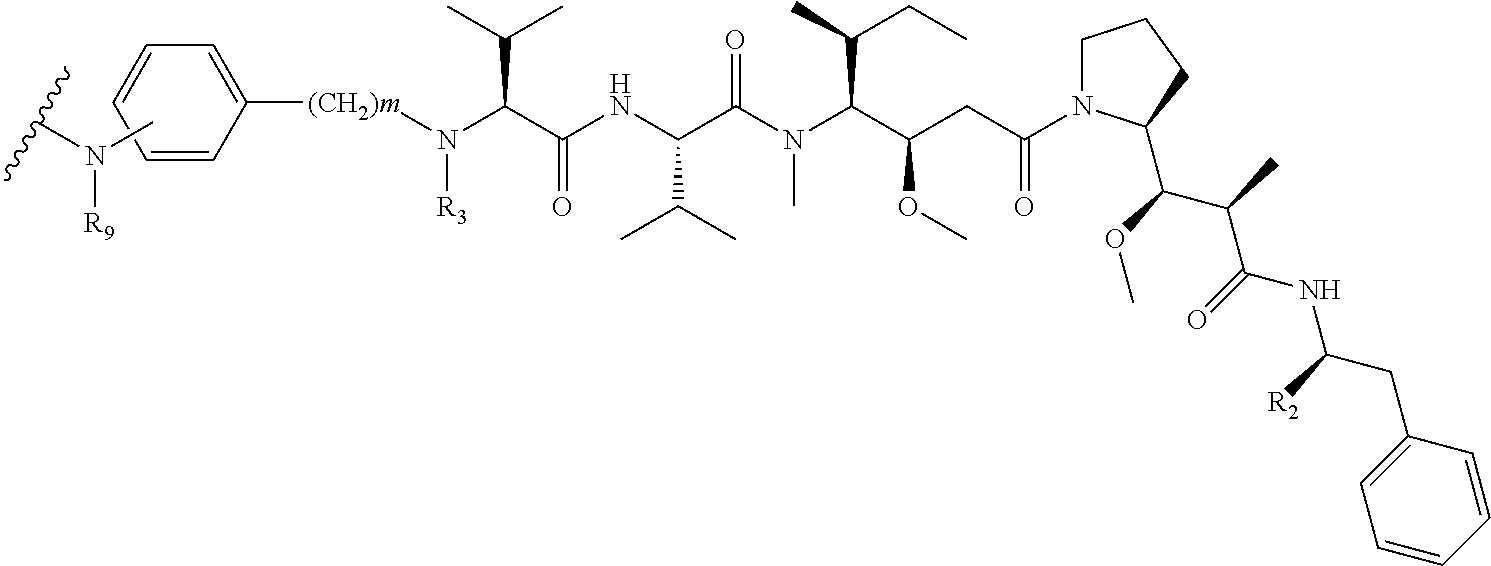
C00015

C00016

C00017
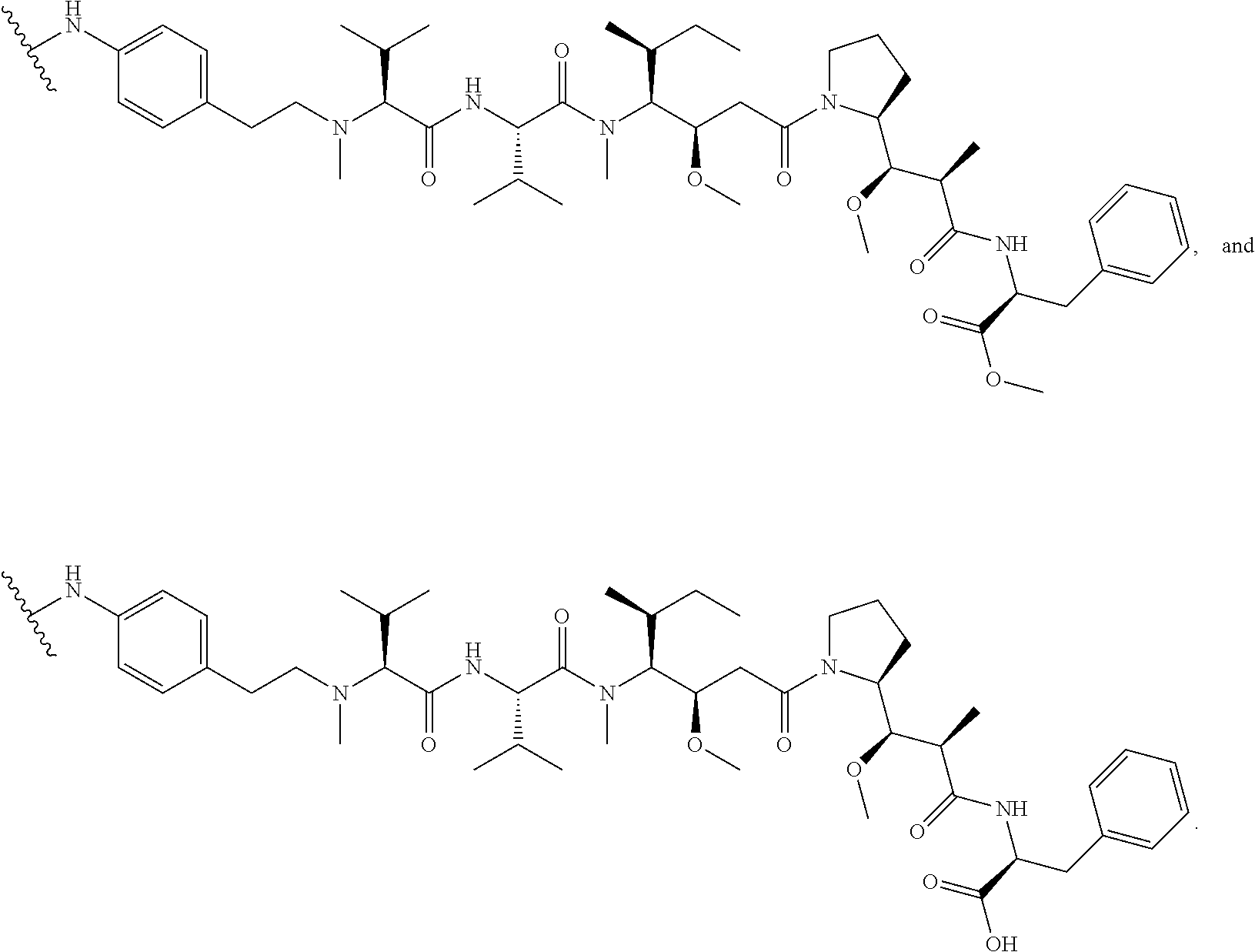
C00018
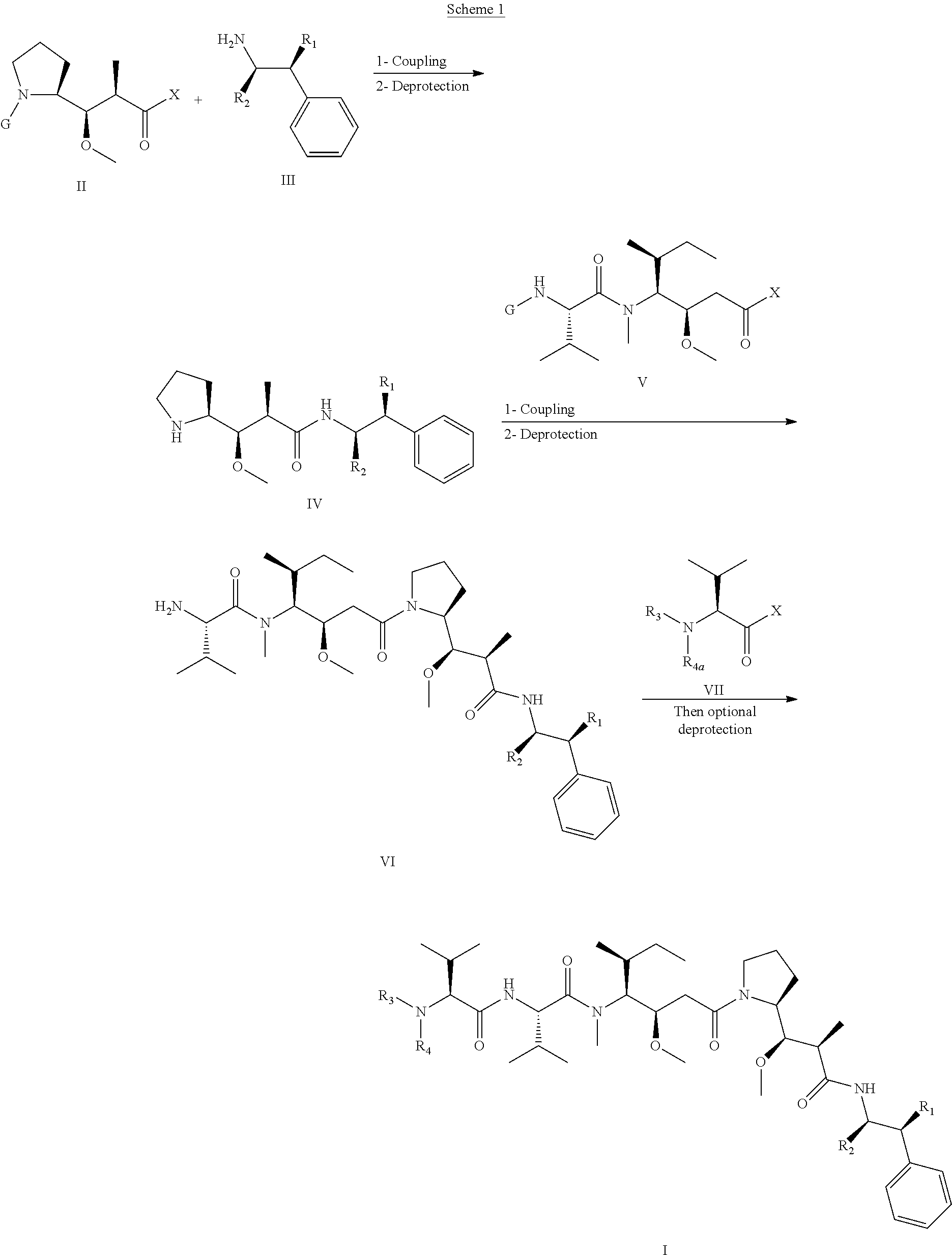
C00019

C00020
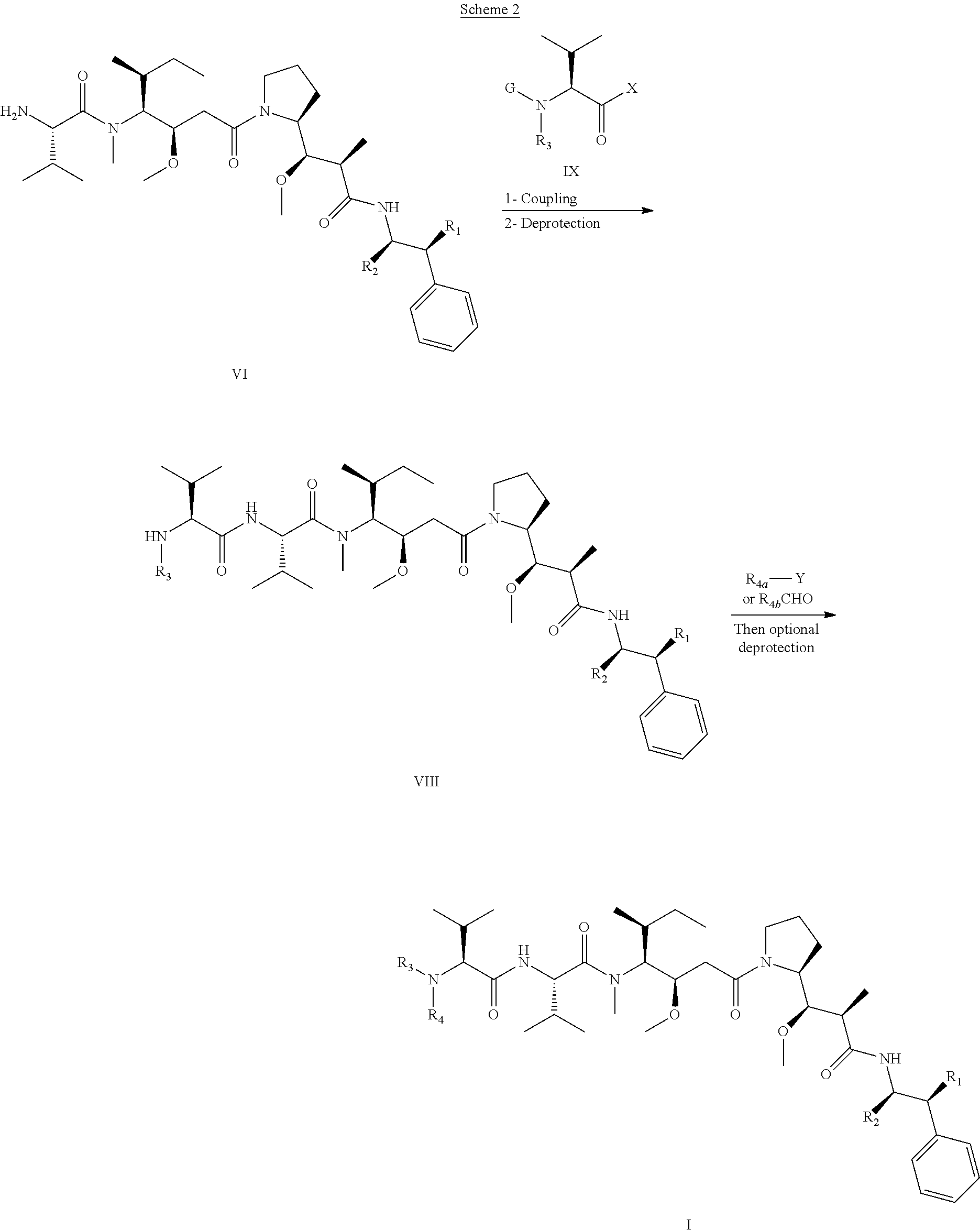
C00021

C00022

C00023

C00024

C00025
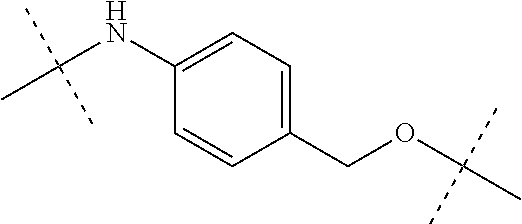
C00026

C00027

C00028

C00029

C00030

C00031

C00032

C00033
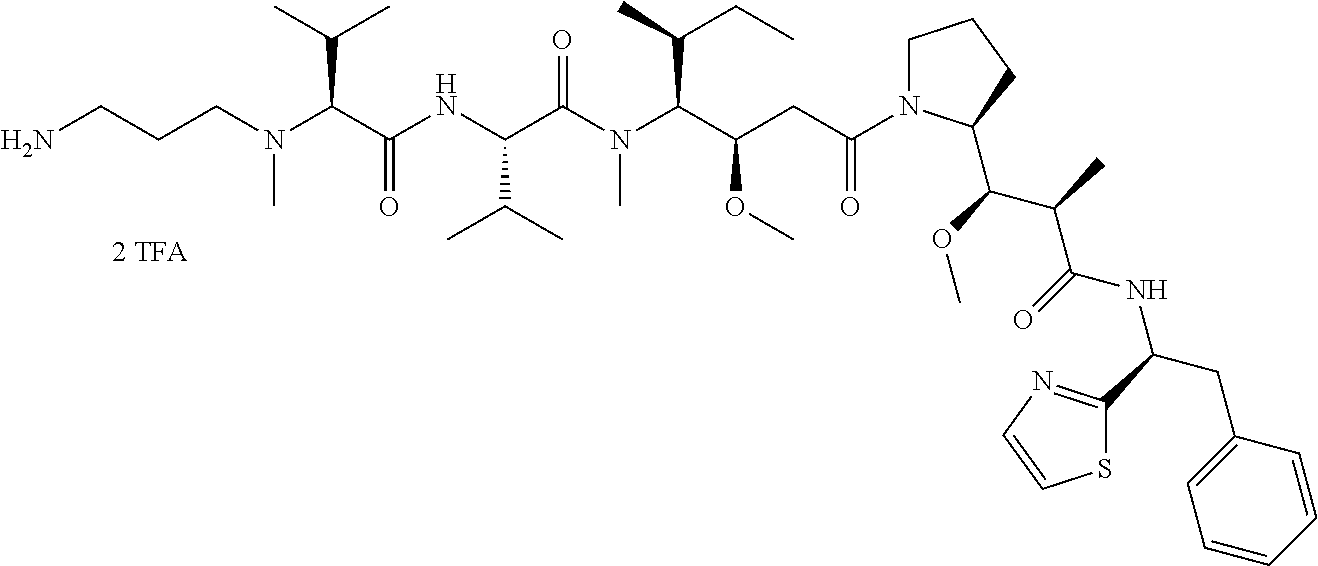
C00034

C00035
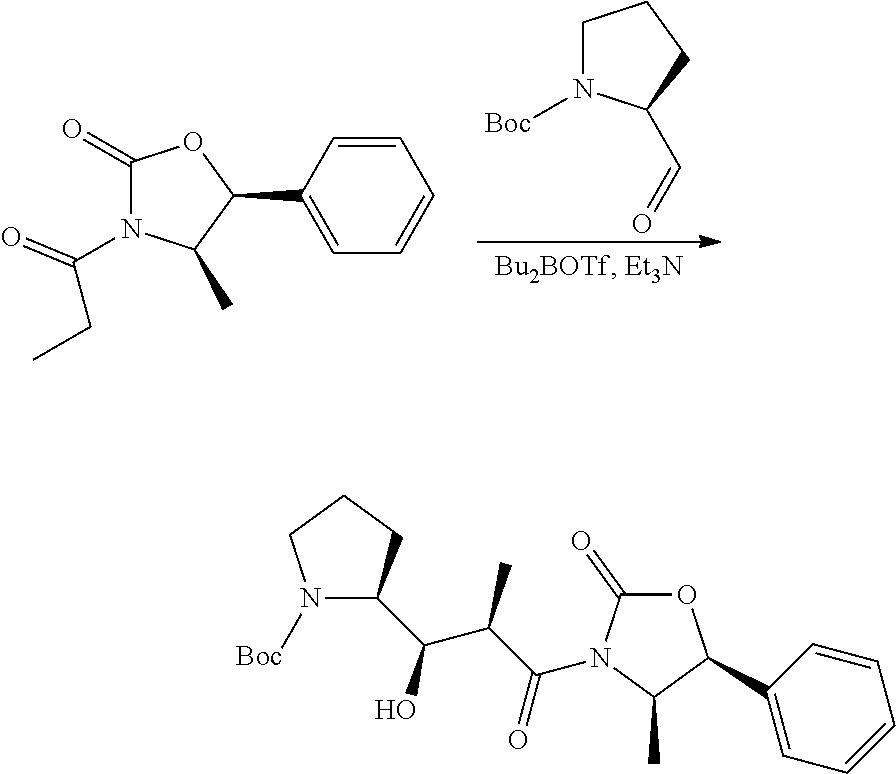
C00036

C00037
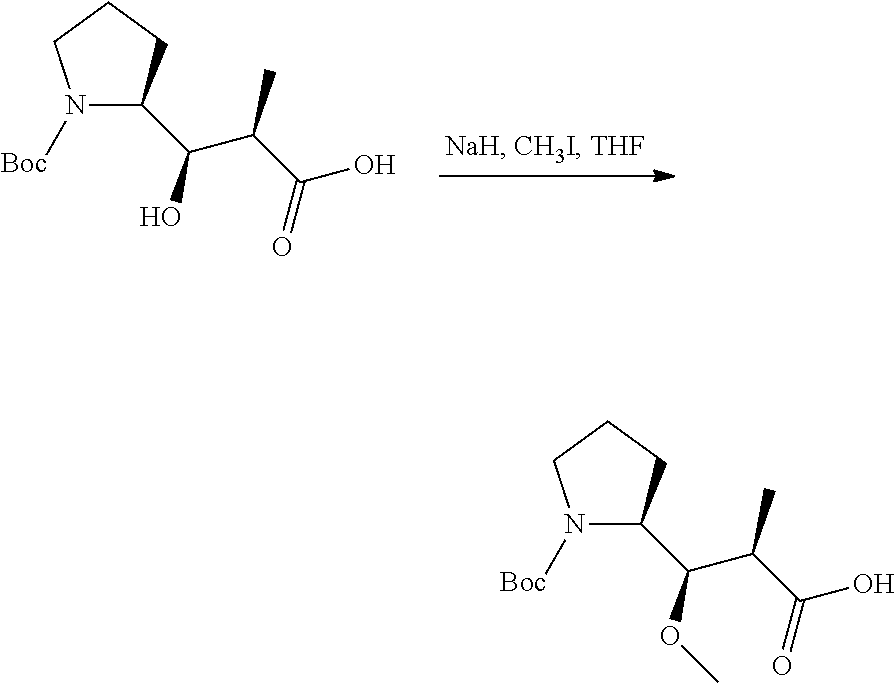
C00038
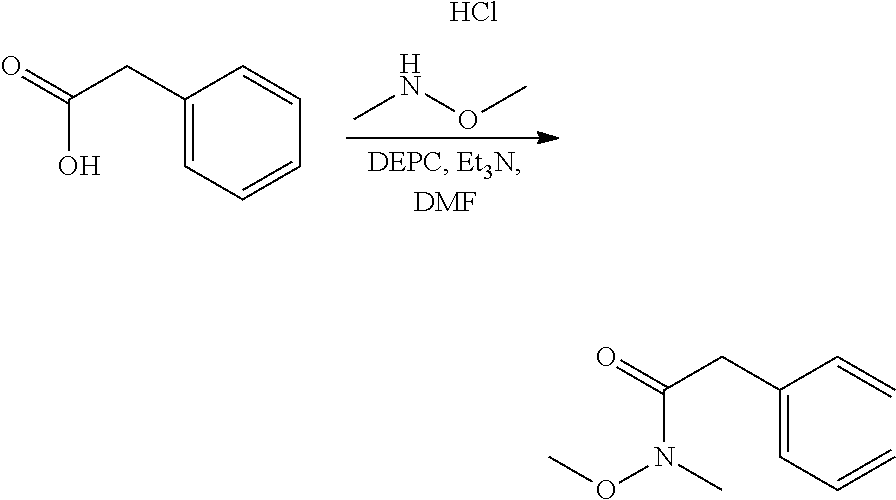
C00039

C00040

C00041

C00042

C00043
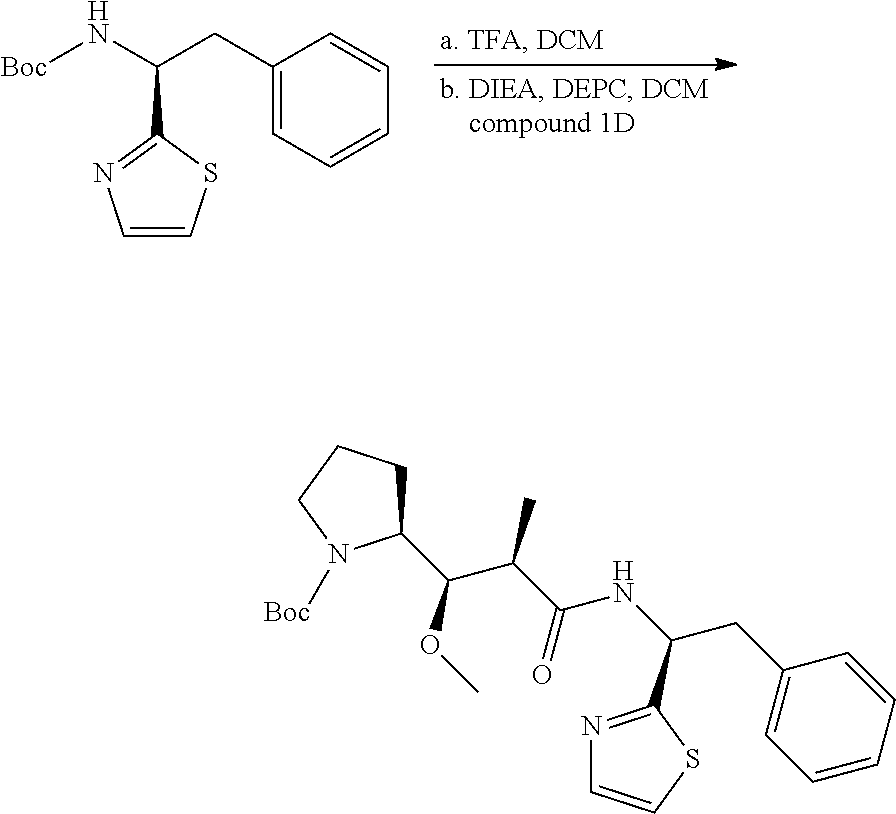
C00044

C00045

C00046

C00047
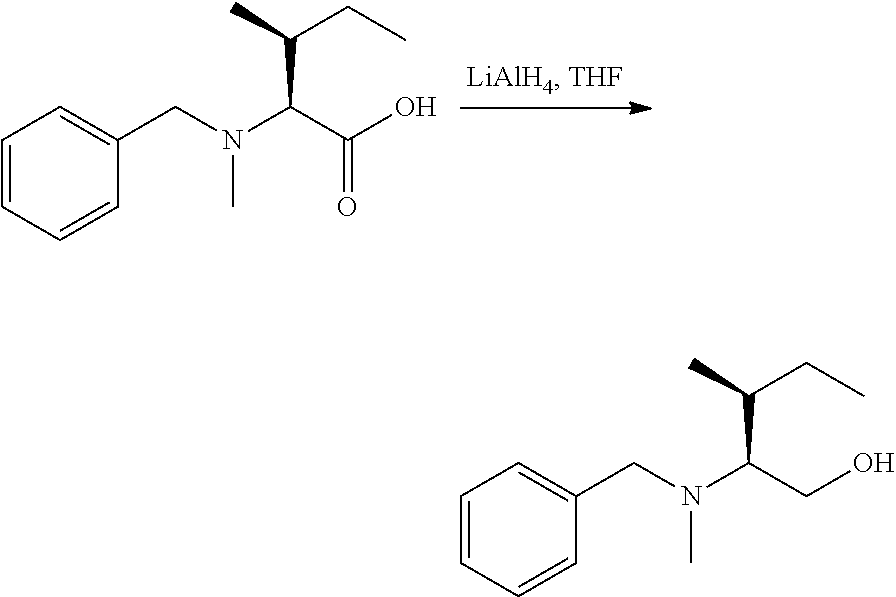
C00048

C00049

C00050

C00051
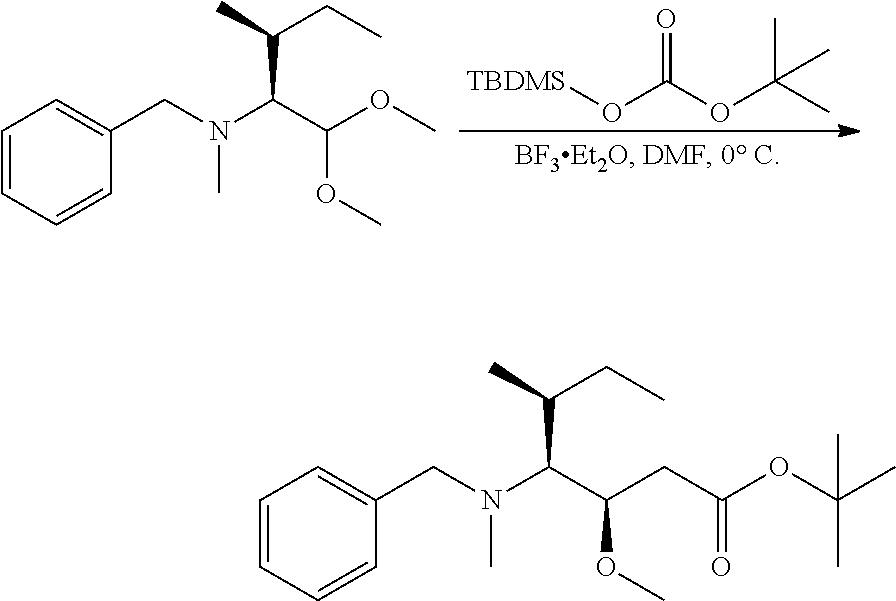
C00052

C00053

C00054
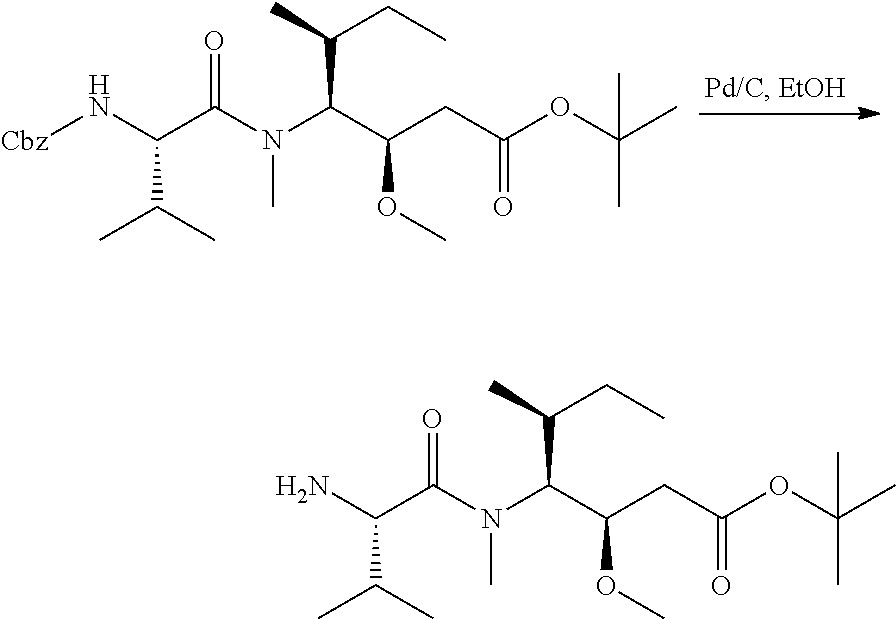
C00055

C00056

C00057
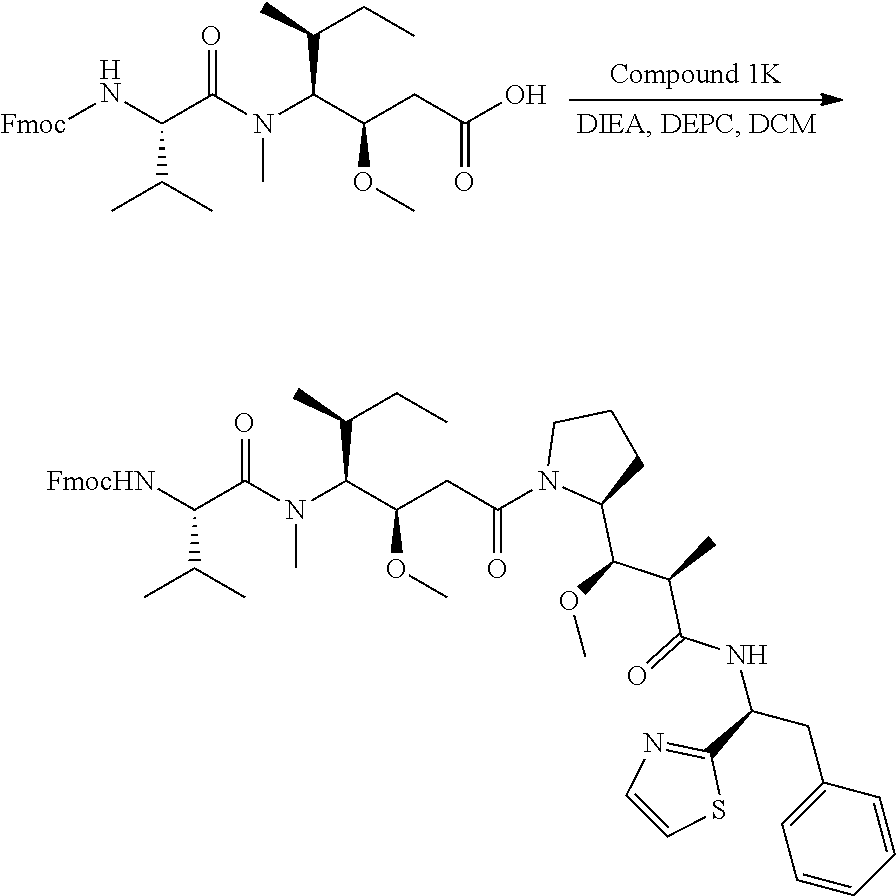
C00058
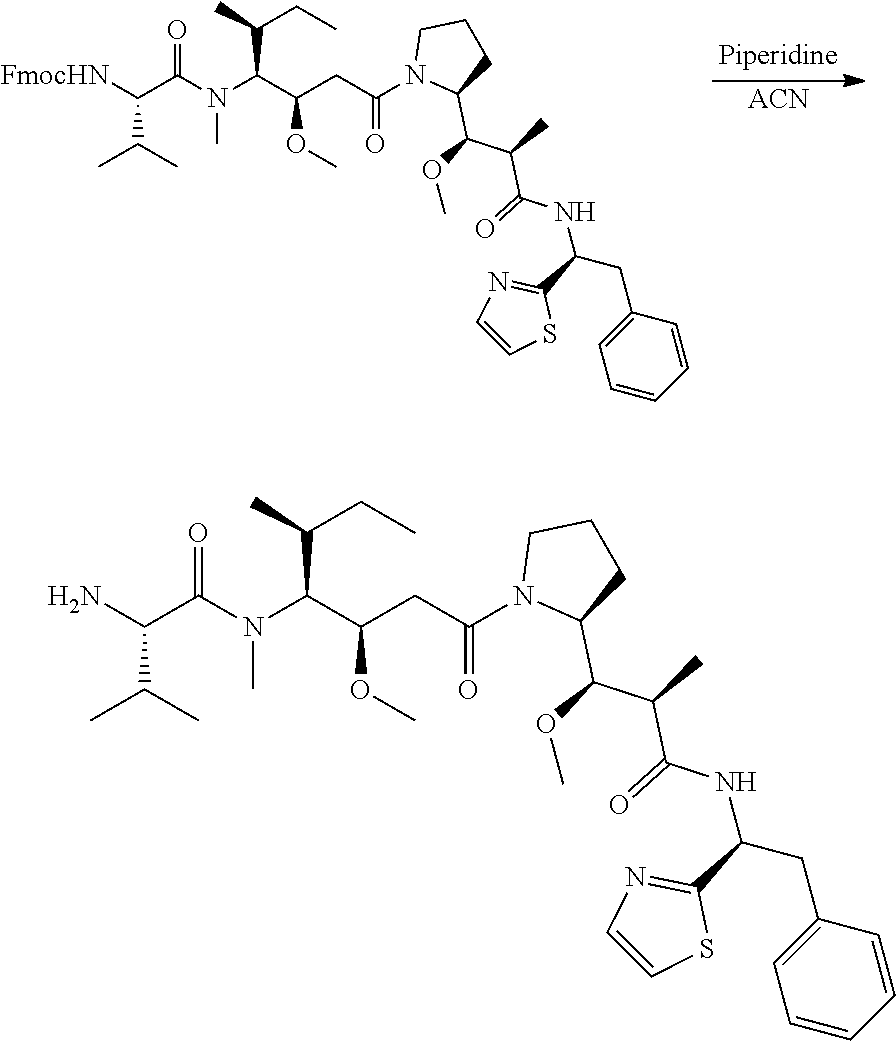
C00059

C00060

C00061

C00062
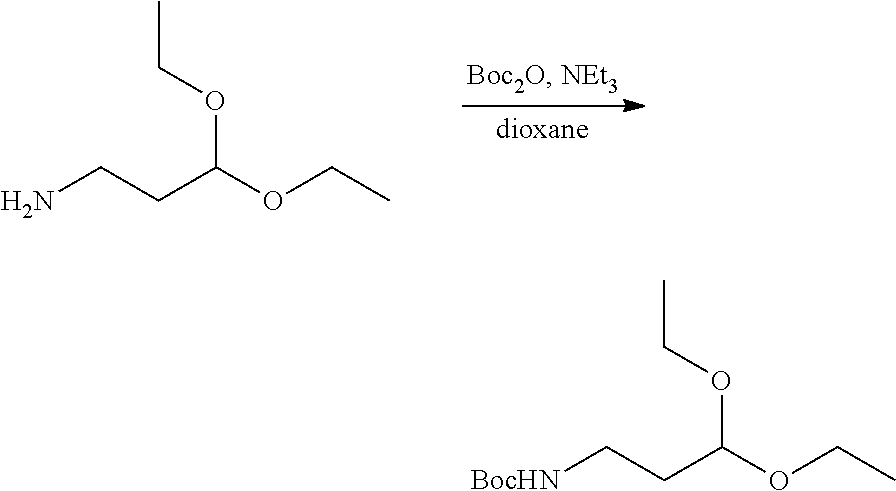
C00063

C00064

C00065
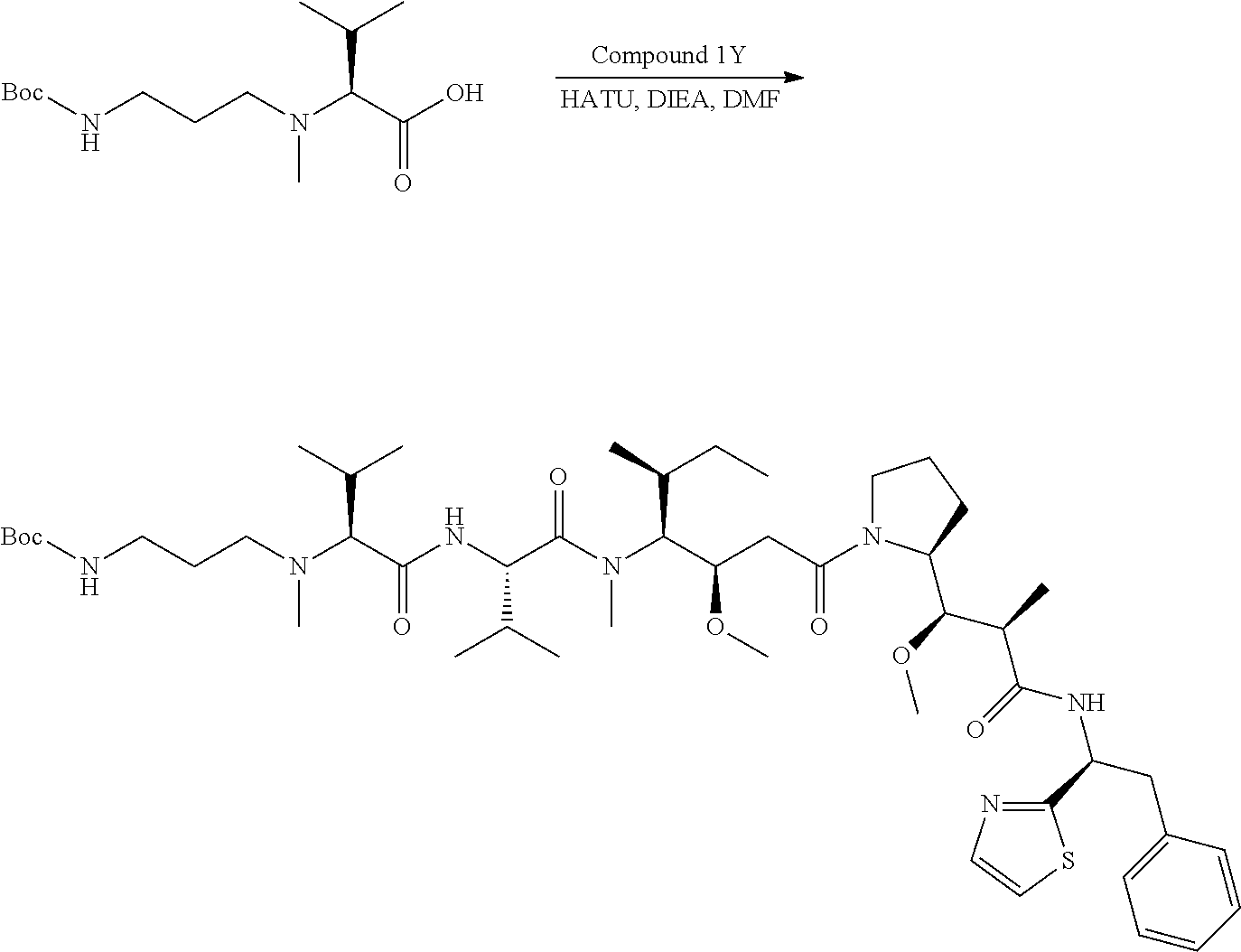
C00066
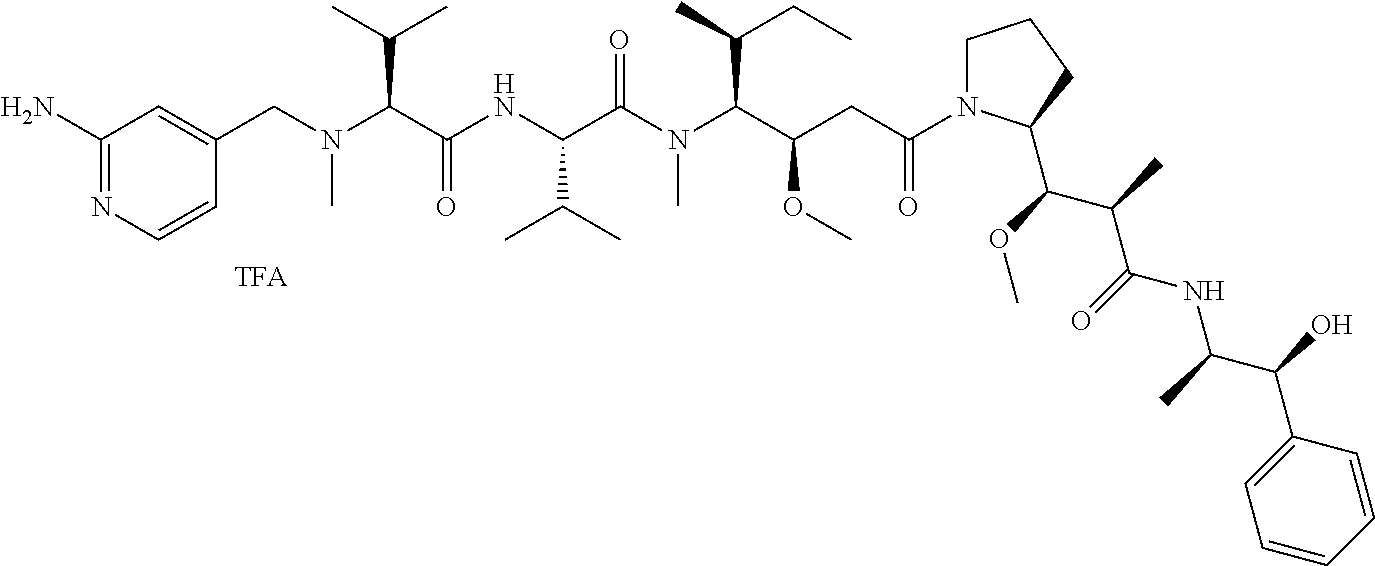
C00067

C00068

C00069

C00070

C00071

C00072
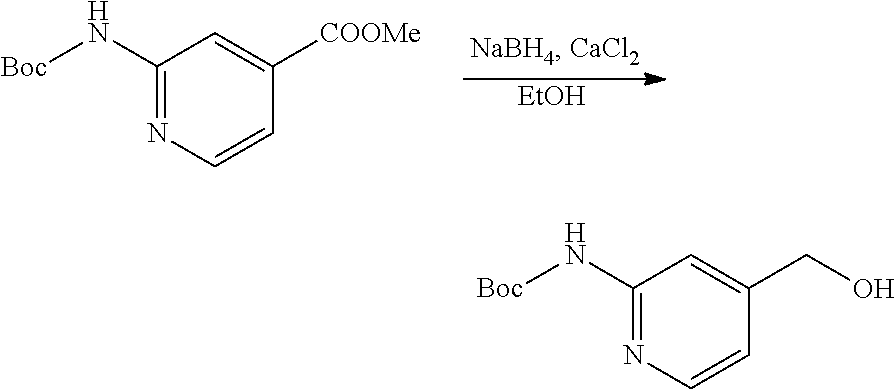
C00073
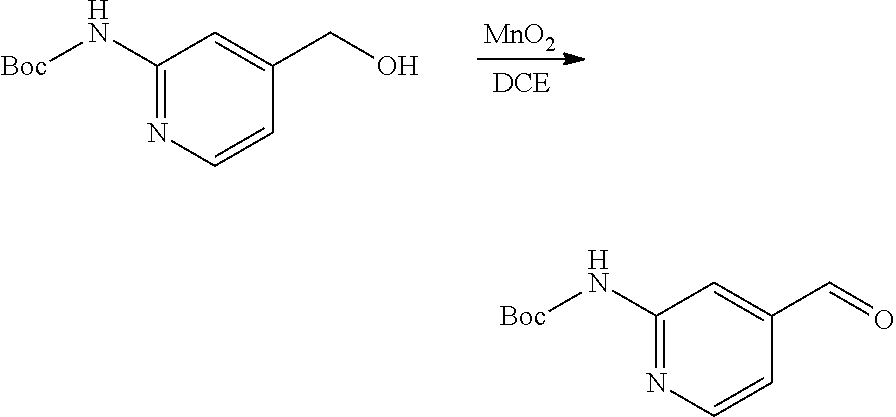
C00074

C00075

C00076
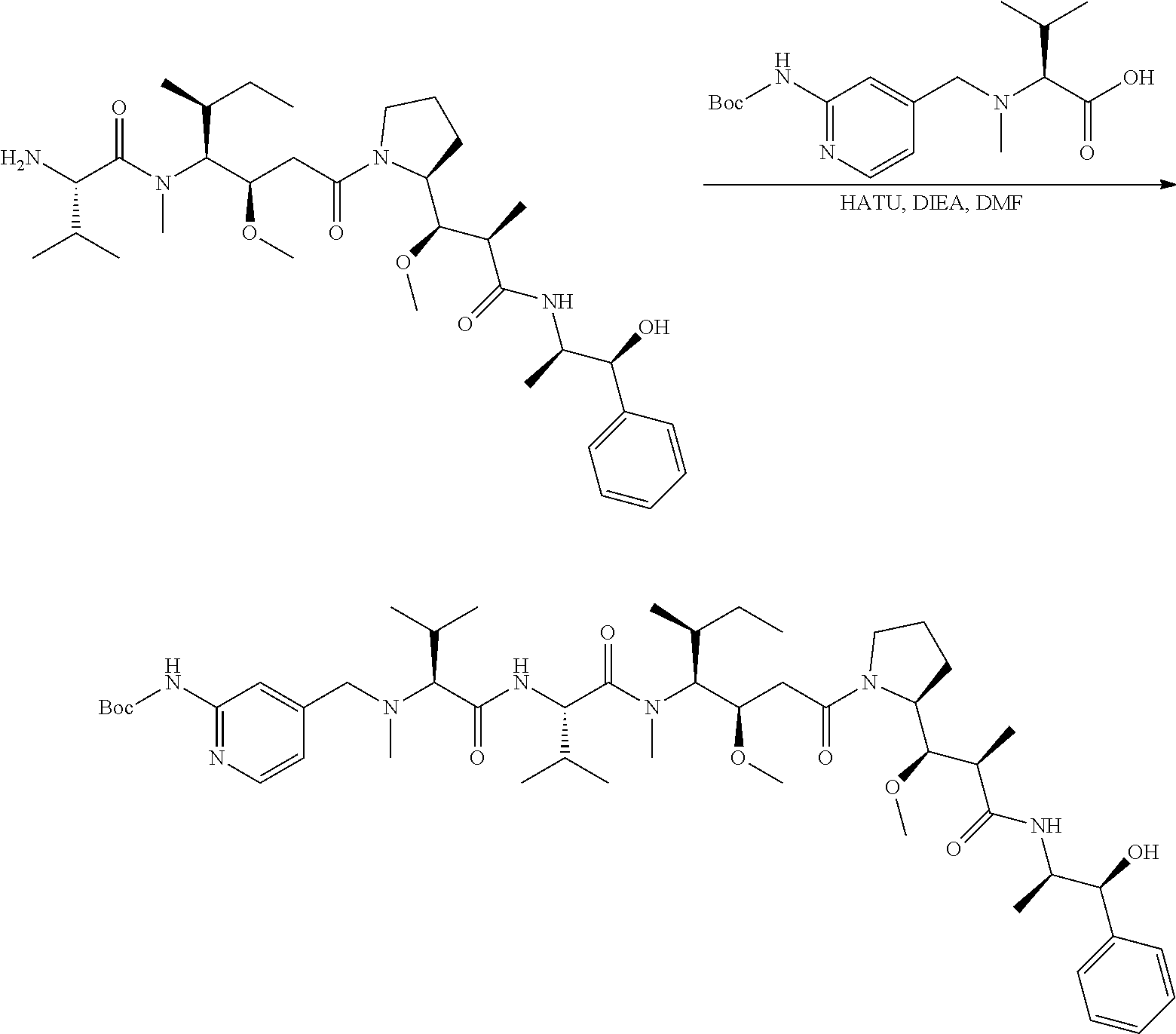
C00077

C00078

C00079
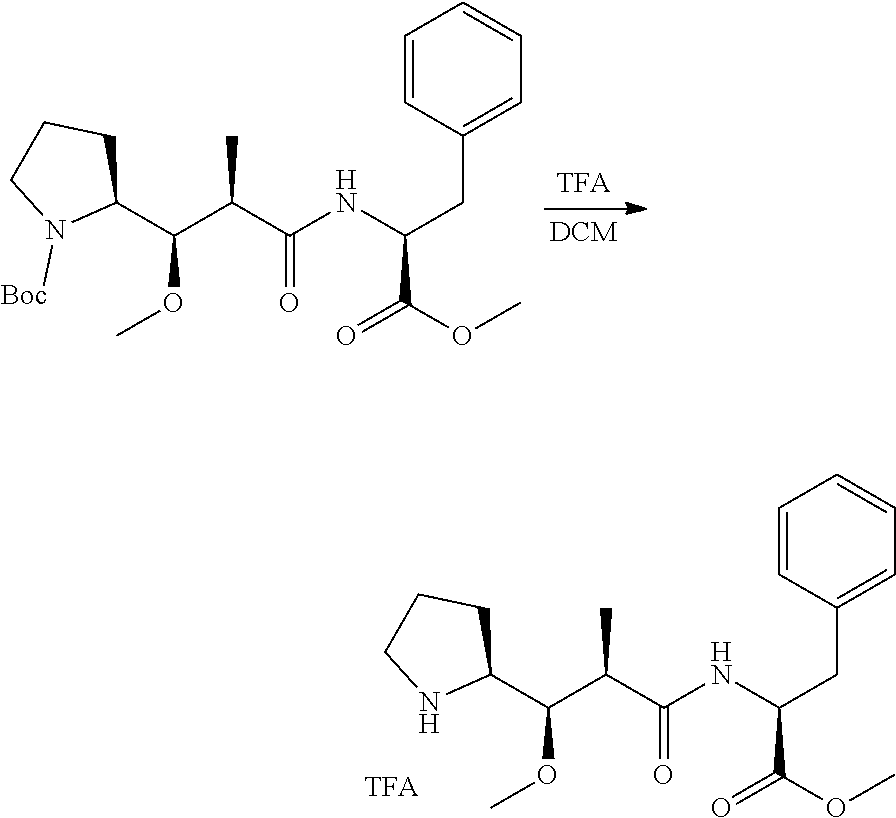
C00080

C00081
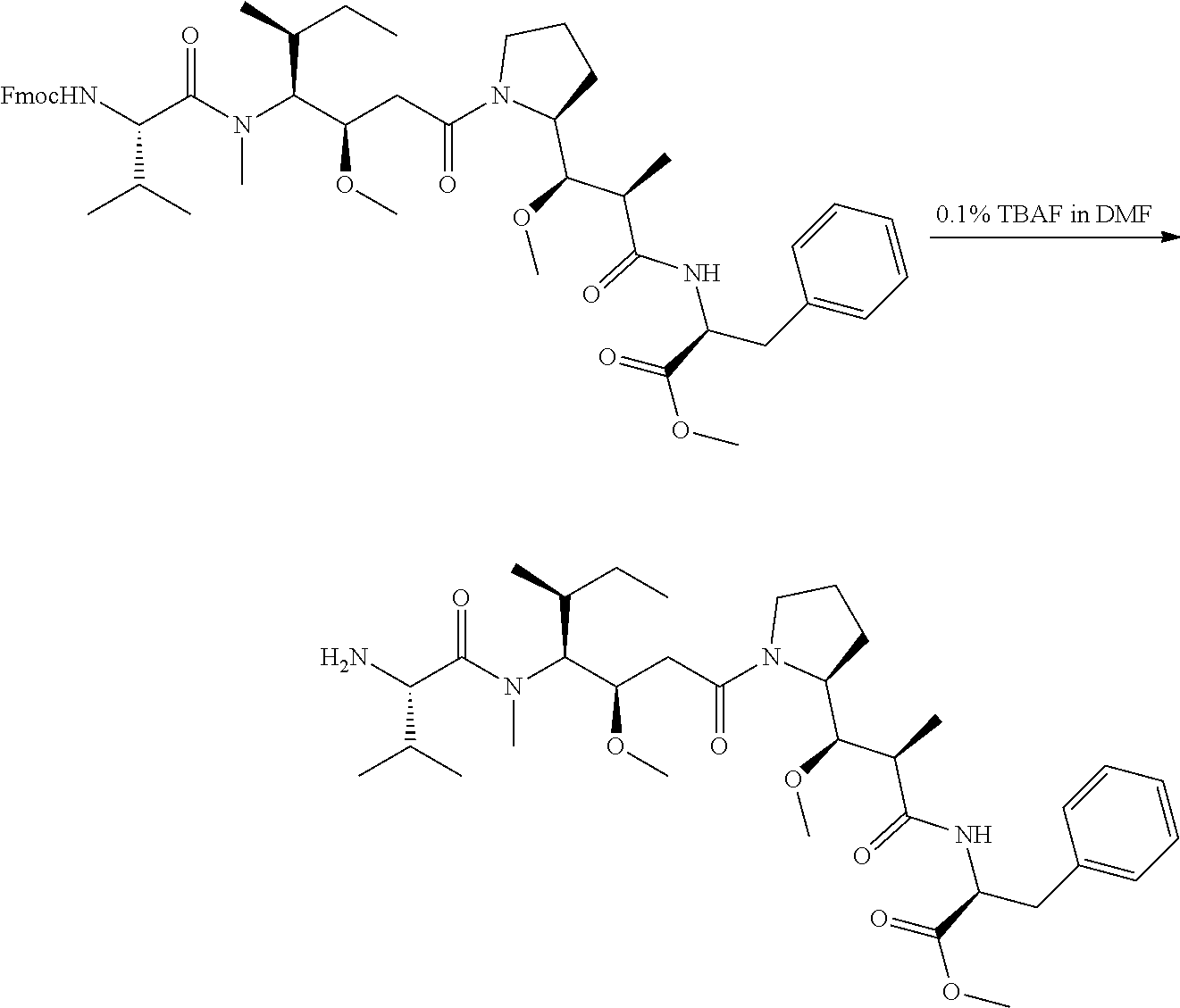
C00082
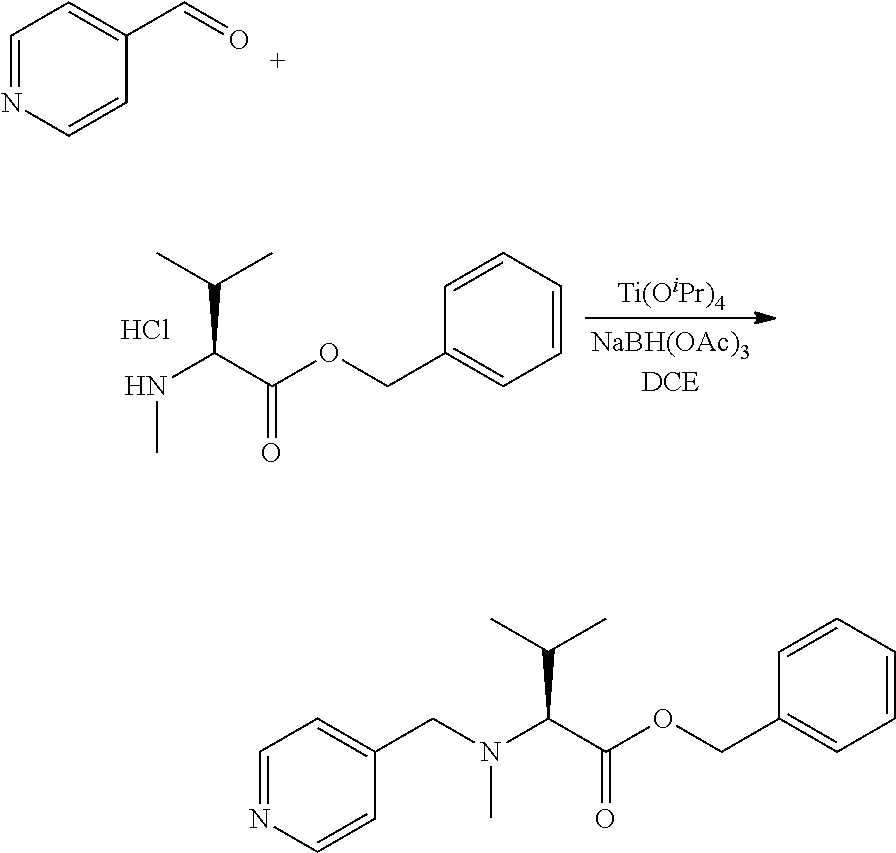
C00083

C00084

C00085

C00086

C00087
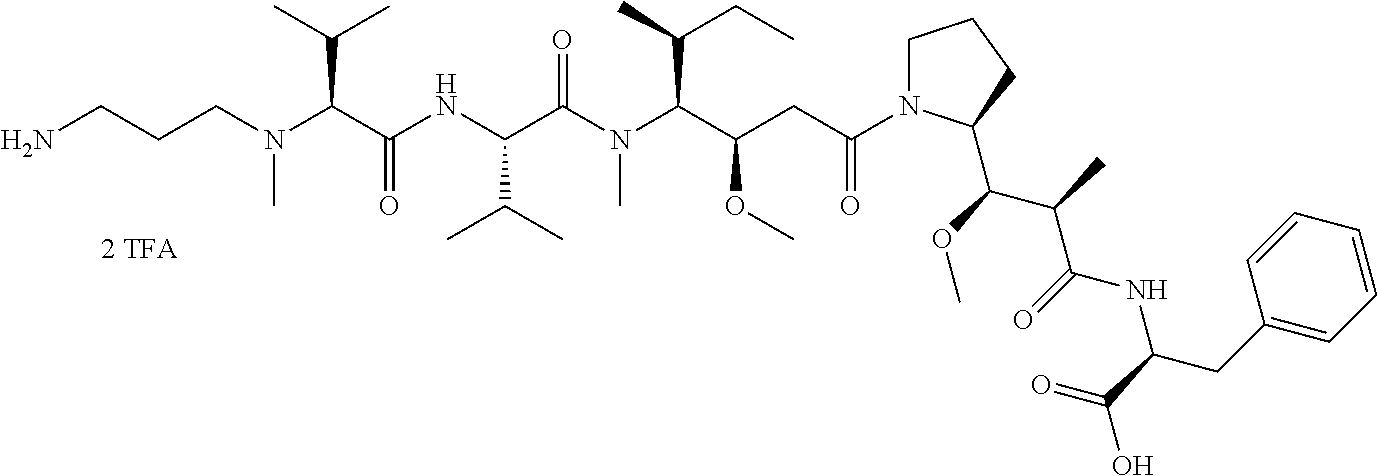
C00088

C00089

C00090
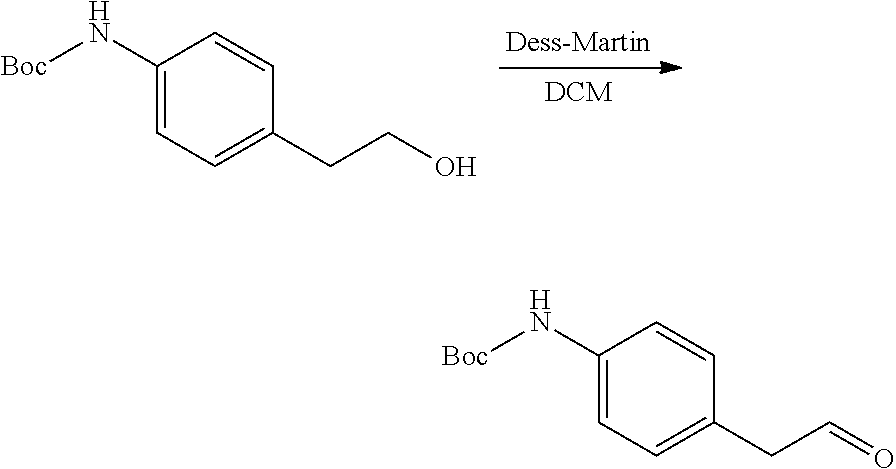
C00091

C00092
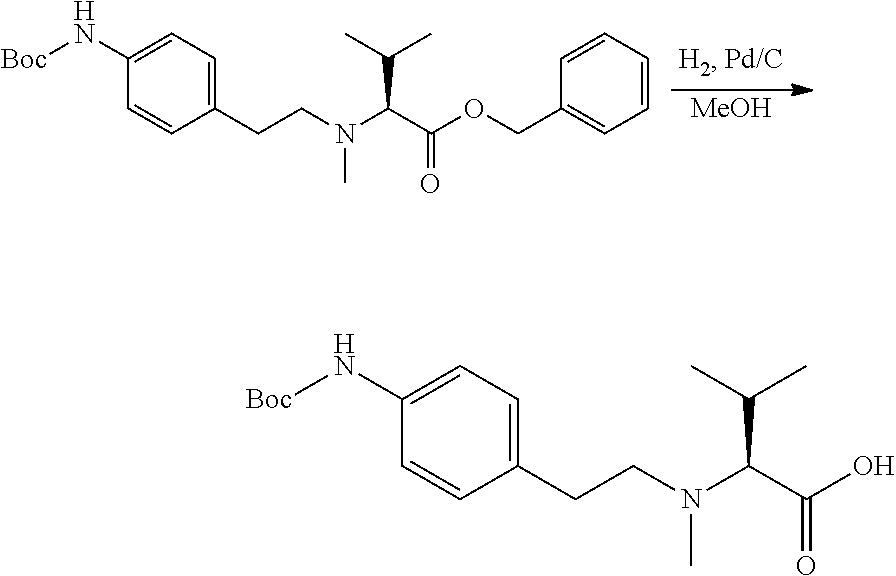
C00093
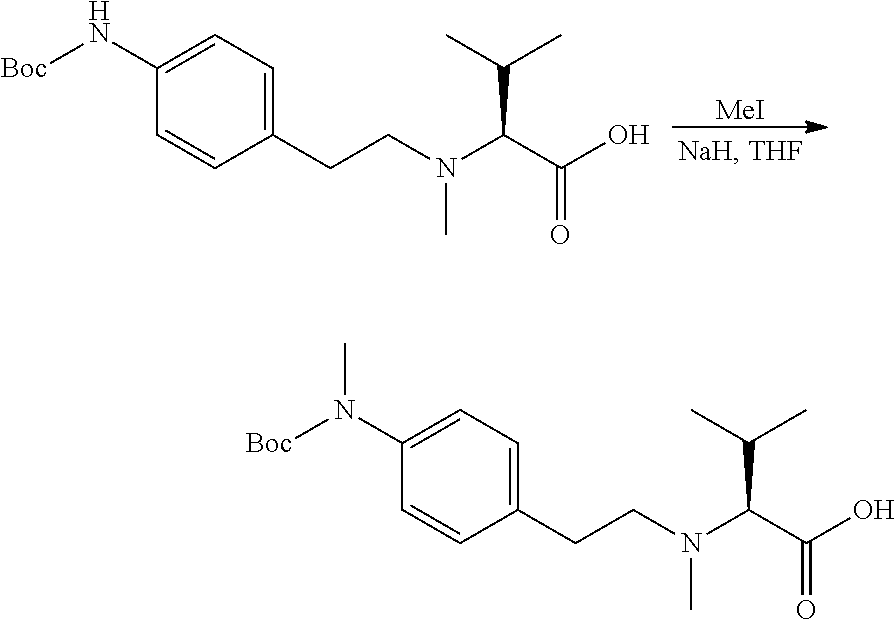
C00094

C00095

C00096

C00097

C00098

C00099

C00100
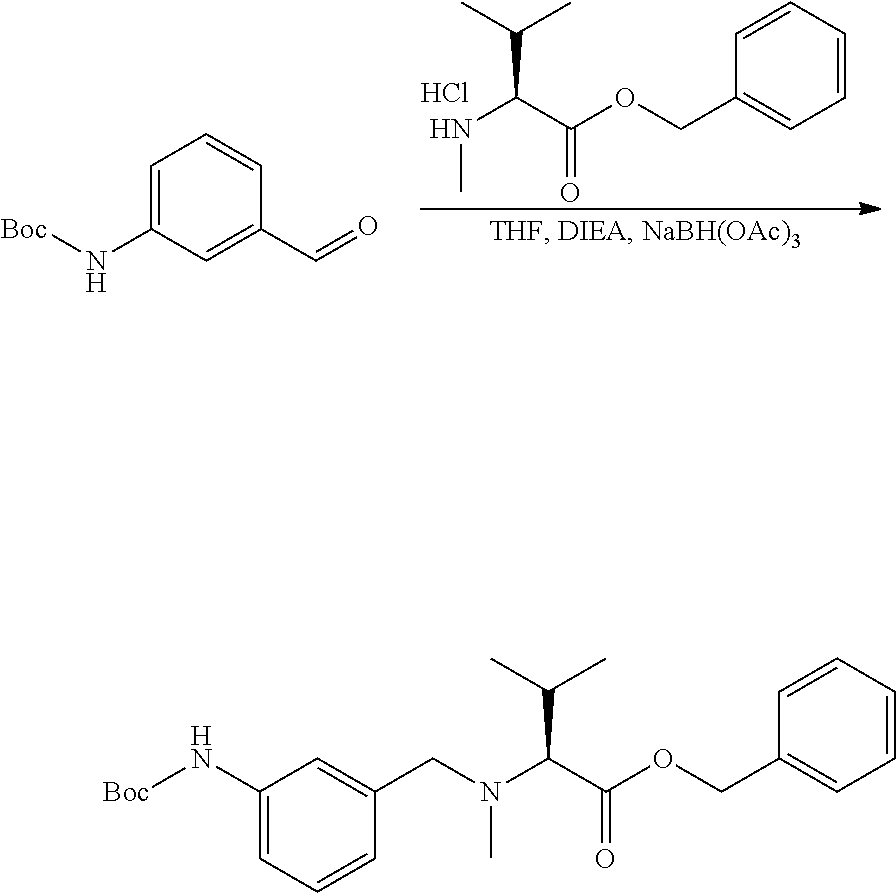
C00101
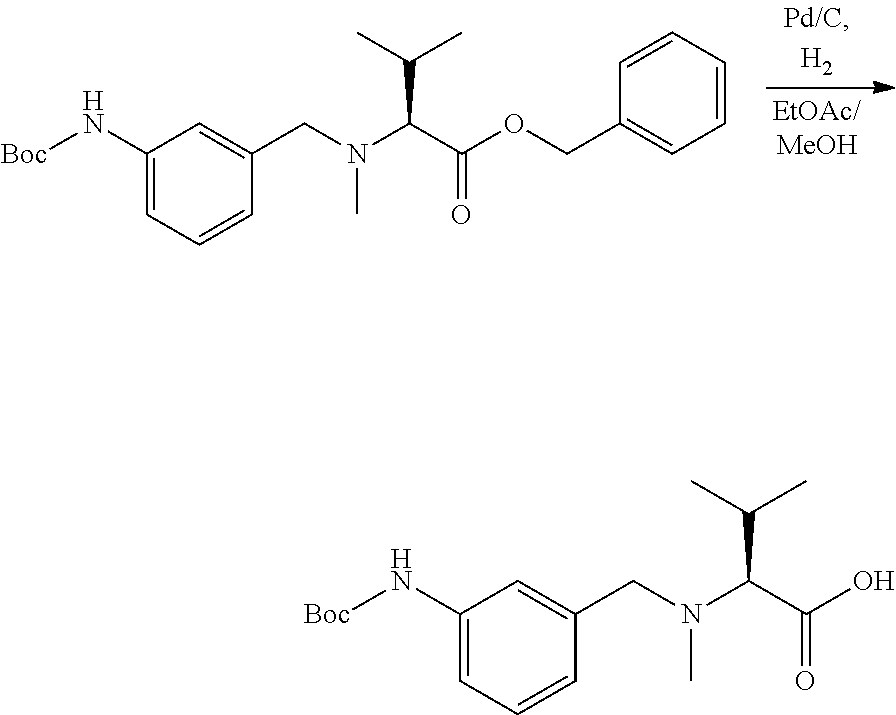
C00102
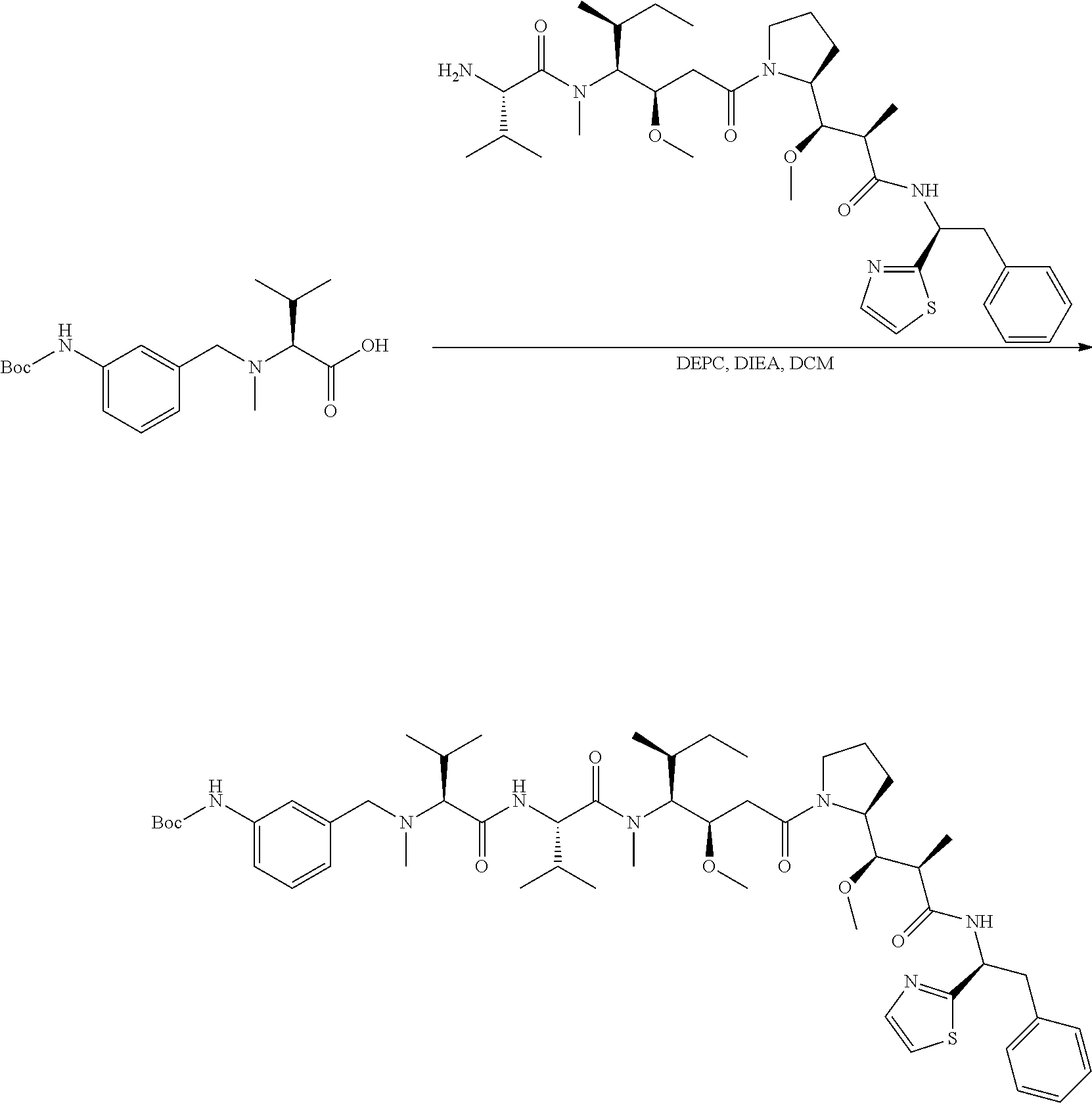
C00103

C00104

C00105
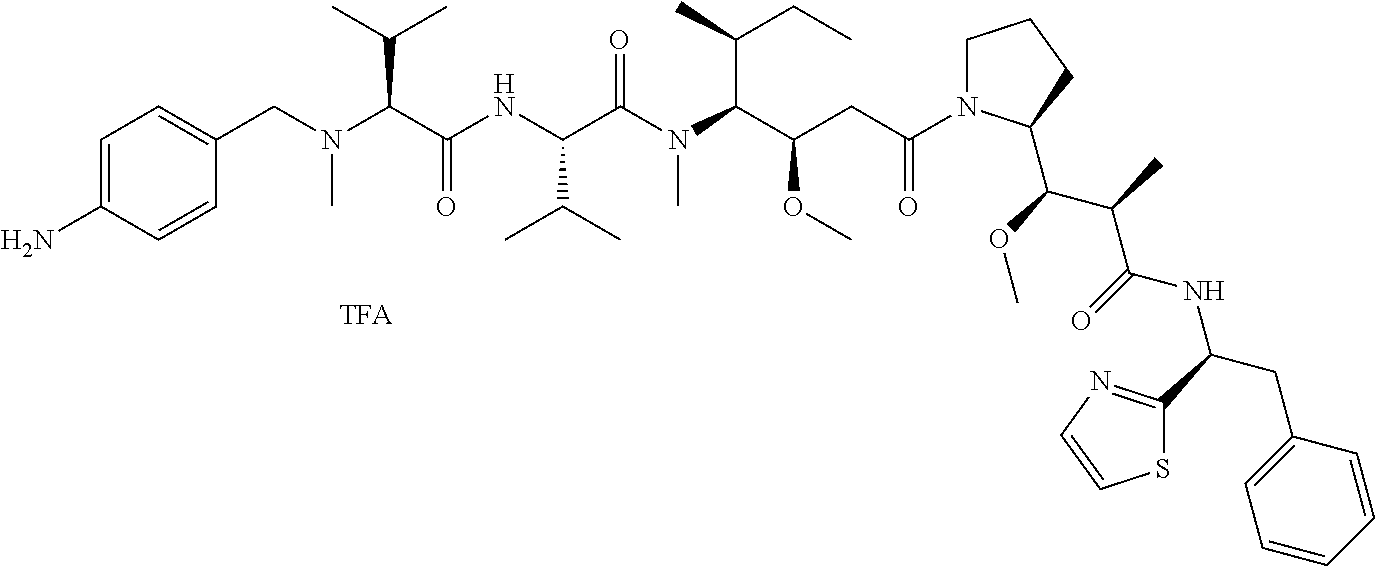
C00106

C00107

C00108

C00109

C00110

C00111

C00112

C00113

C00114

C00115

C00116

C00117
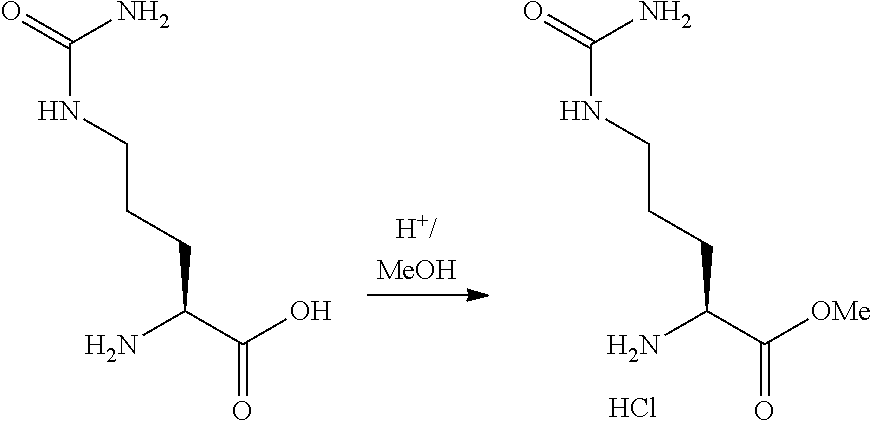
C00118
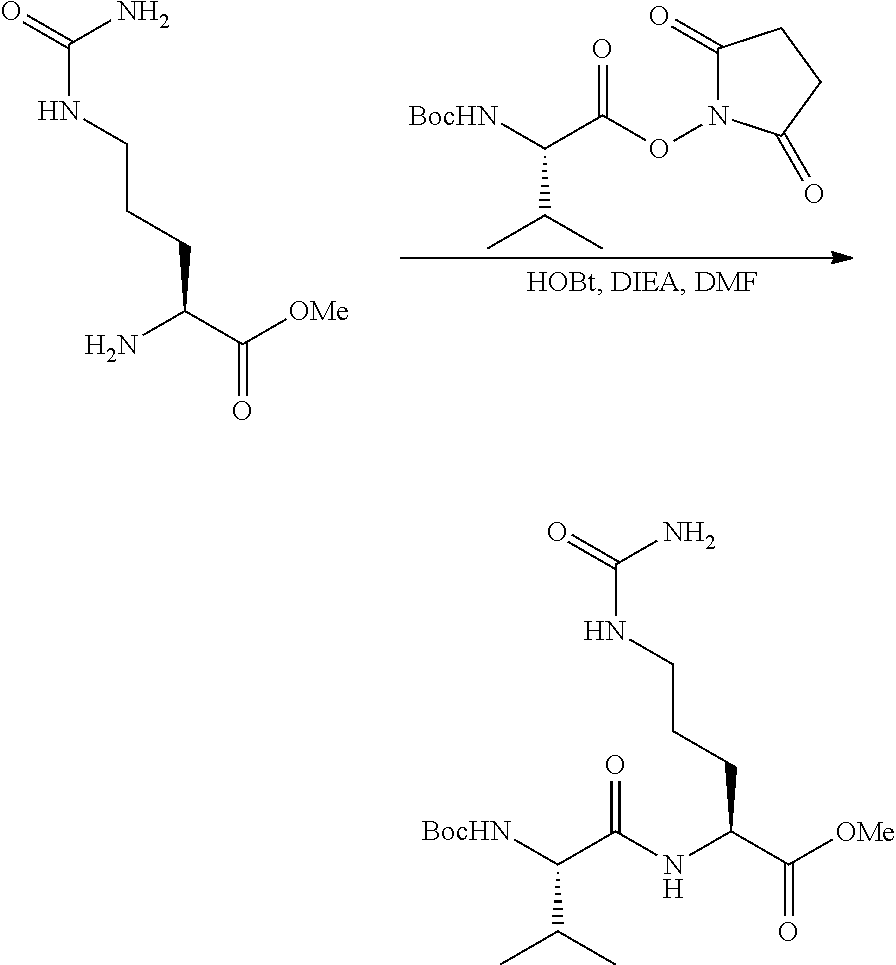
C00119
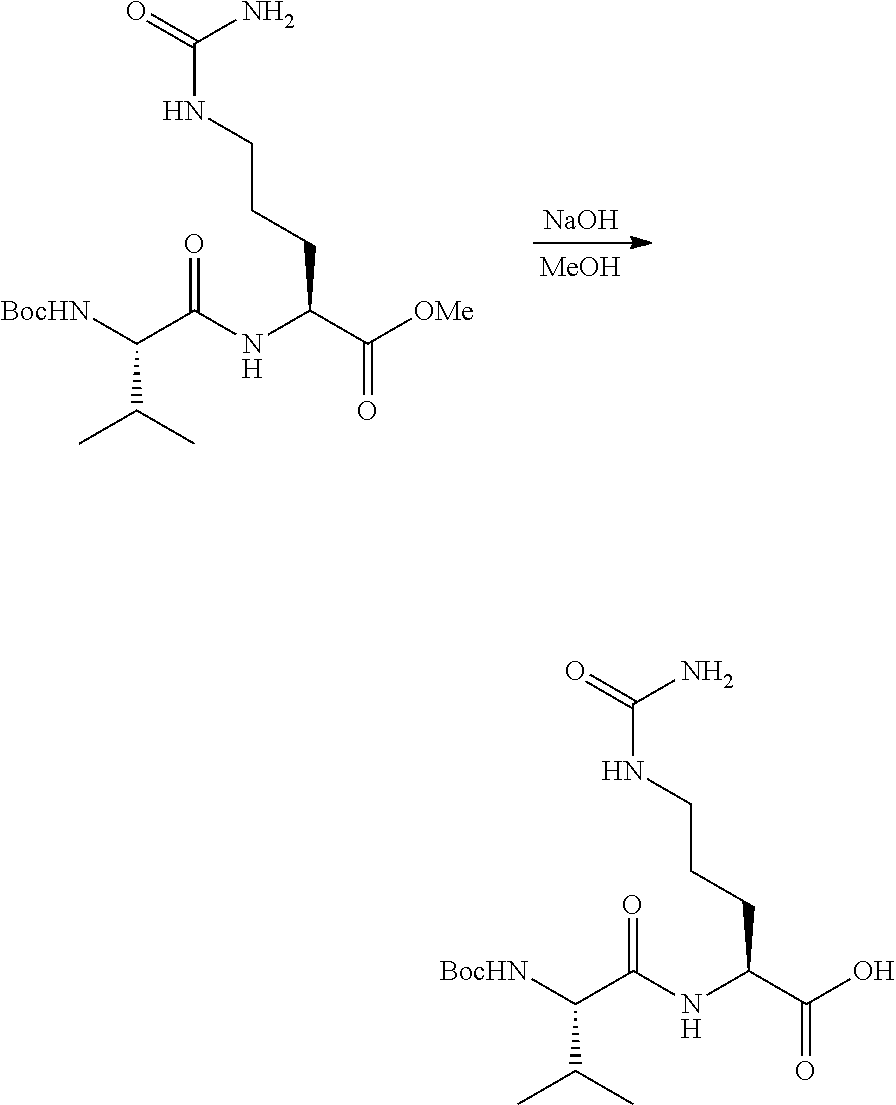
C00120
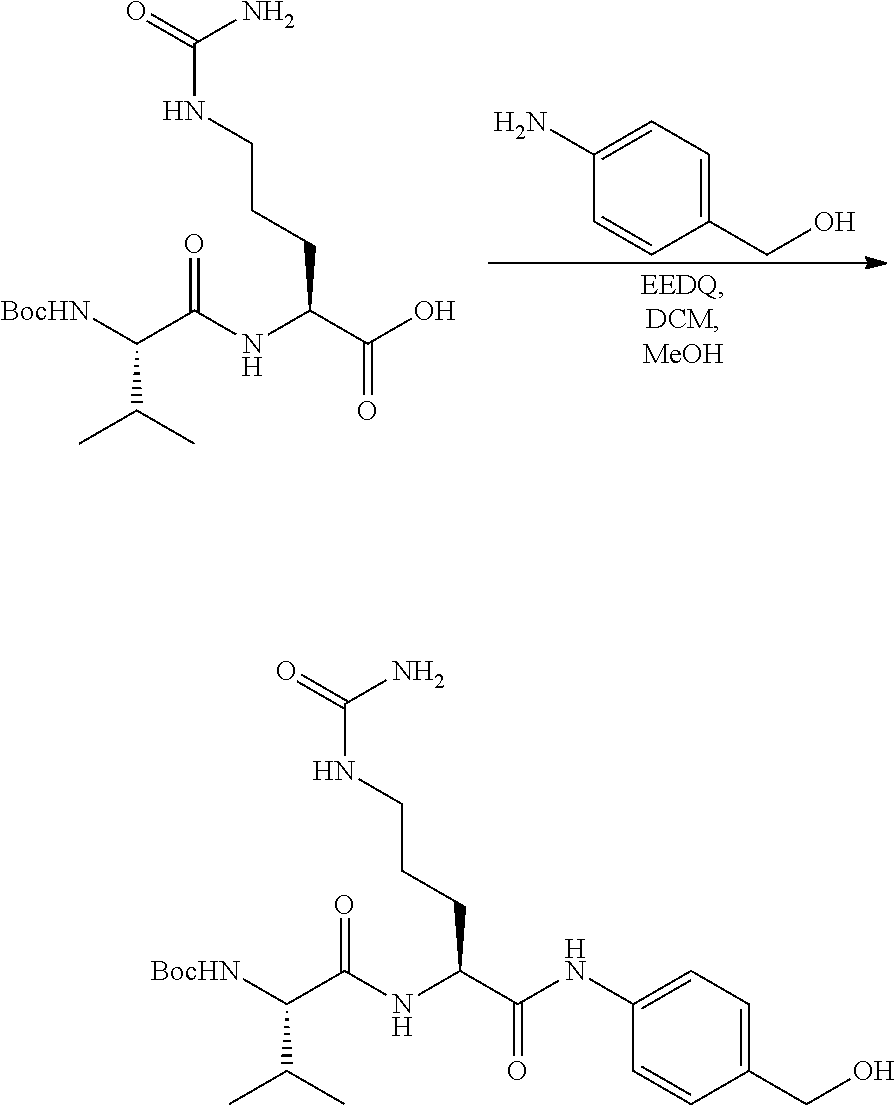
C00121
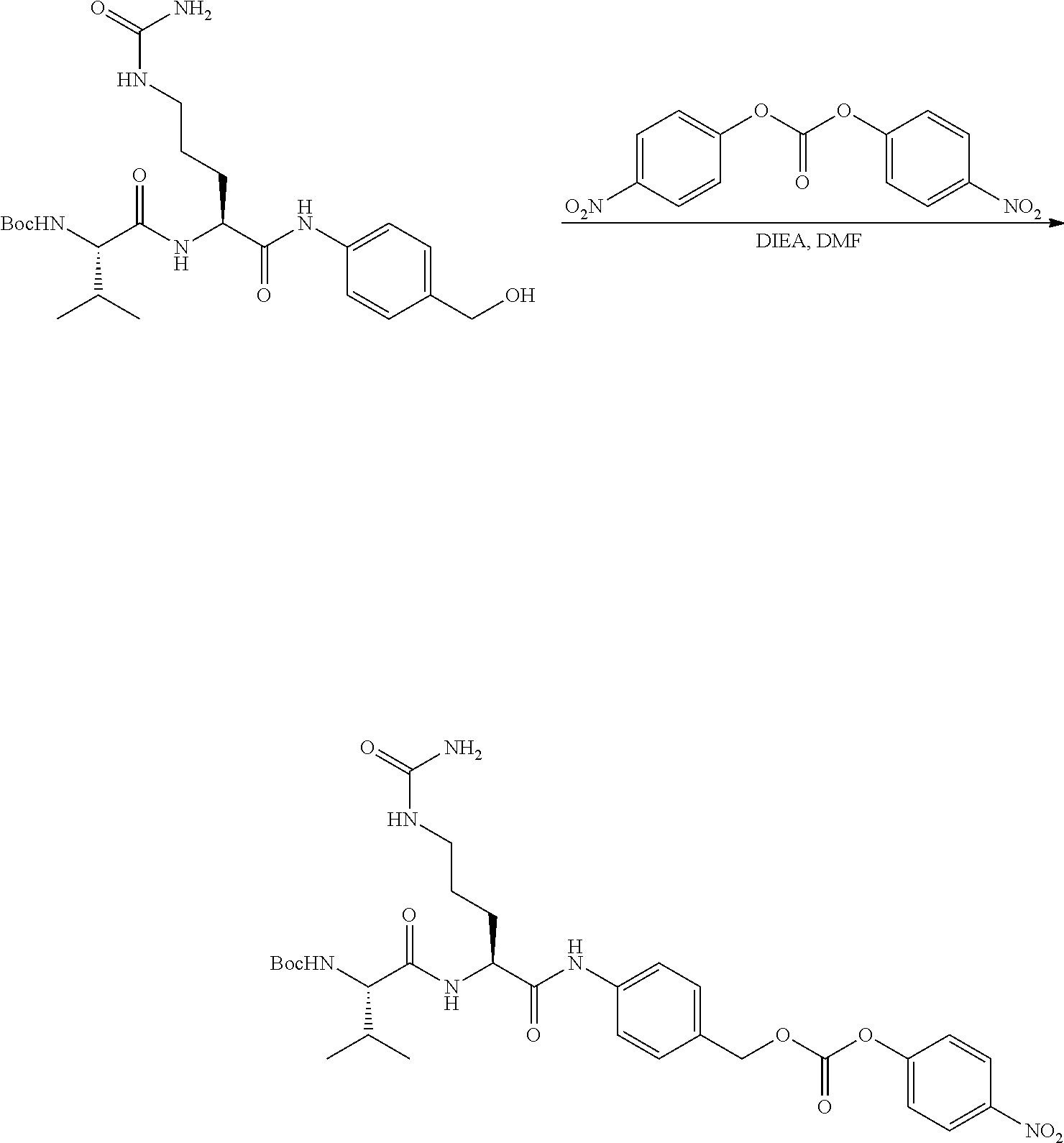
C00122

C00123
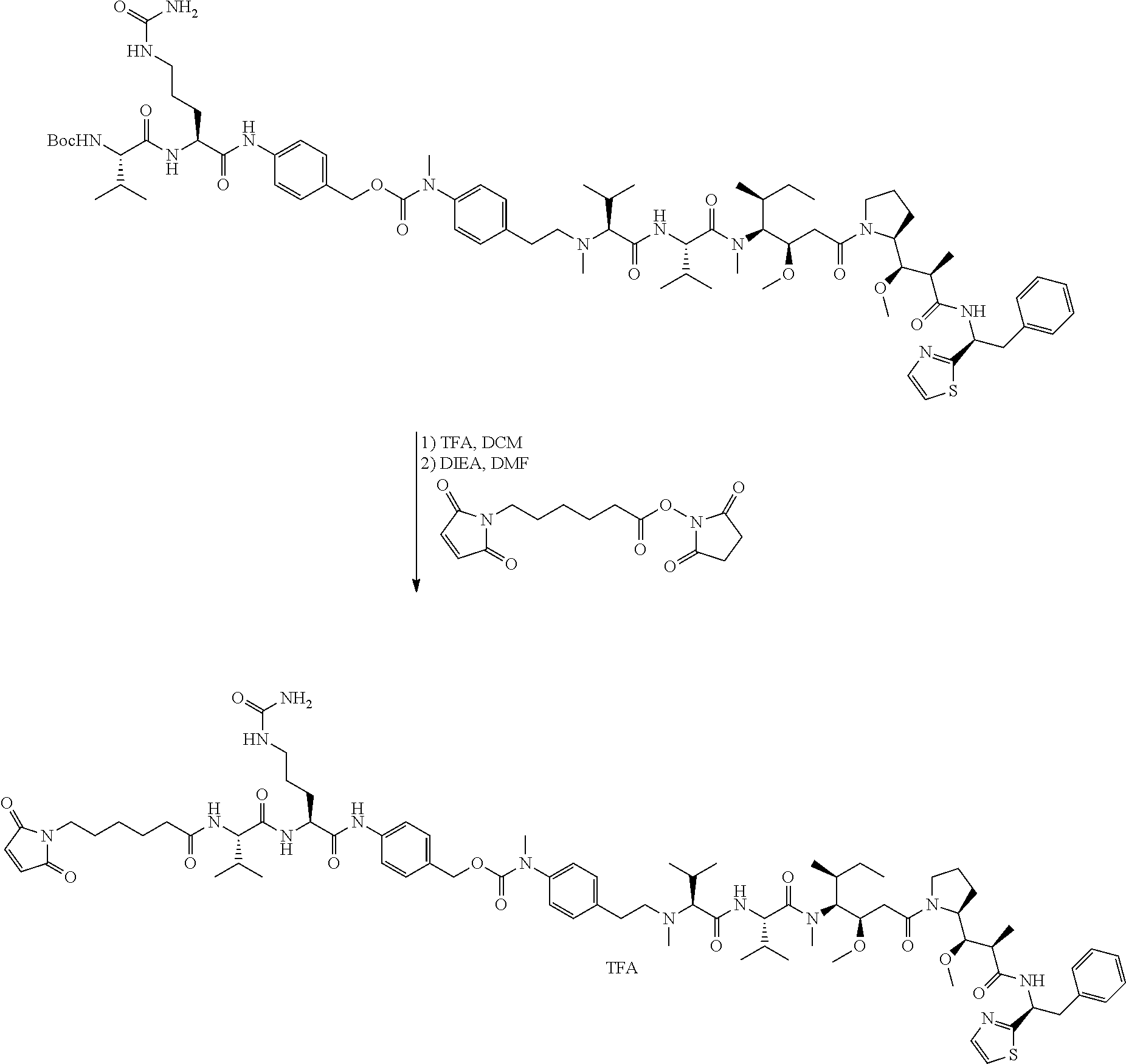
C00124
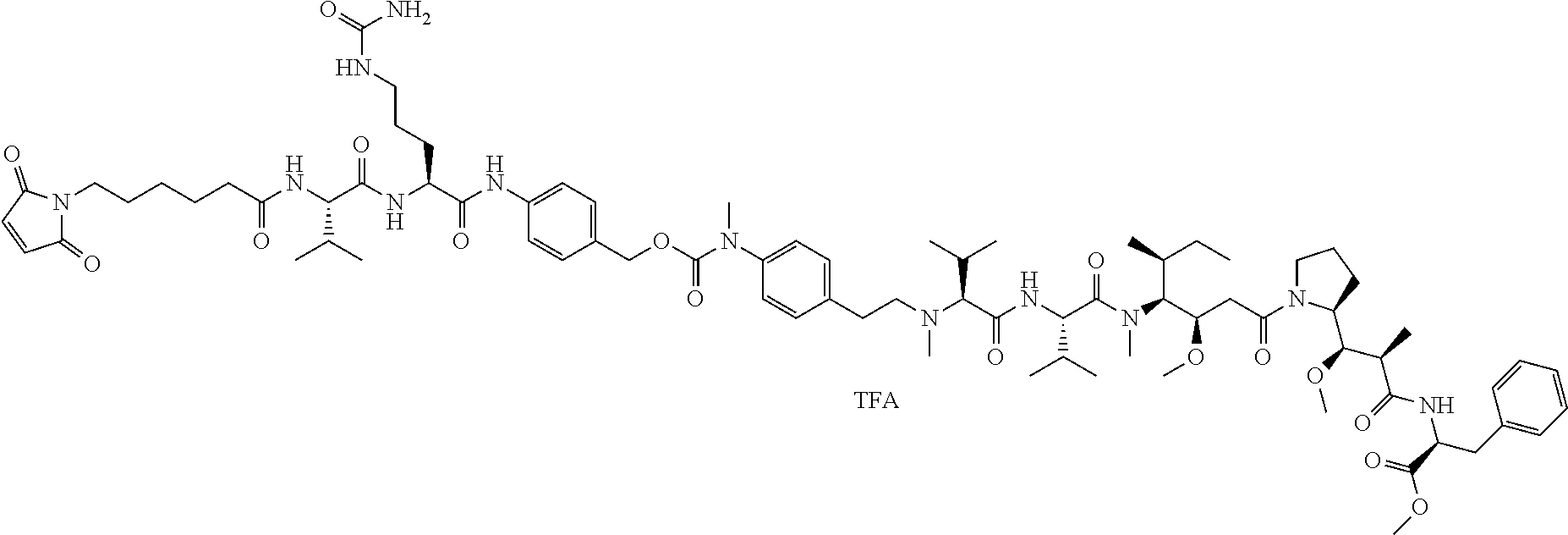
C00125
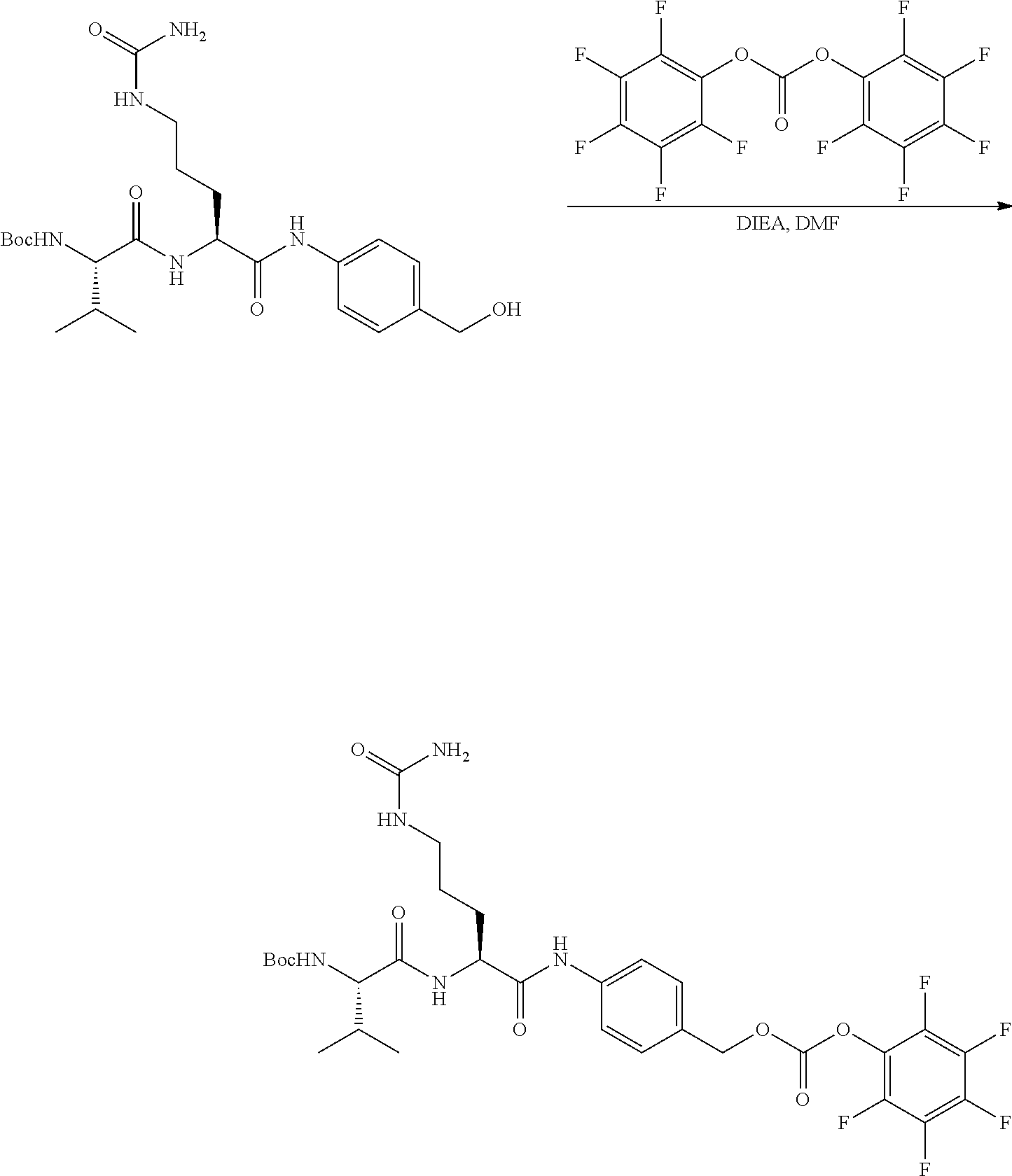
C00126

C00127

C00128

C00129

C00130

C00131
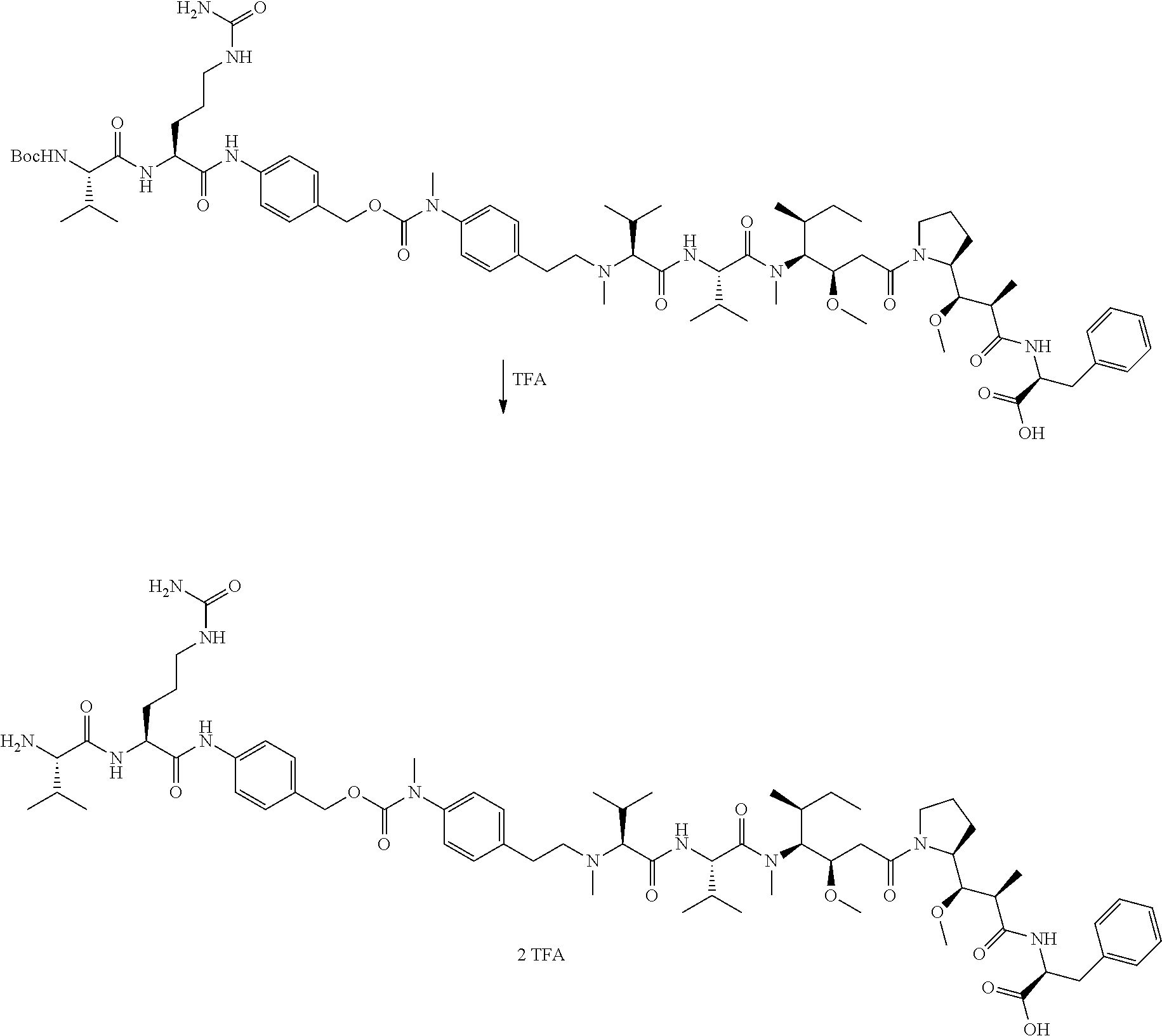
C00132

C00133

C00134
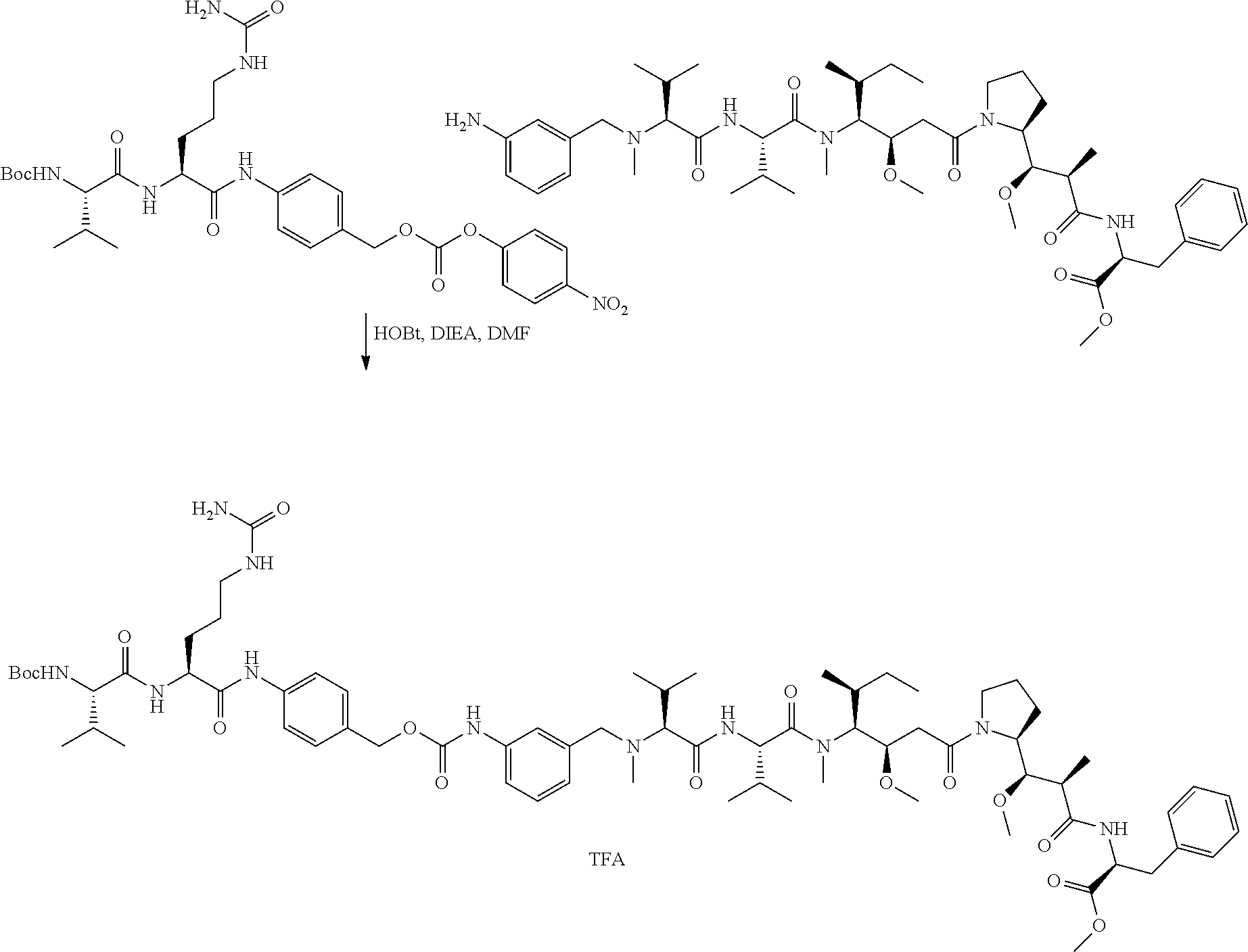
C00135
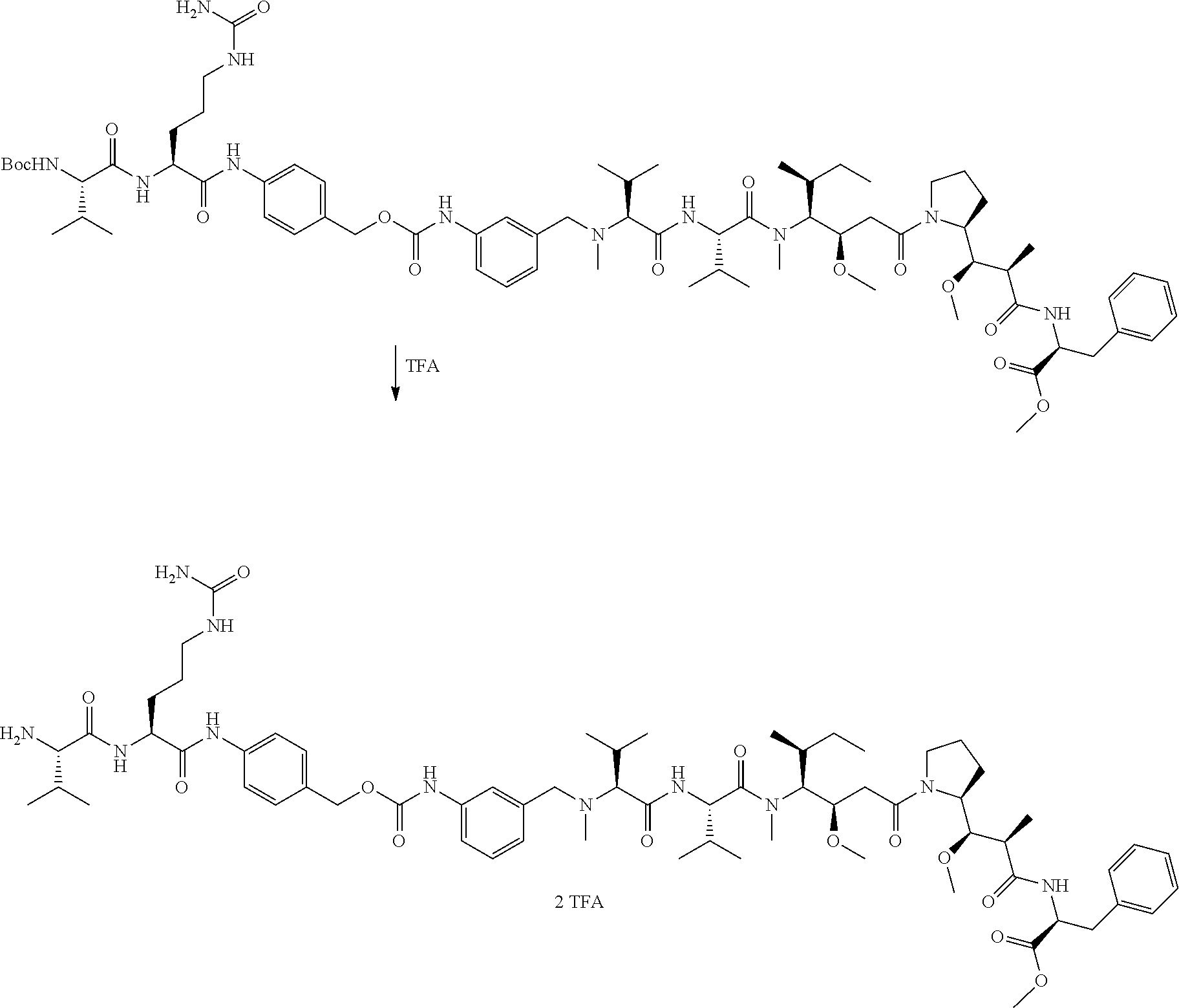
C00136
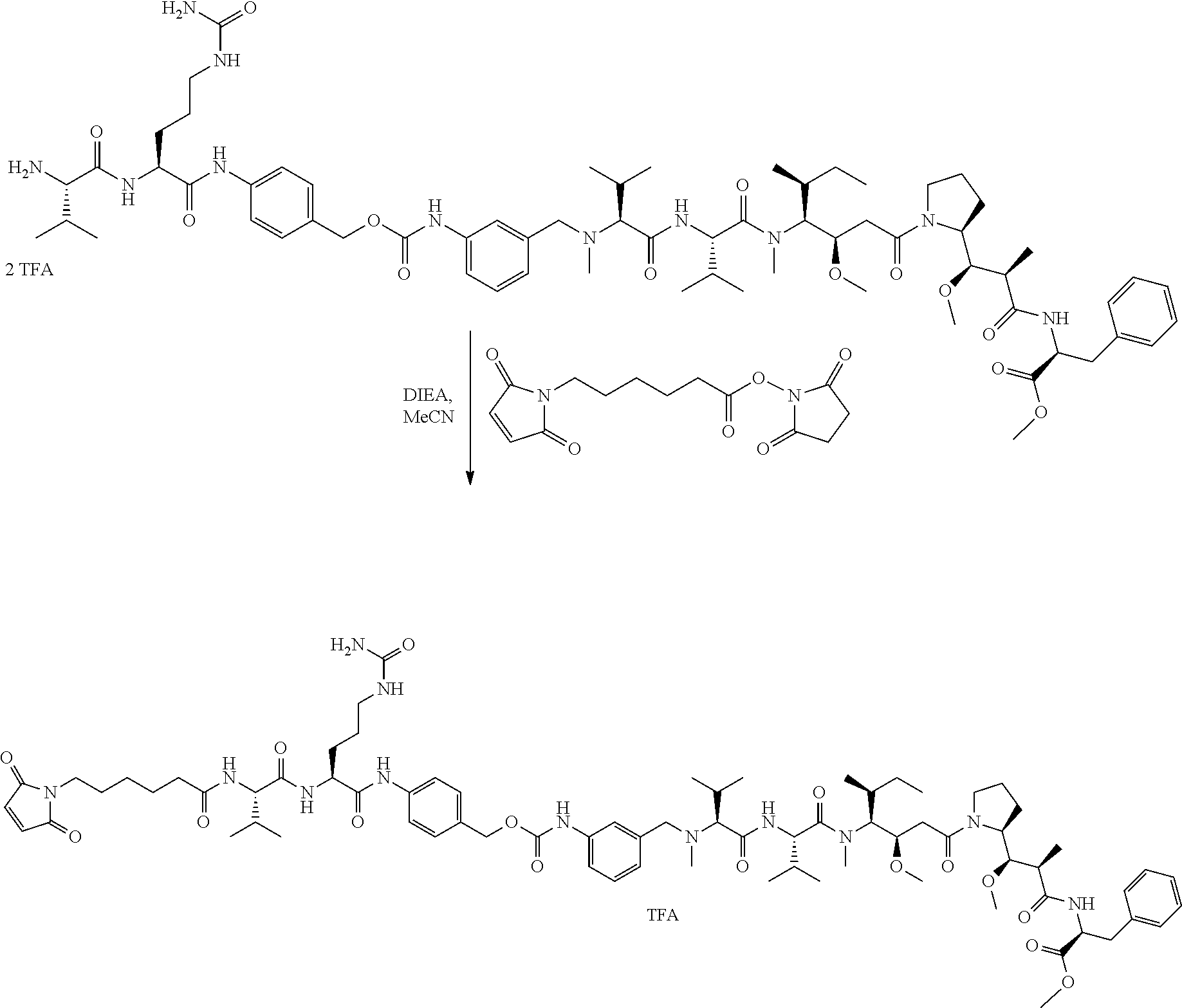
C00137

C00138

C00139

C00140

C00141

C00142

C00143

C00144
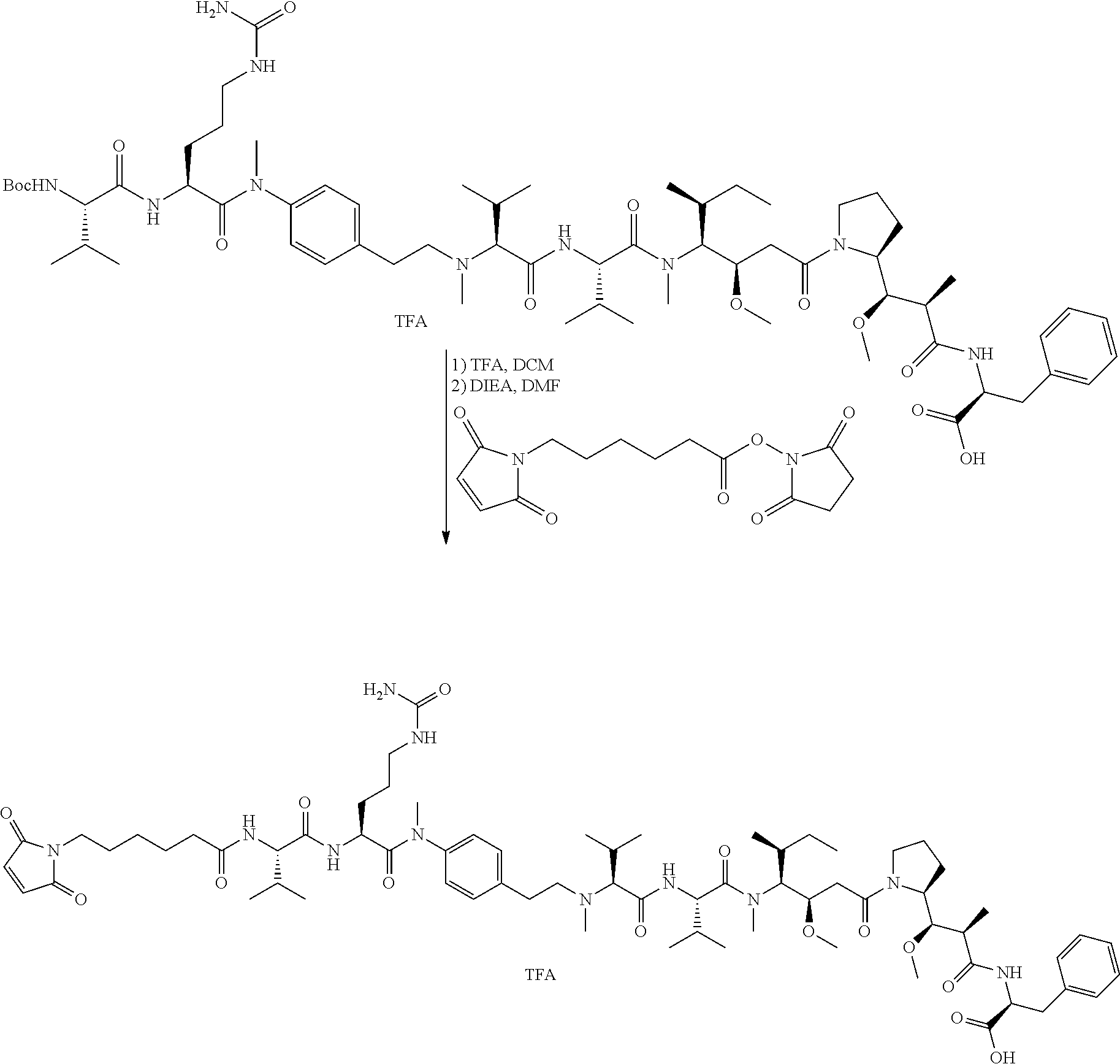
C00145

C00146

C00147
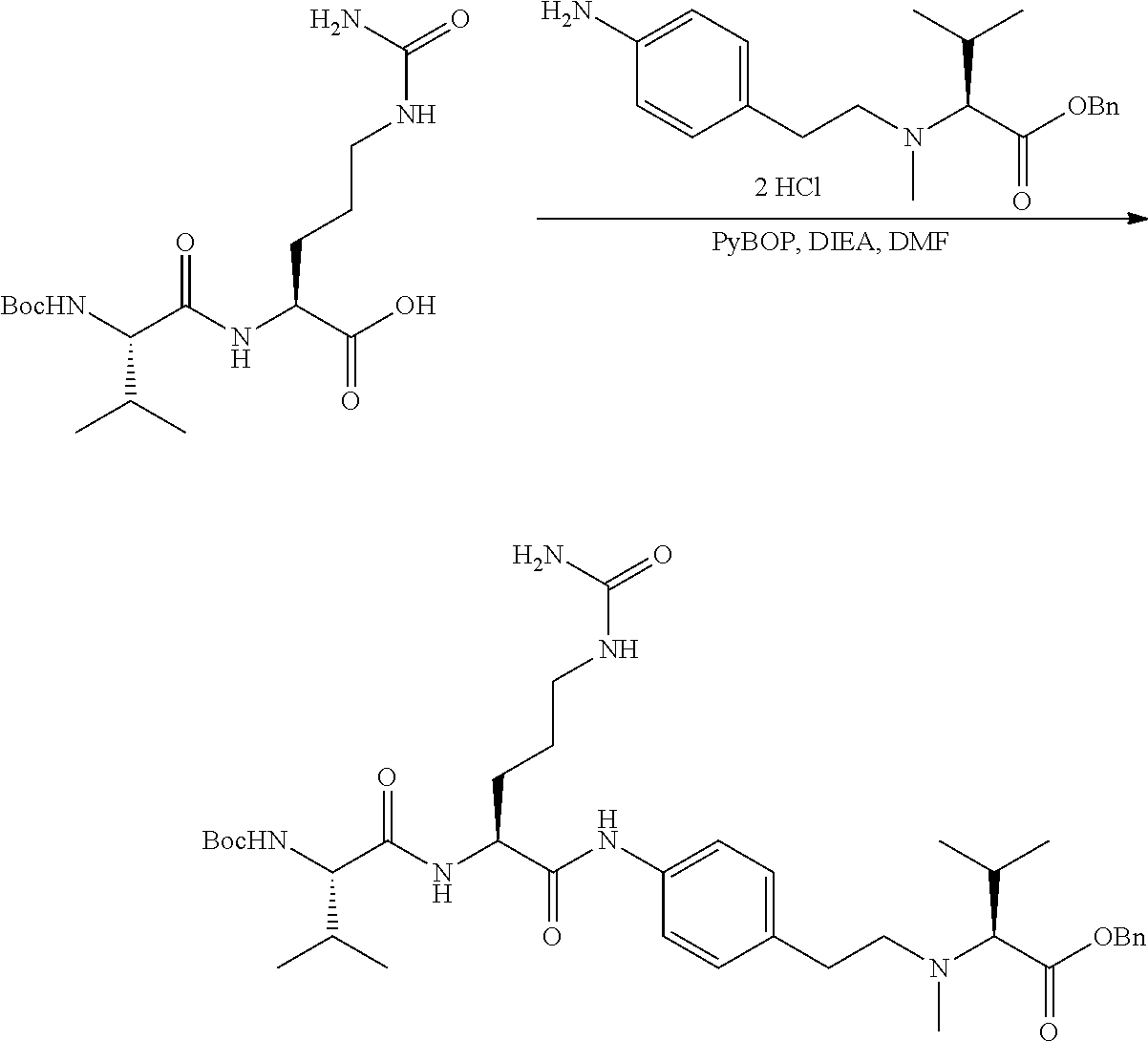
C00148

C00149
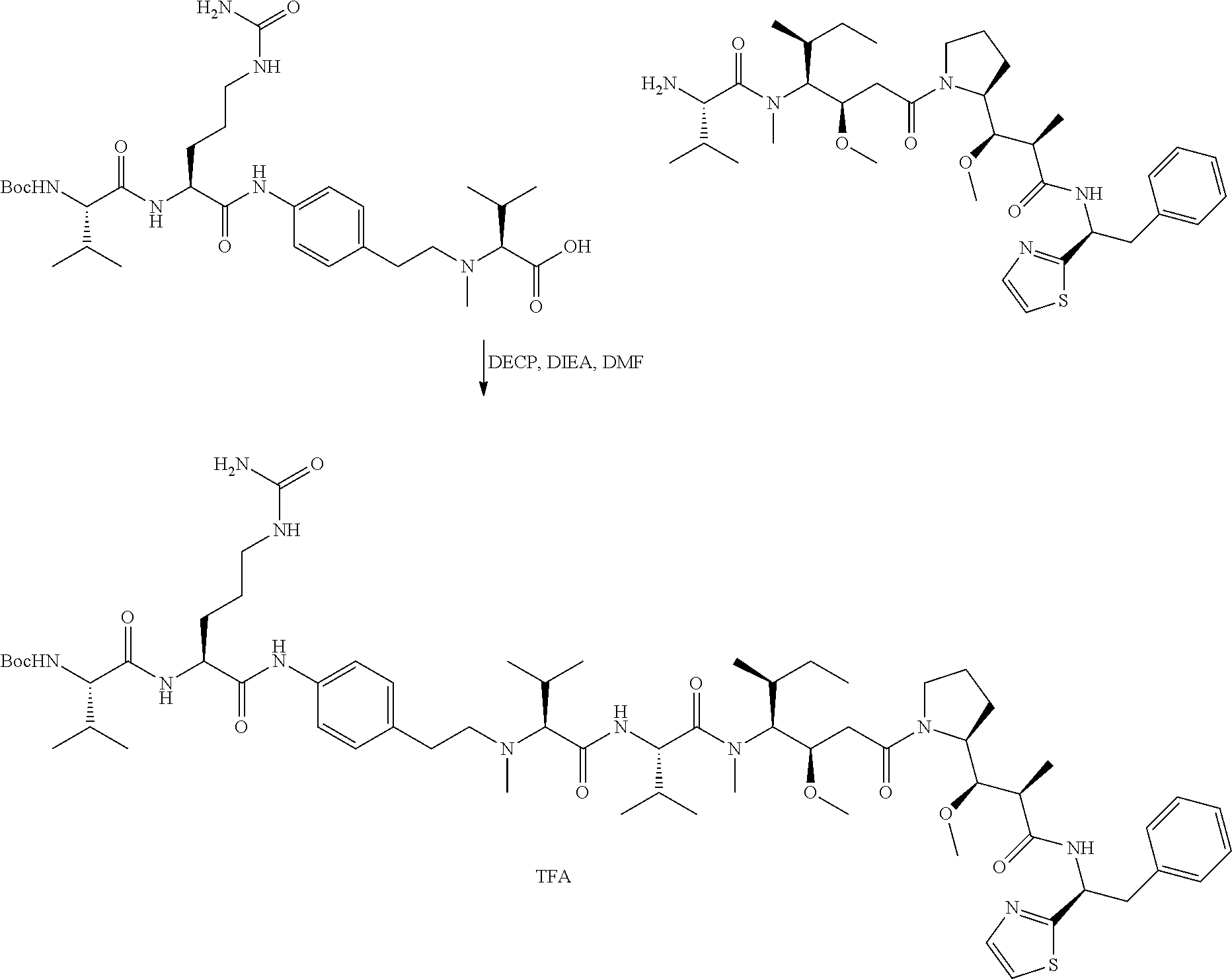
C00150

C00151
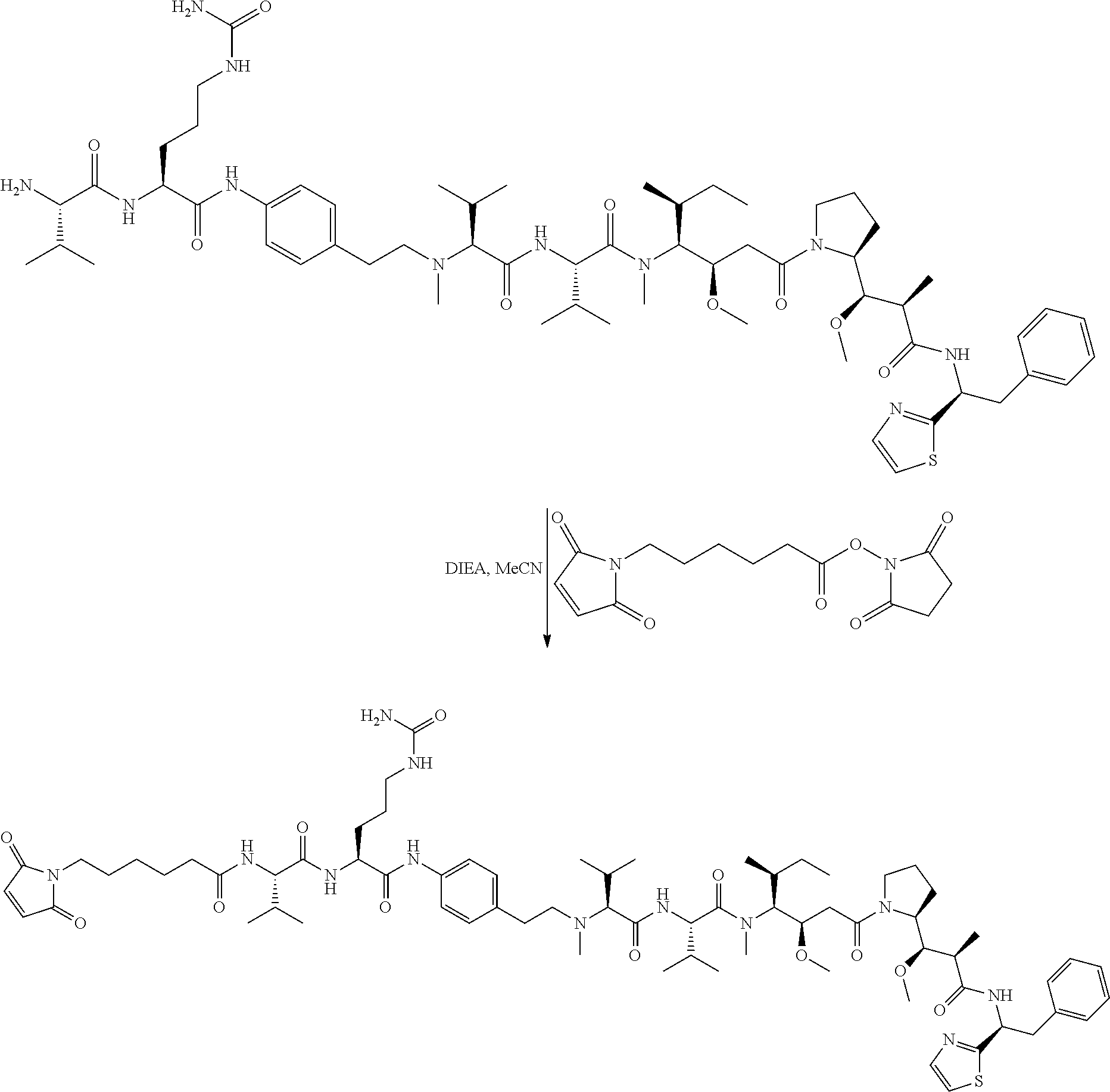
C00152

C00153
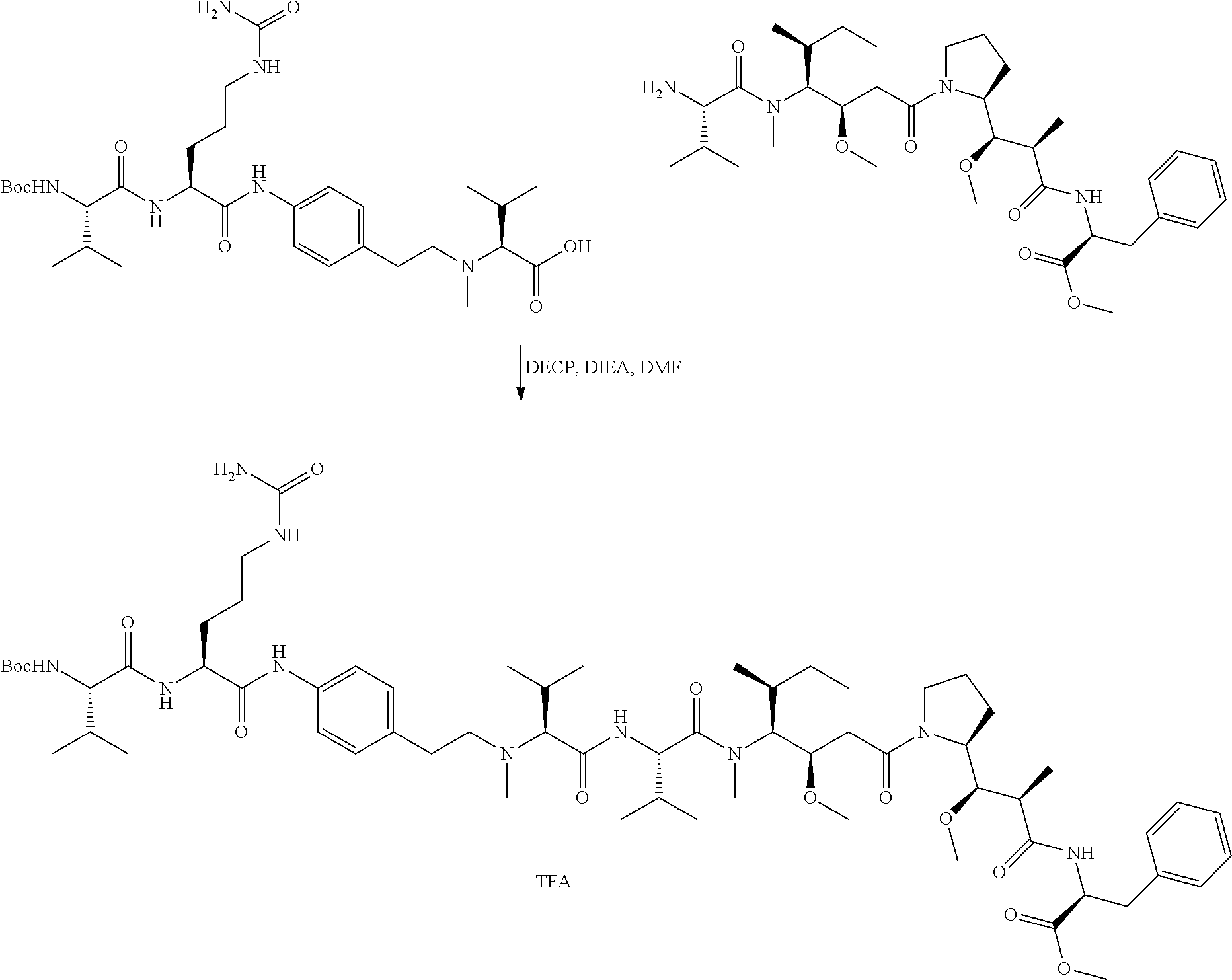
C00154

C00155

C00156

C00157

C00158

C00159
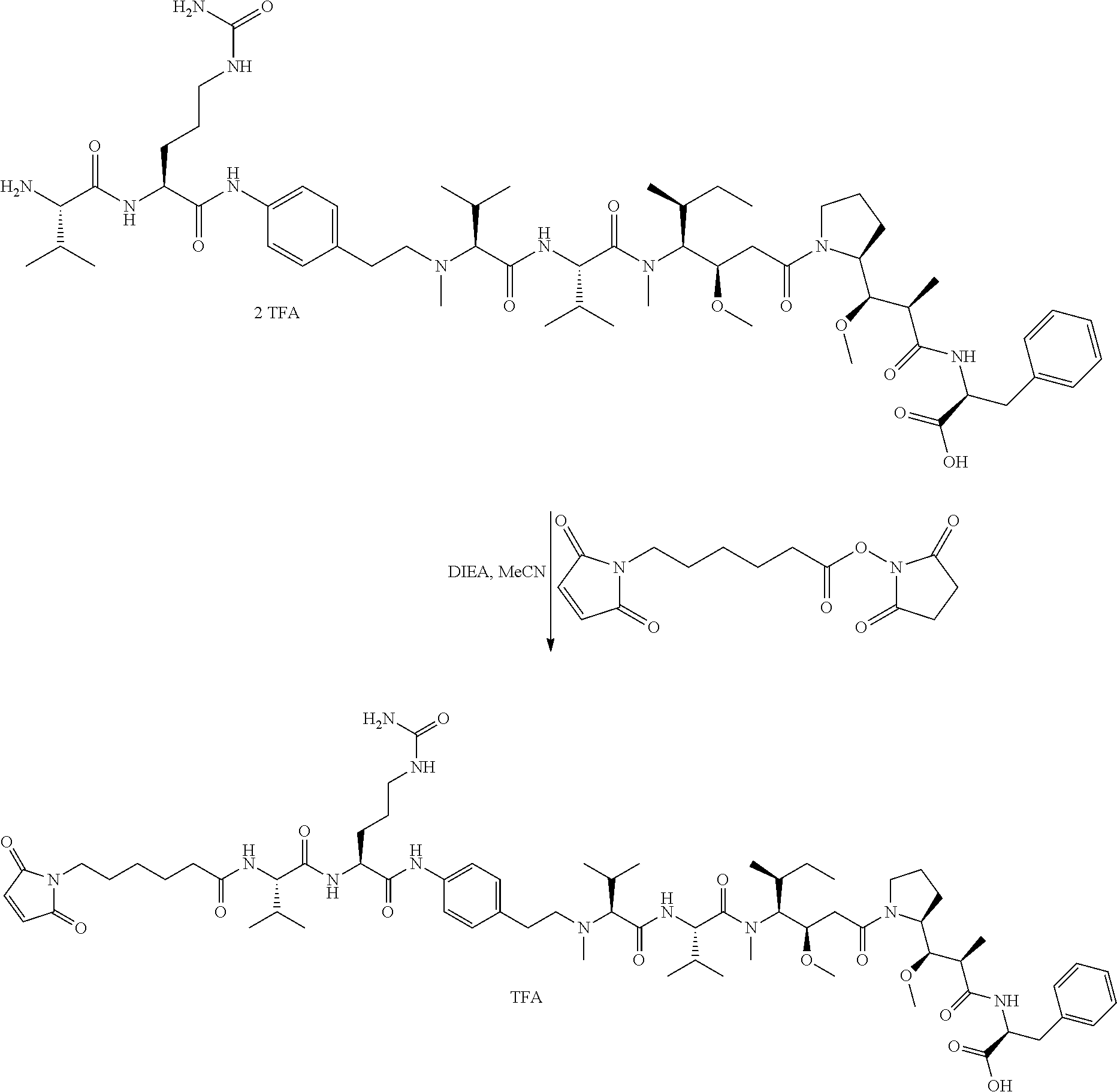
C00160

C00161
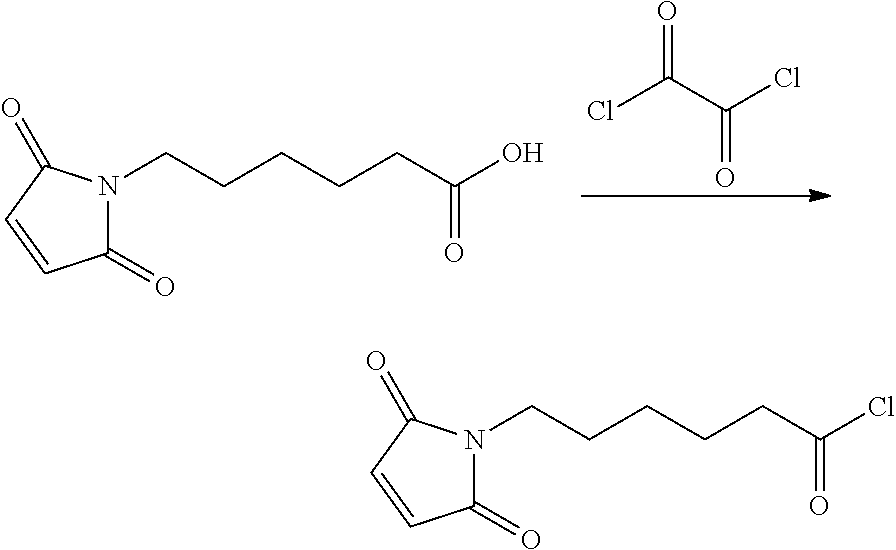
C00162
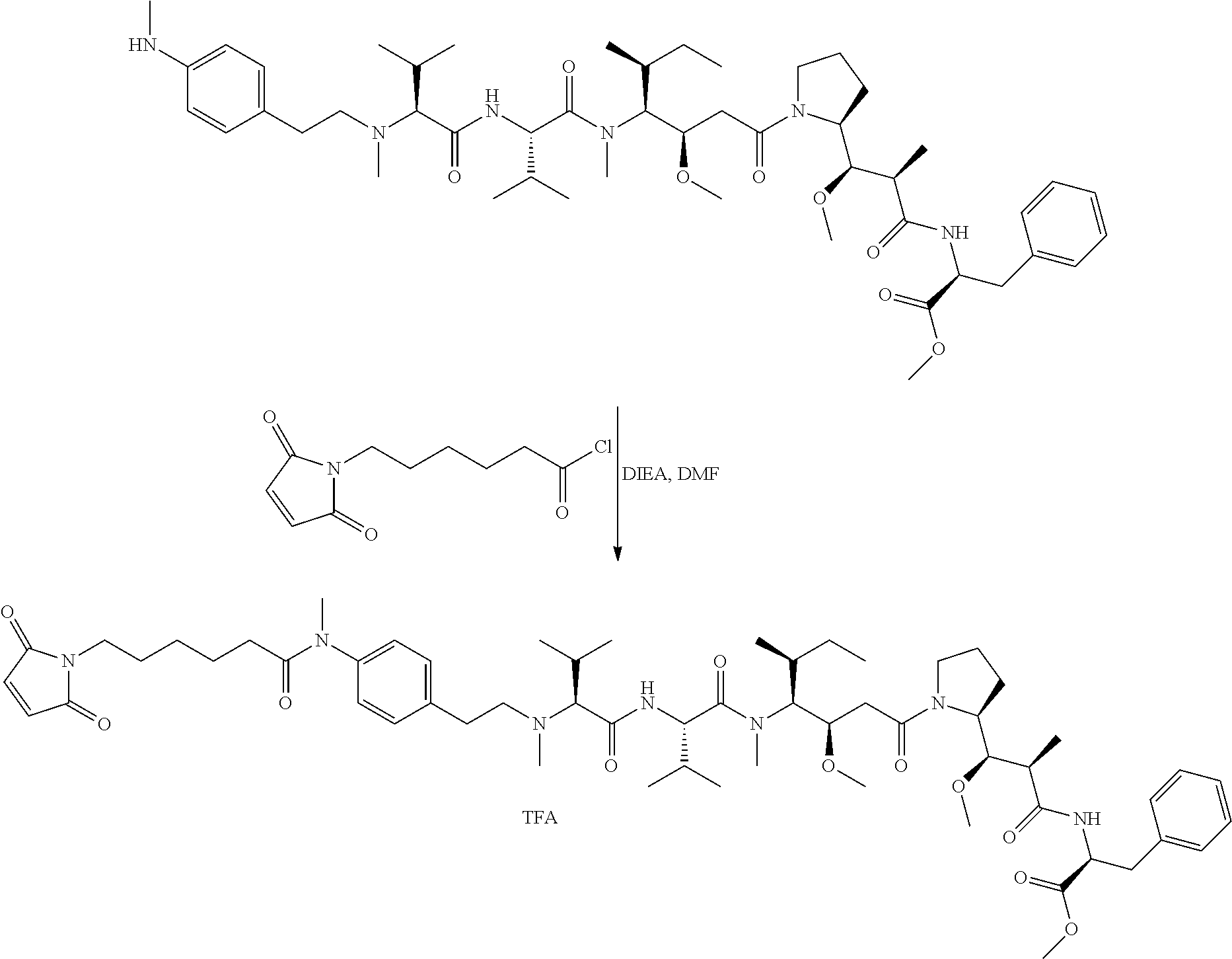
C00163

C00164

C00165

C00166
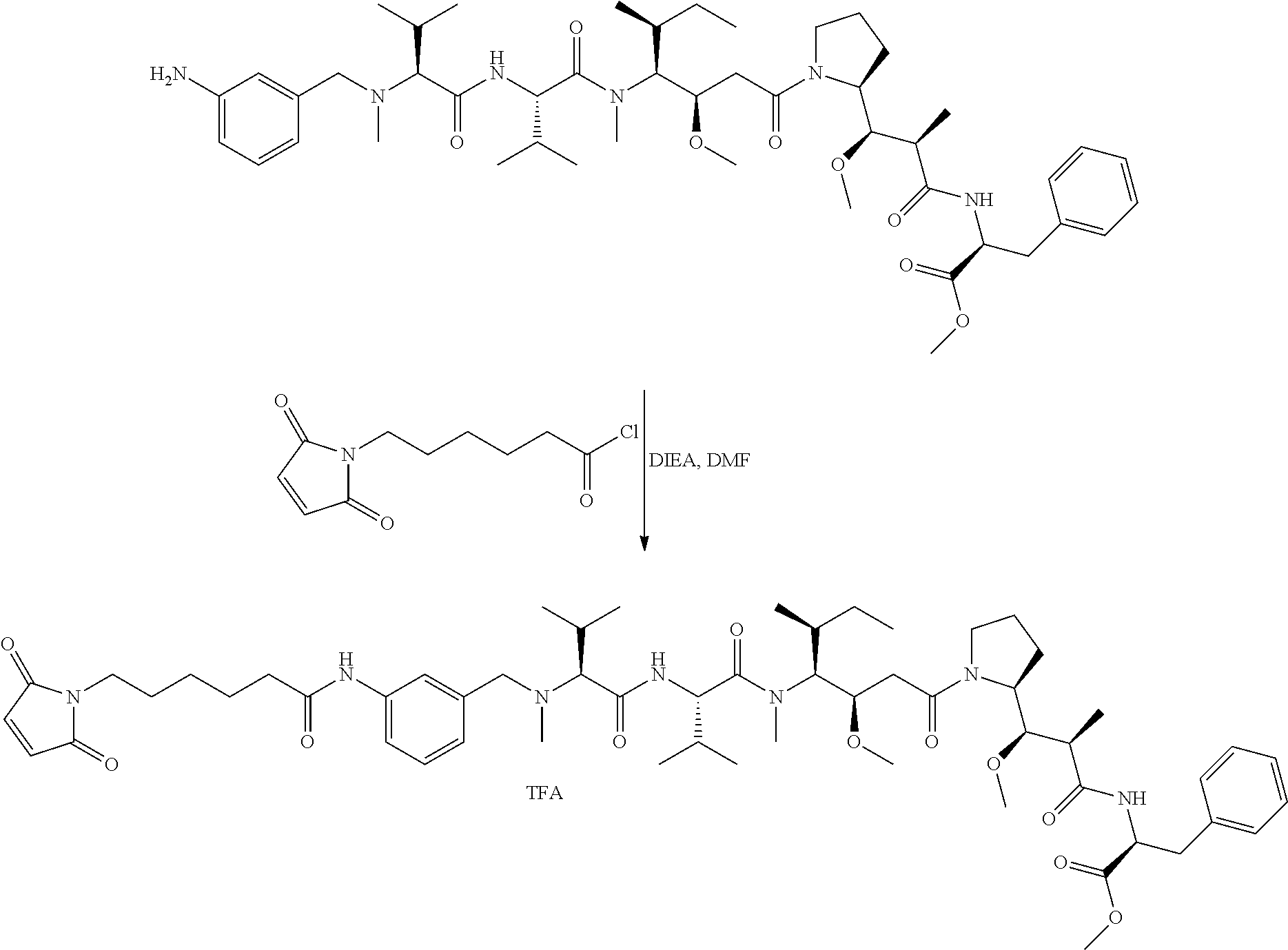
C00167

C00168
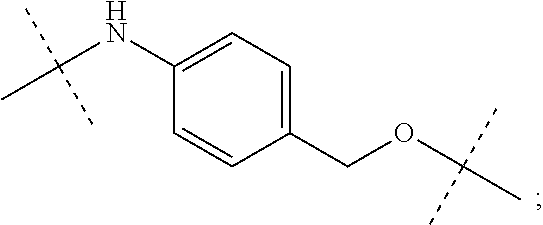
C00169
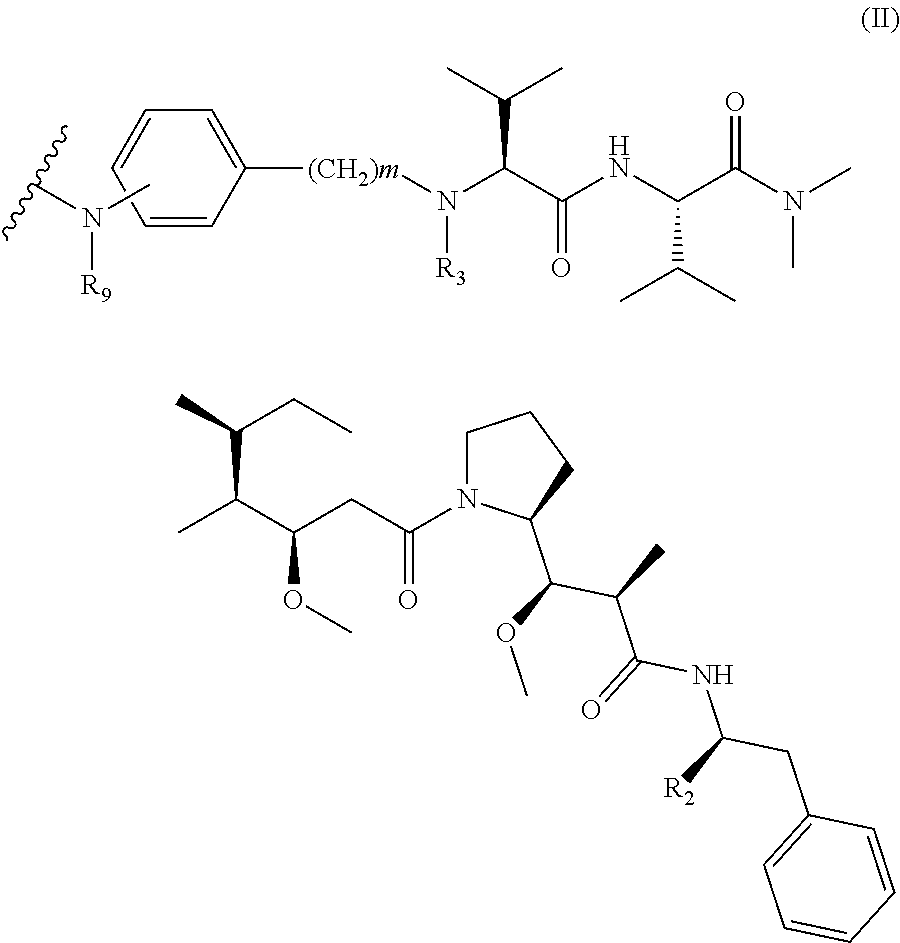
C00170

C00171
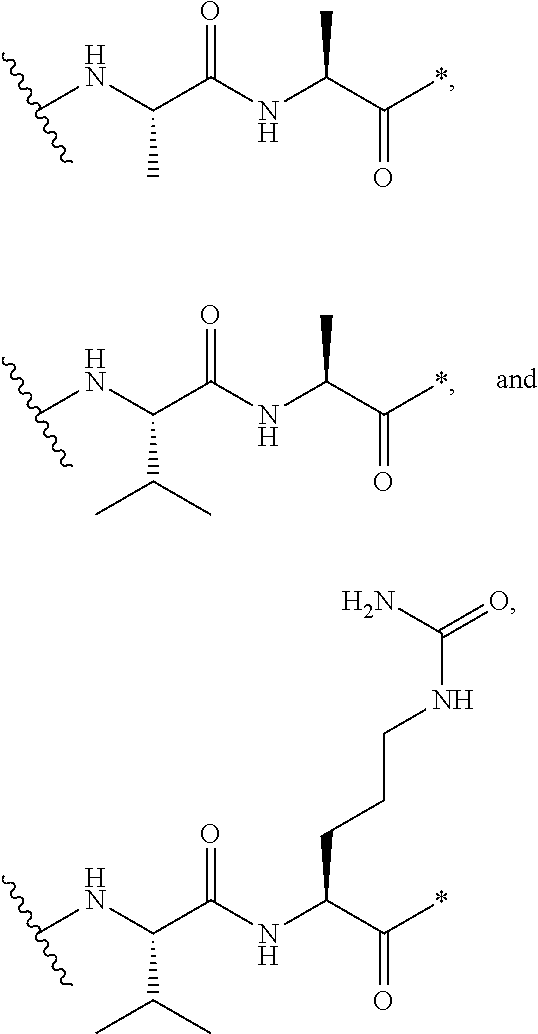
C00172

C00173

C00174
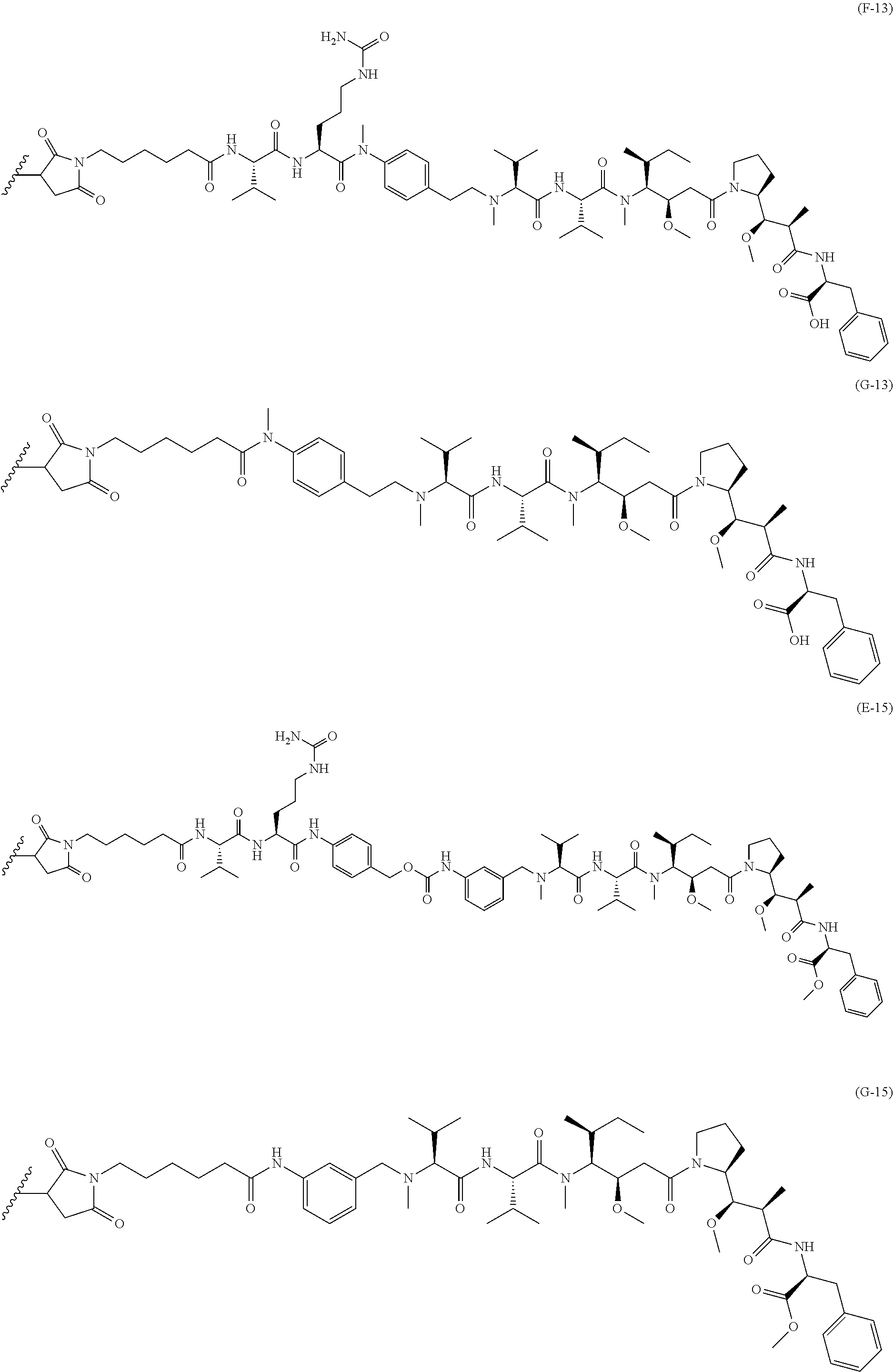
C00175

C00176

C00177

C00178
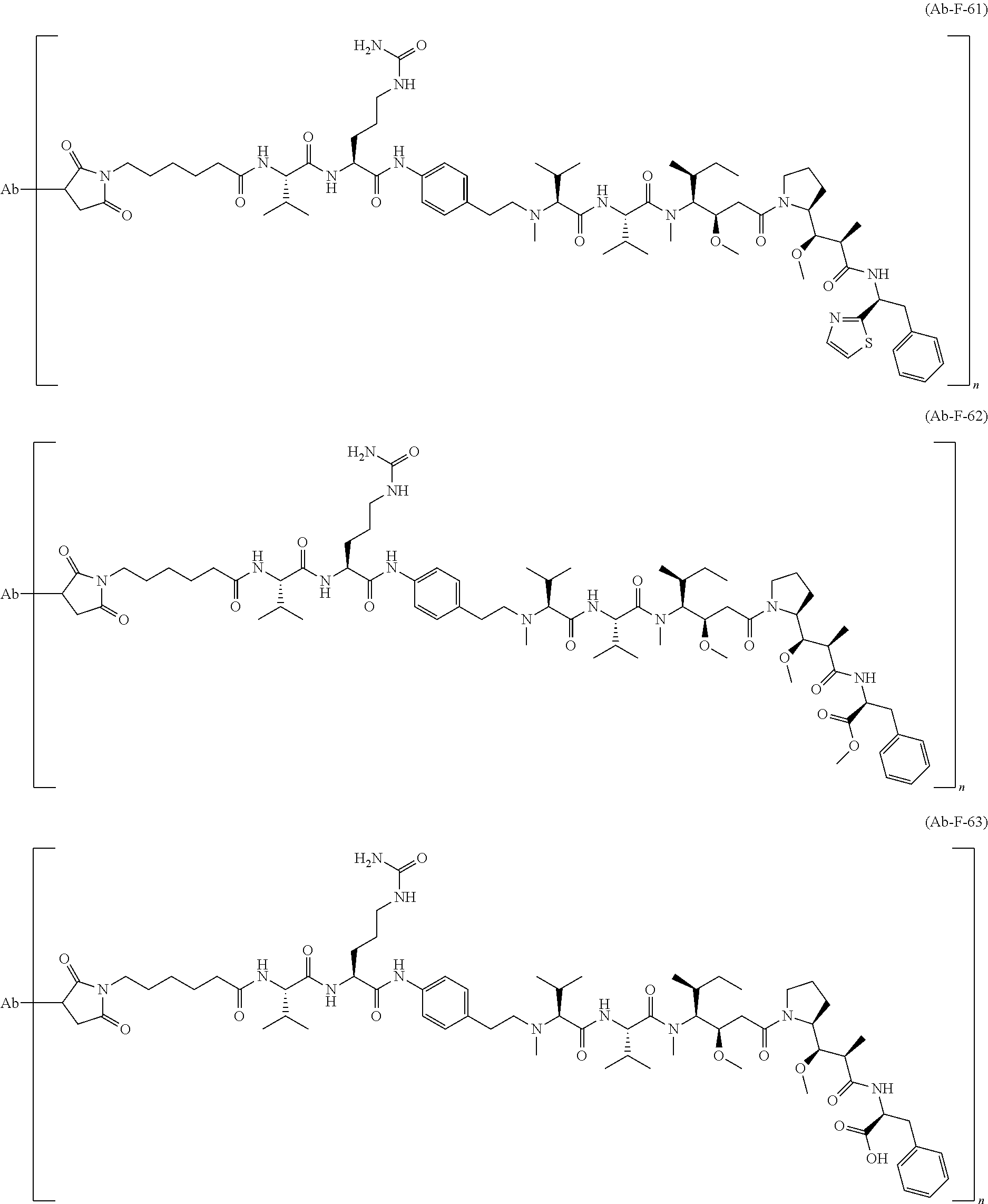
D00001

D00002

D00003
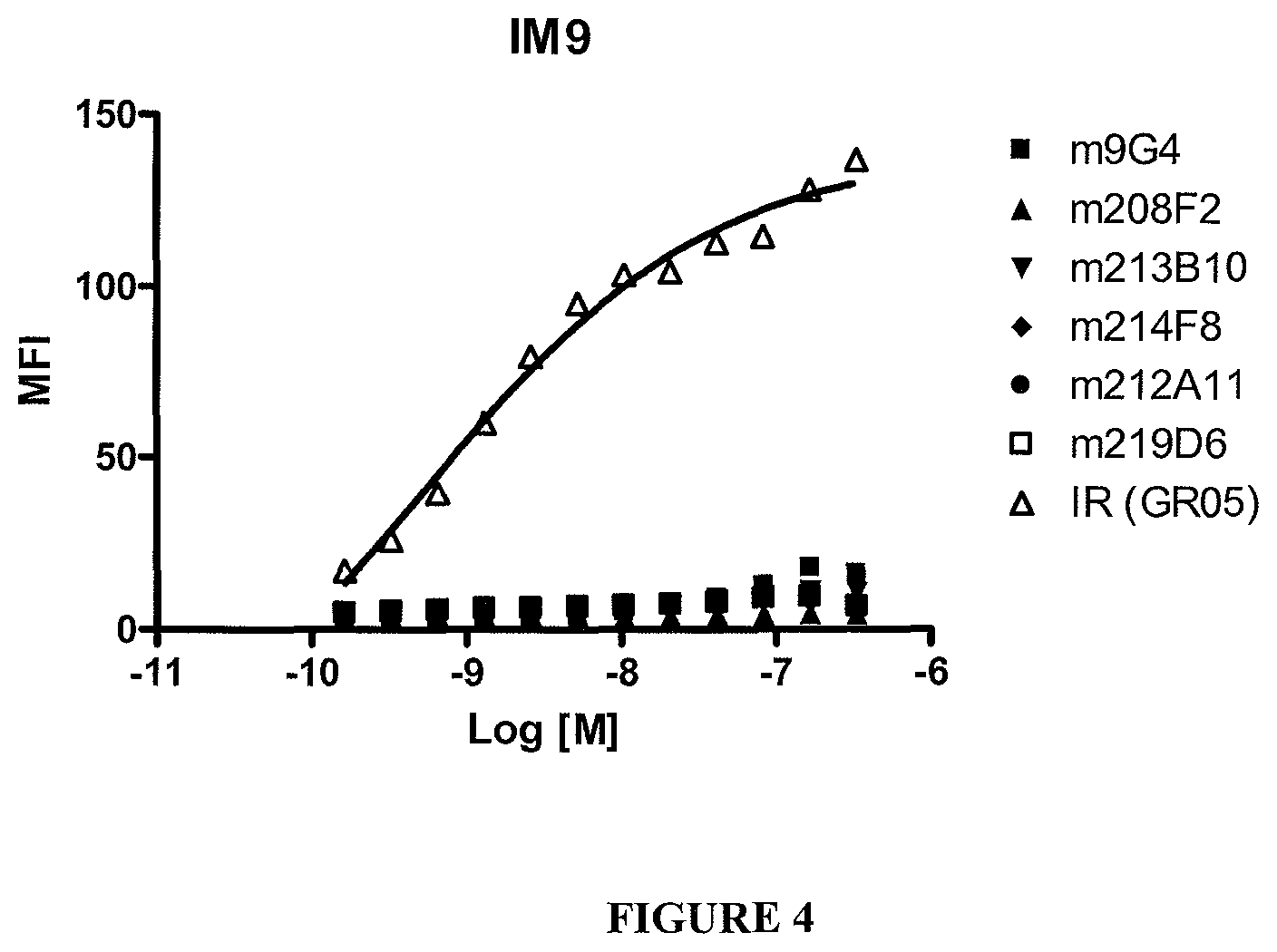
D00004

D00005

D00006
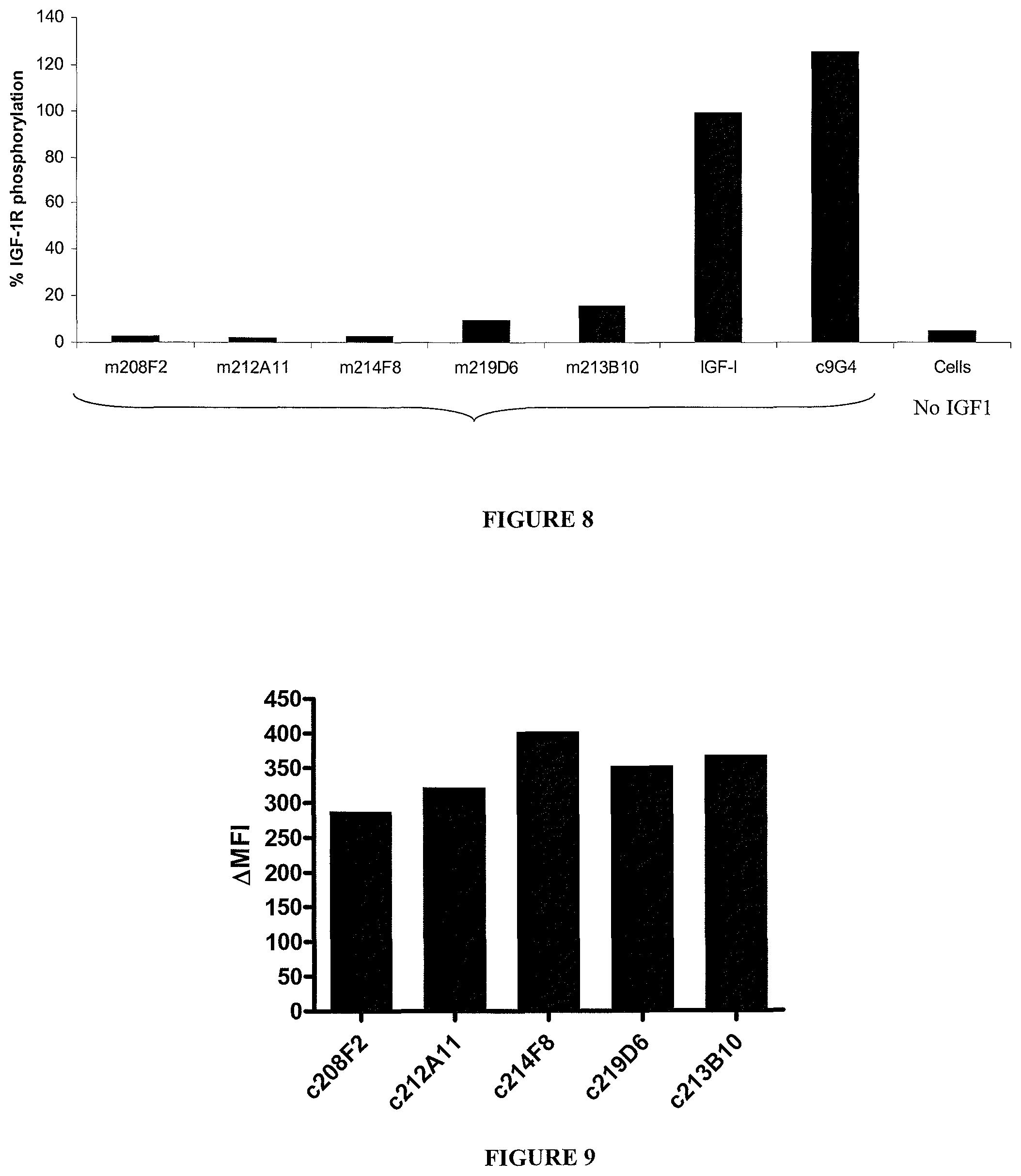
D00007

D00008

D00009
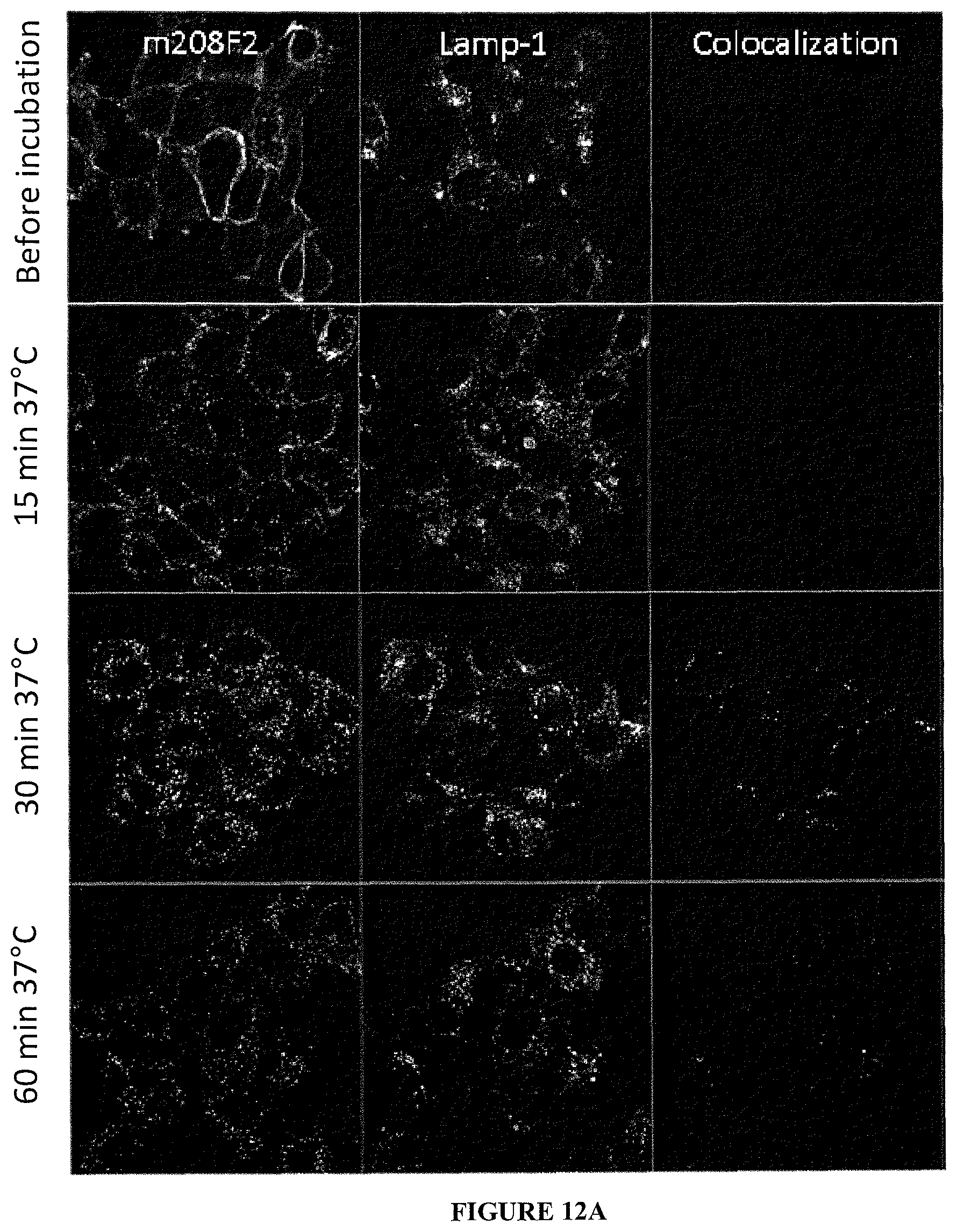
D00010

D00011
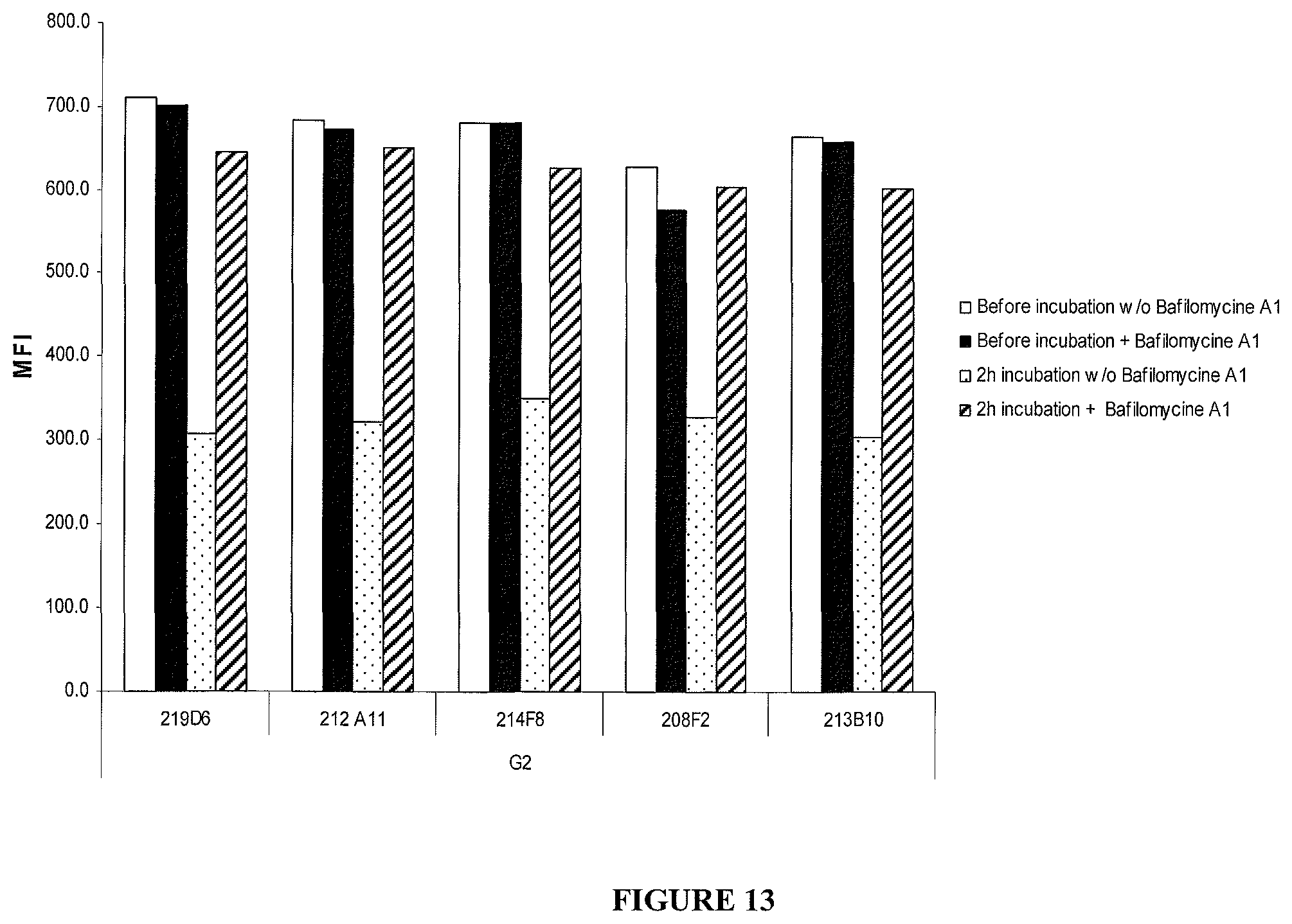
D00012

D00013

D00014
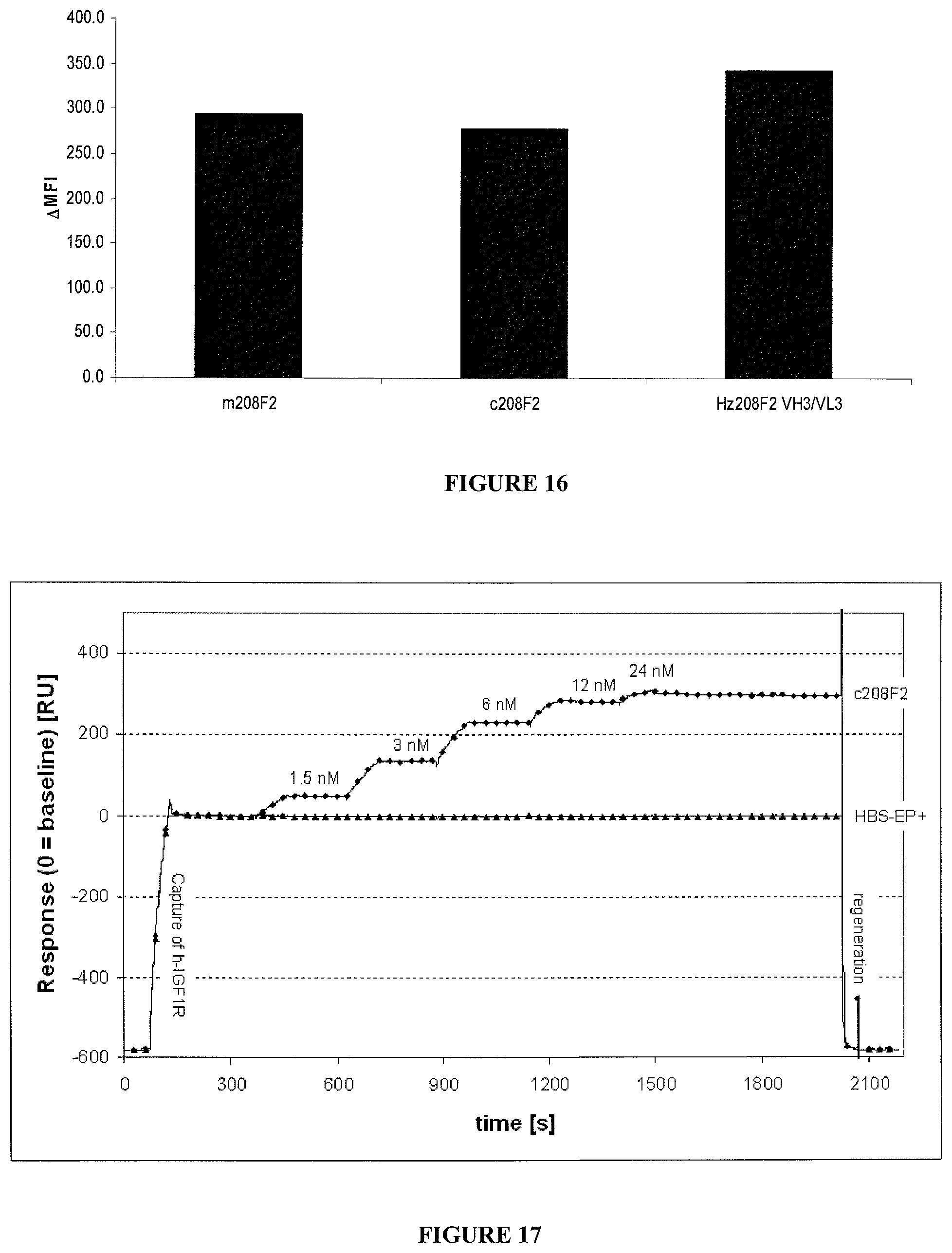
D00015
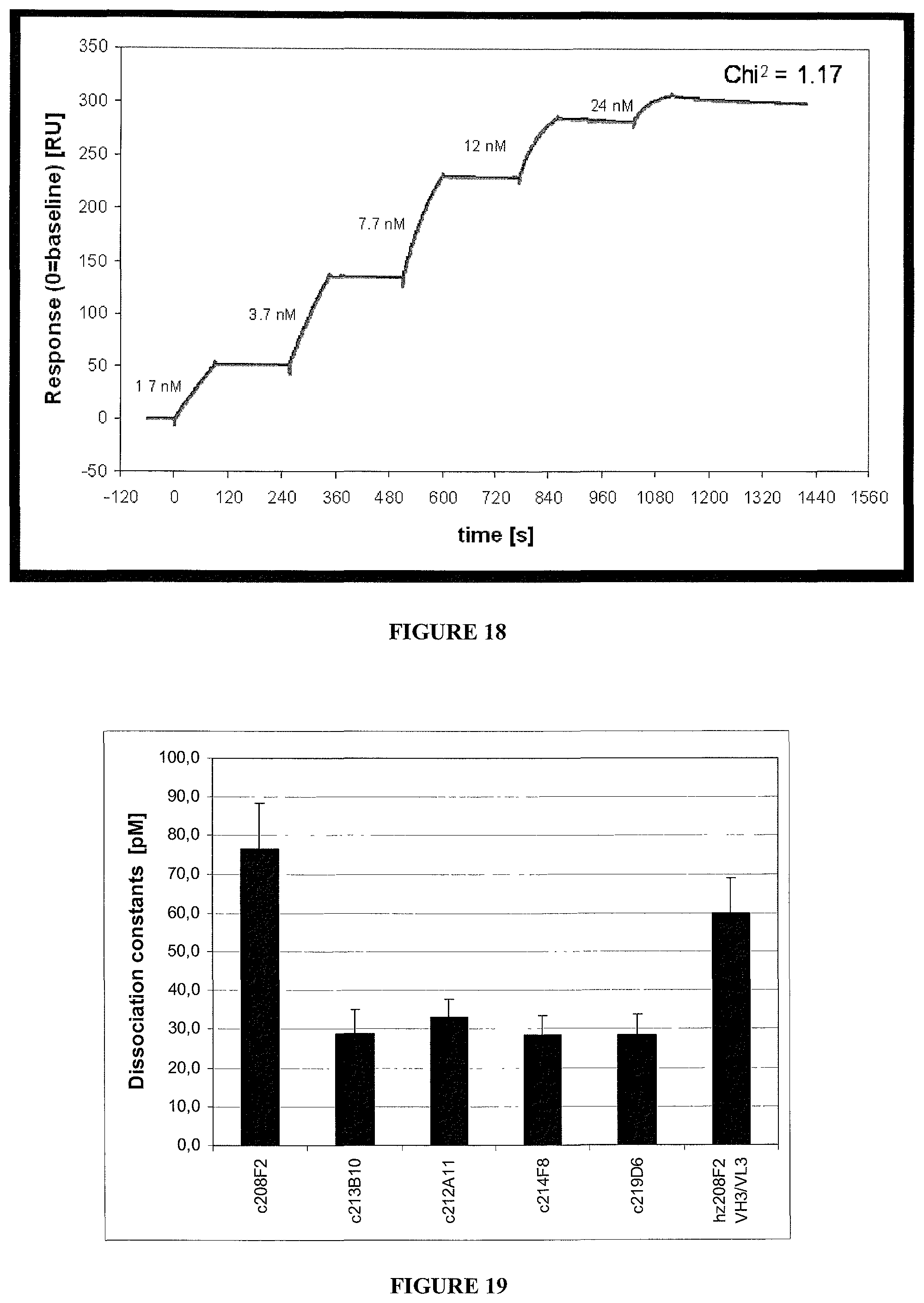
D00016

D00017

D00018
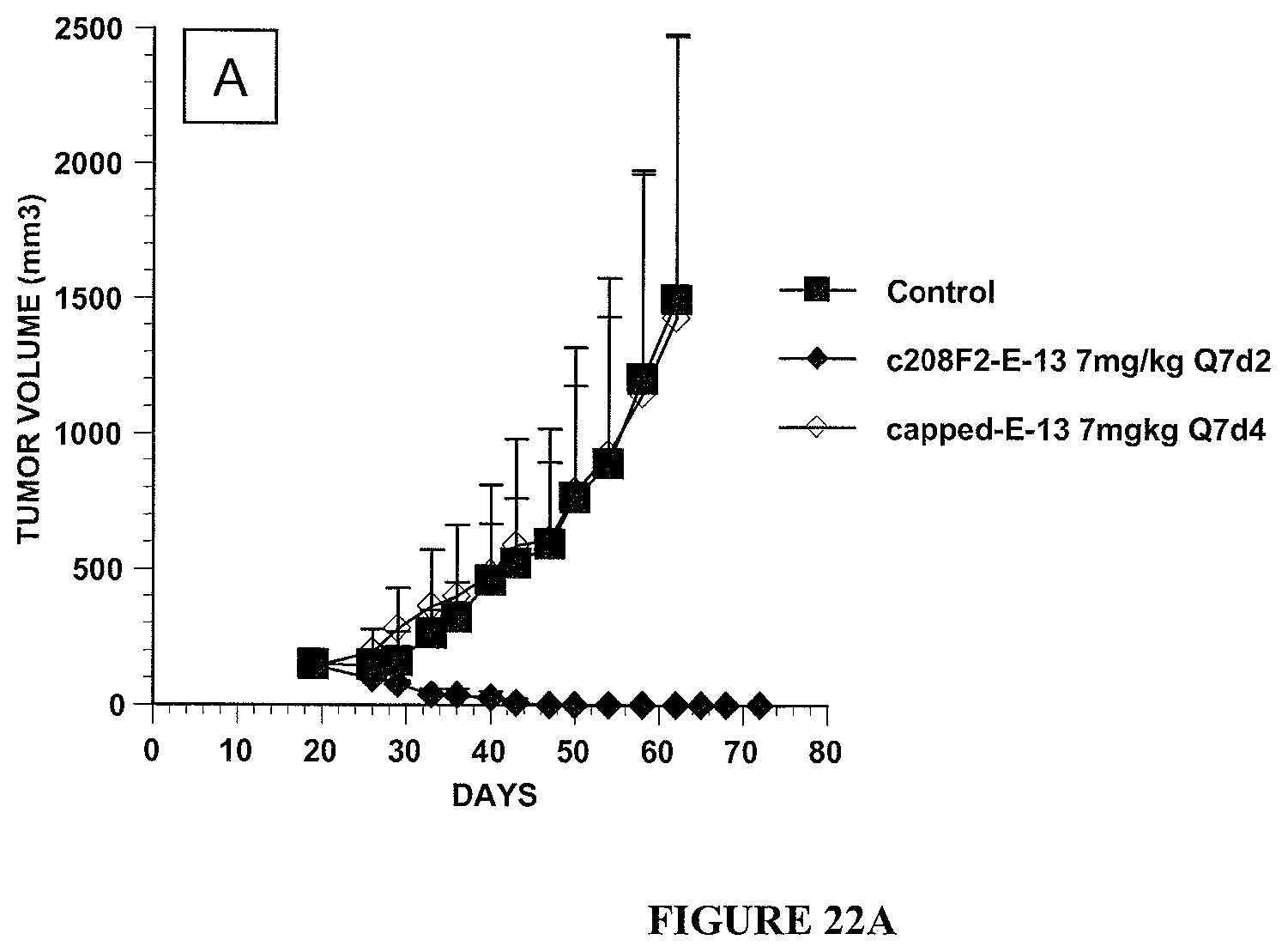
D00019

D00020
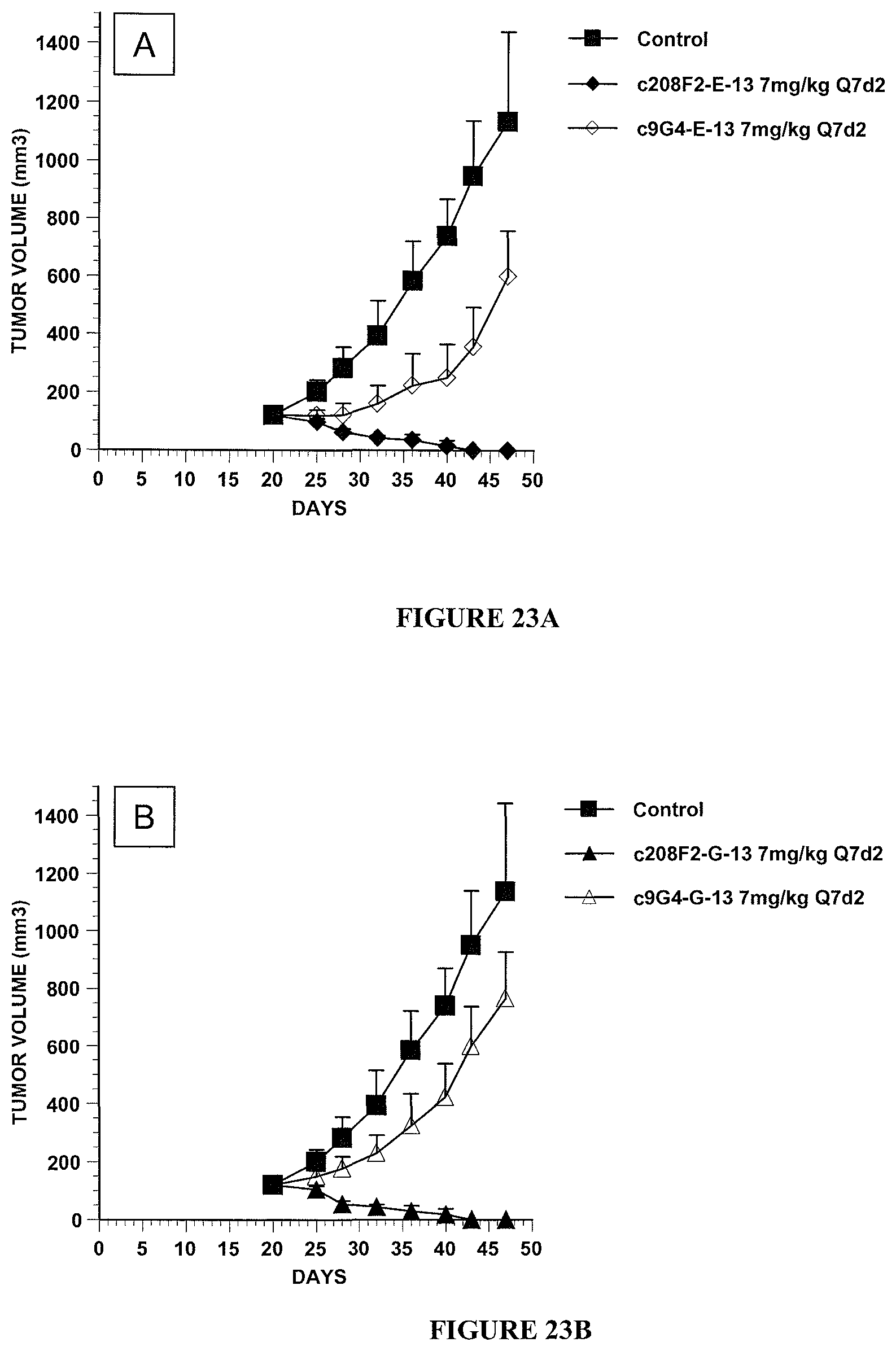
D00021
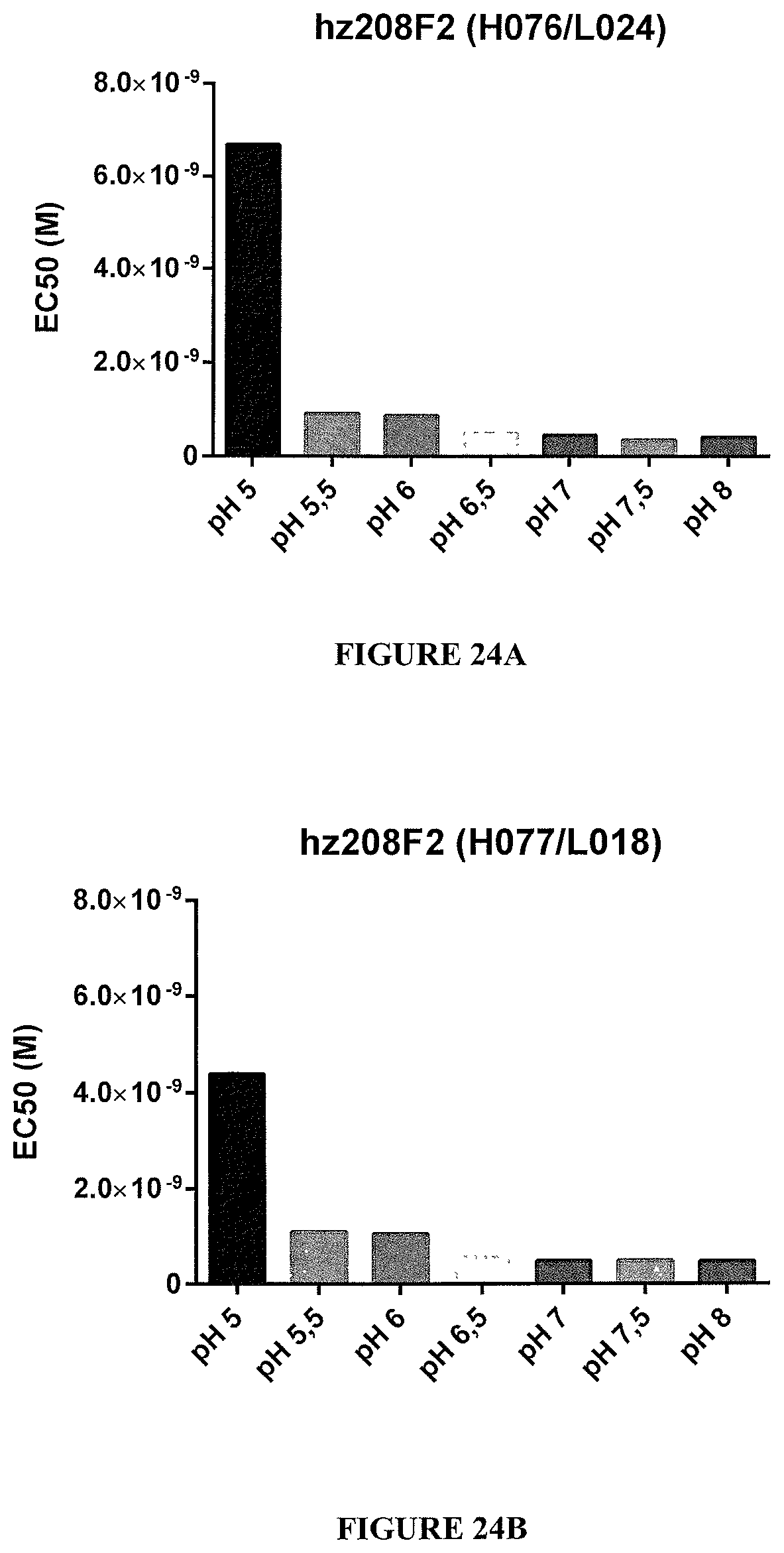
D00022
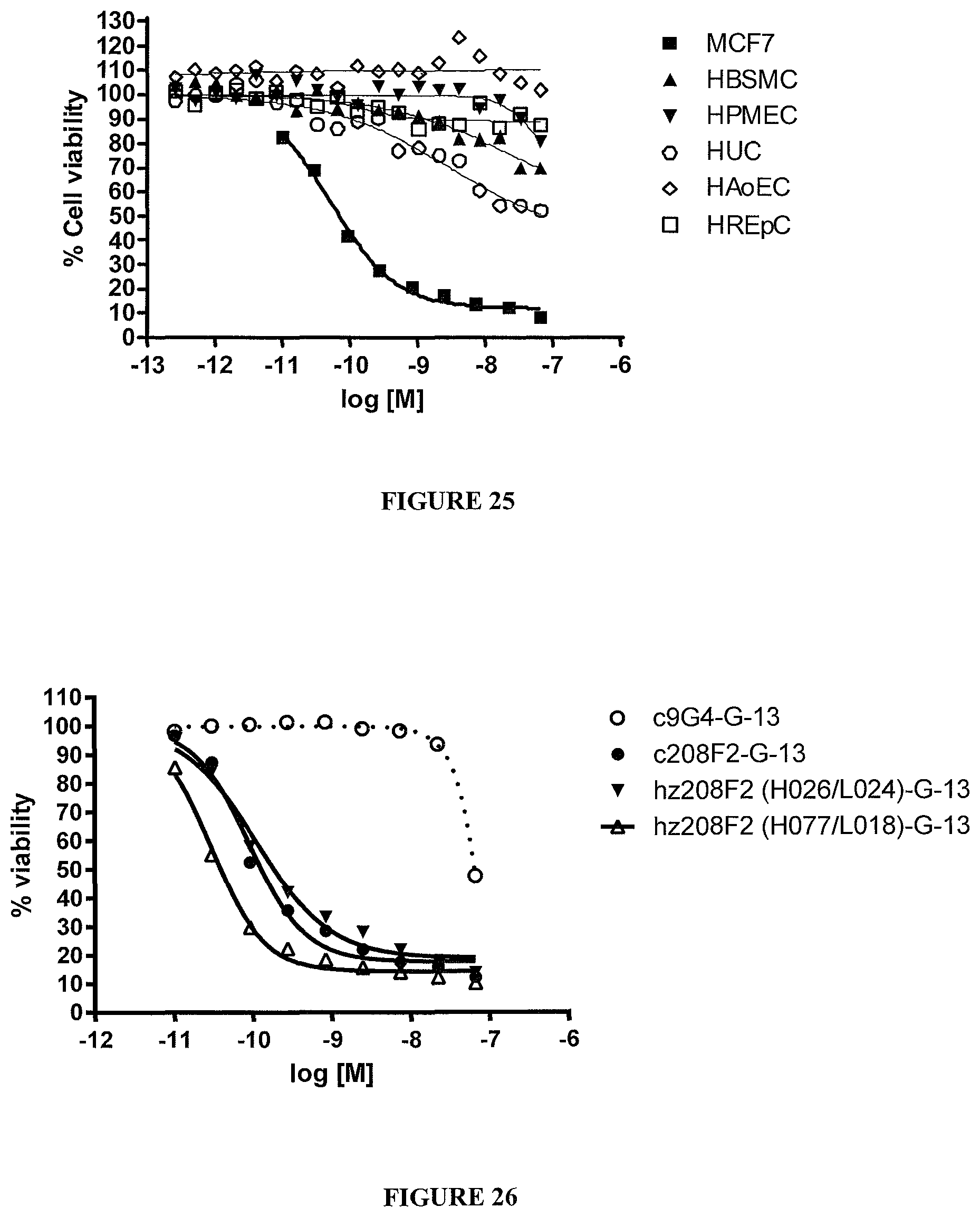
D00023
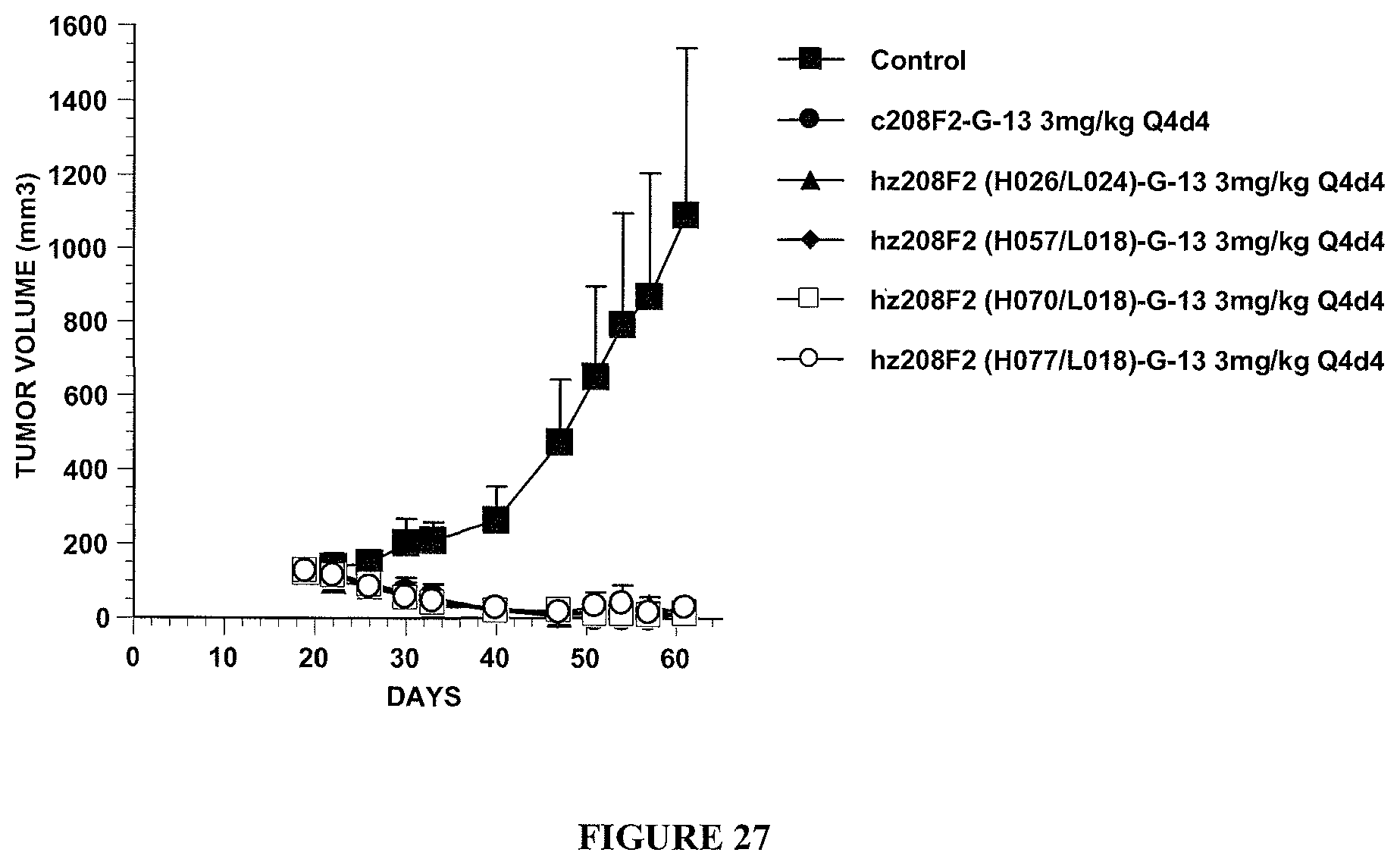
D00024
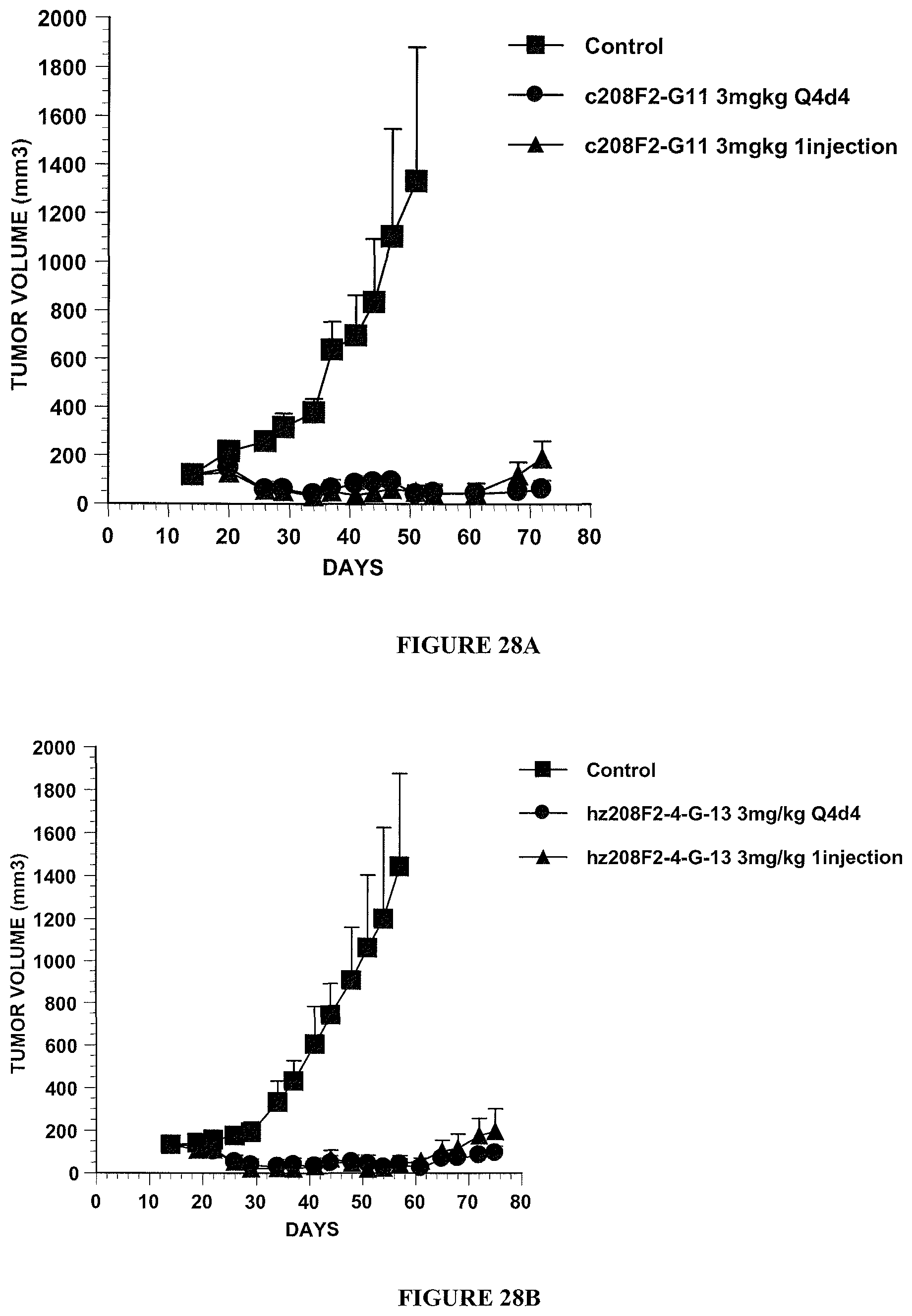
D00025

S00001
XML
uspto.report is an independent third-party trademark research tool that is not affiliated, endorsed, or sponsored by the United States Patent and Trademark Office (USPTO) or any other governmental organization. The information provided by uspto.report is based on publicly available data at the time of writing and is intended for informational purposes only.
While we strive to provide accurate and up-to-date information, we do not guarantee the accuracy, completeness, reliability, or suitability of the information displayed on this site. The use of this site is at your own risk. Any reliance you place on such information is therefore strictly at your own risk.
All official trademark data, including owner information, should be verified by visiting the official USPTO website at www.uspto.gov. This site is not intended to replace professional legal advice and should not be used as a substitute for consulting with a legal professional who is knowledgeable about trademark law.